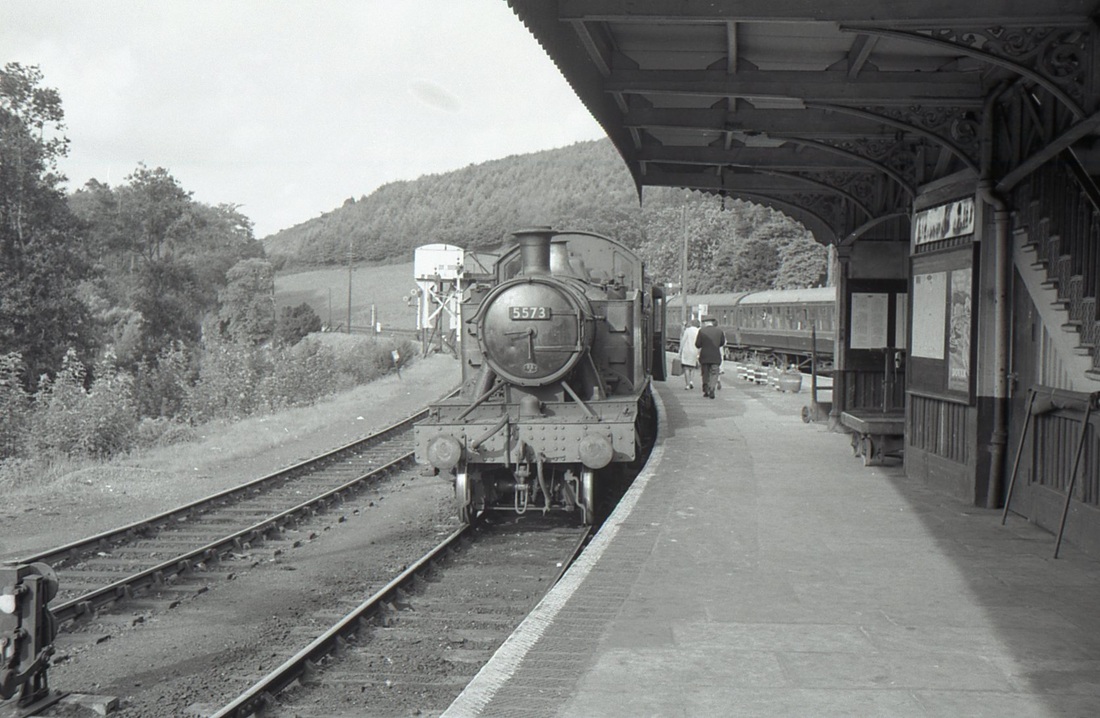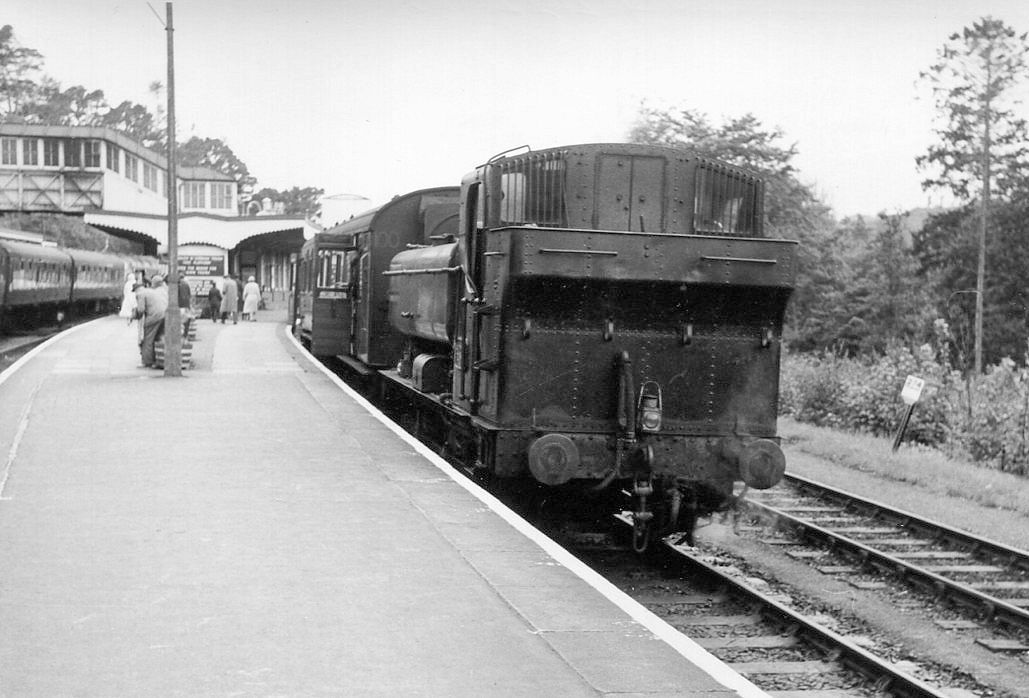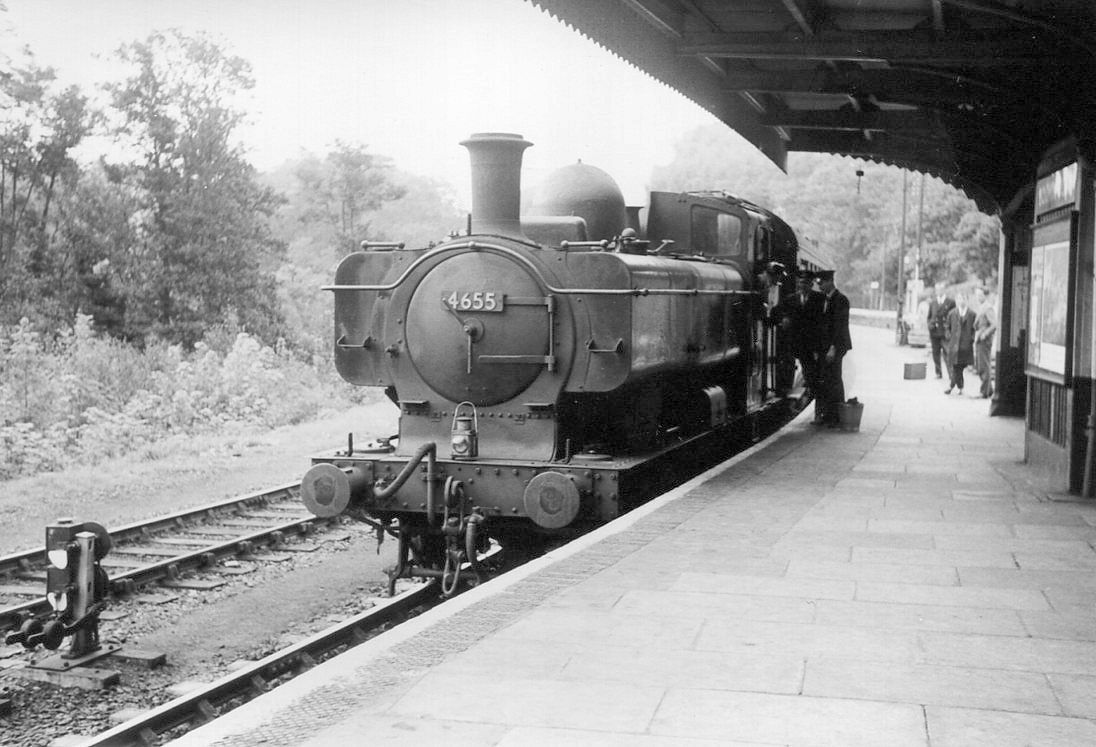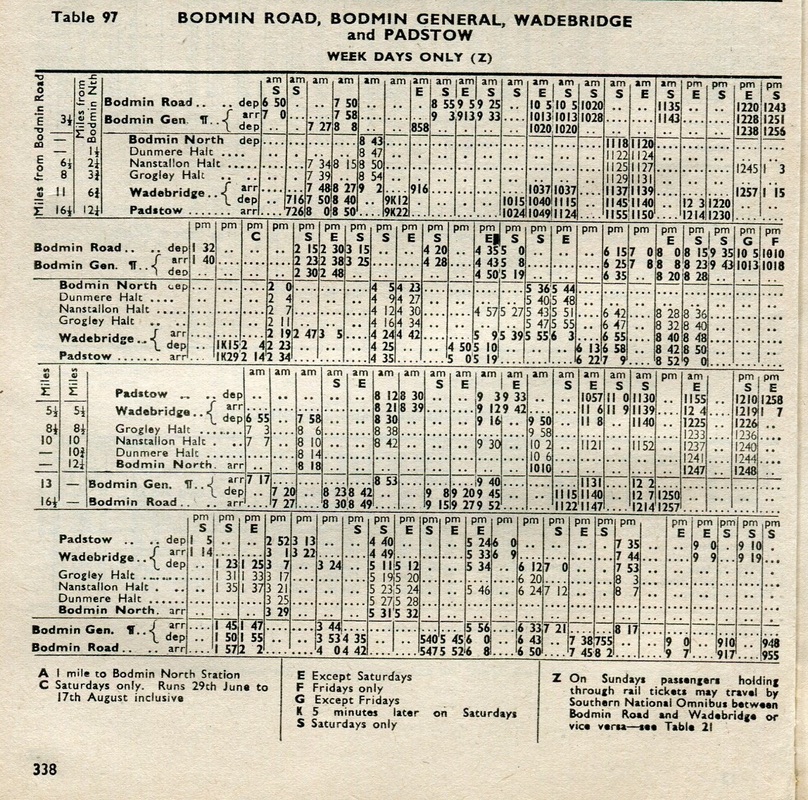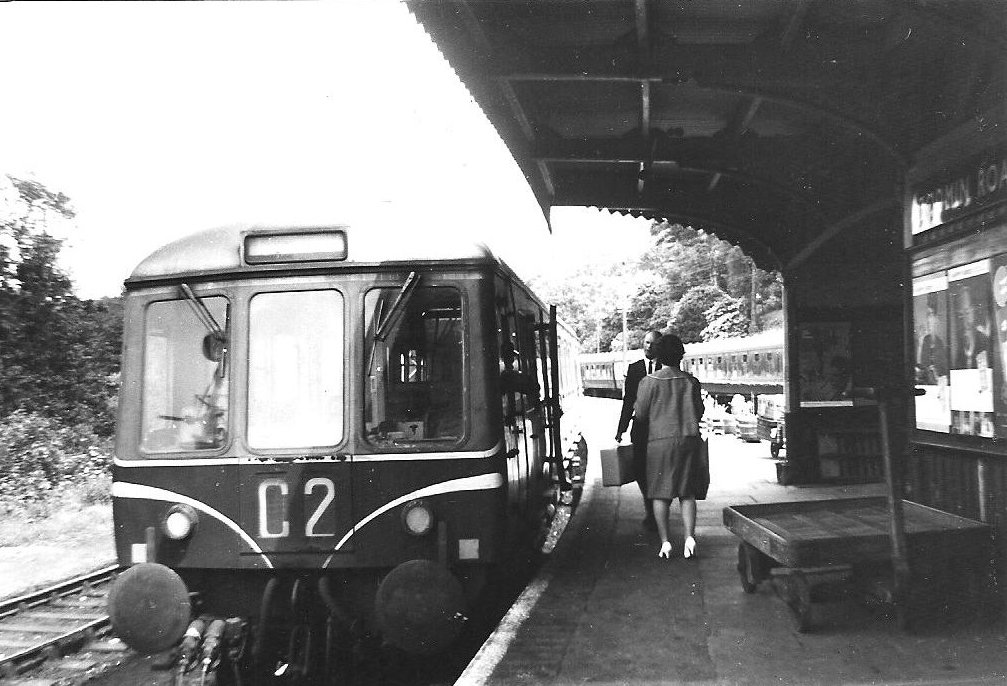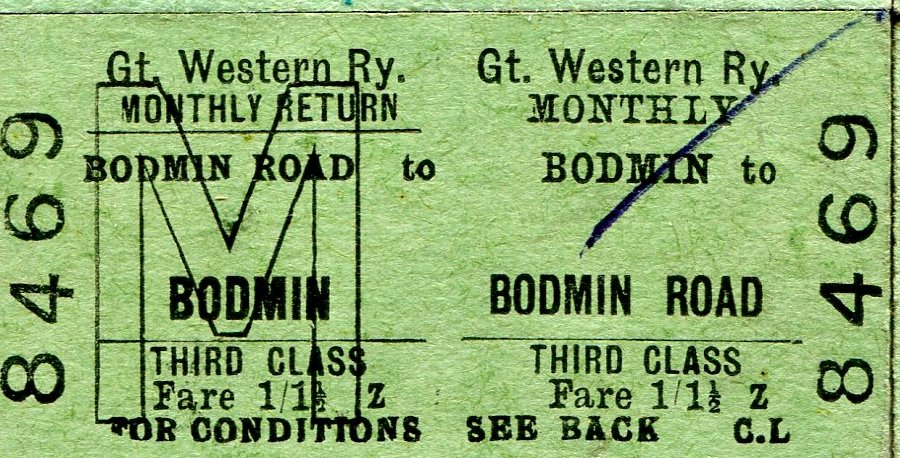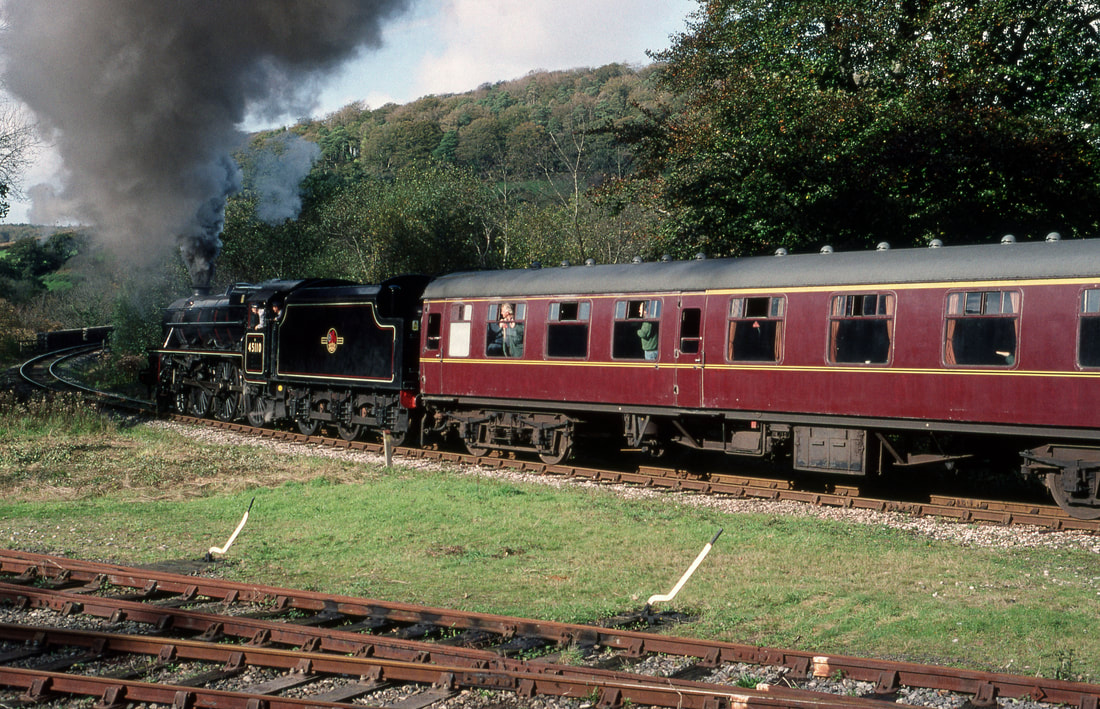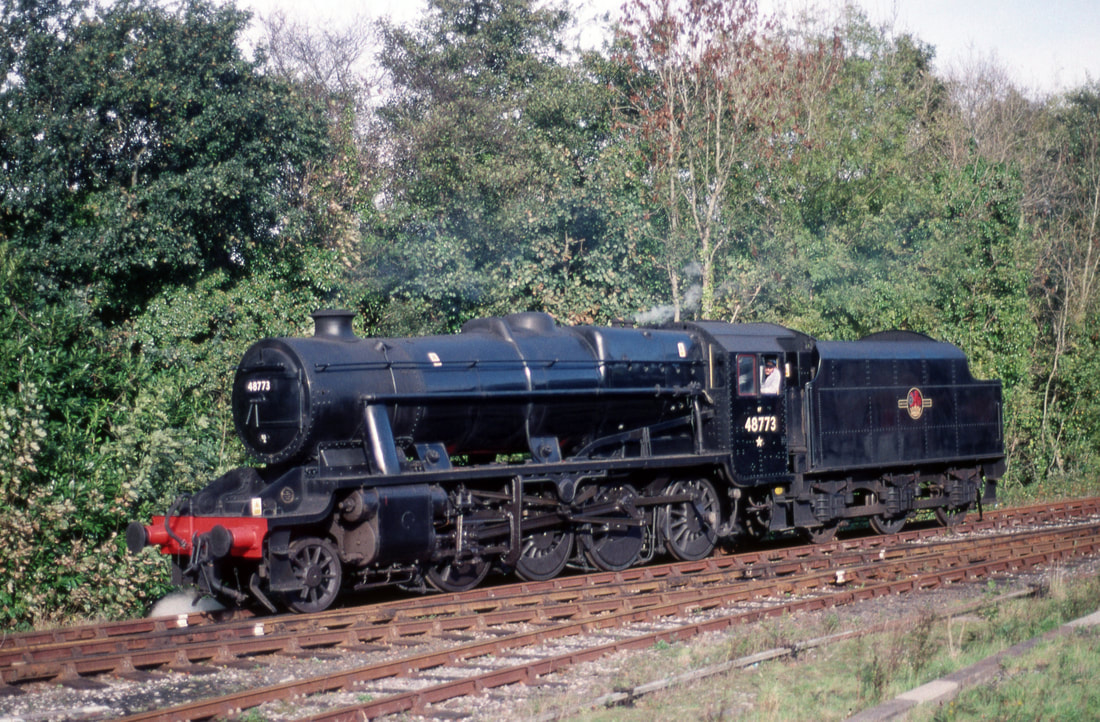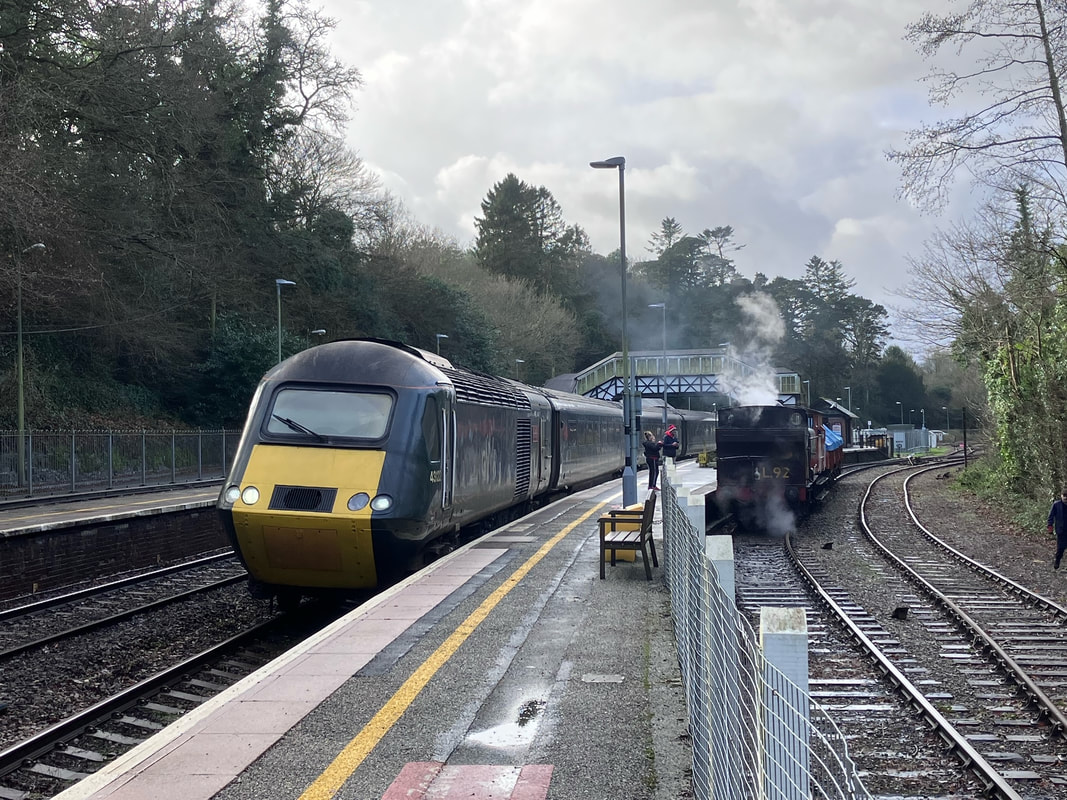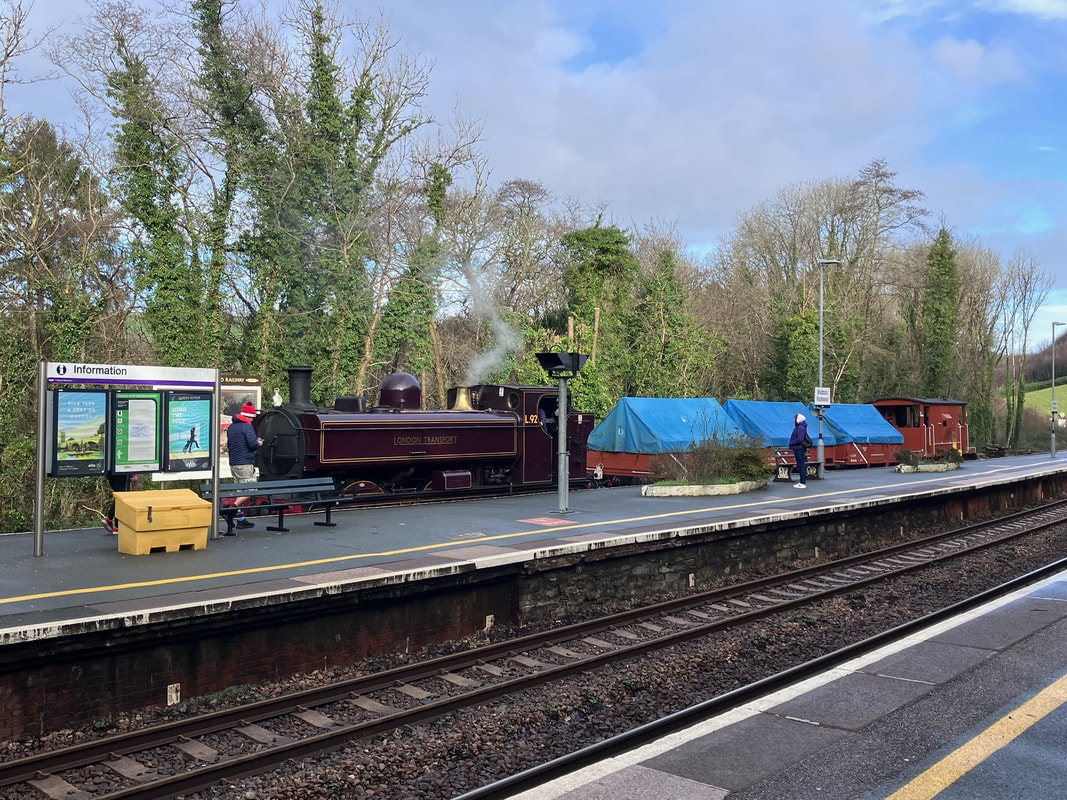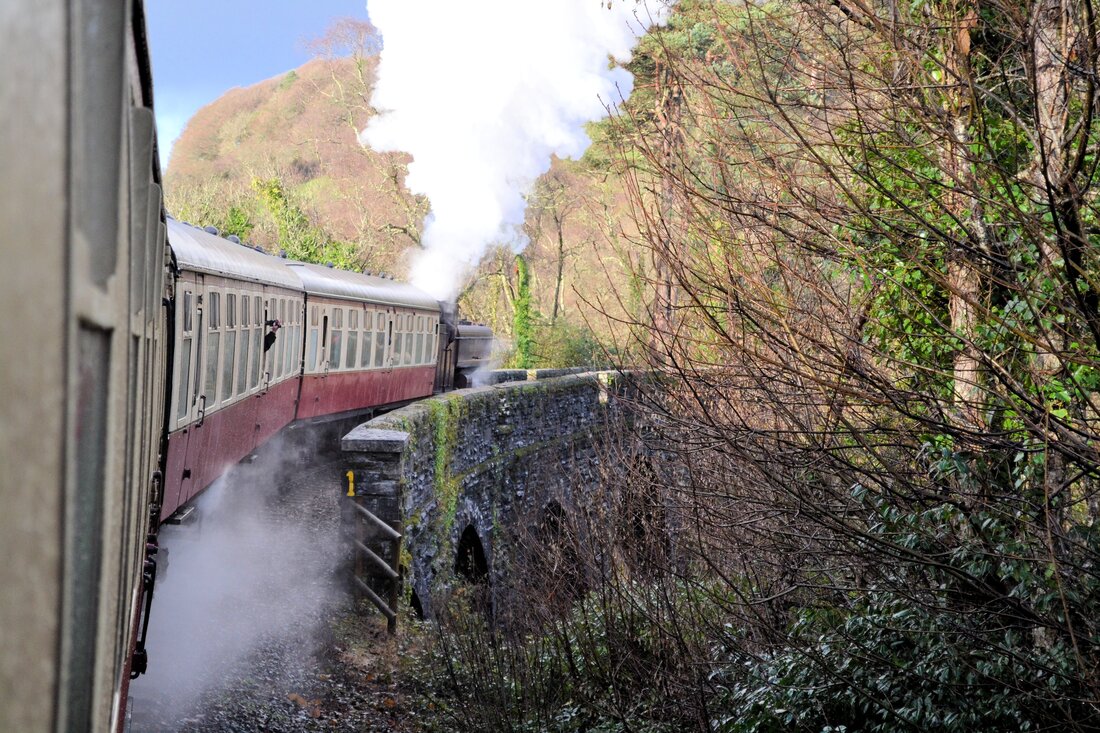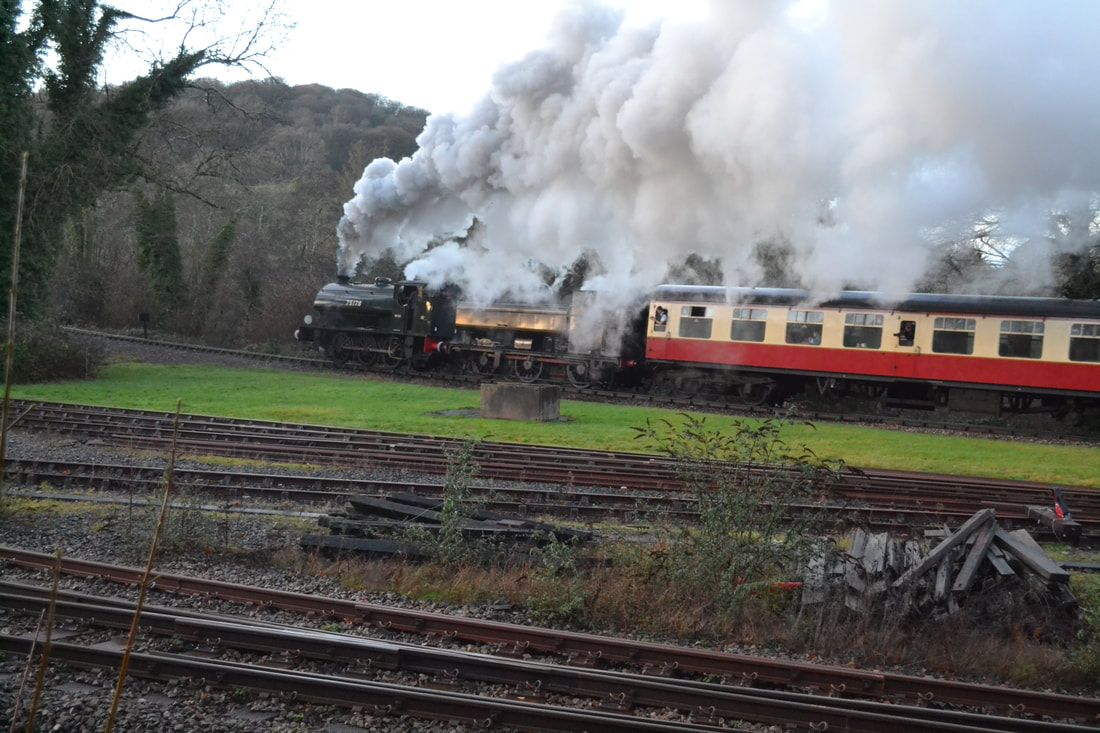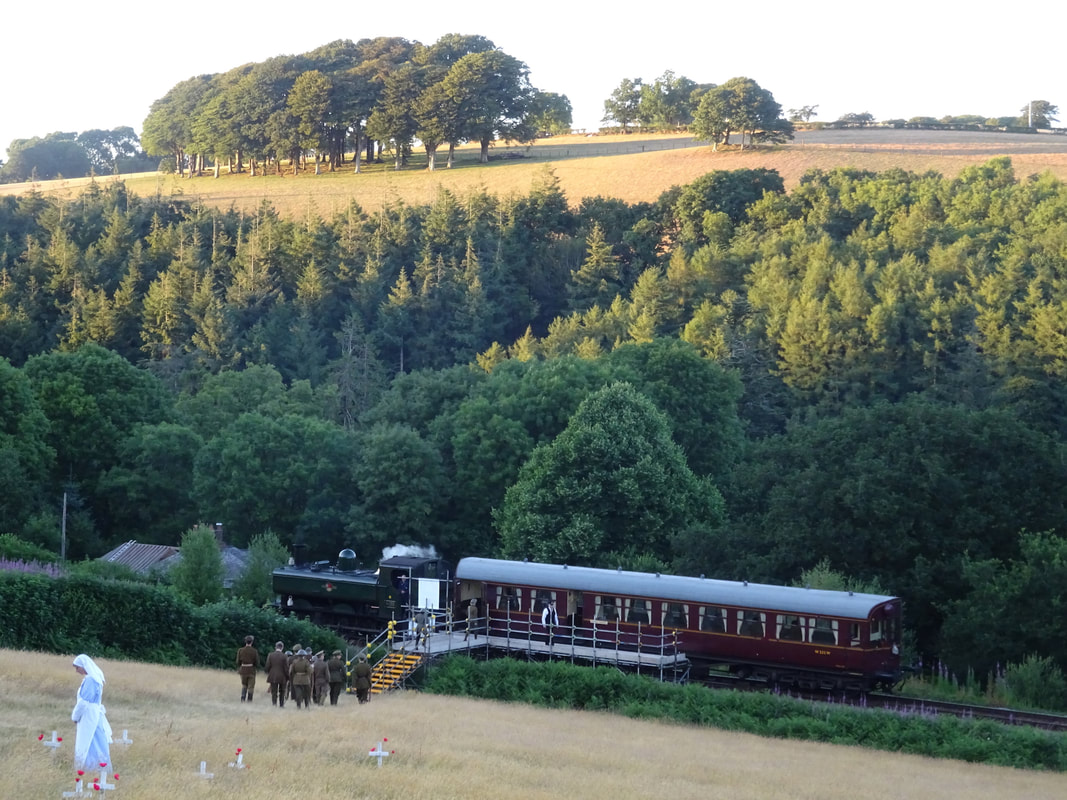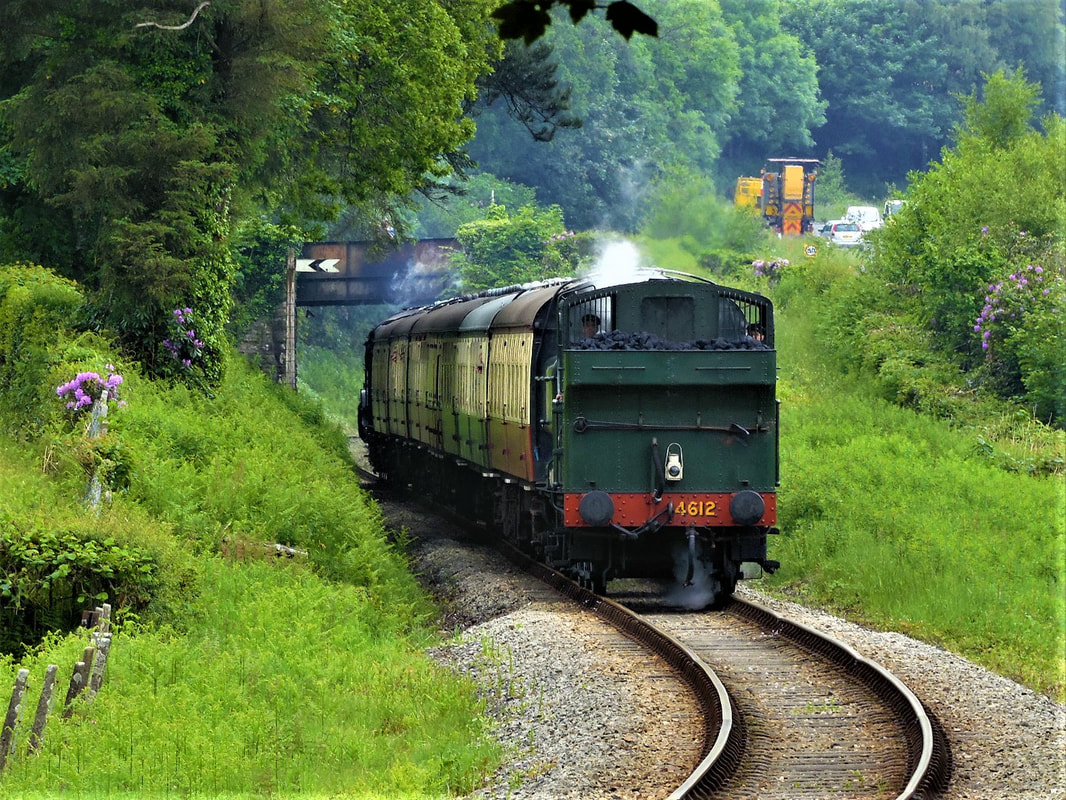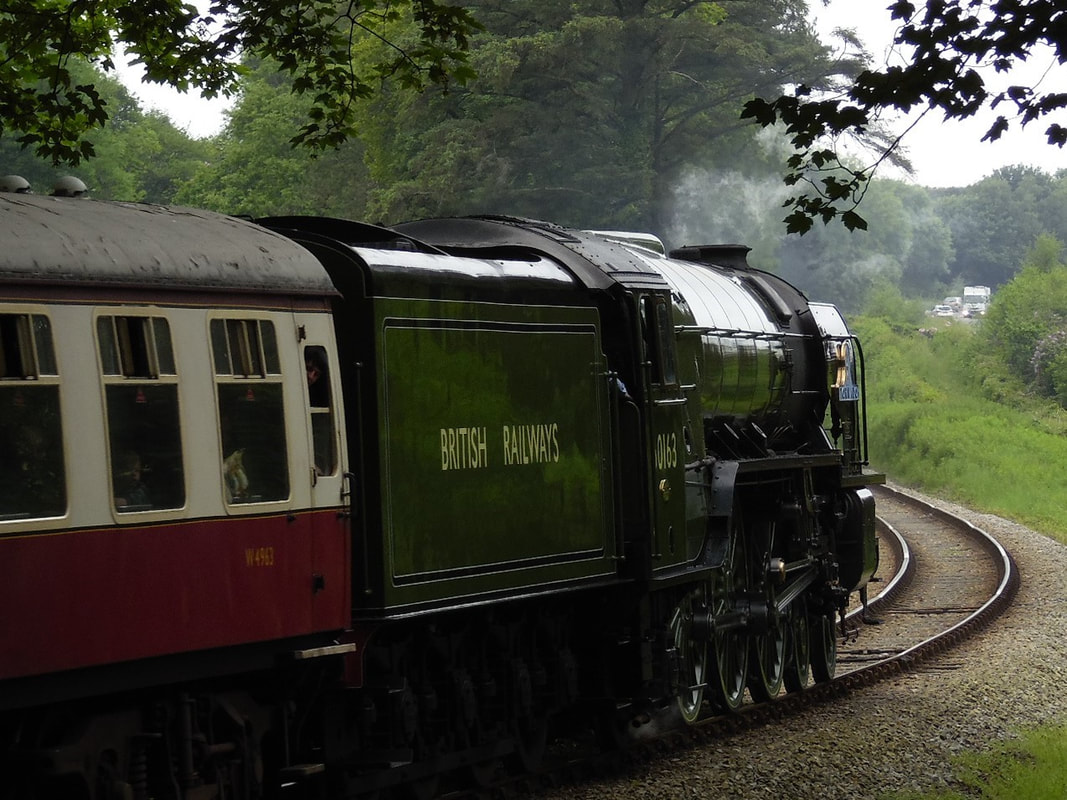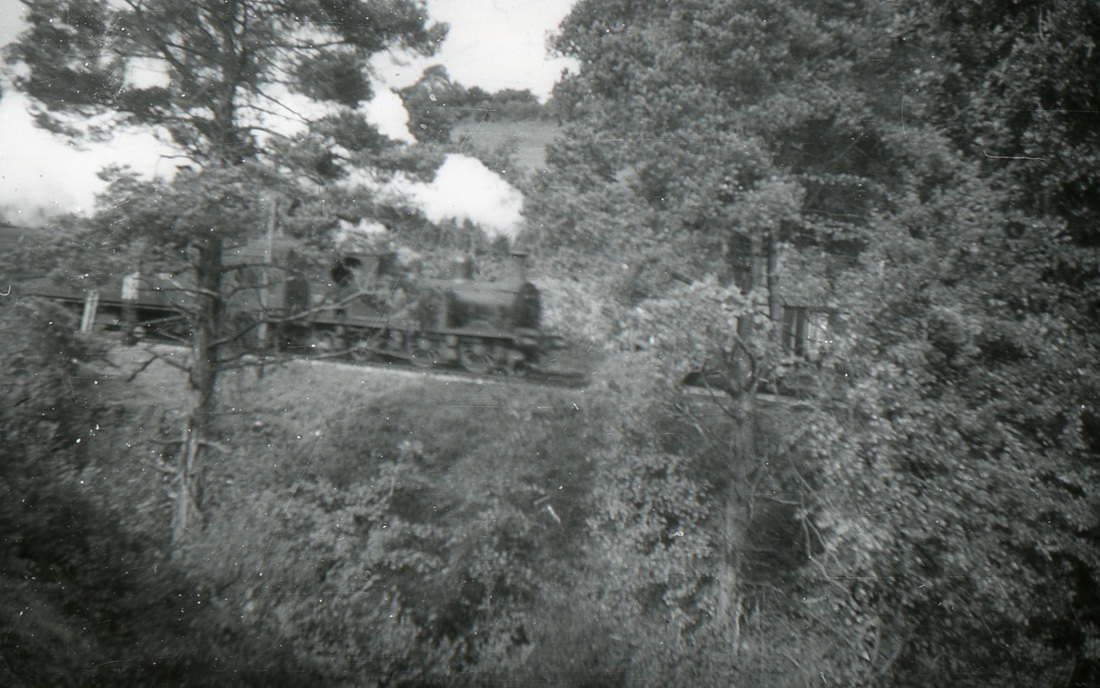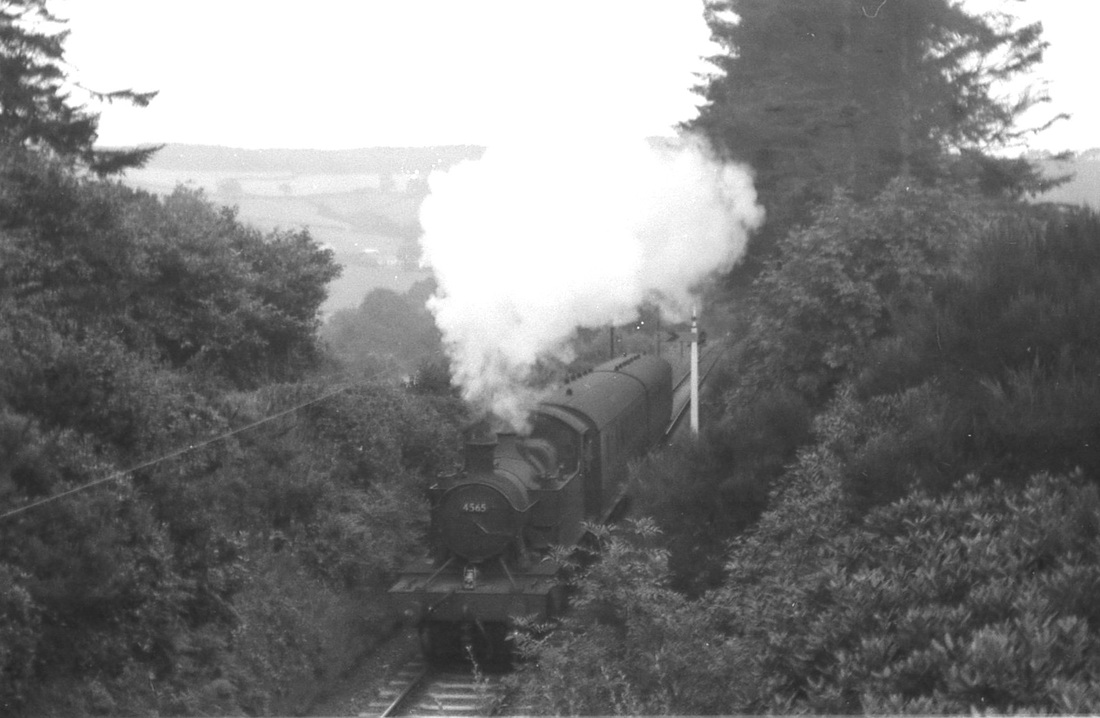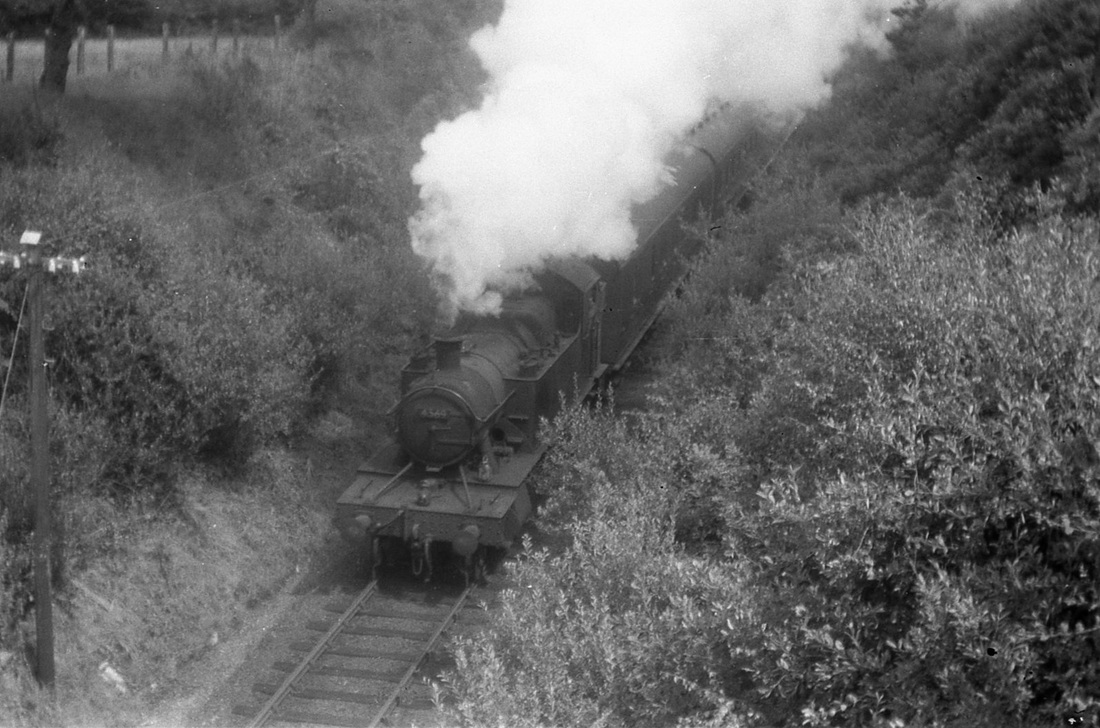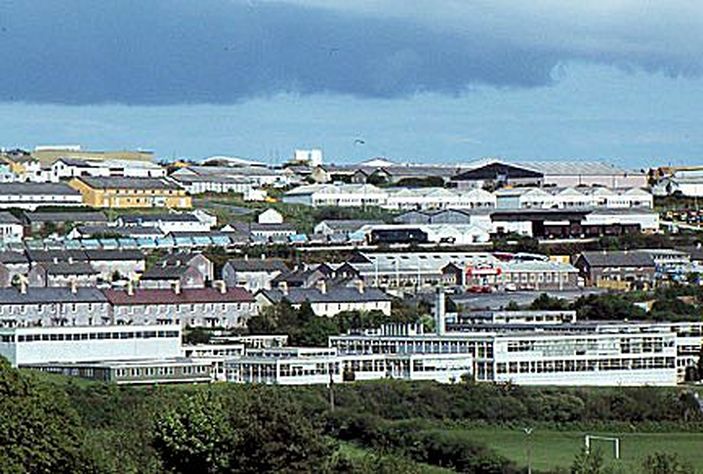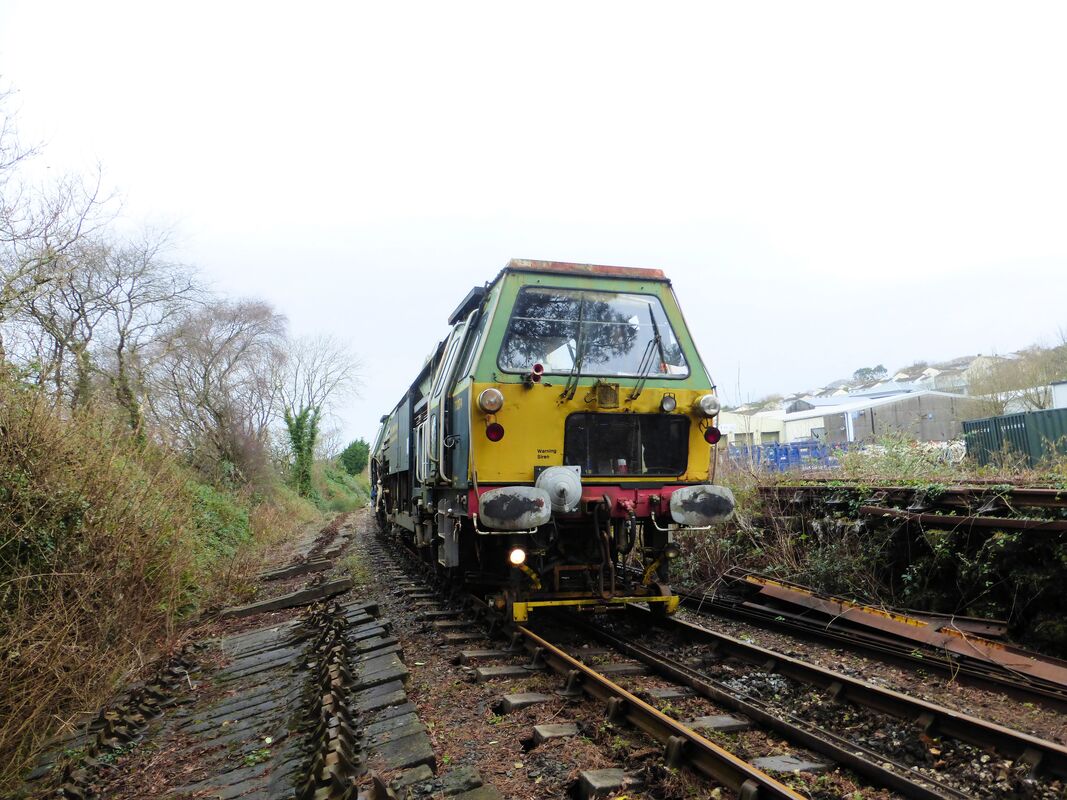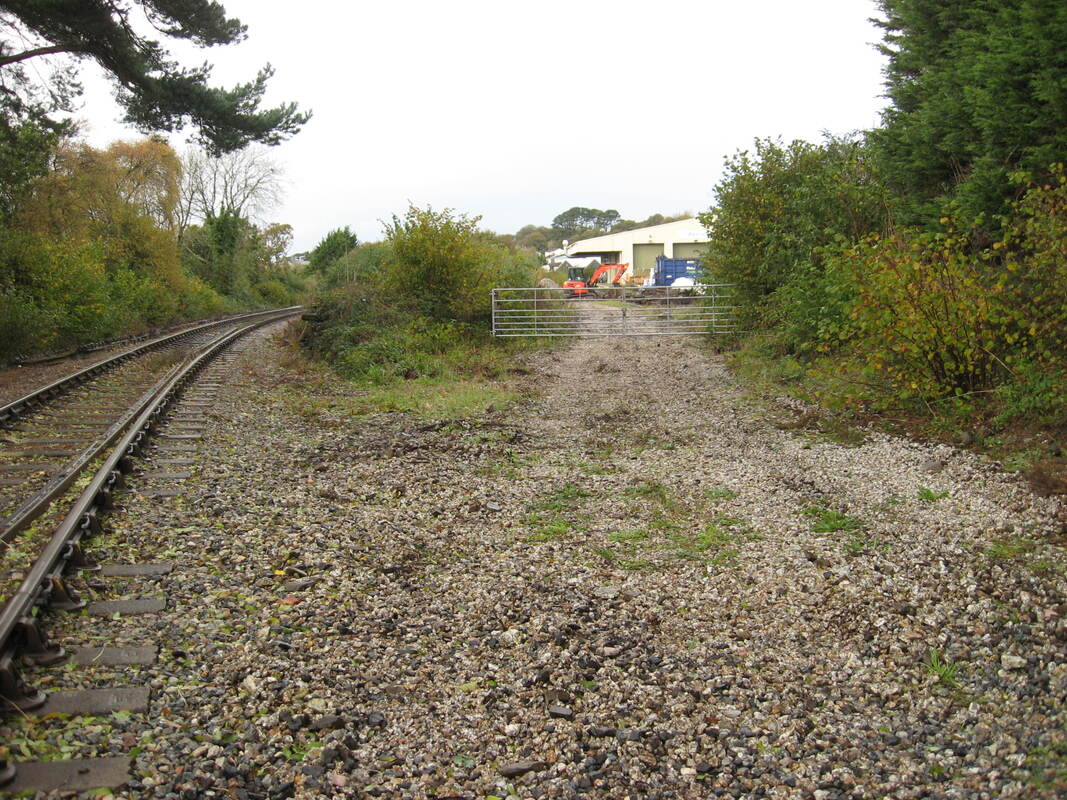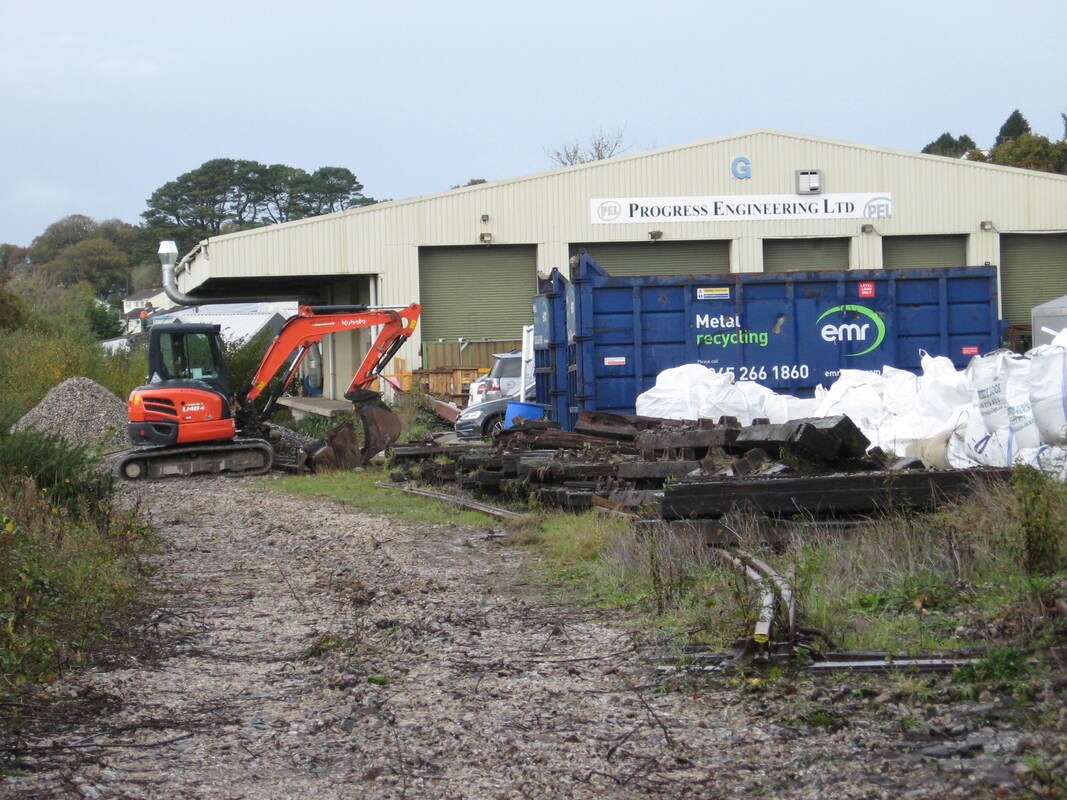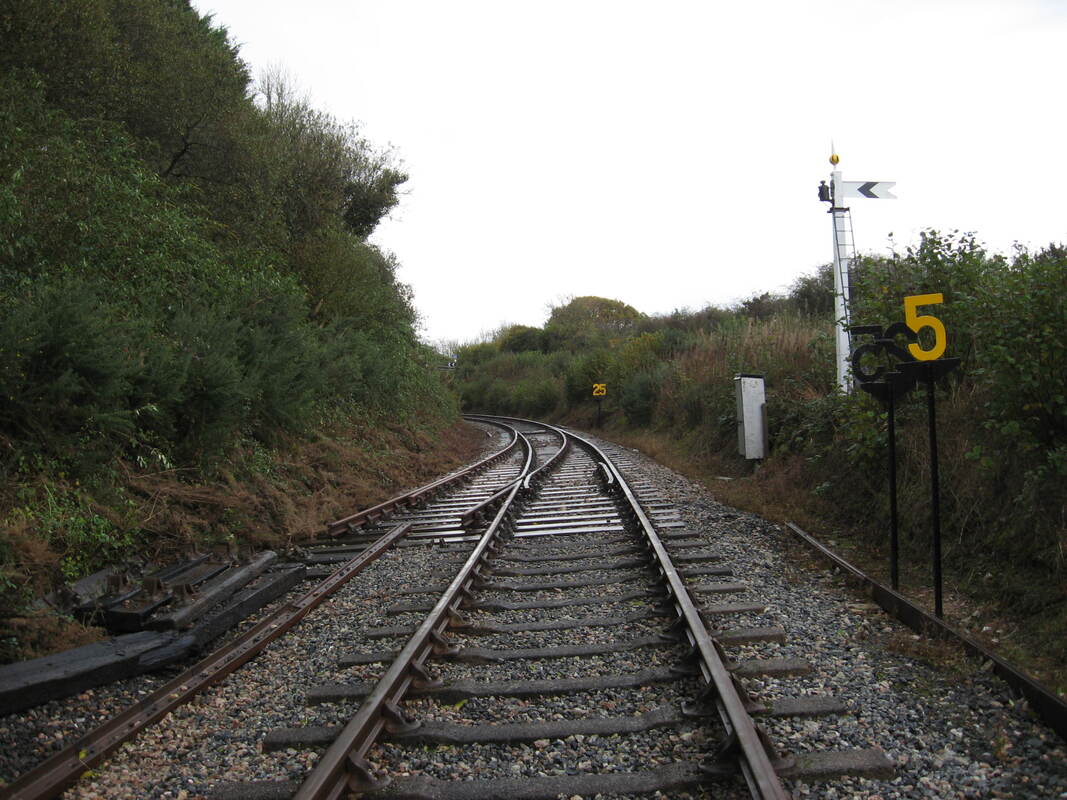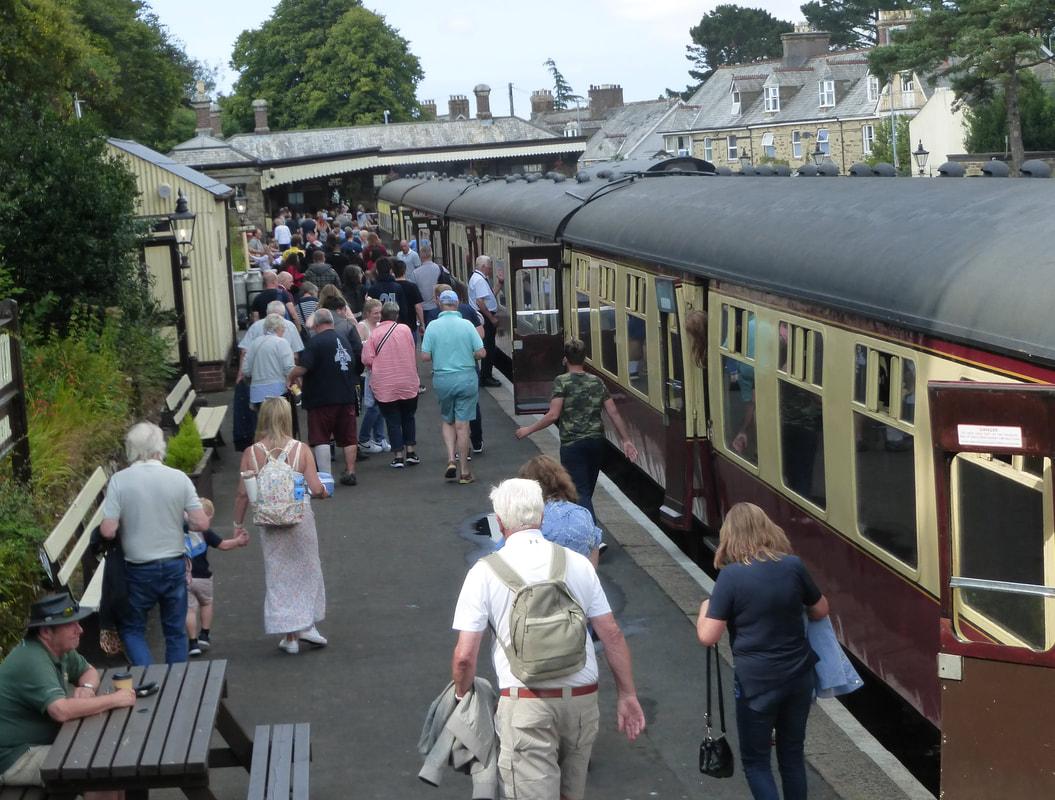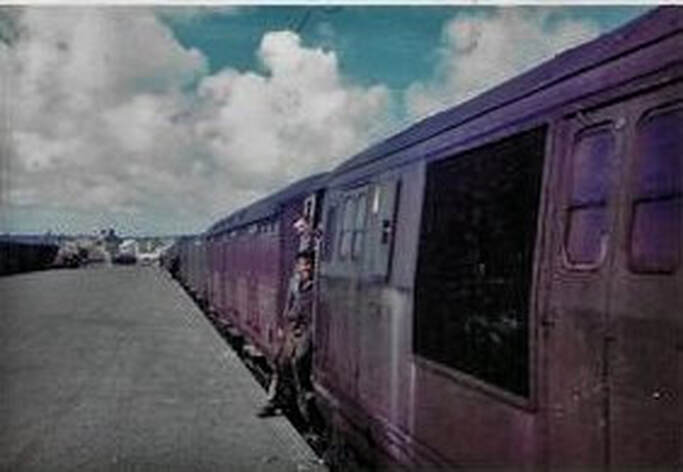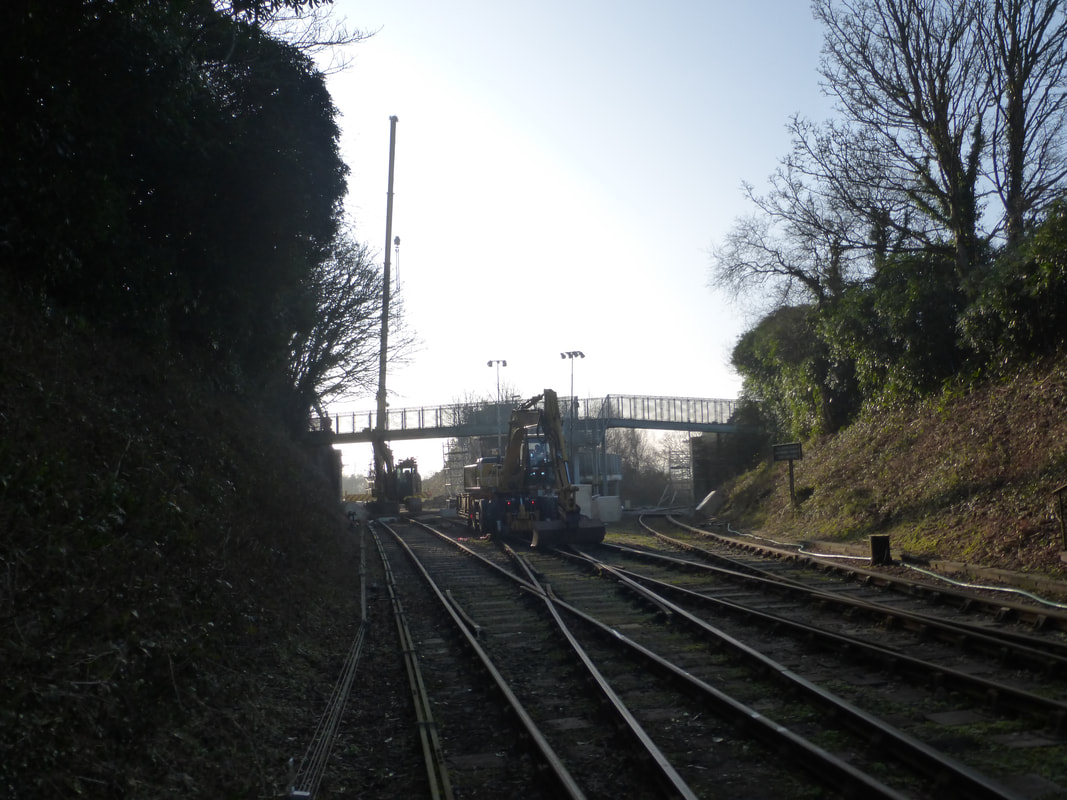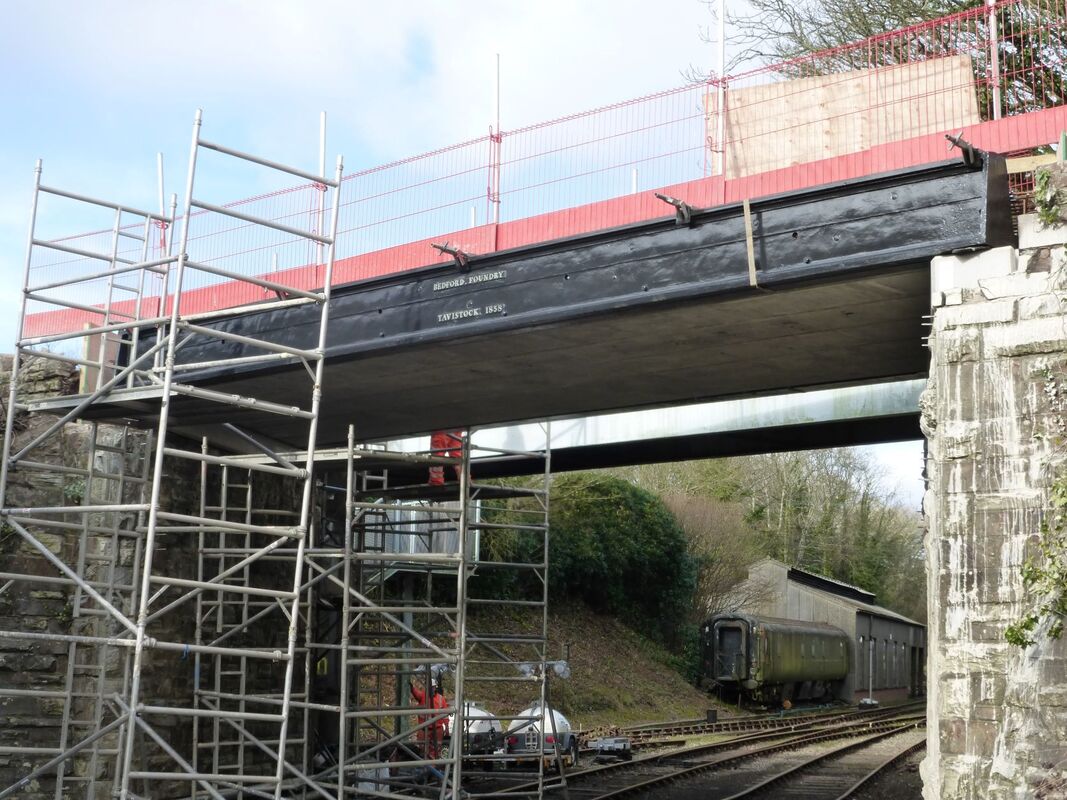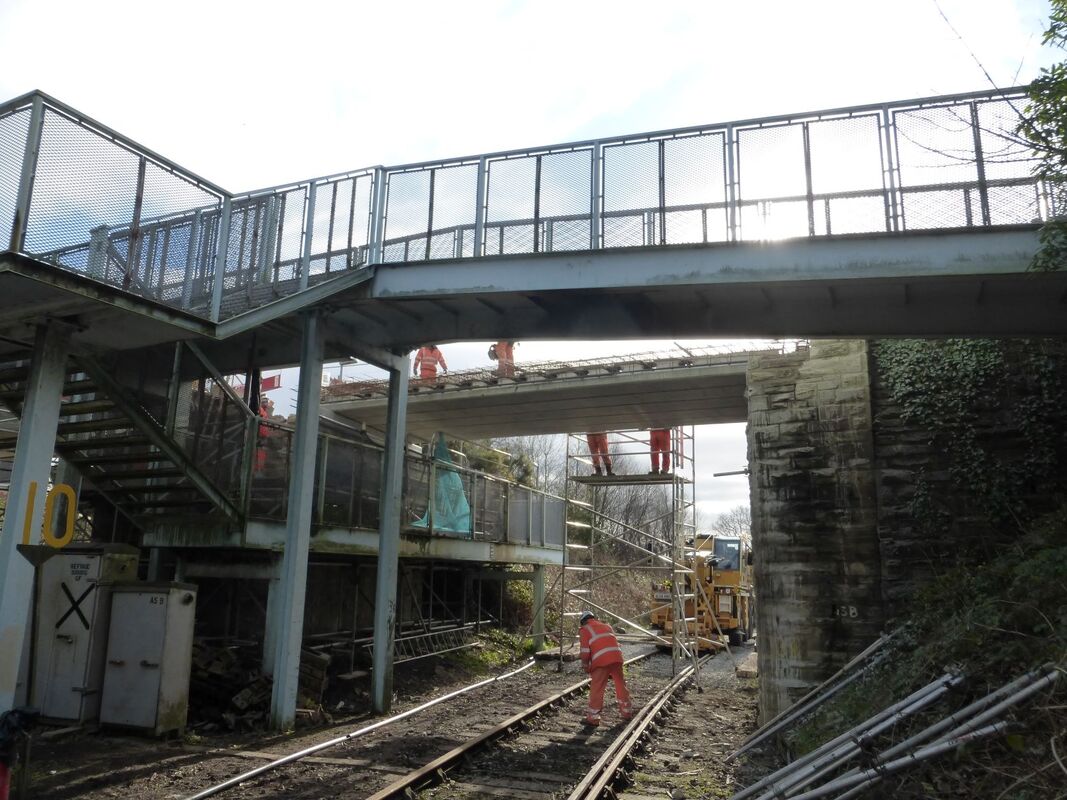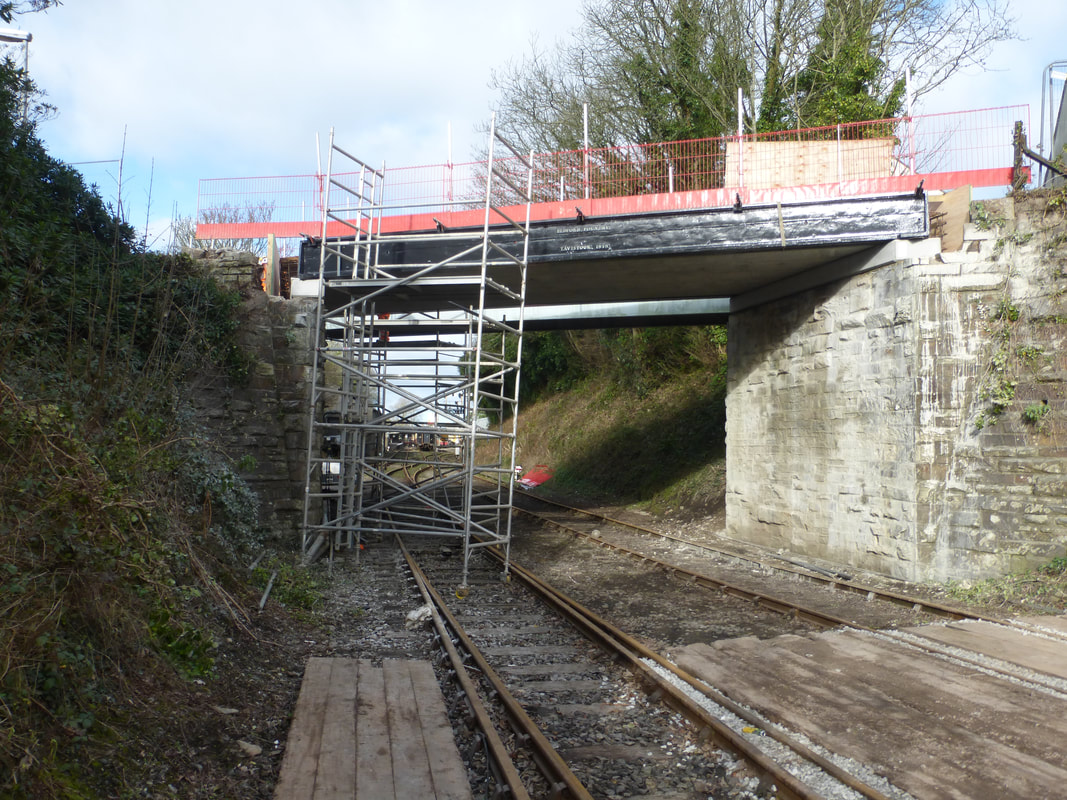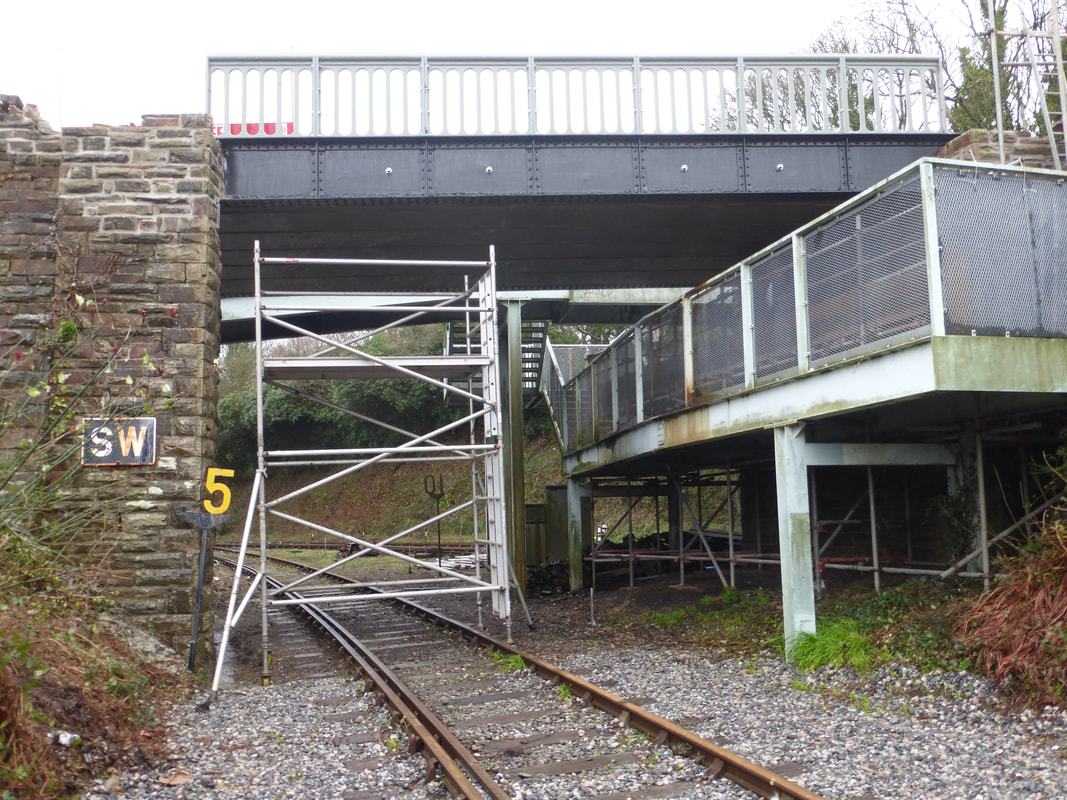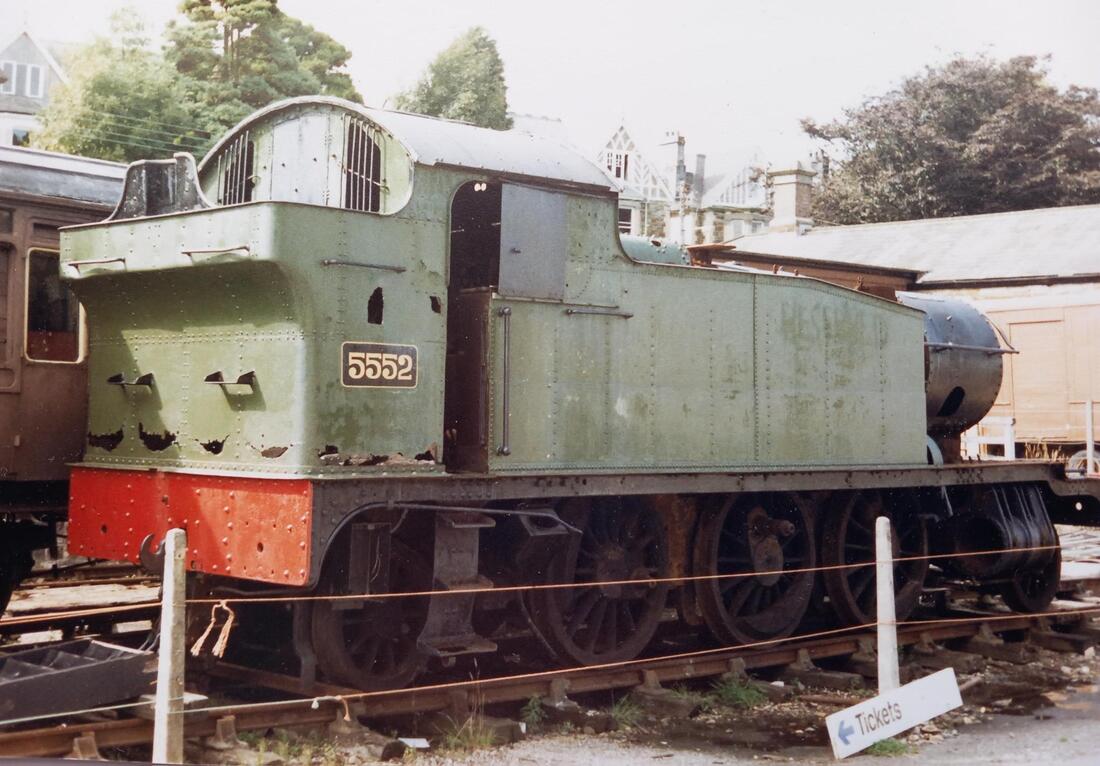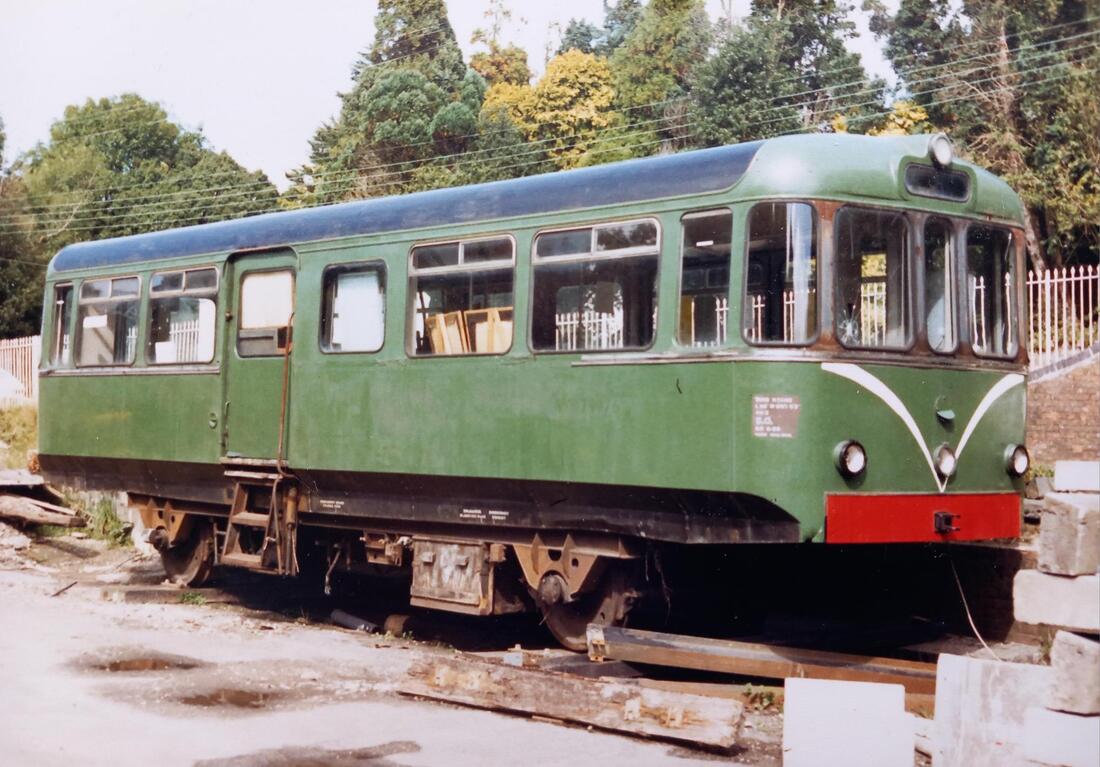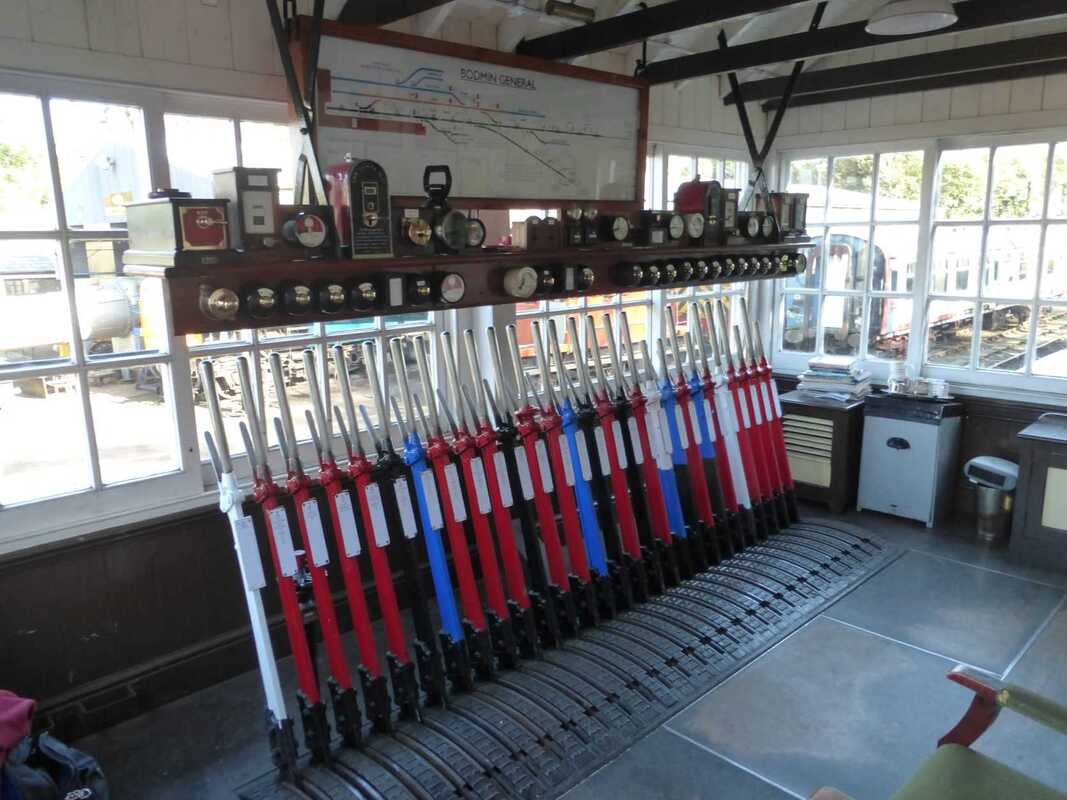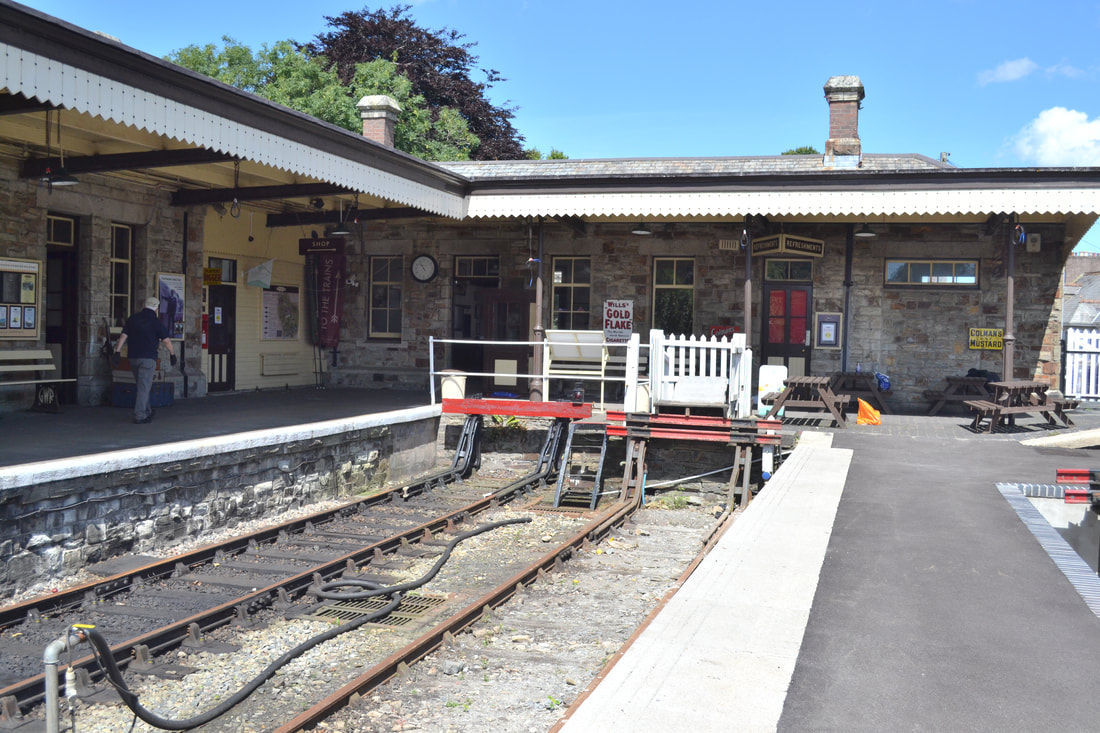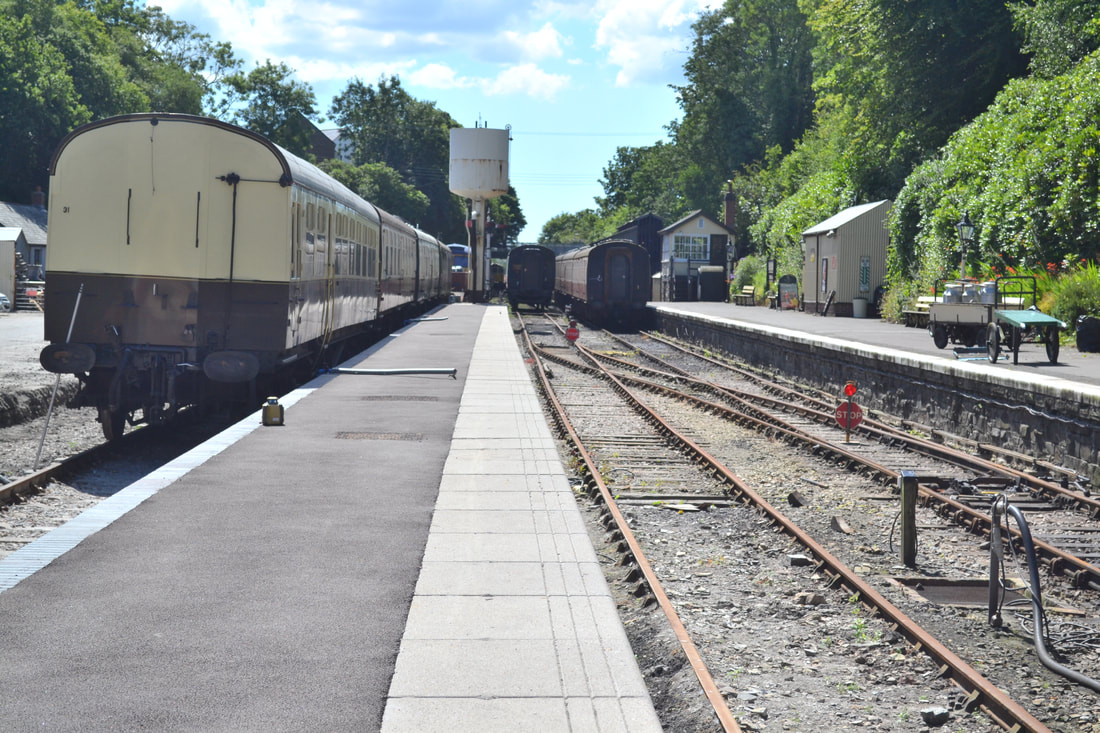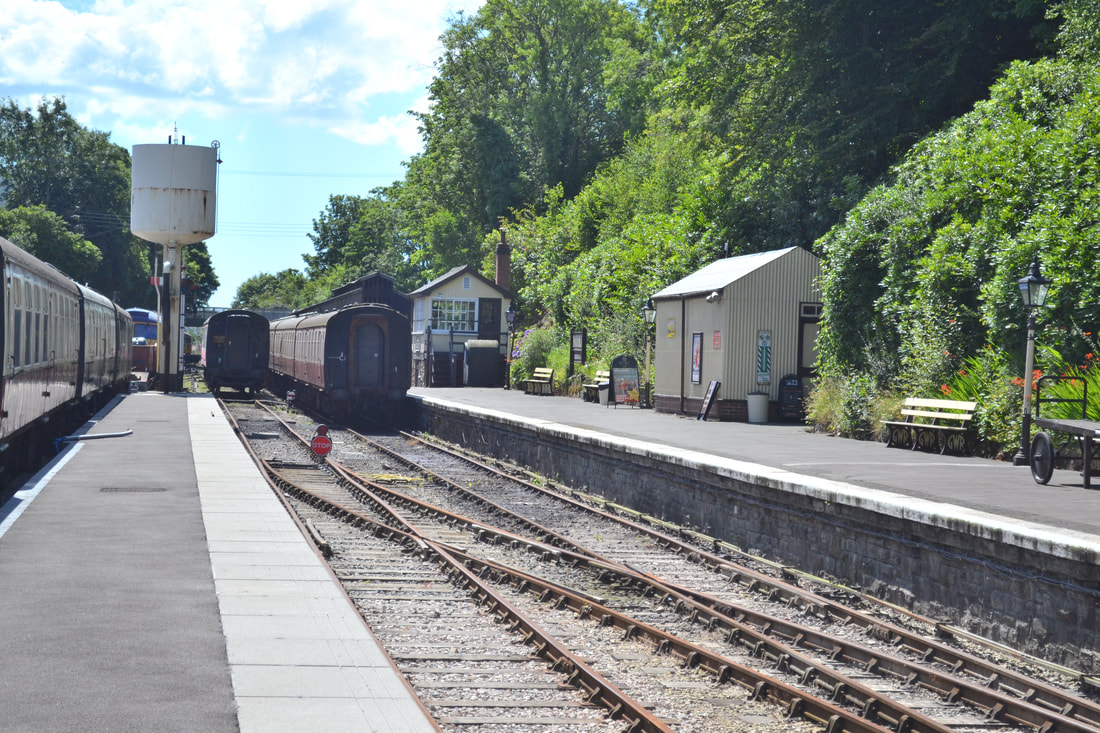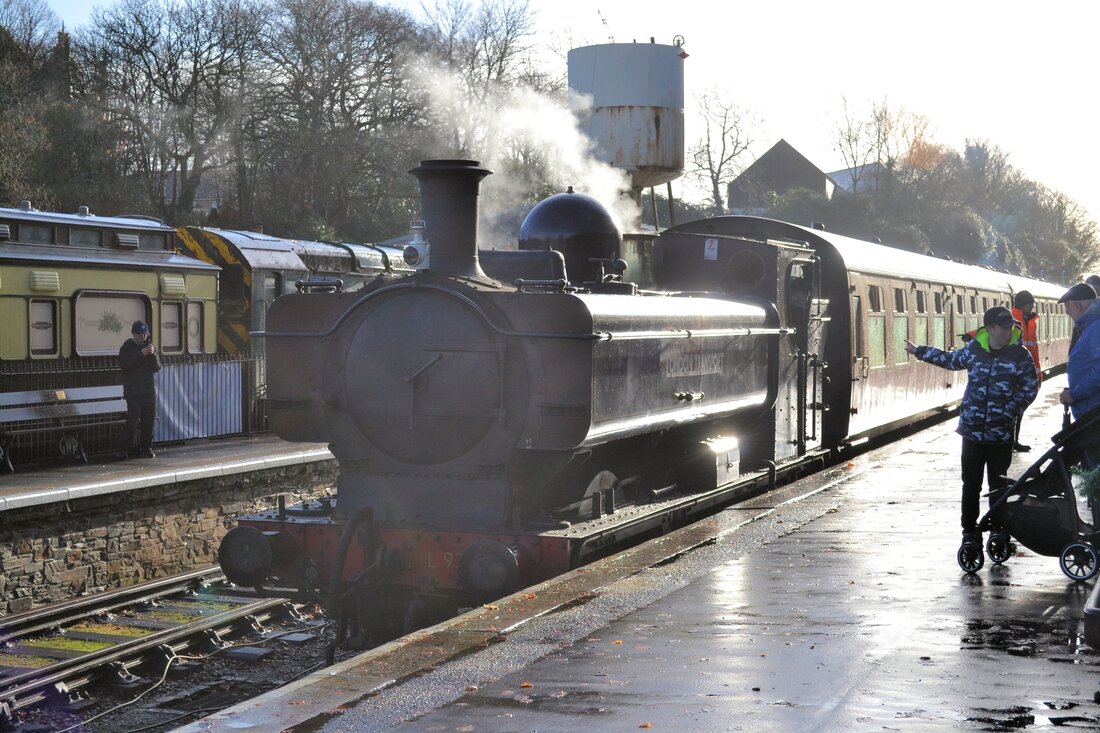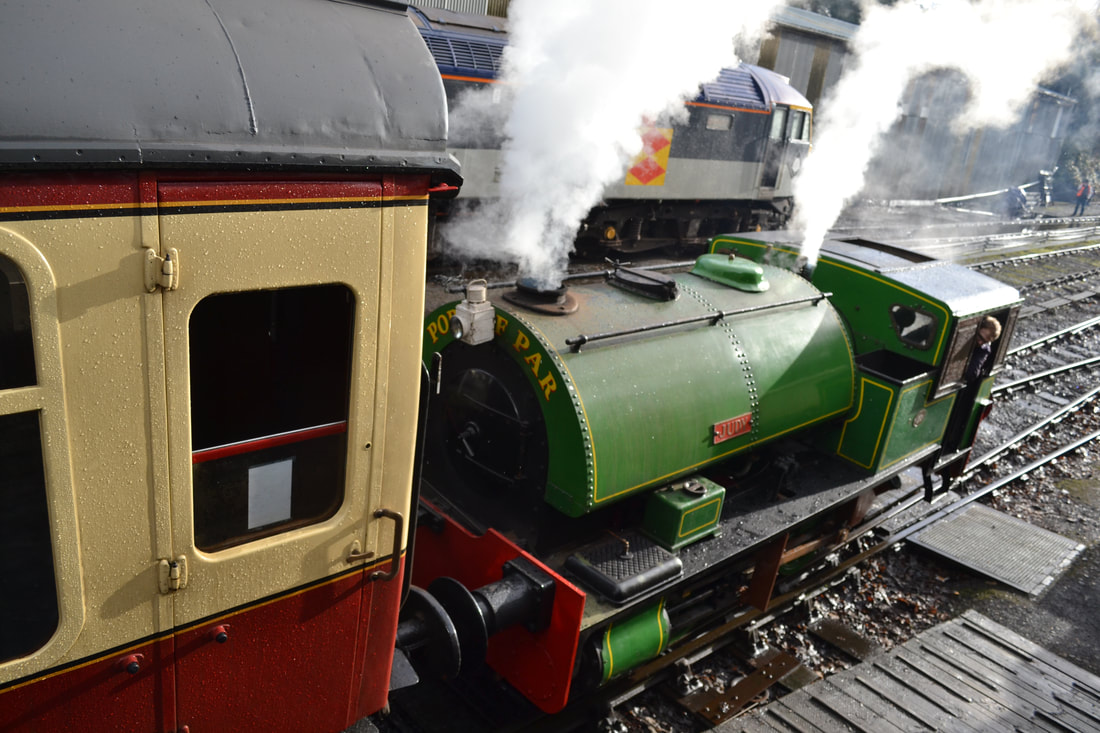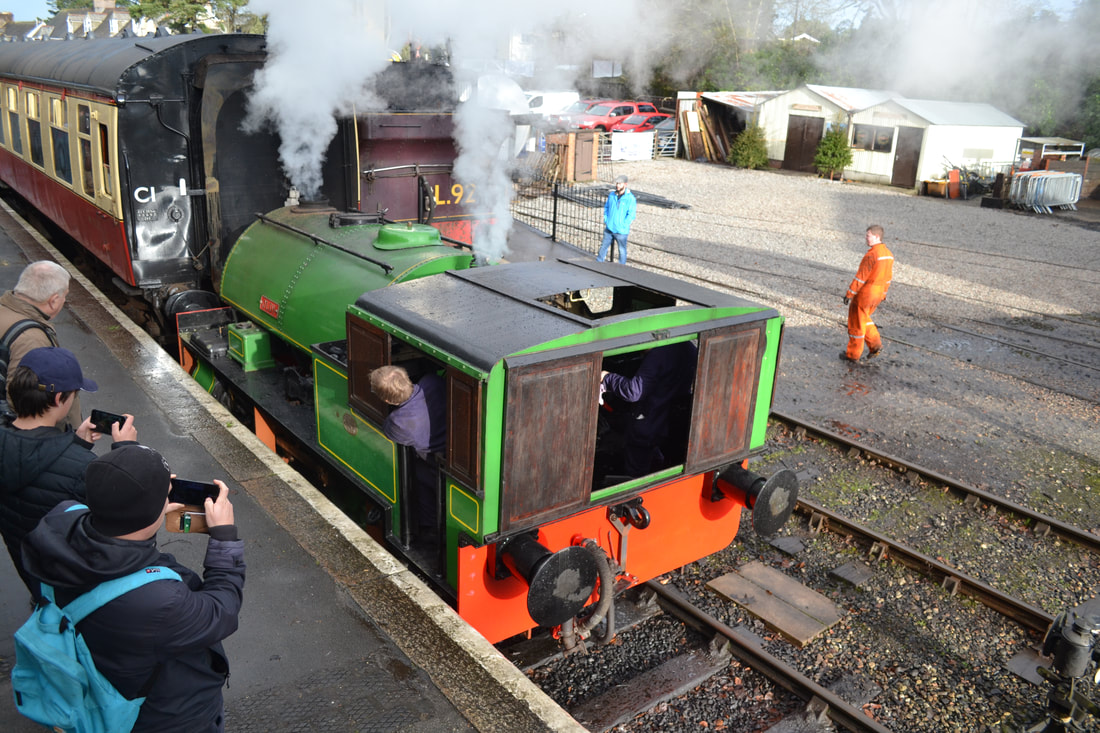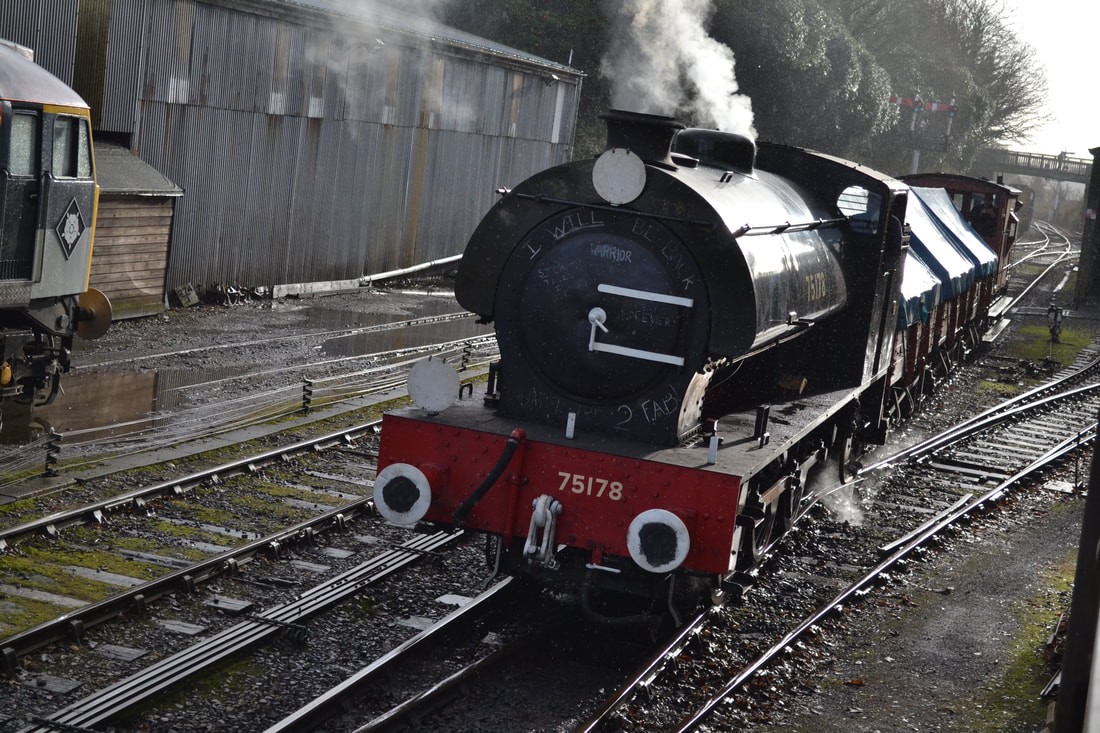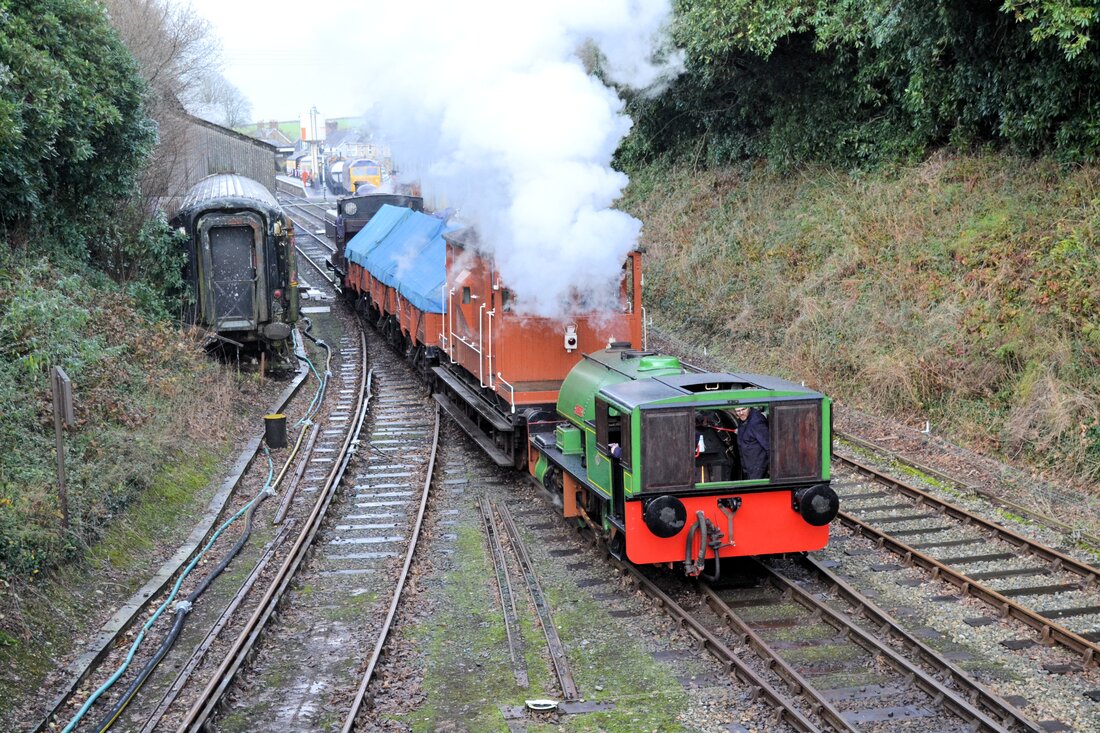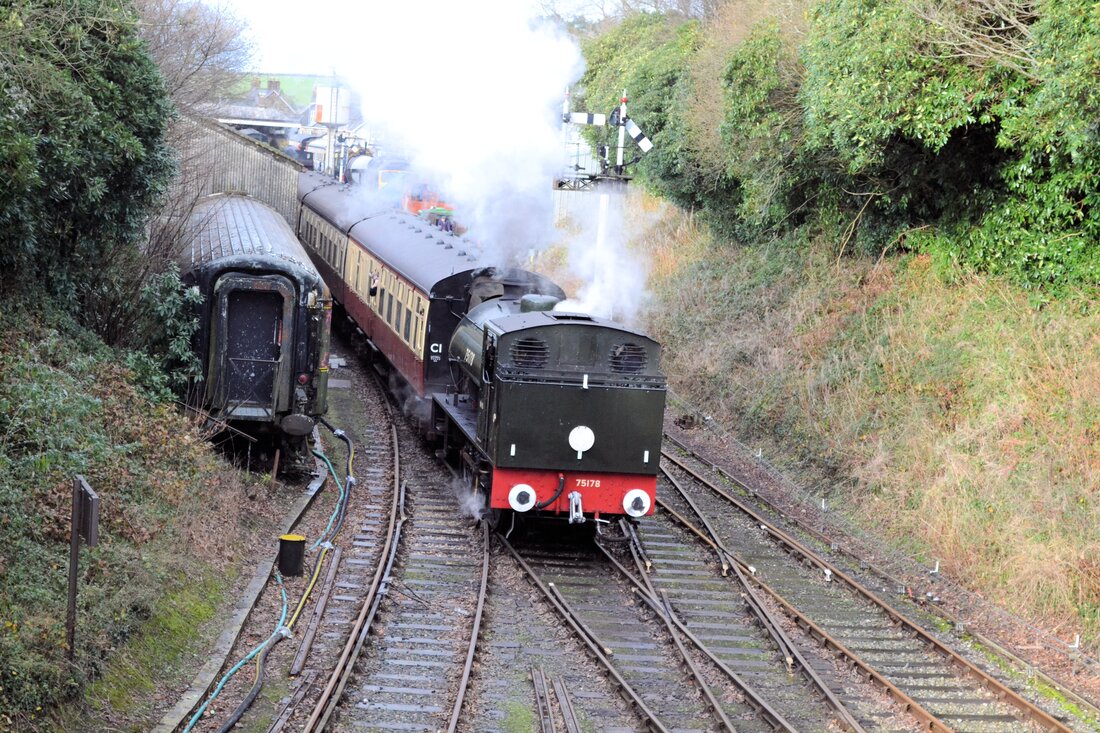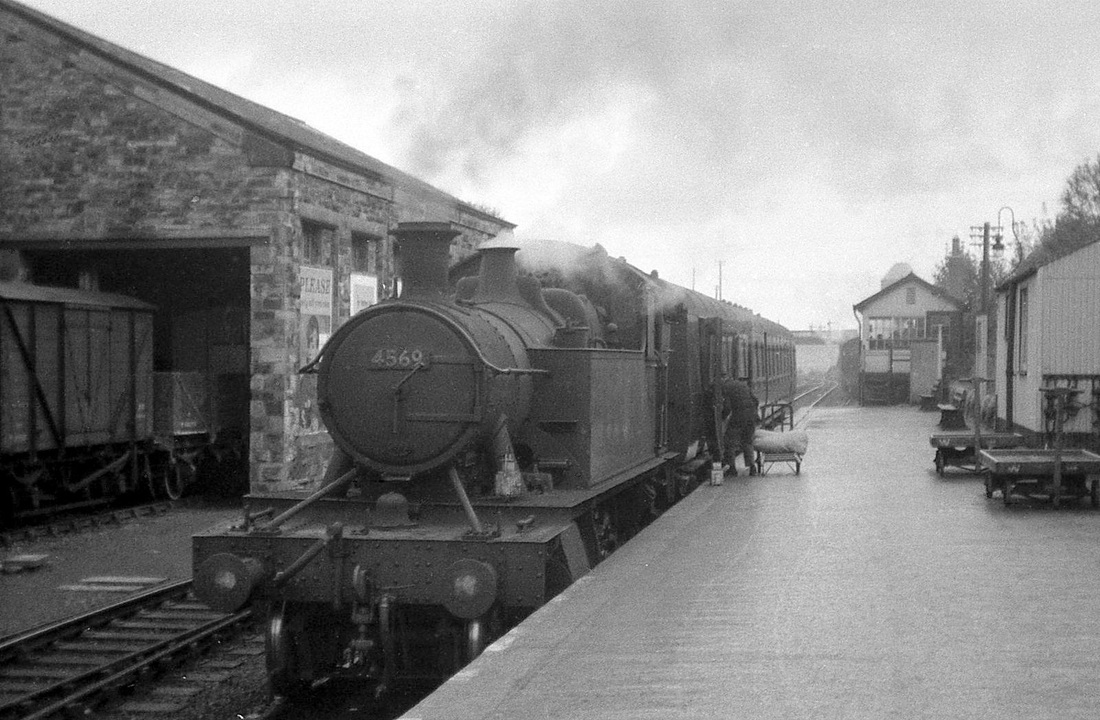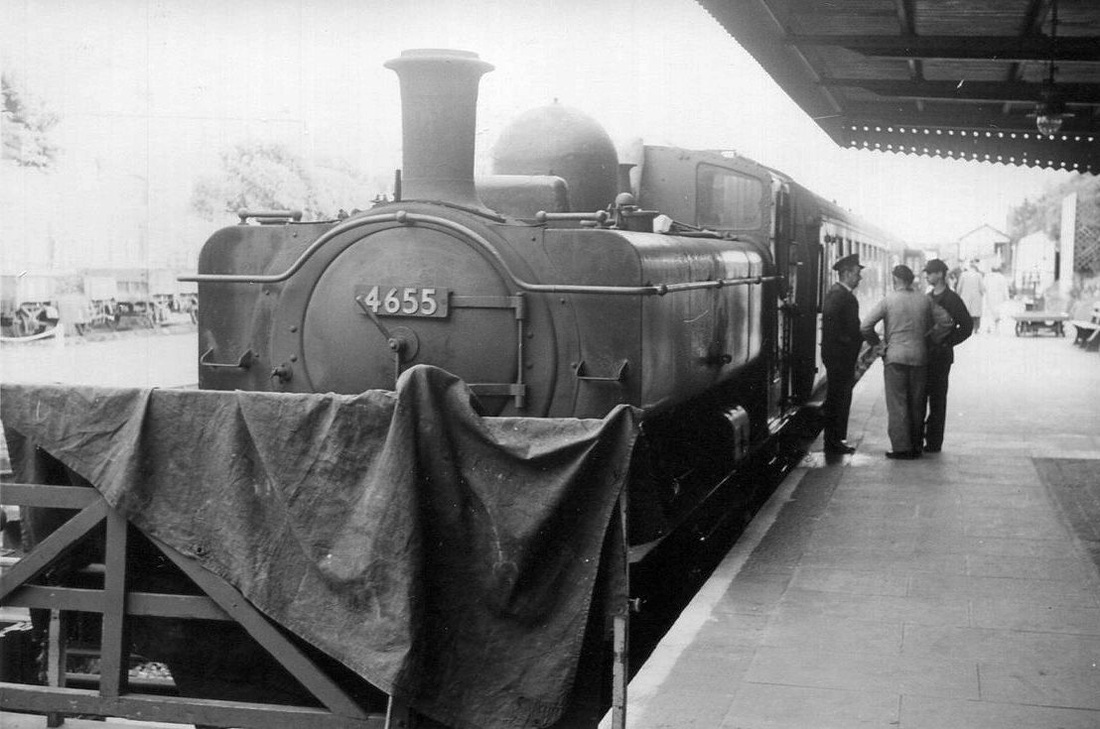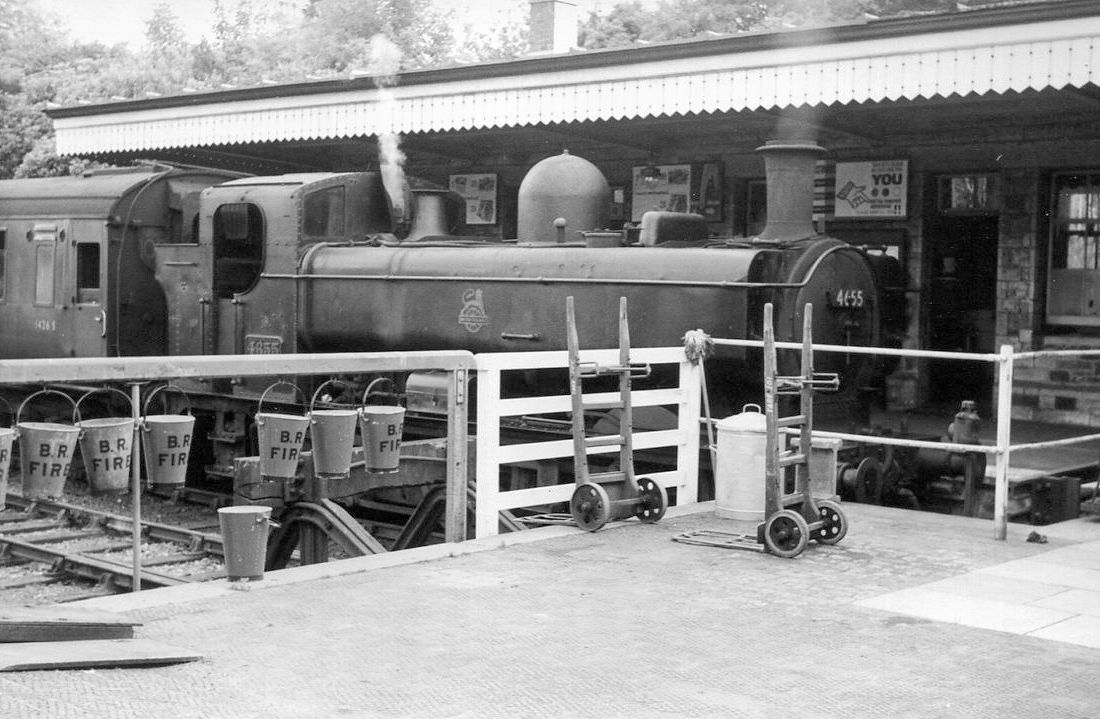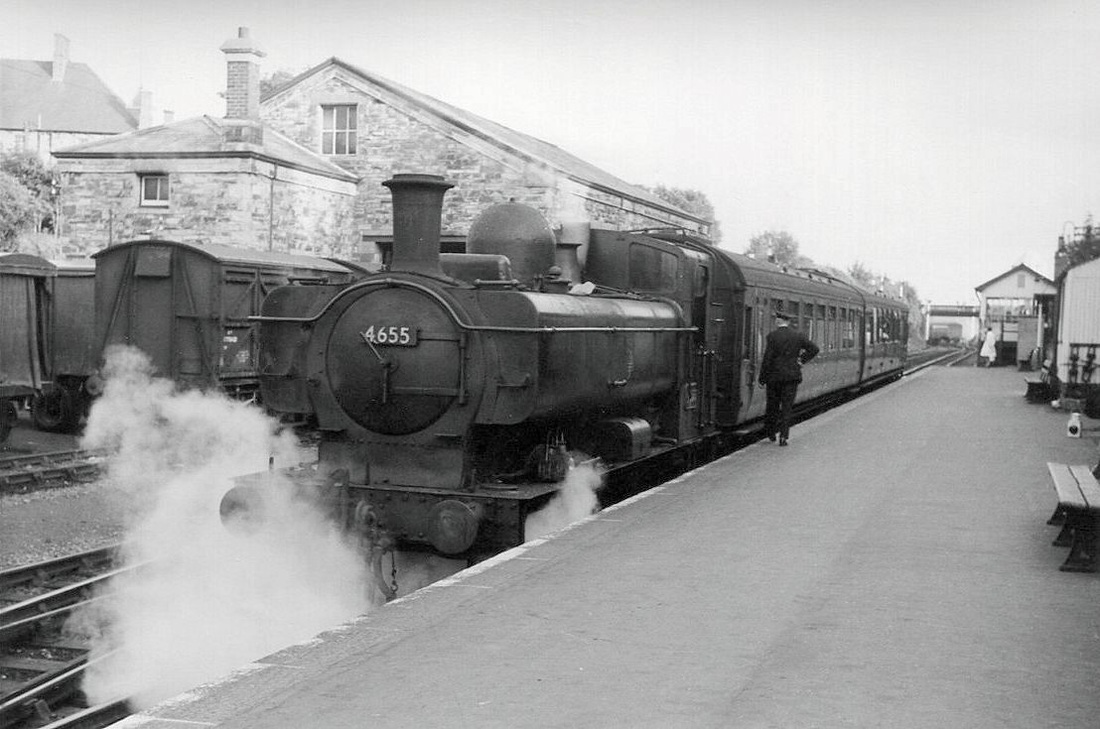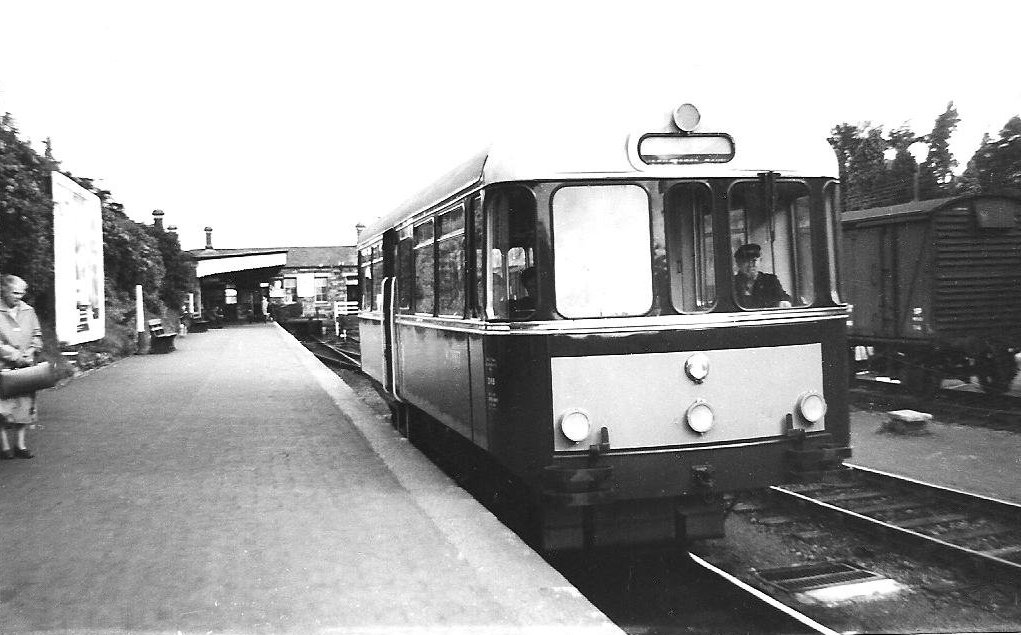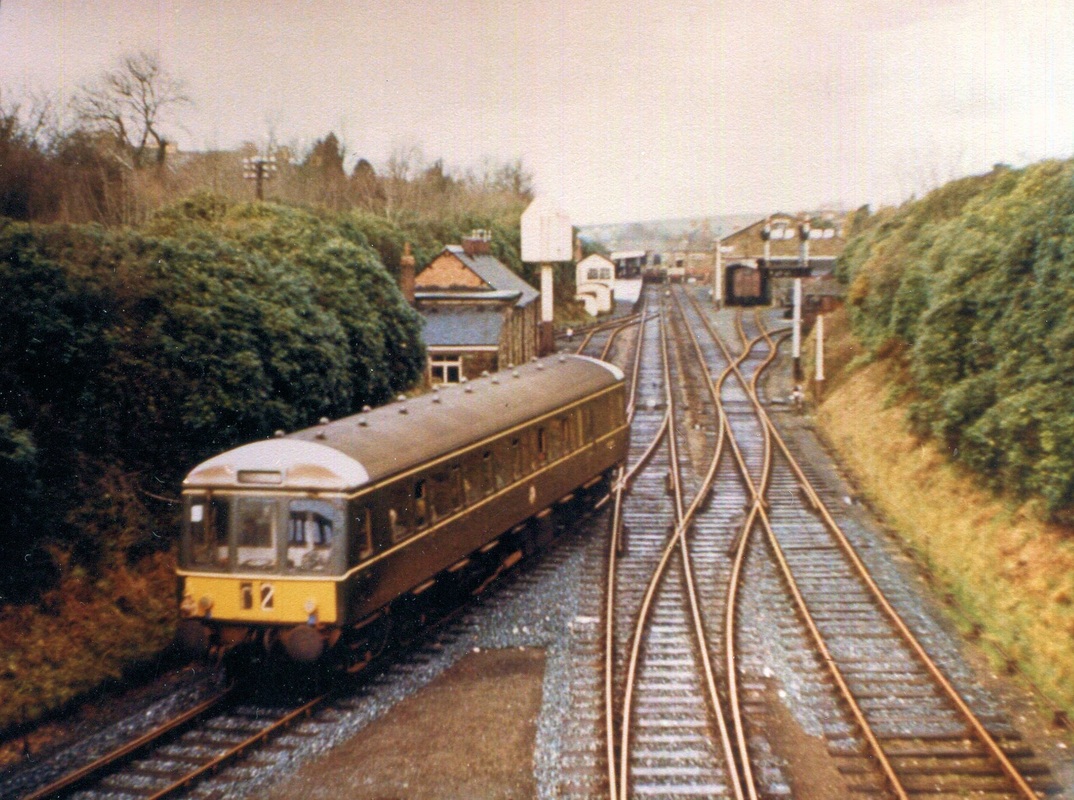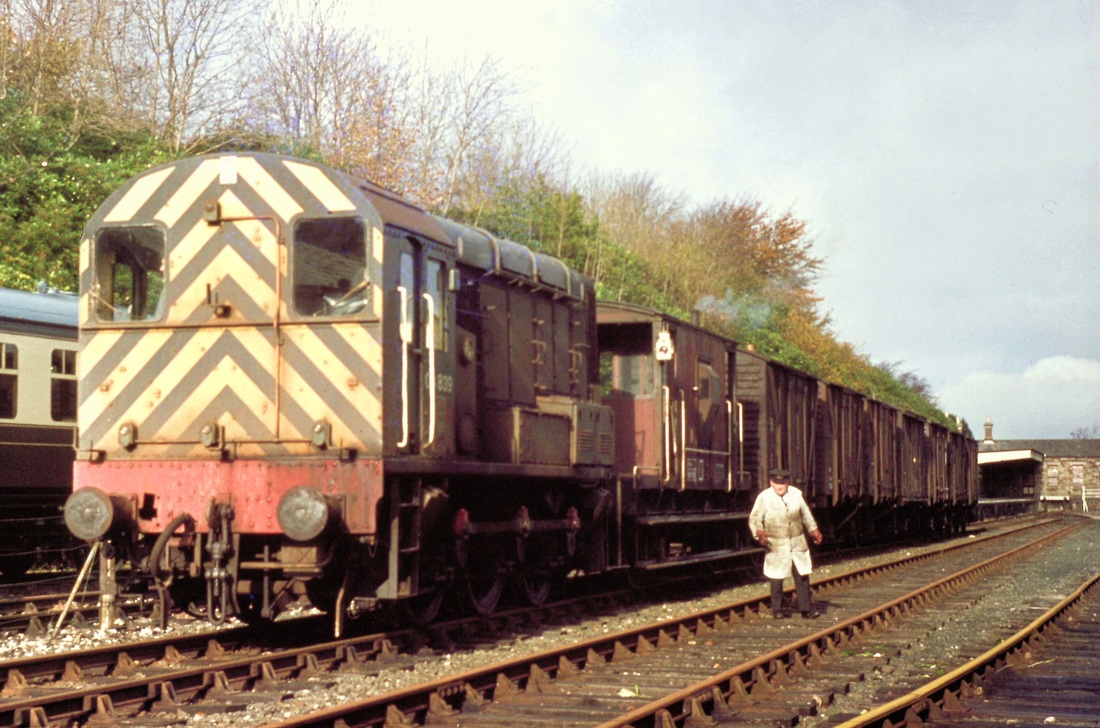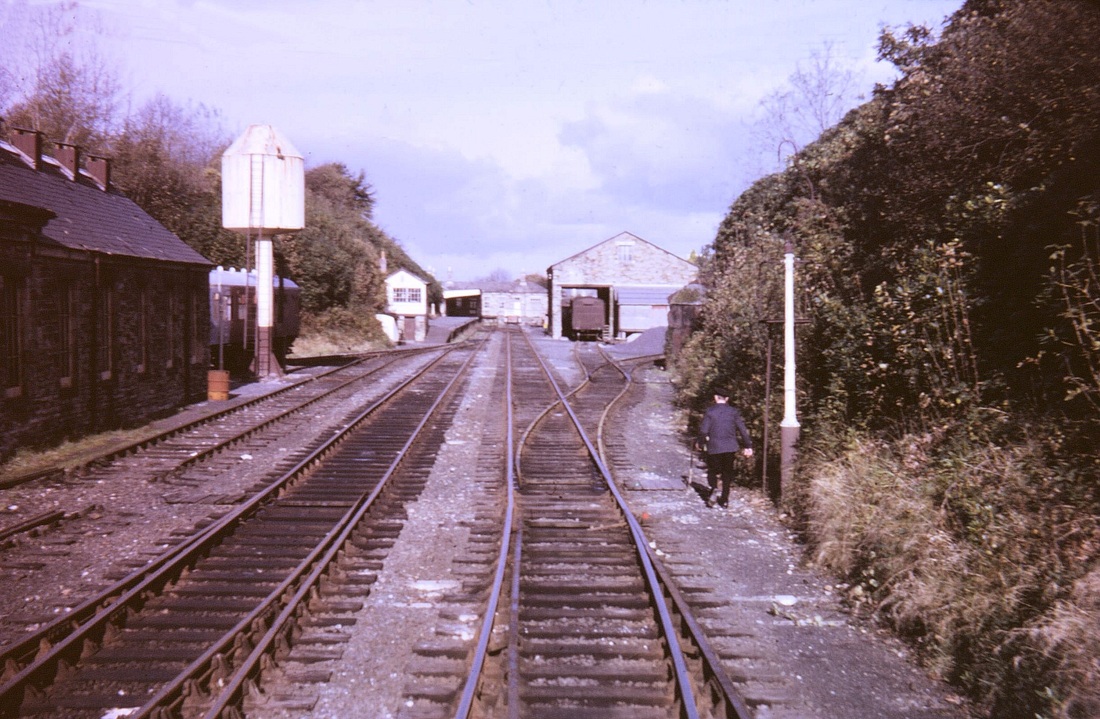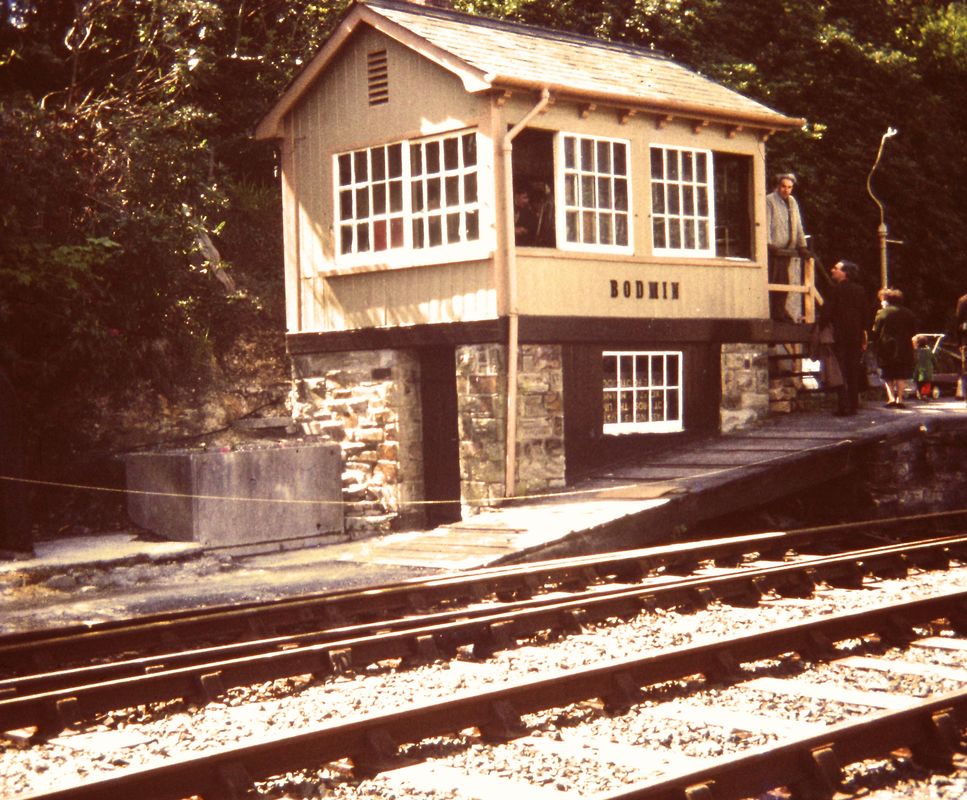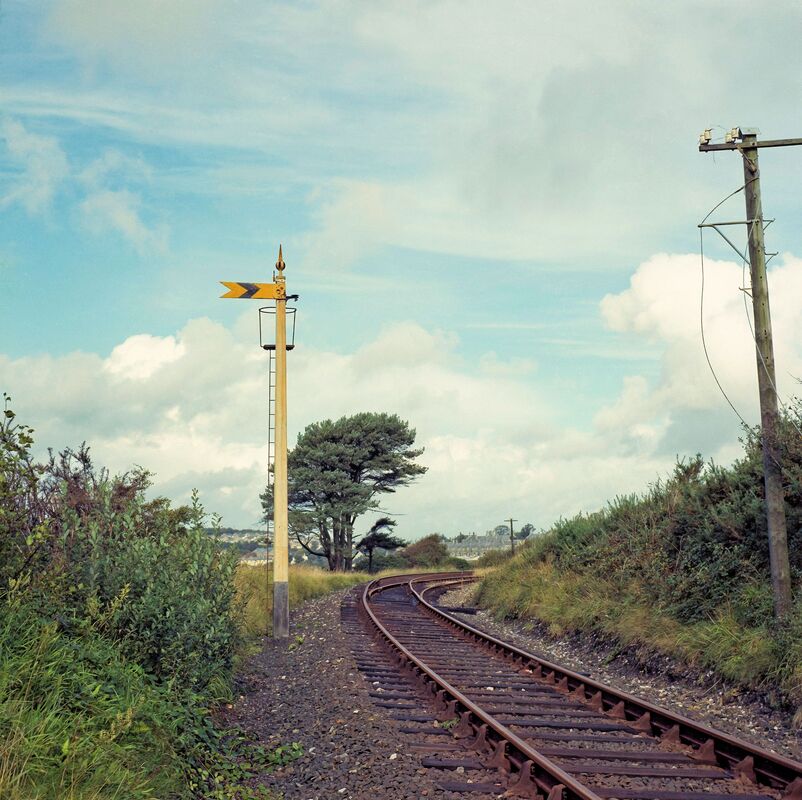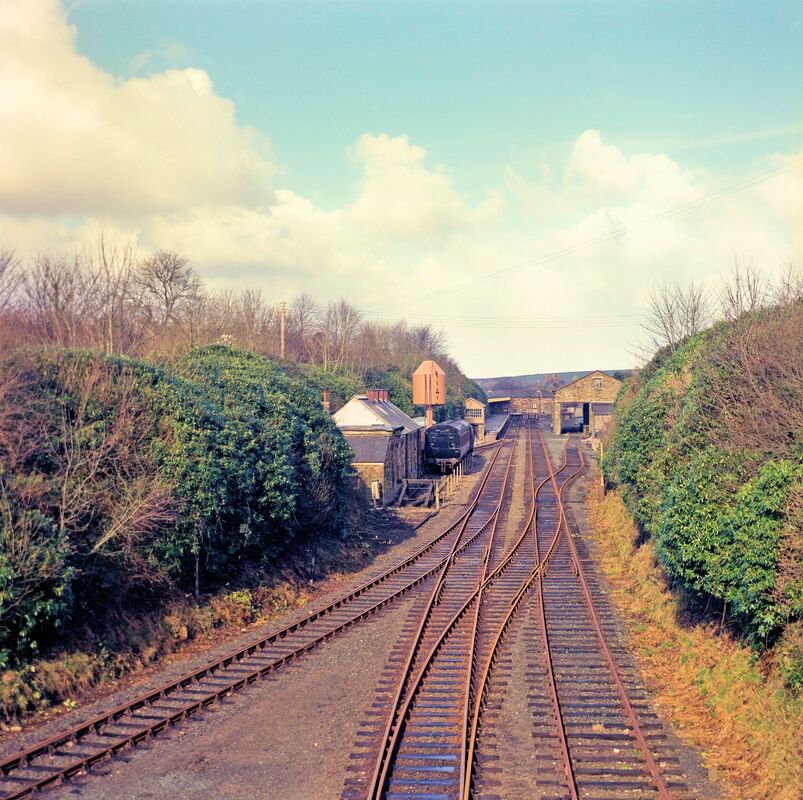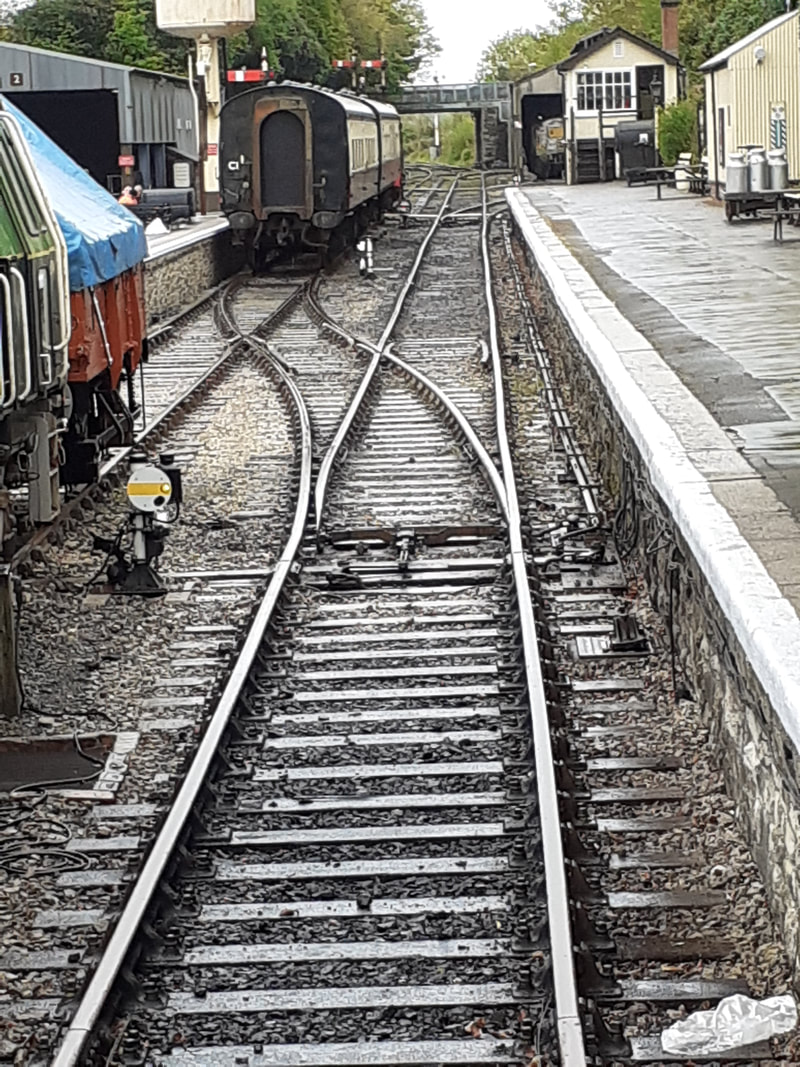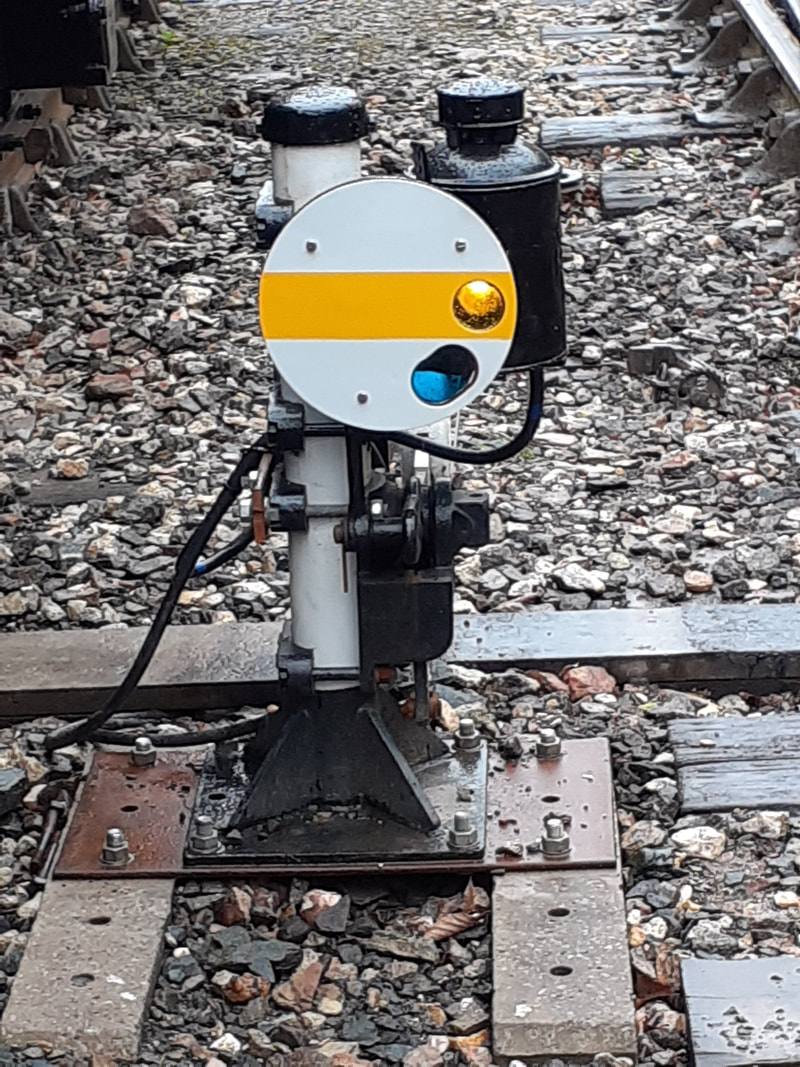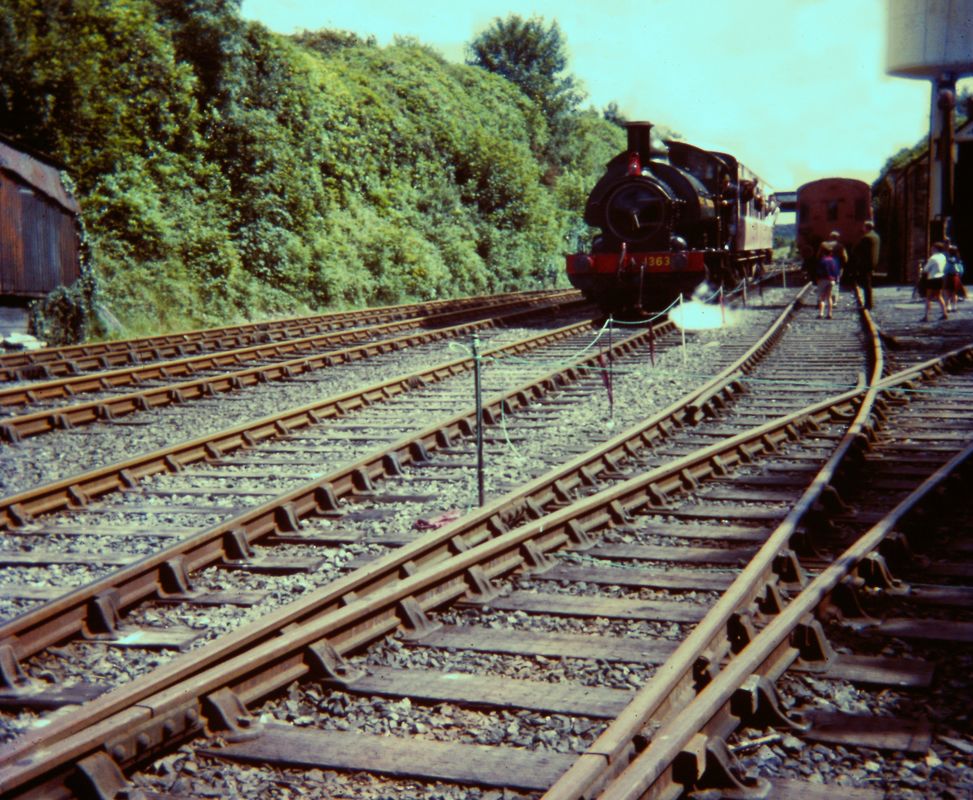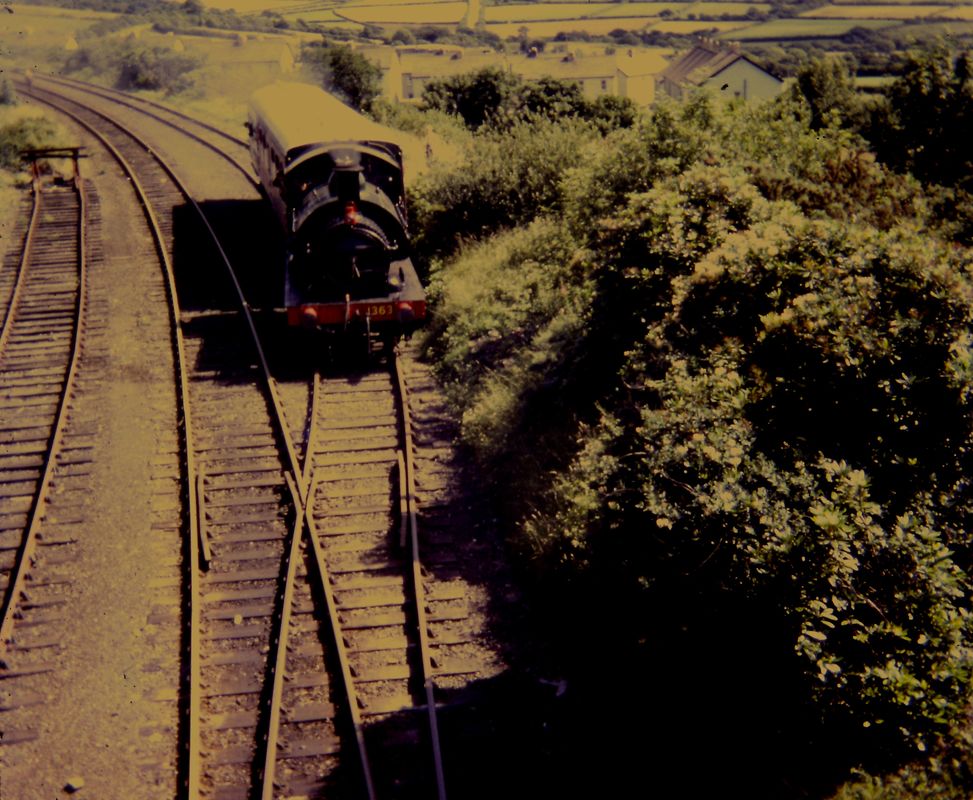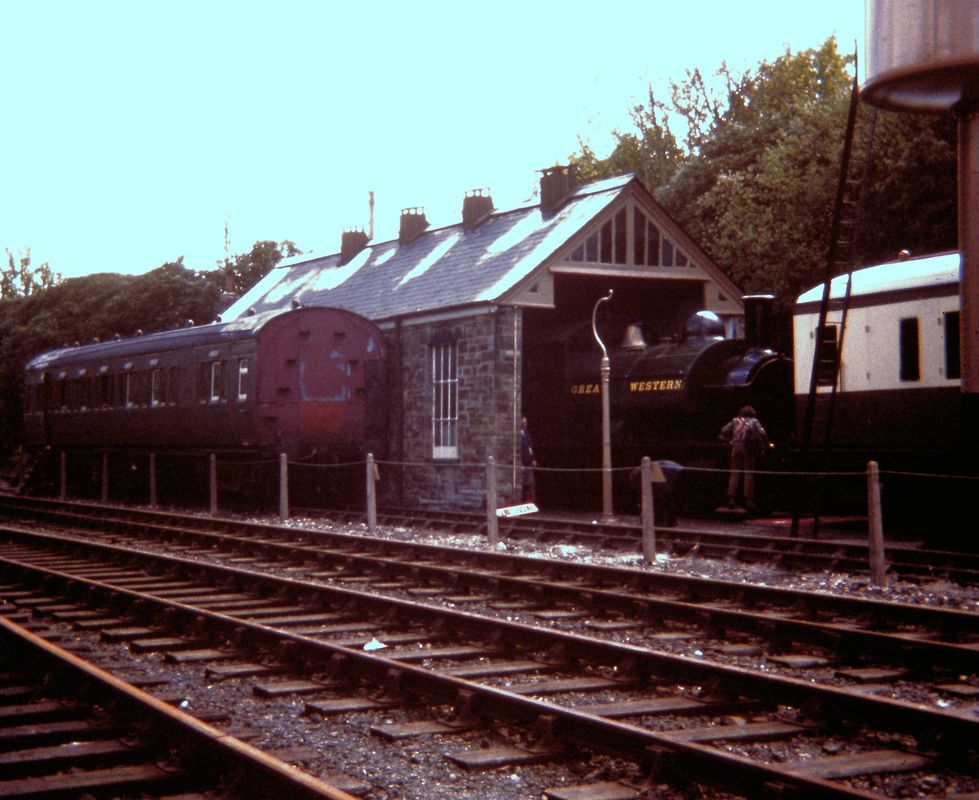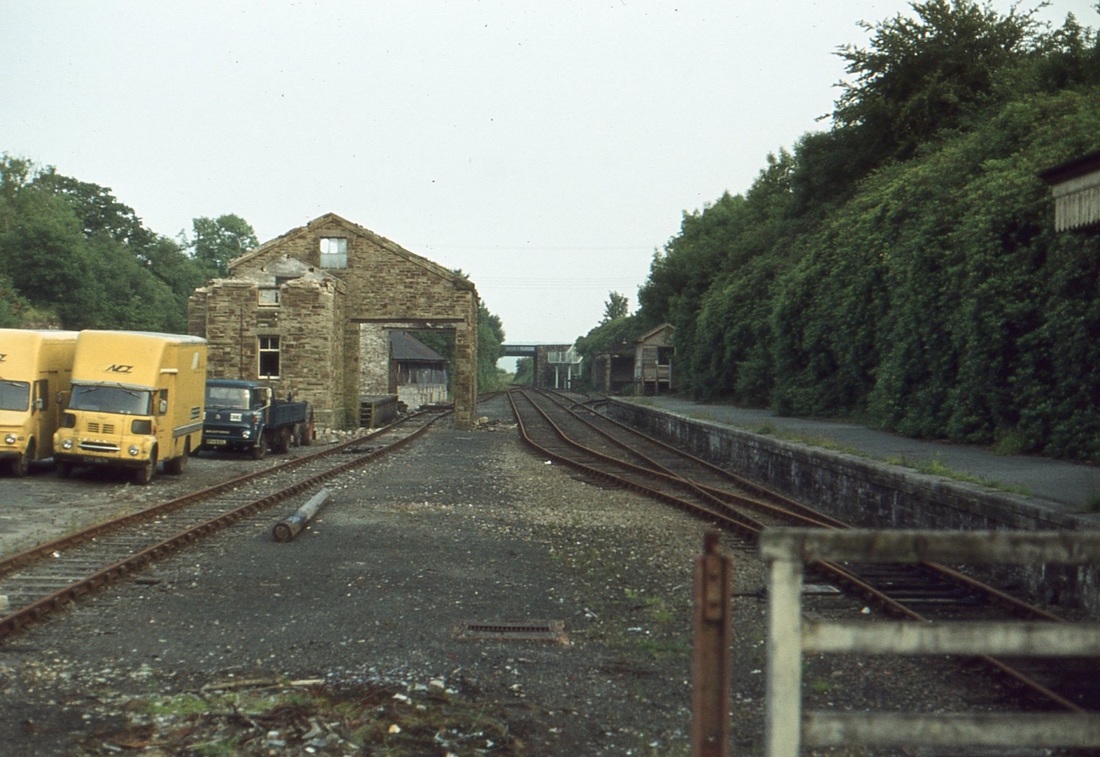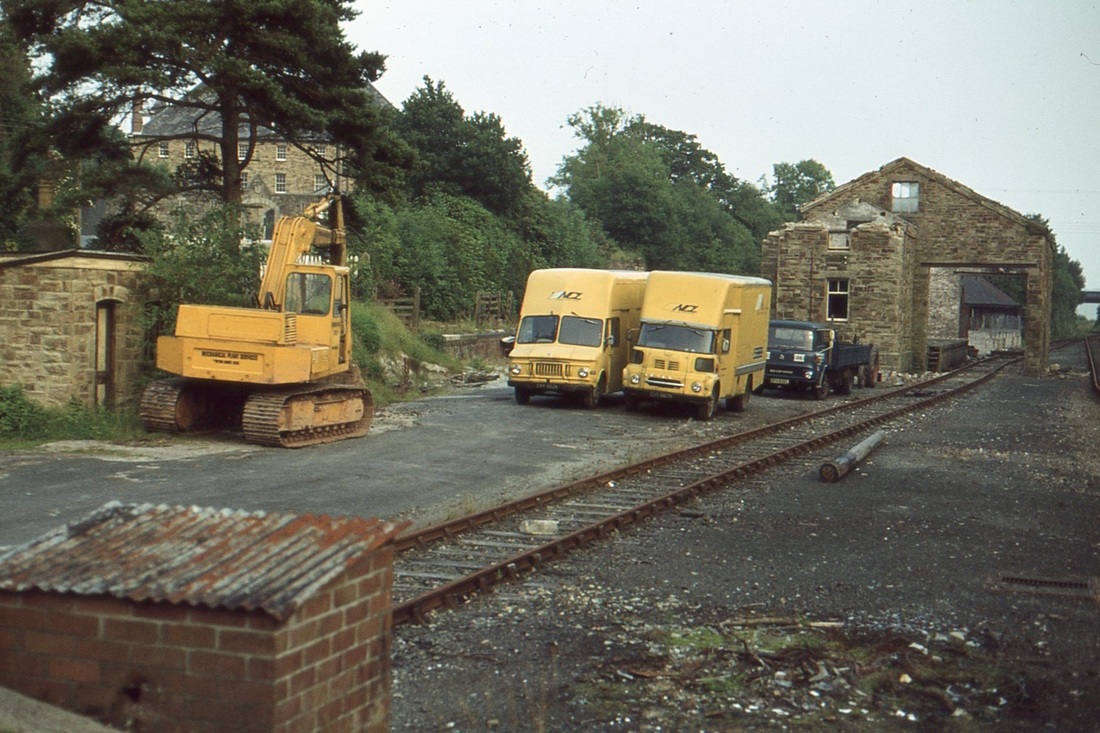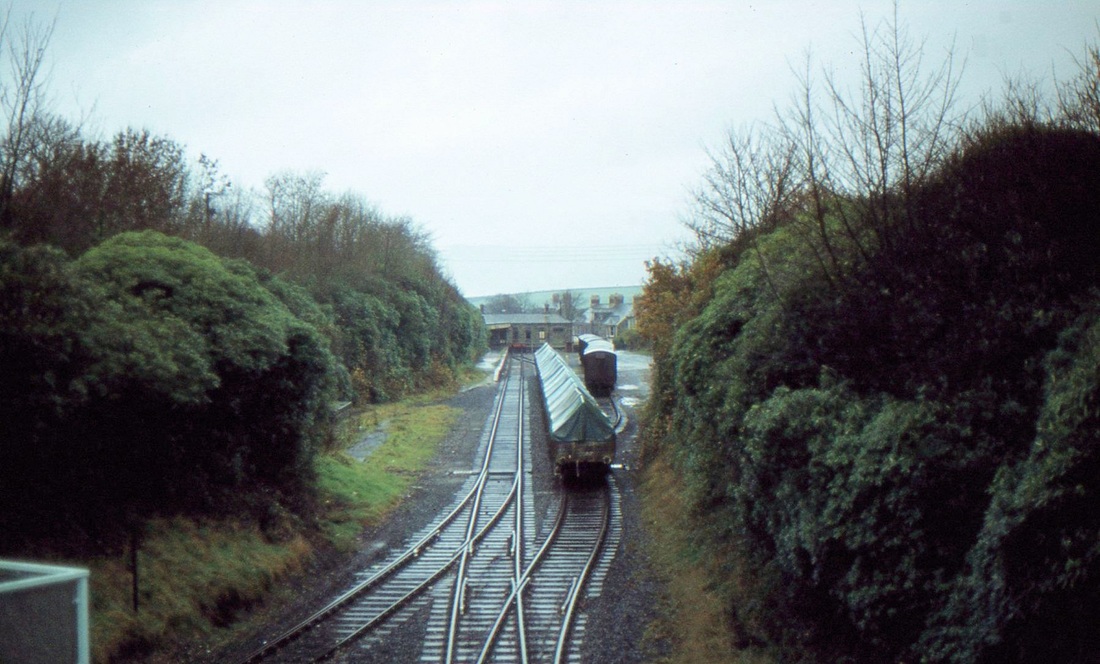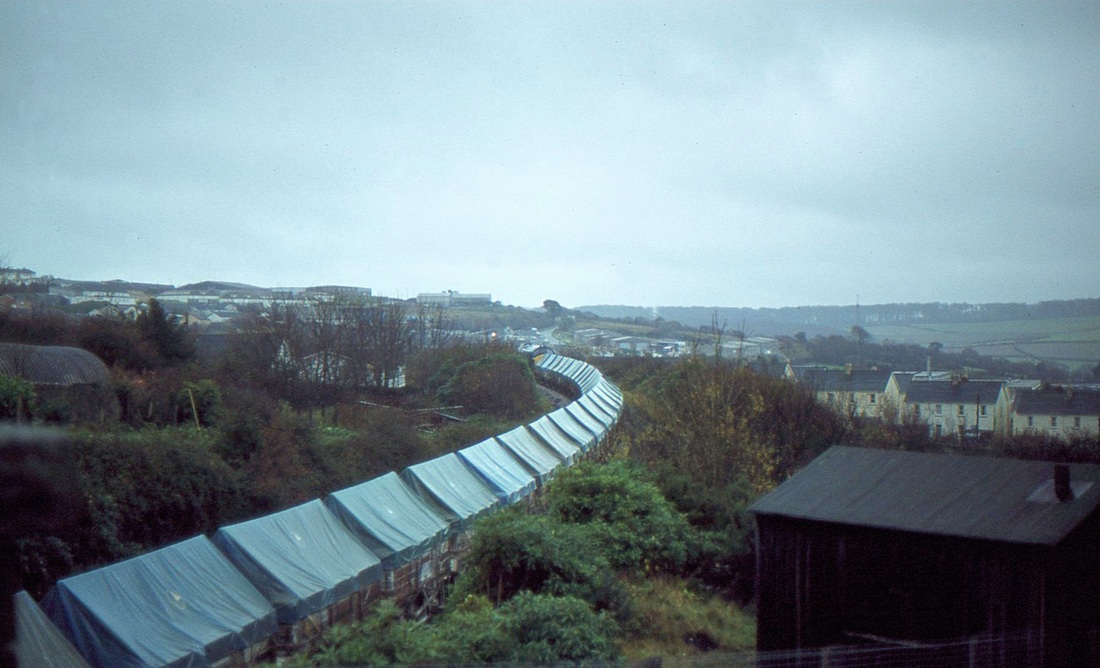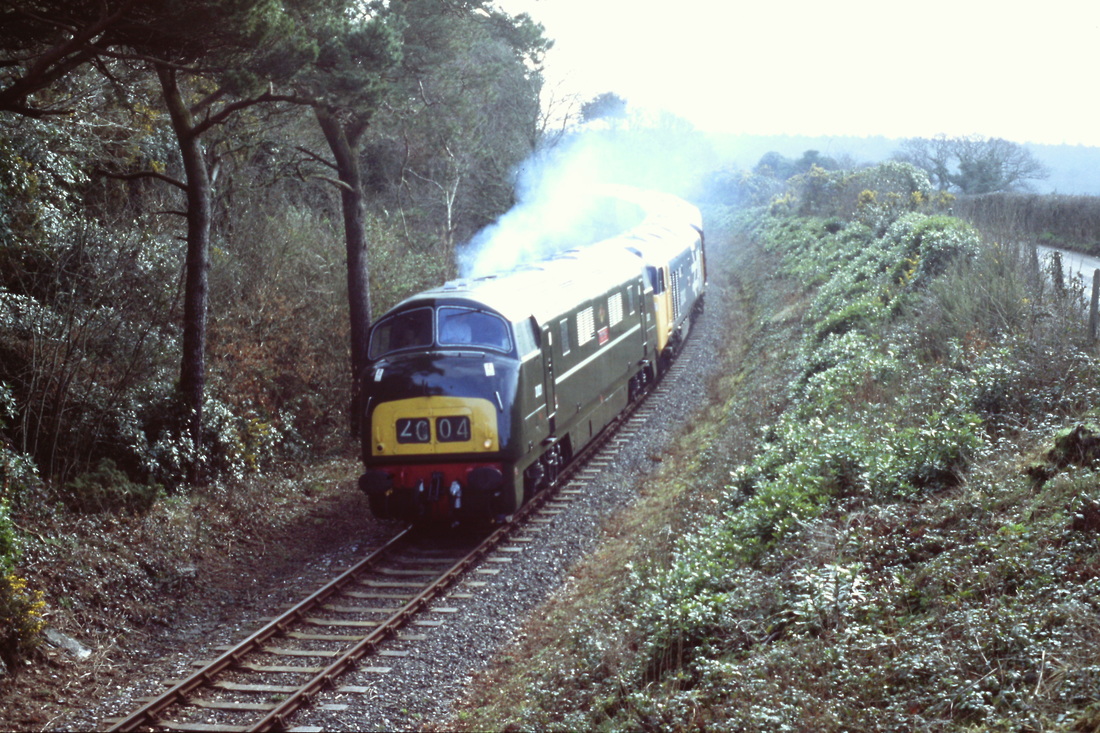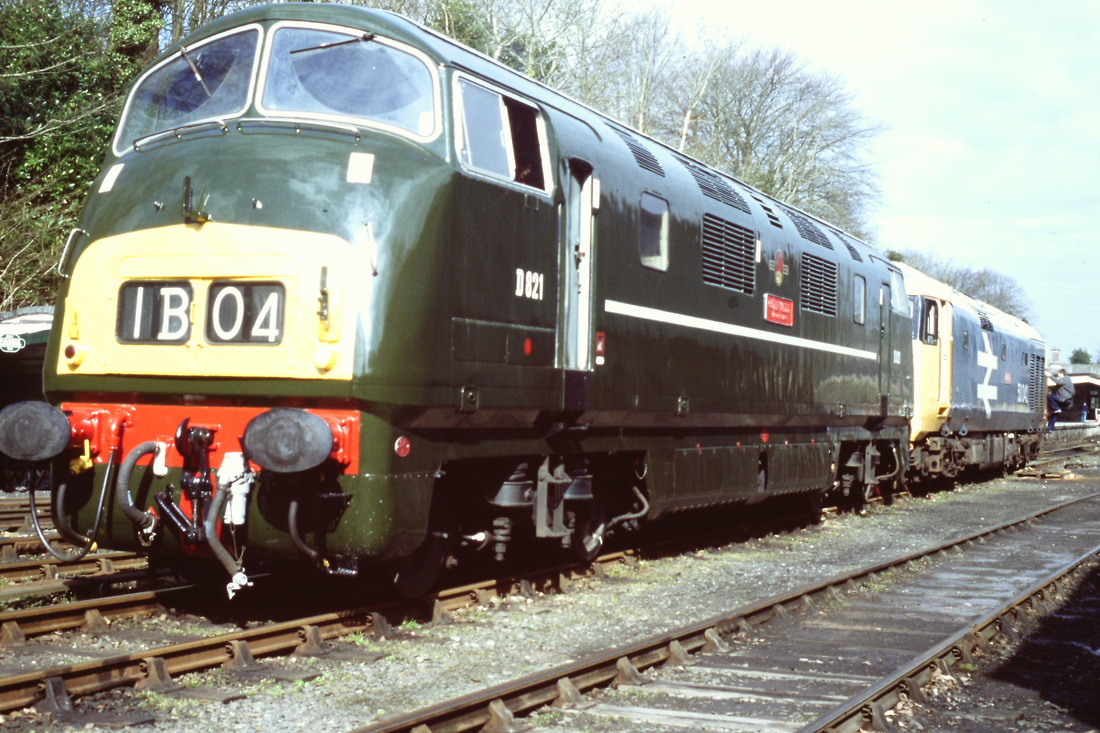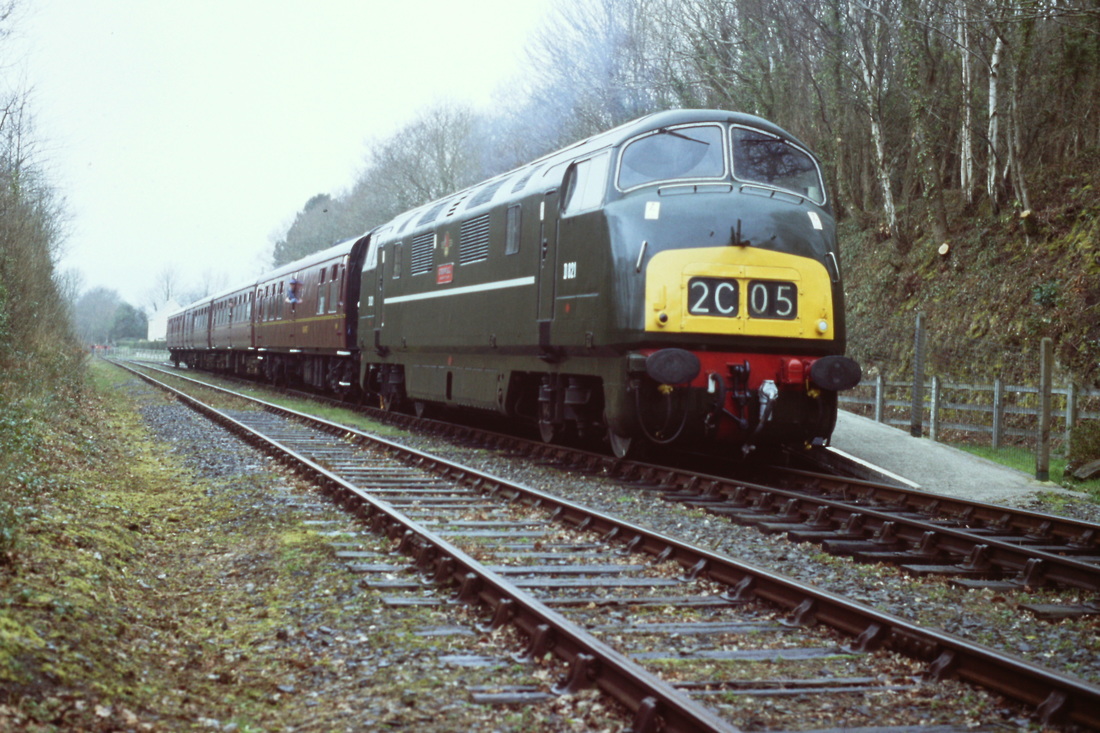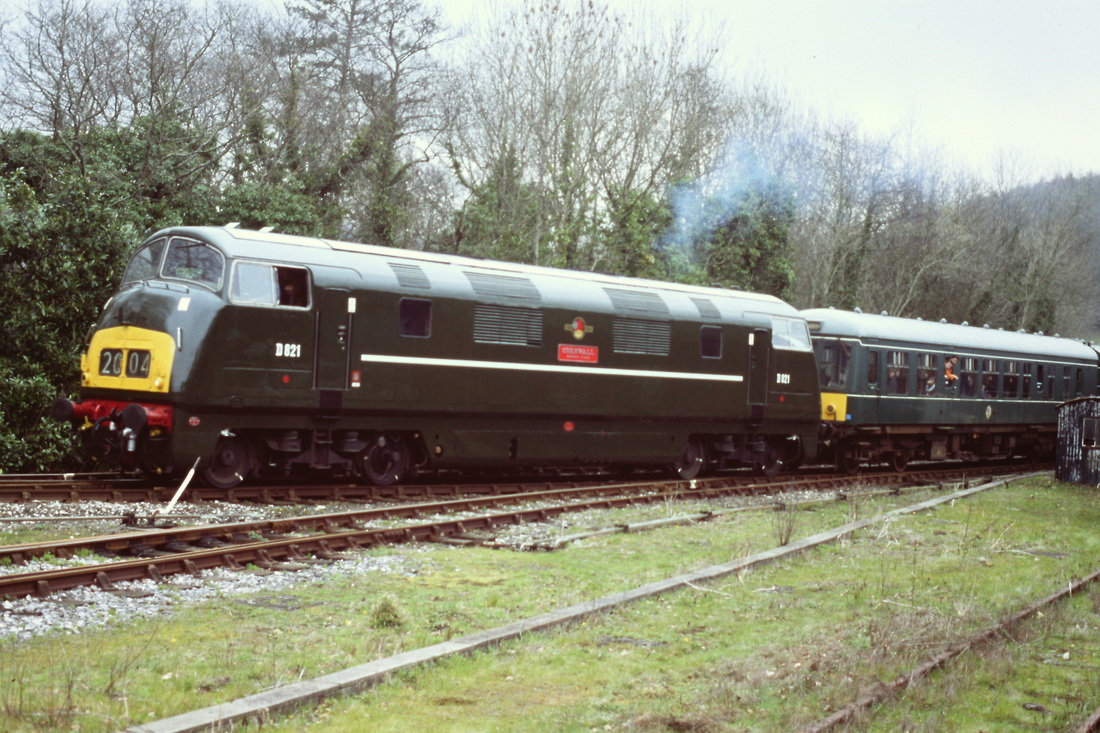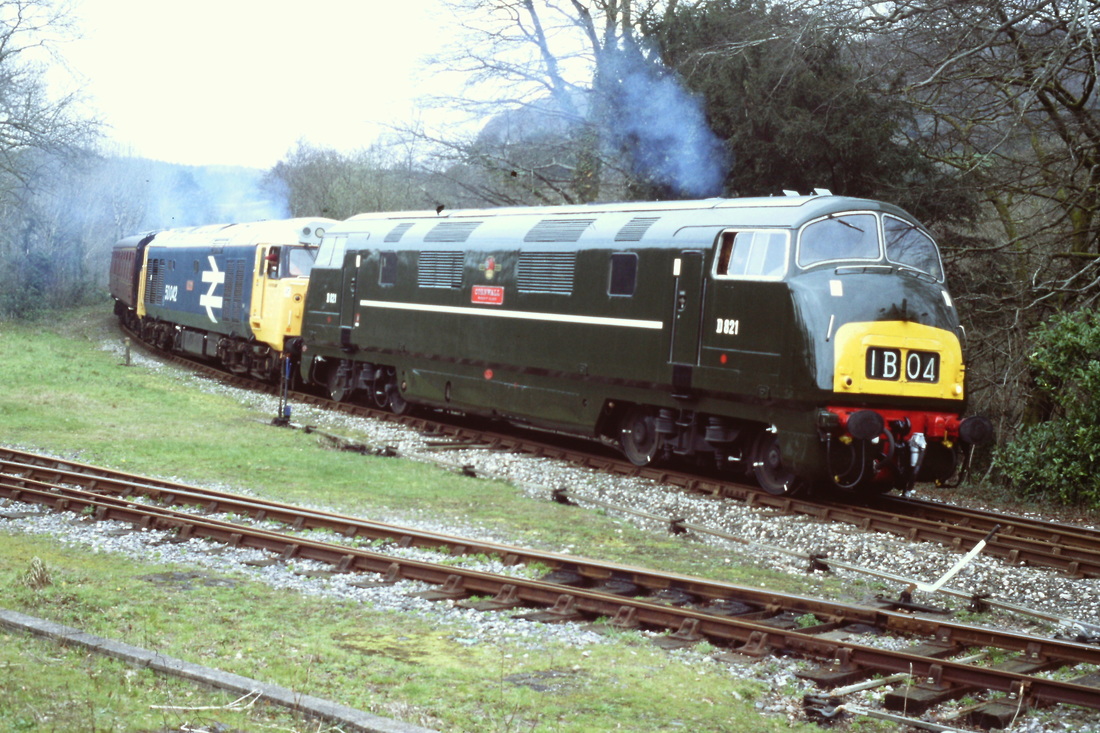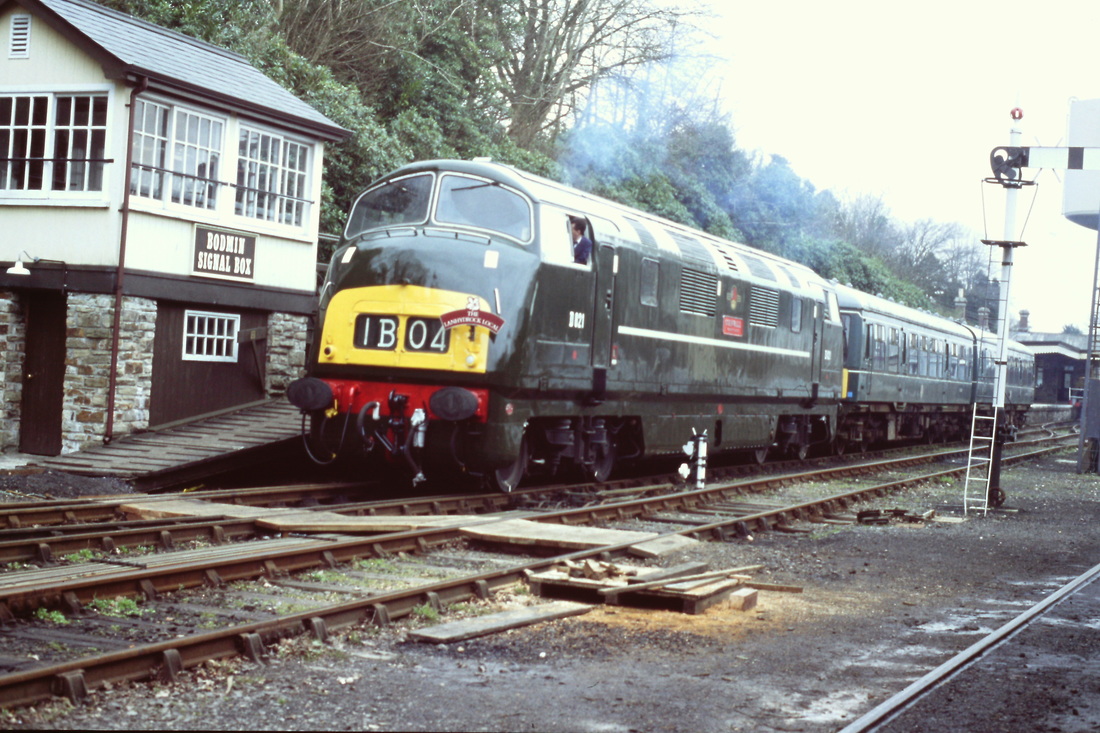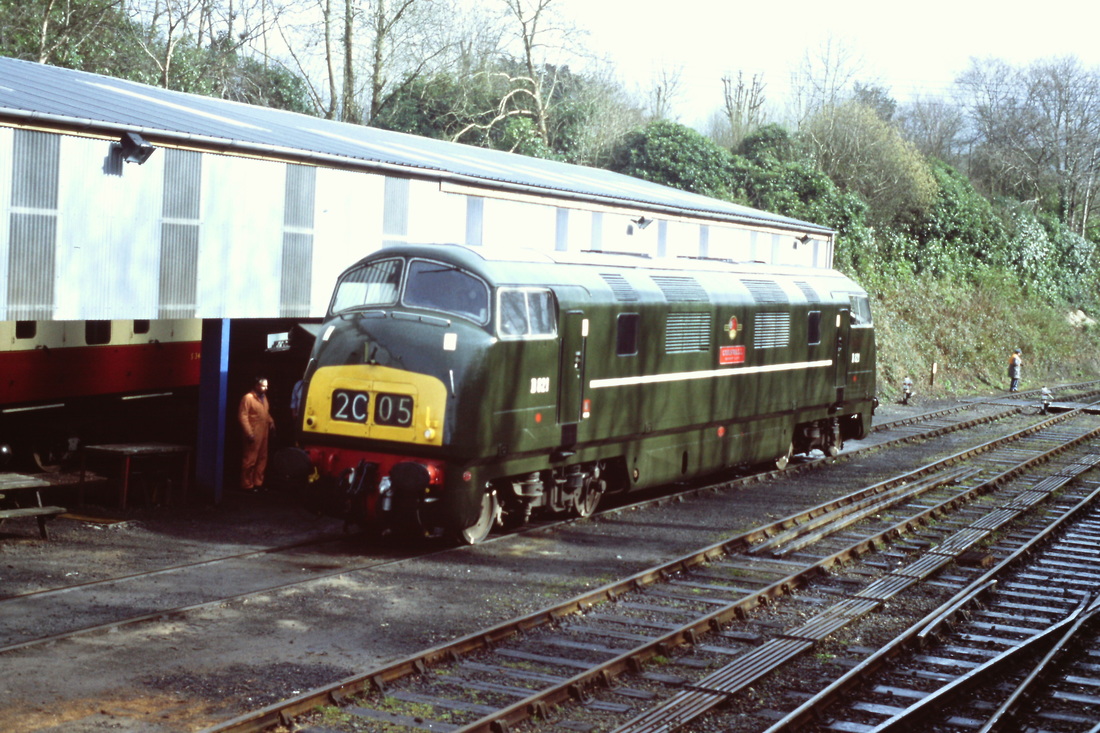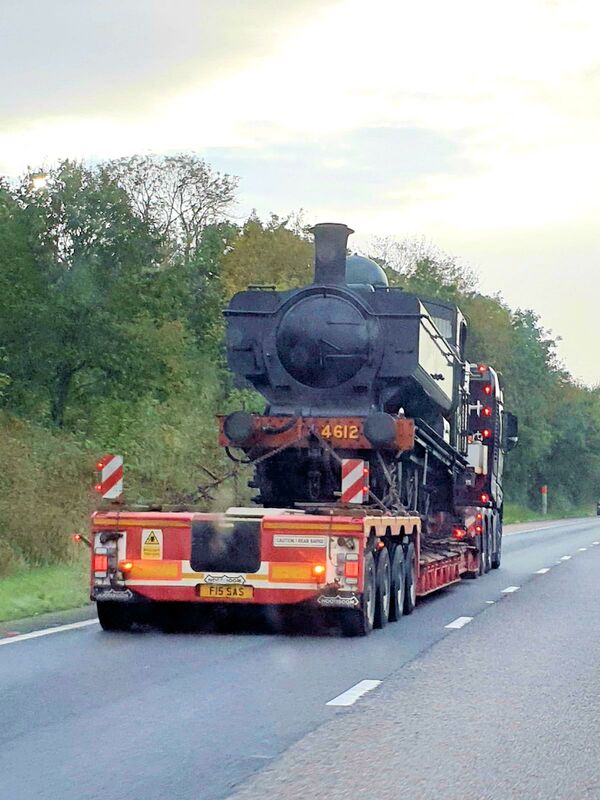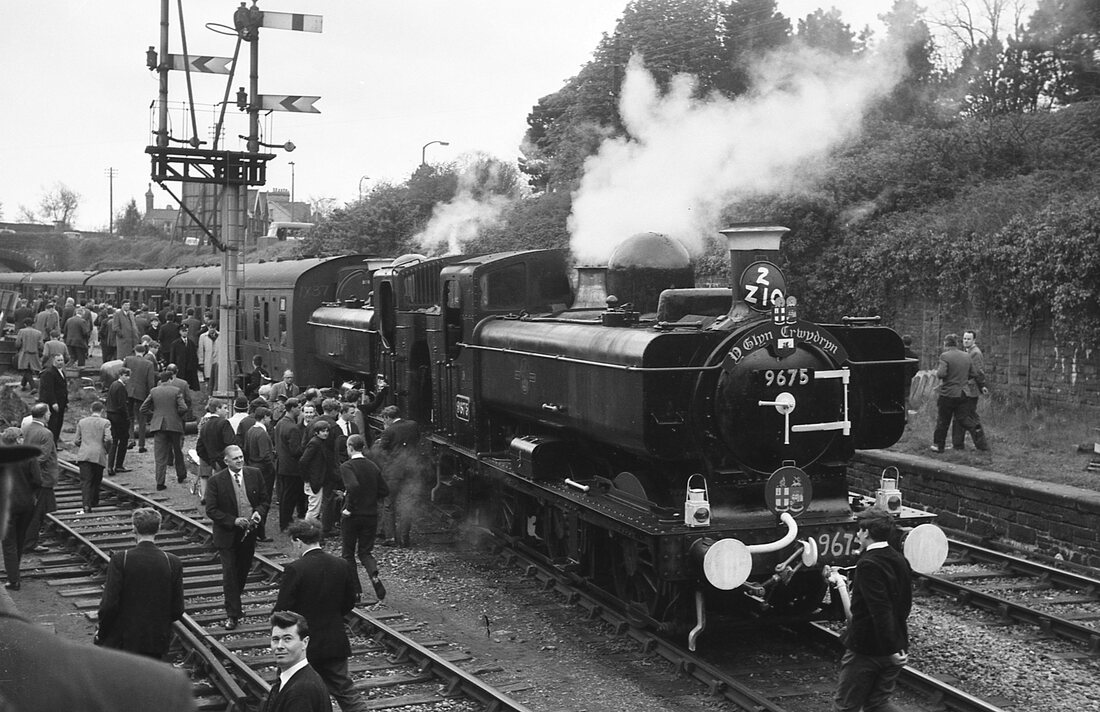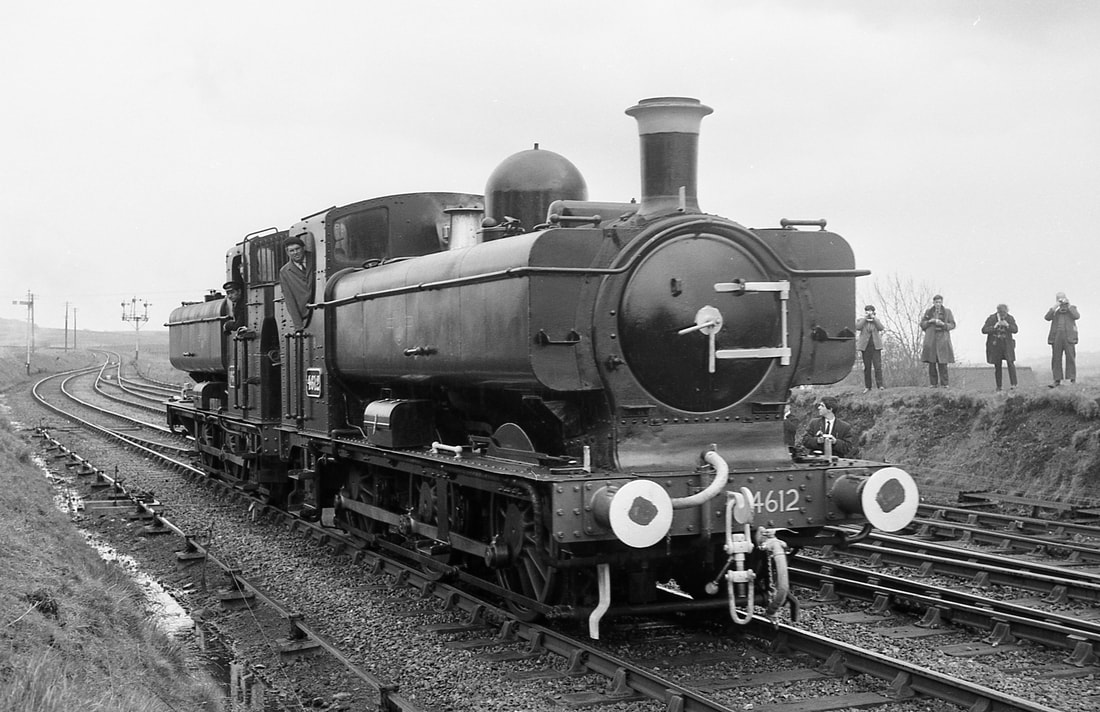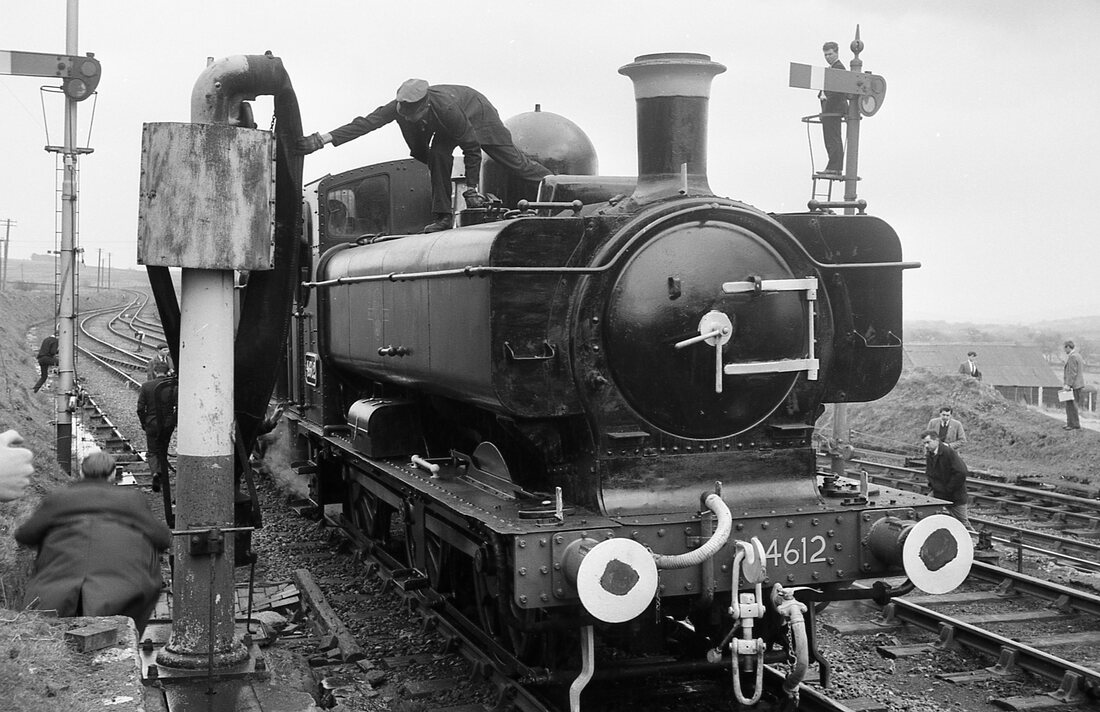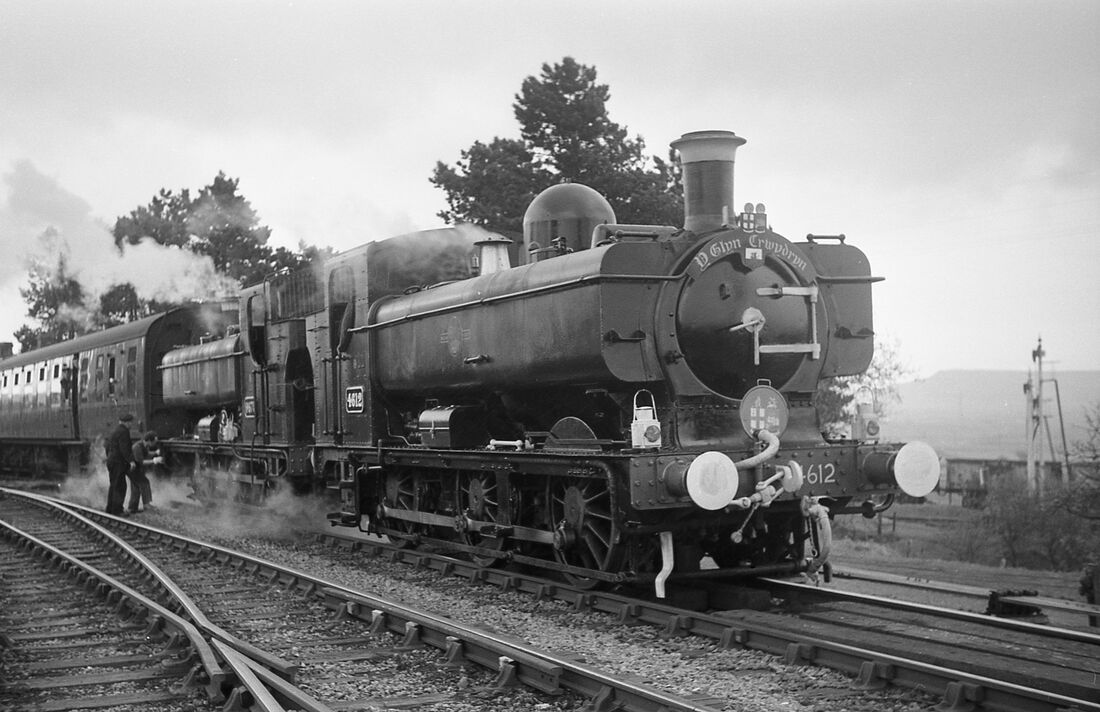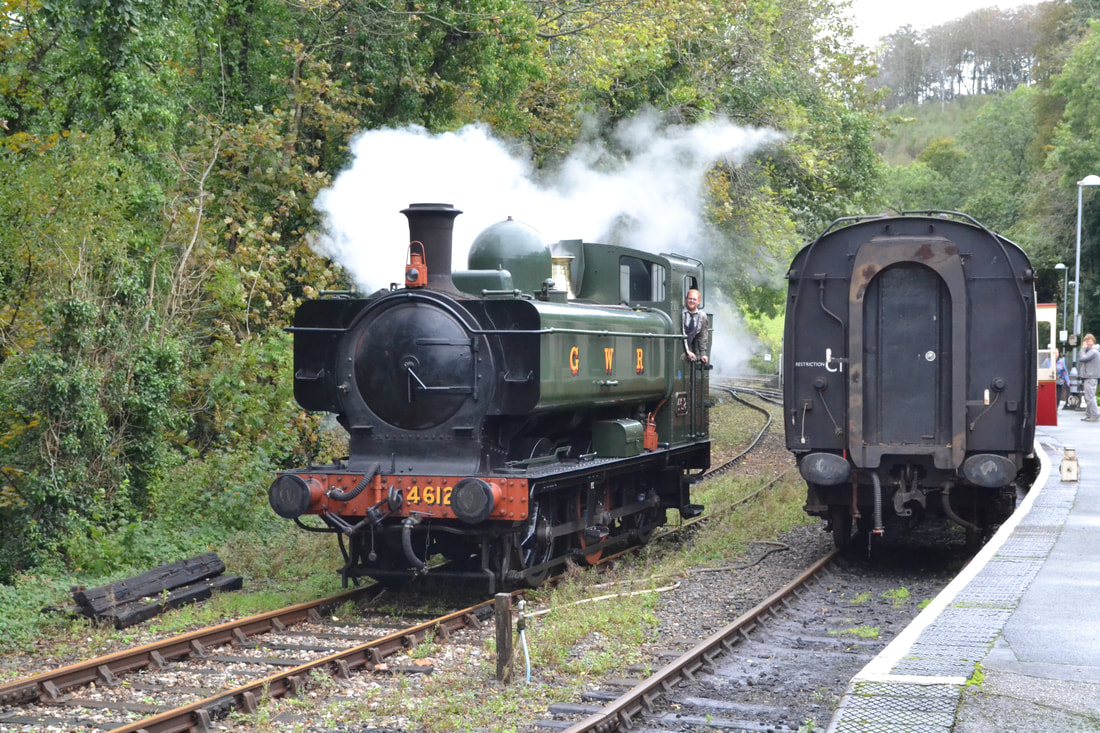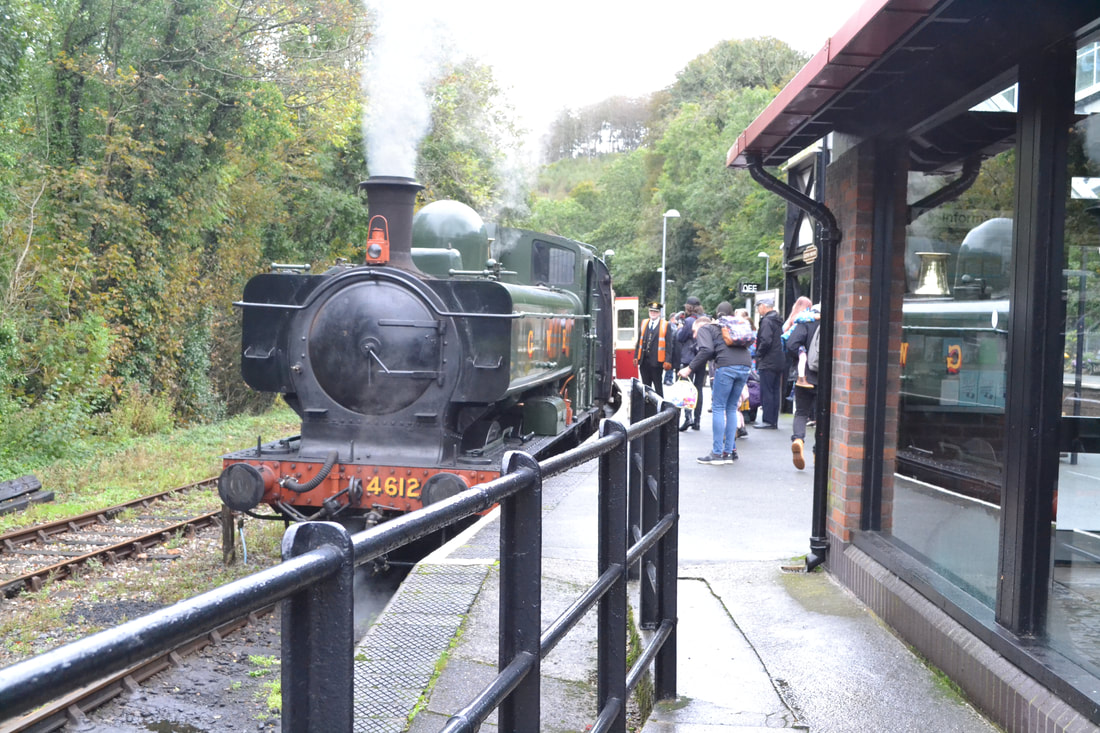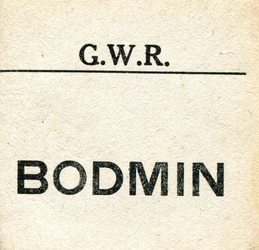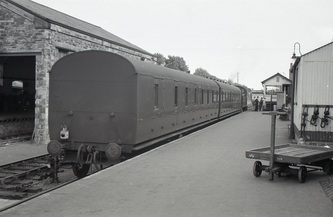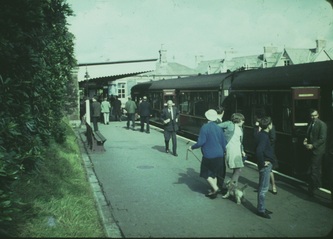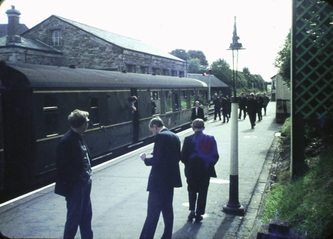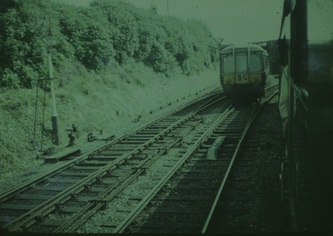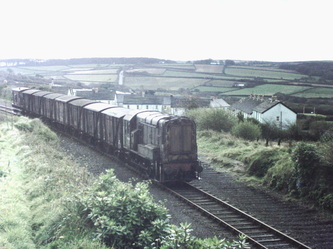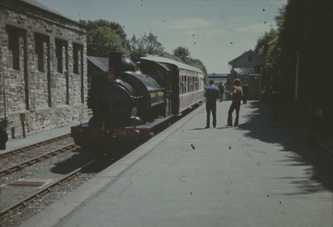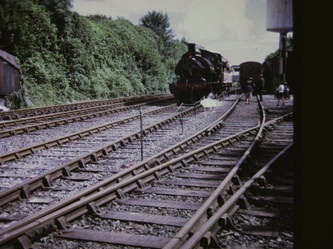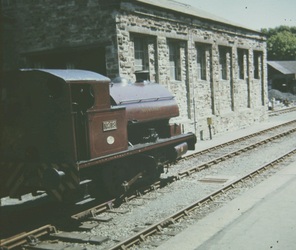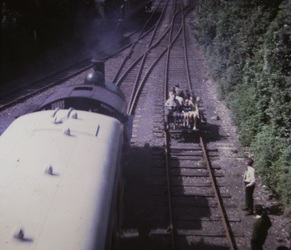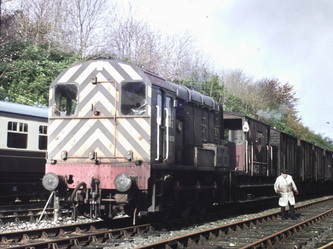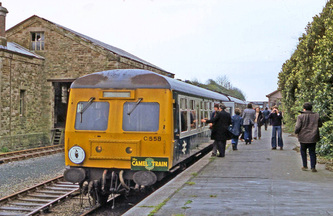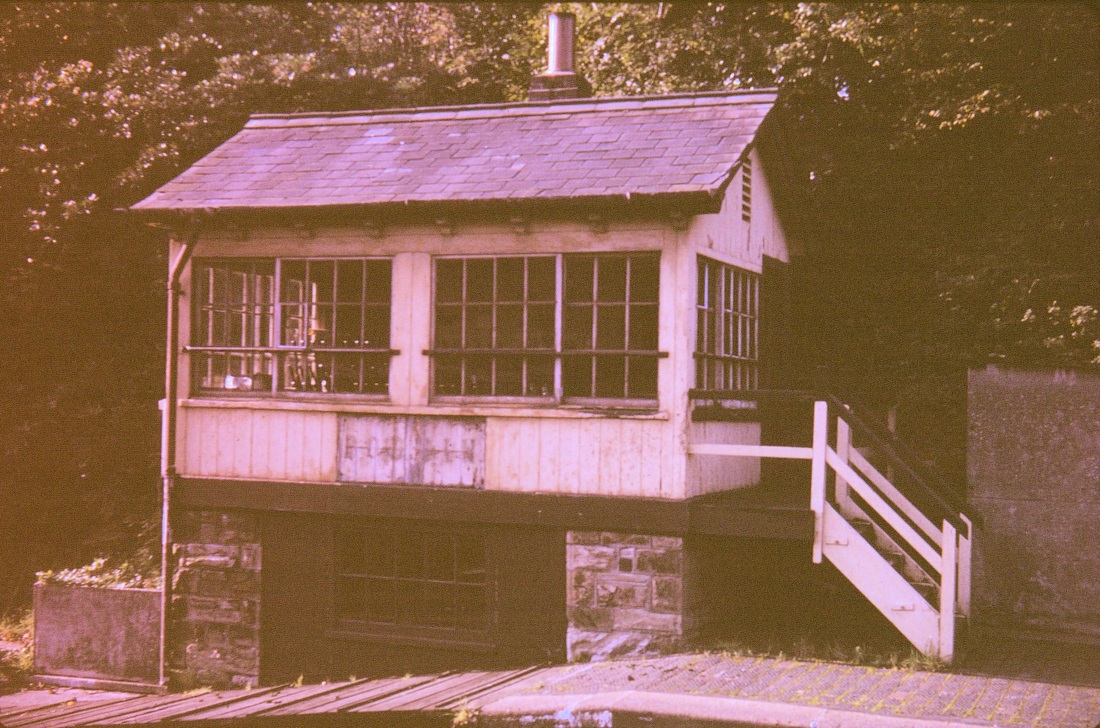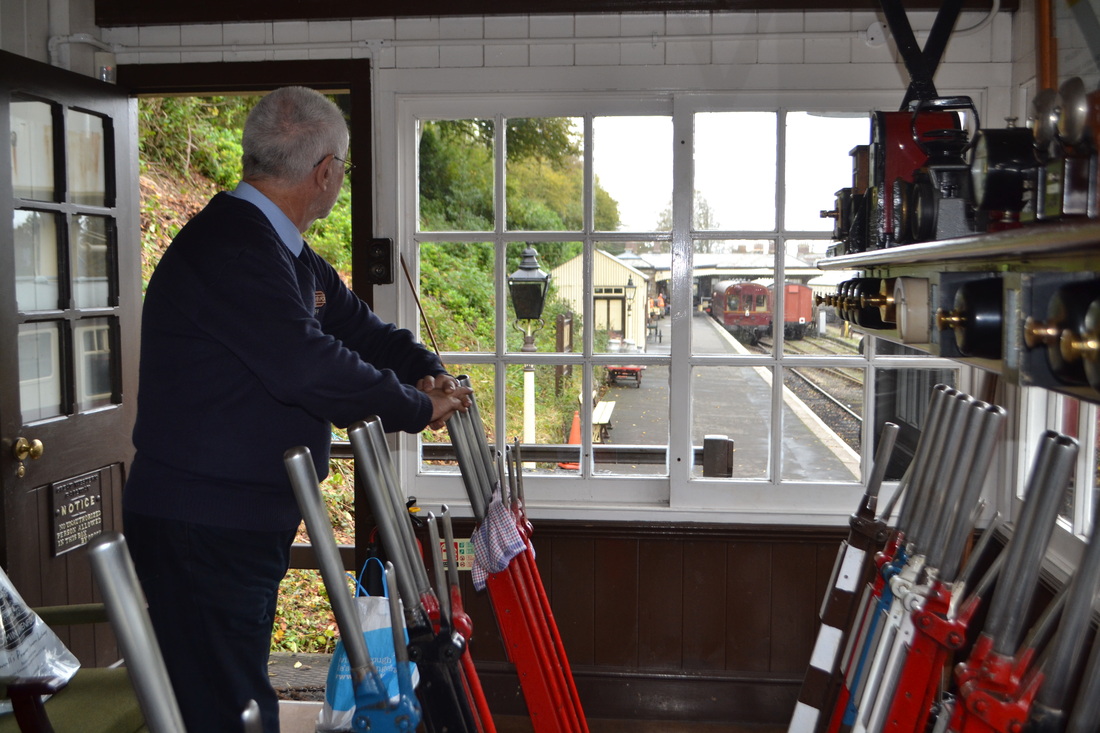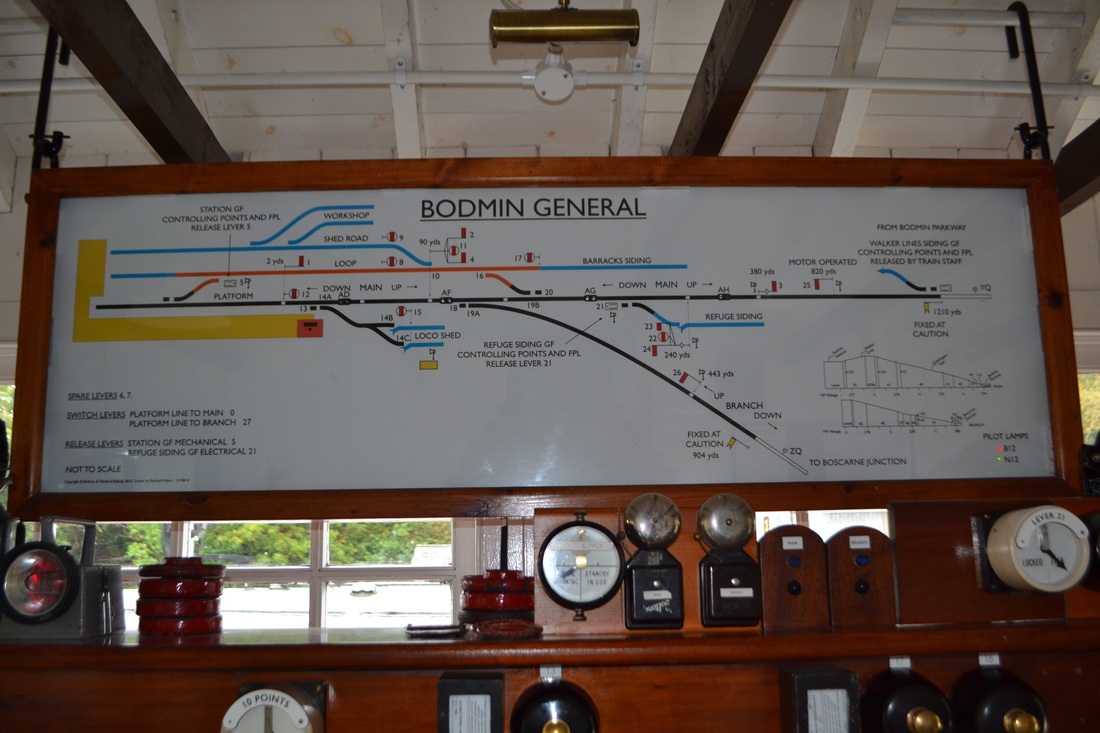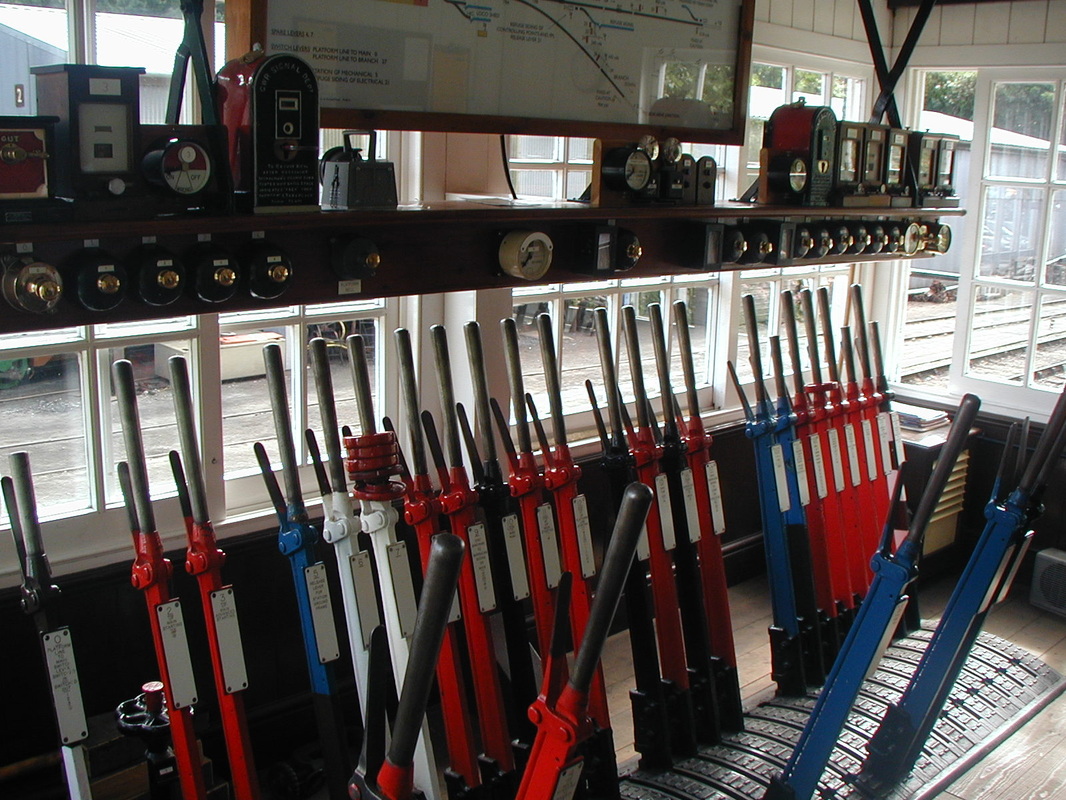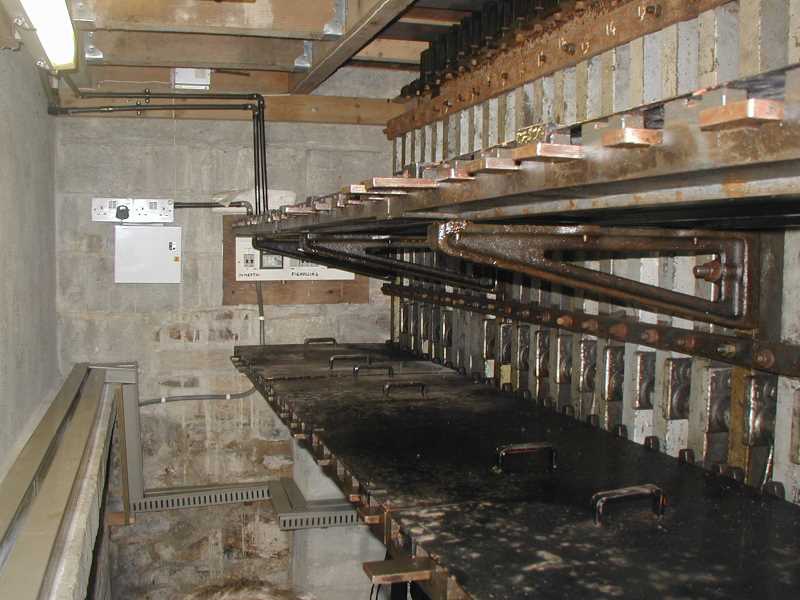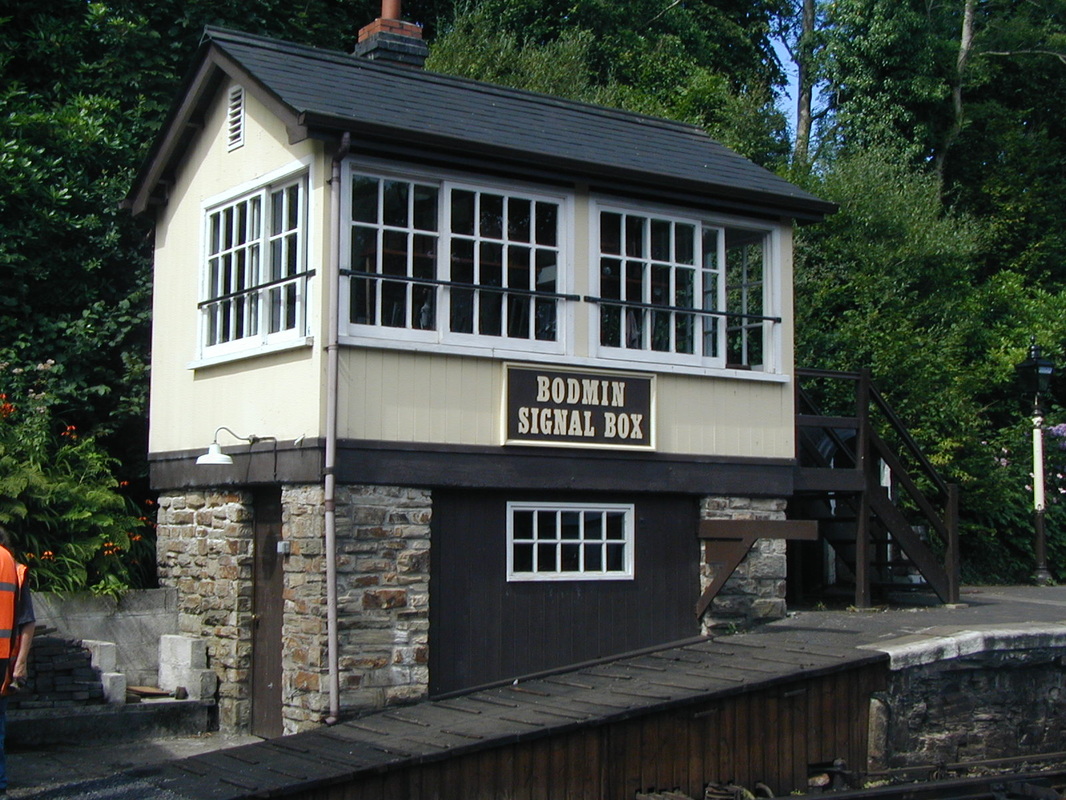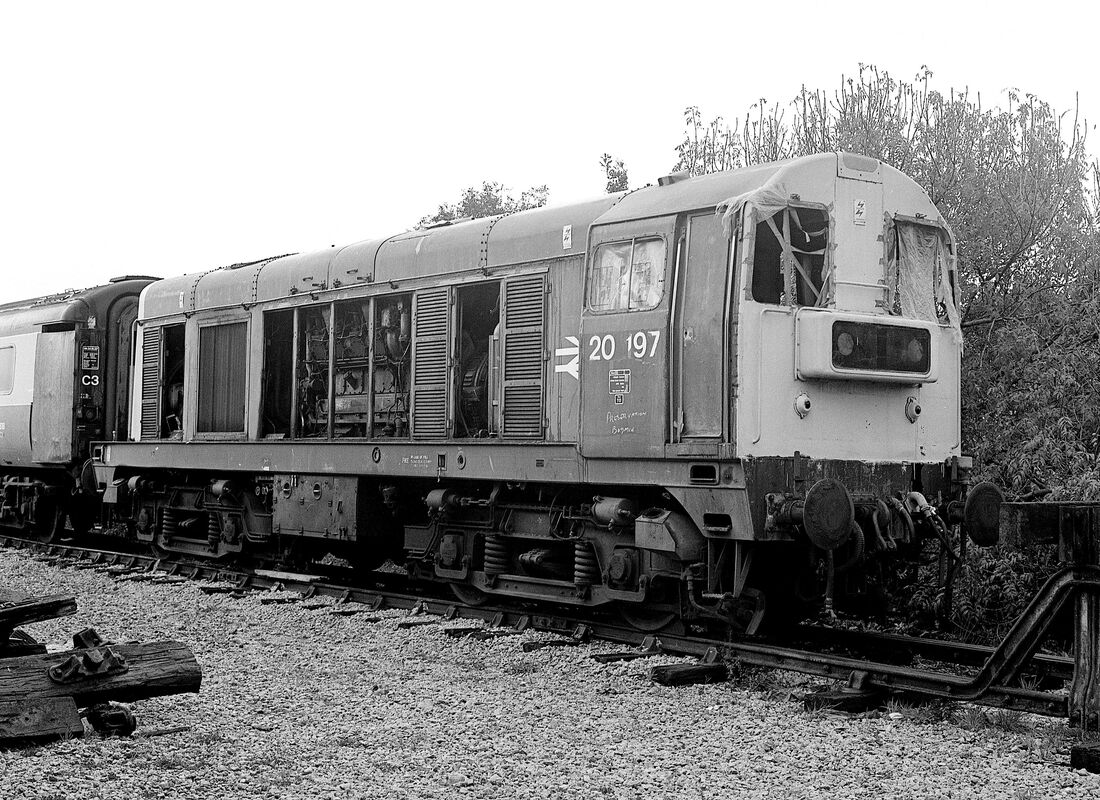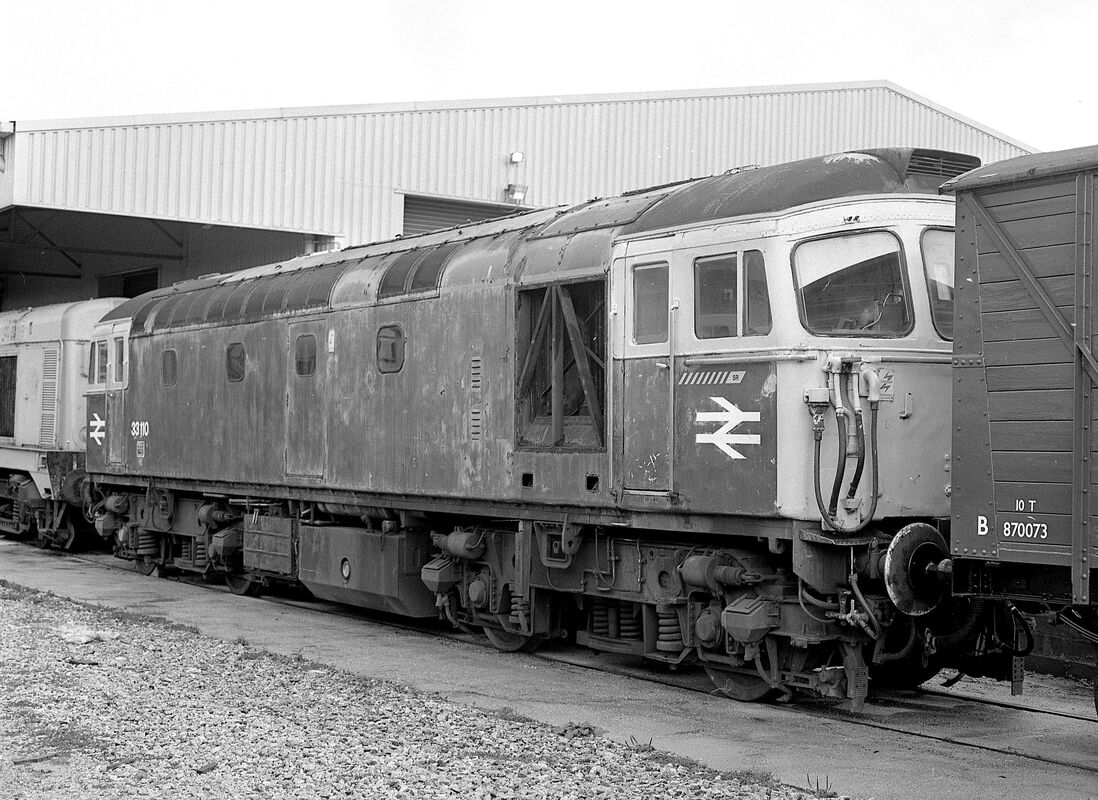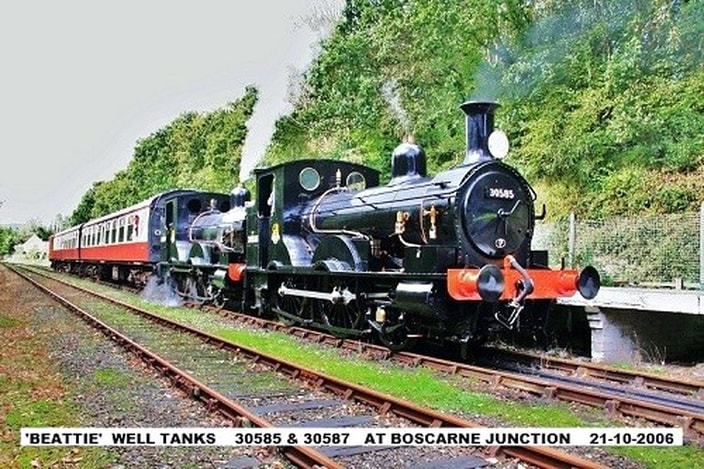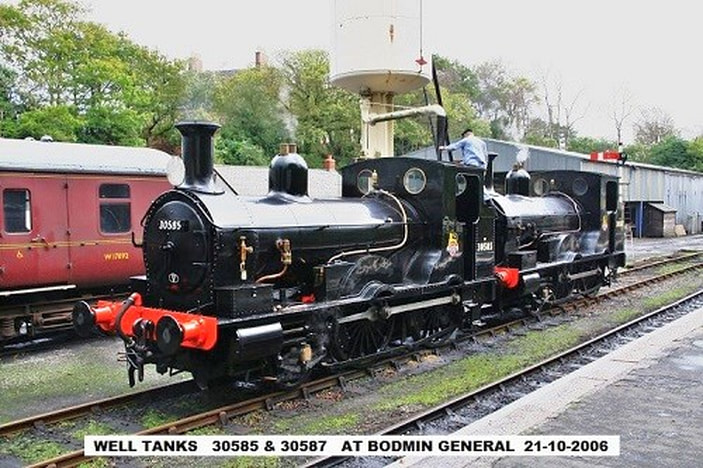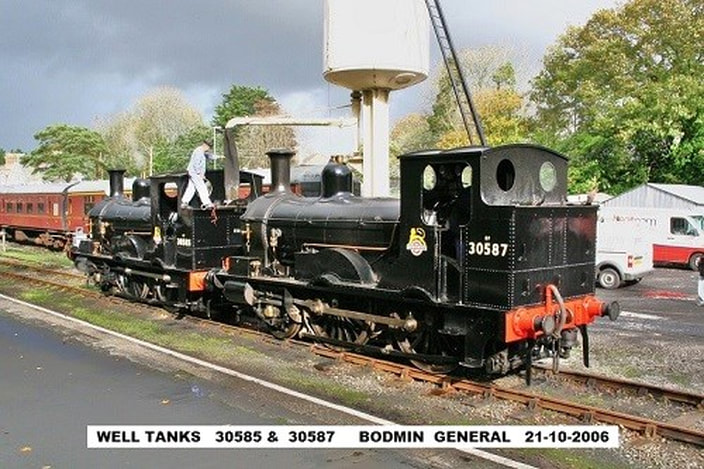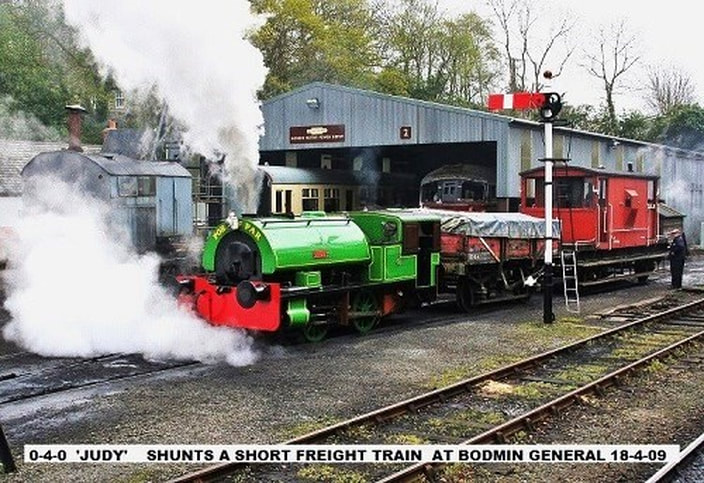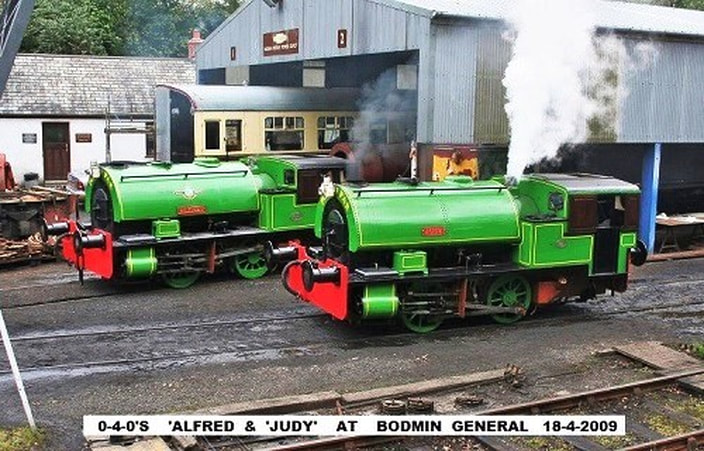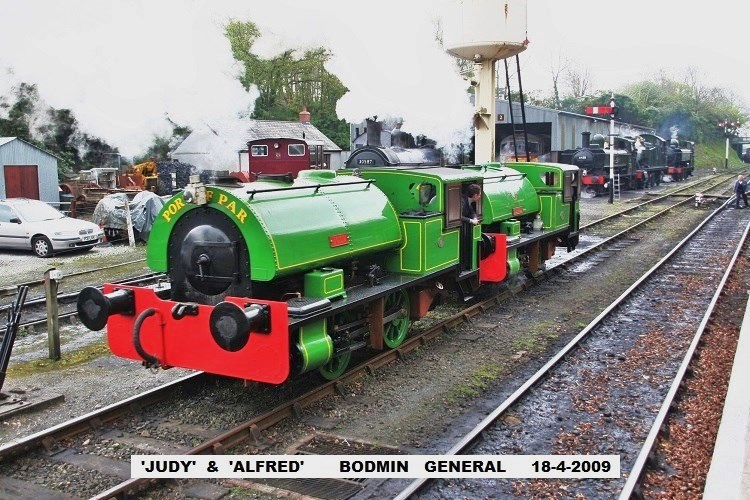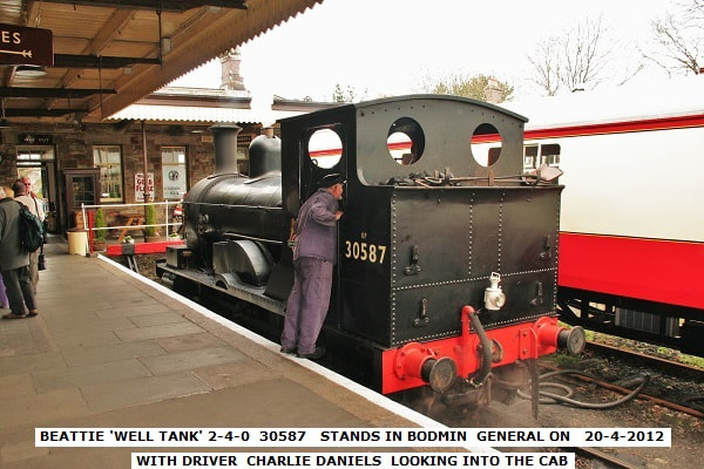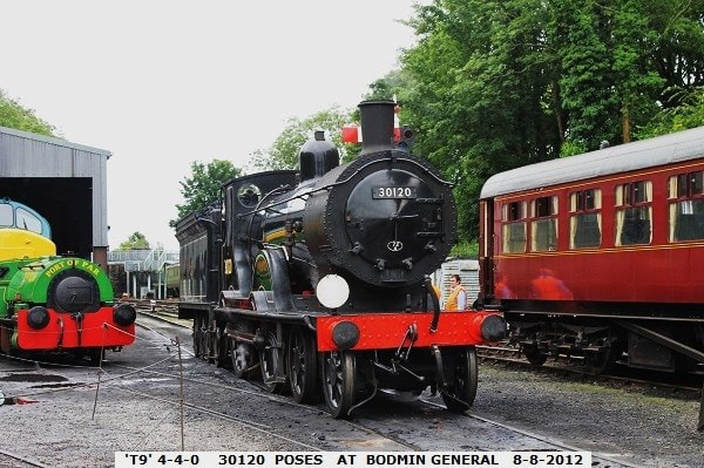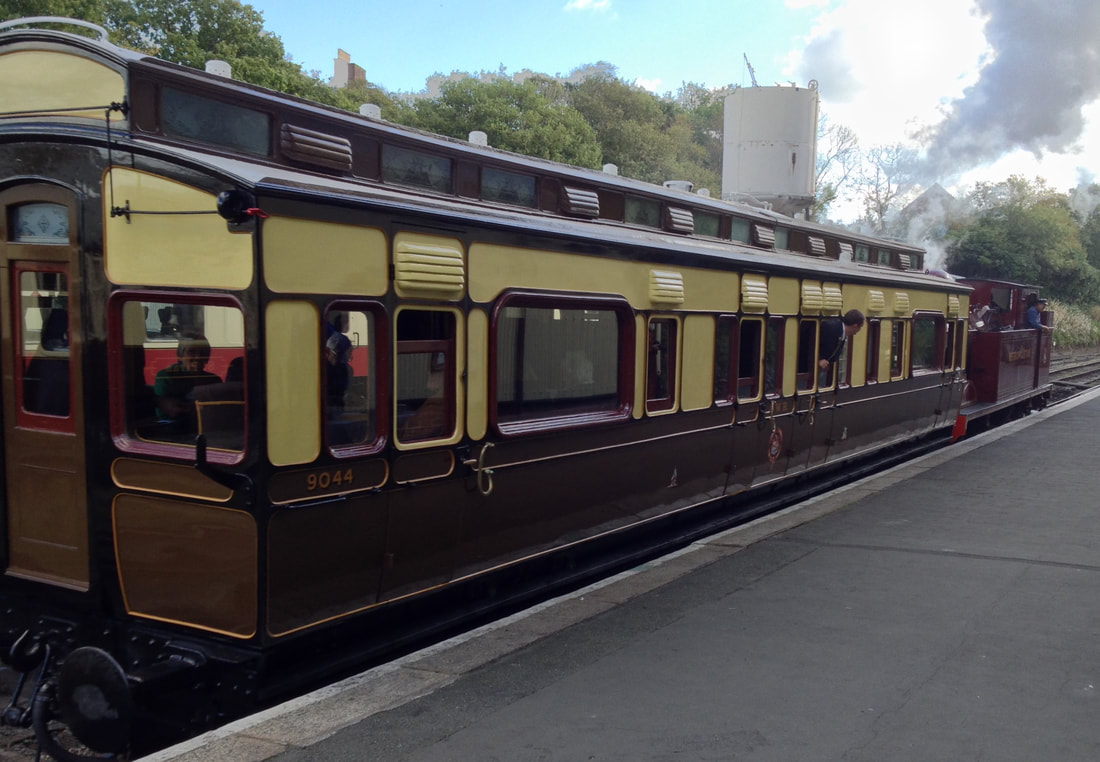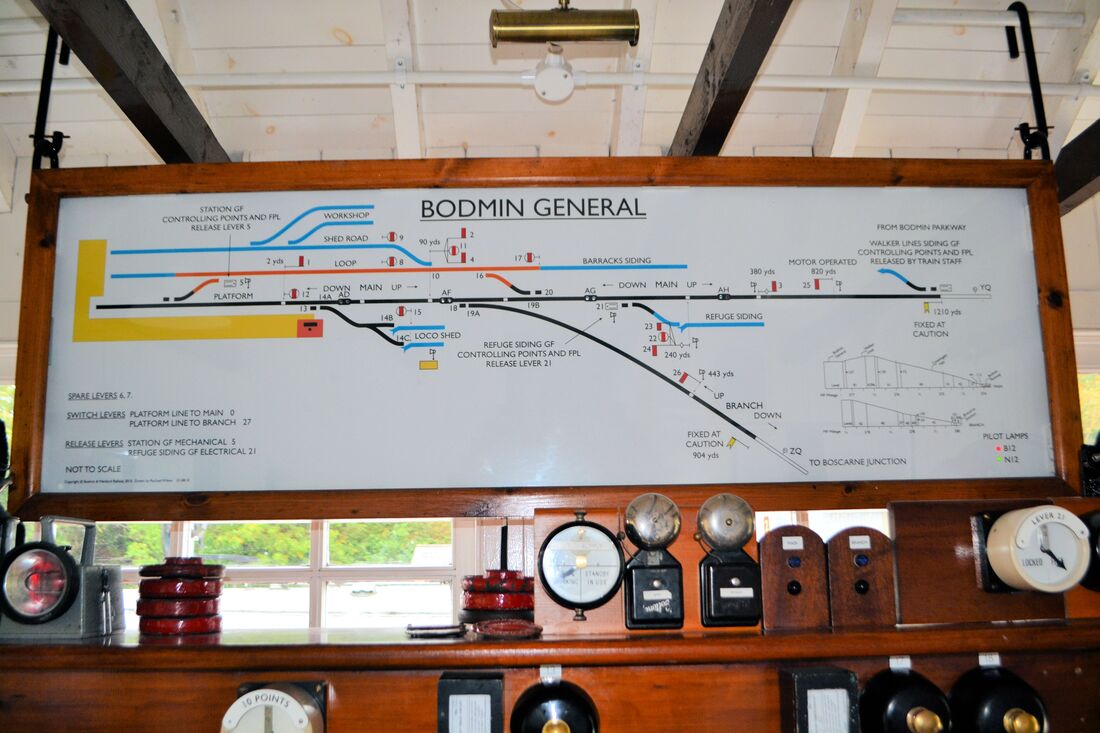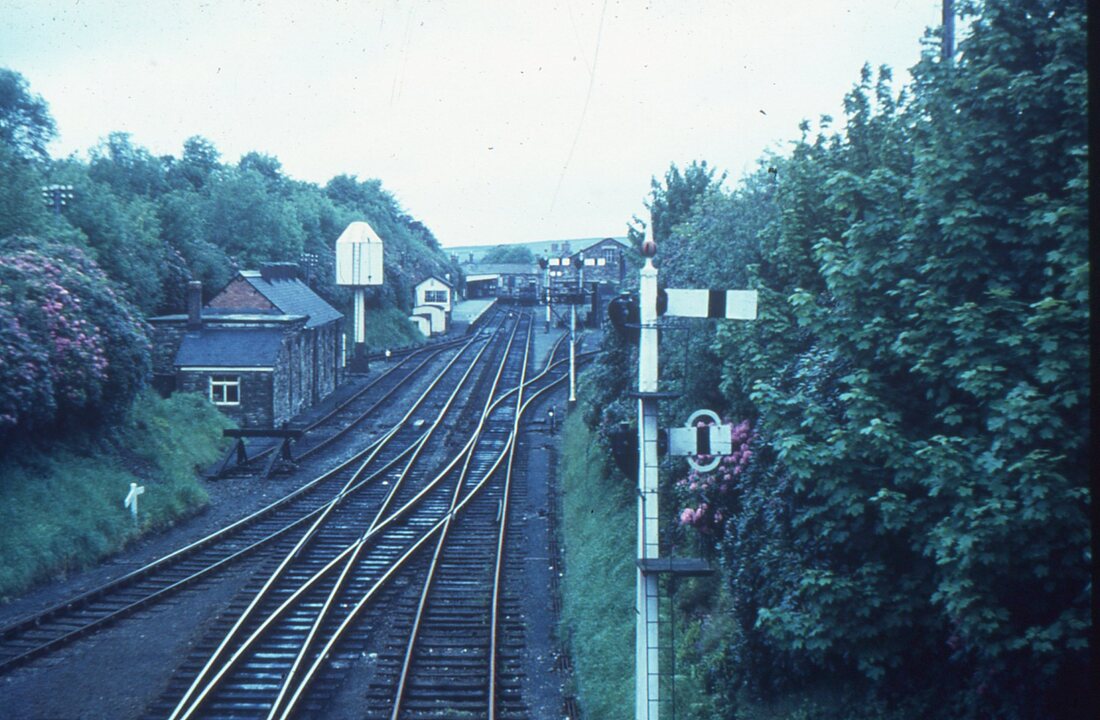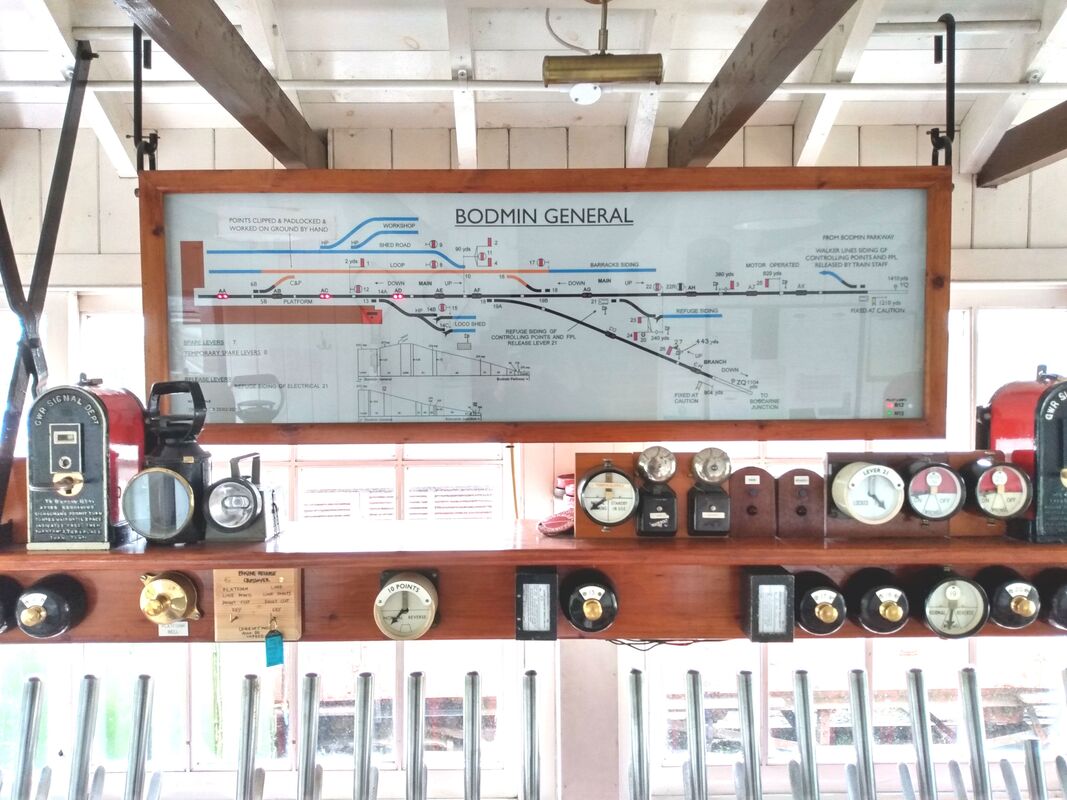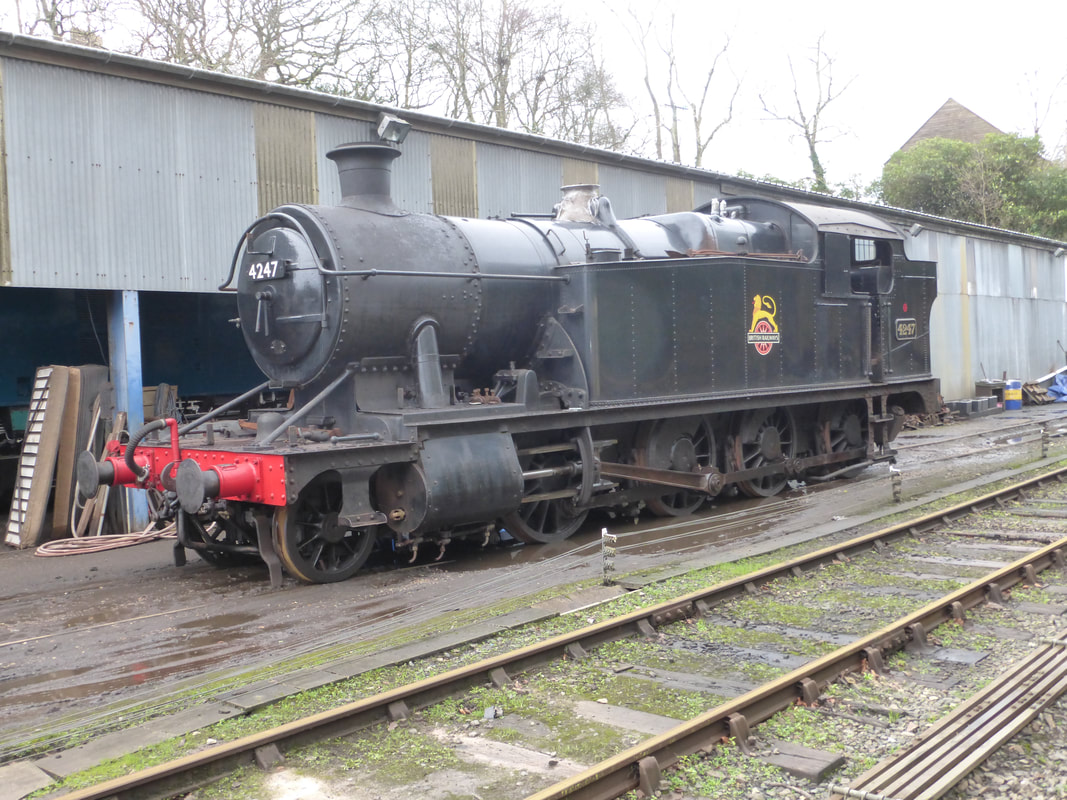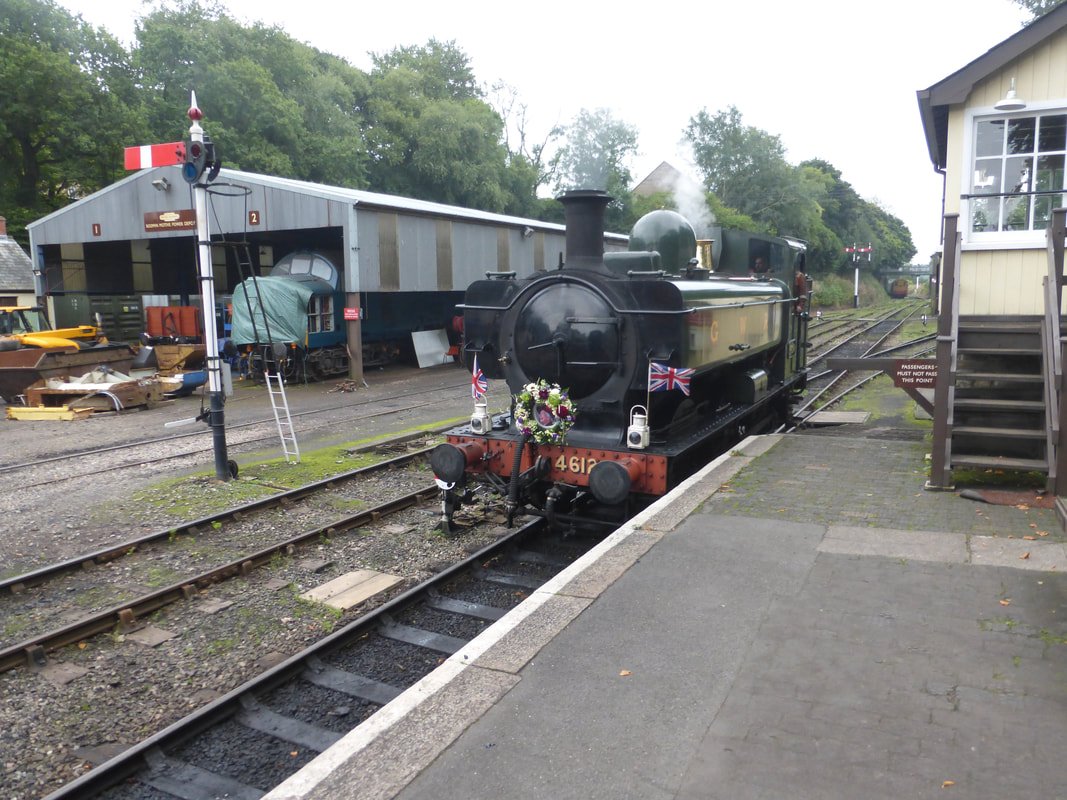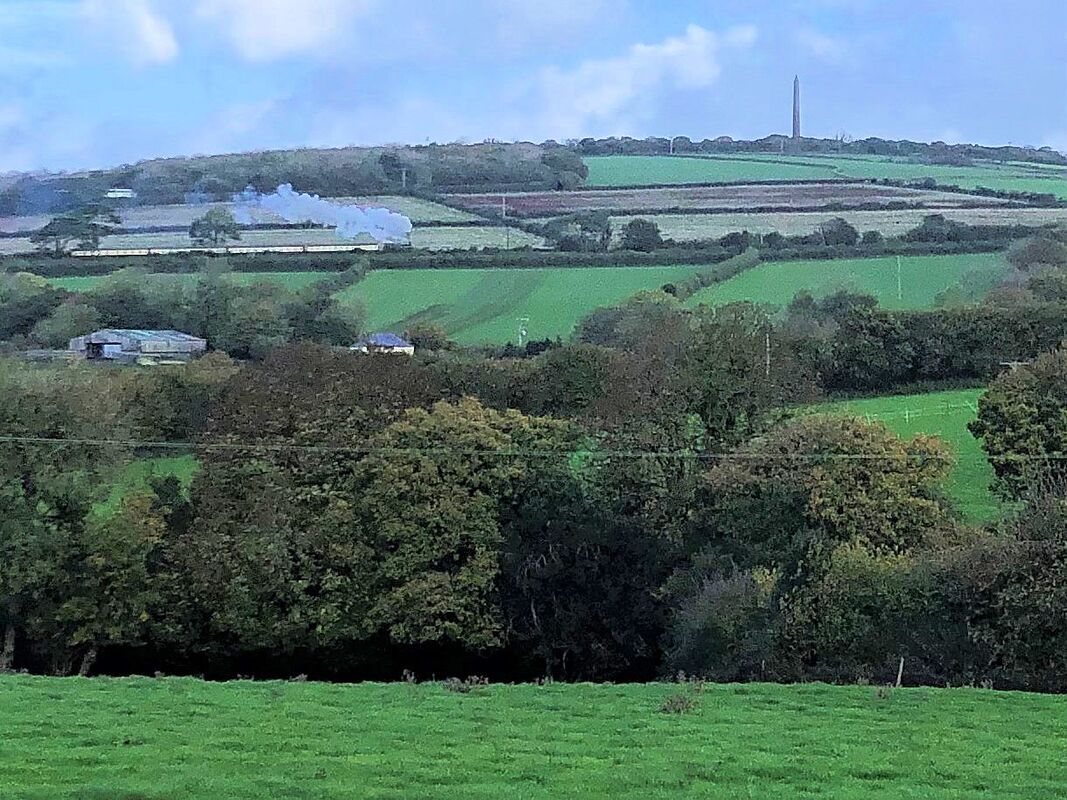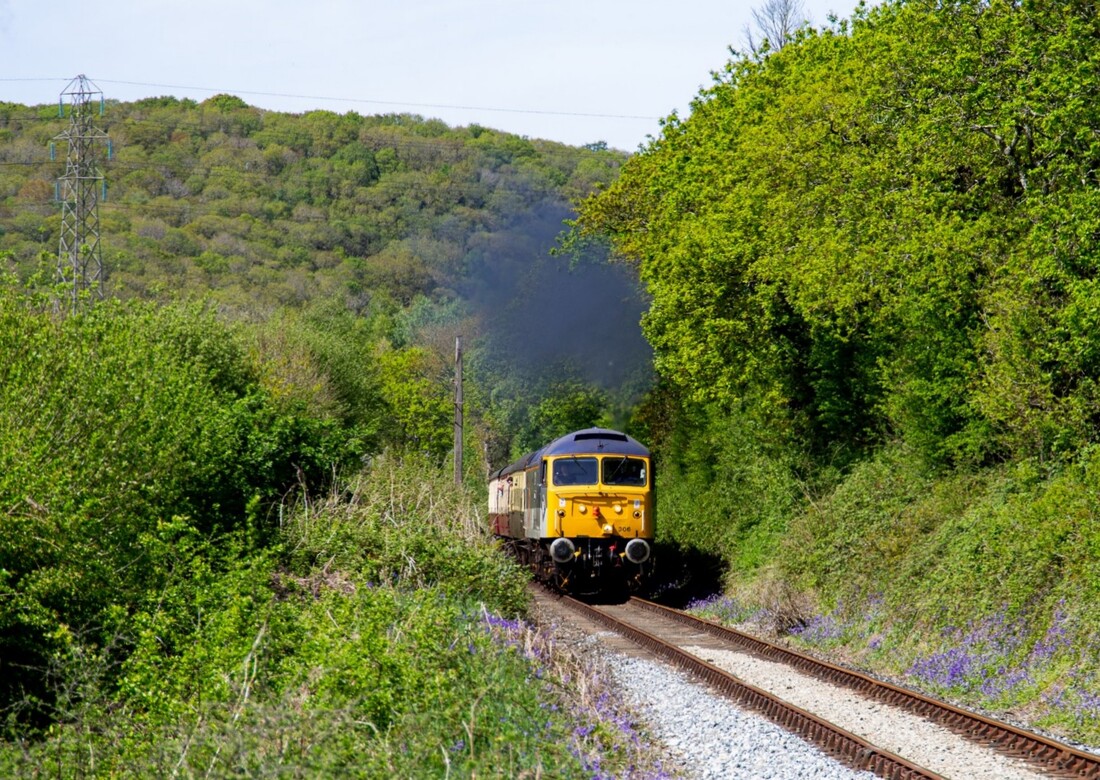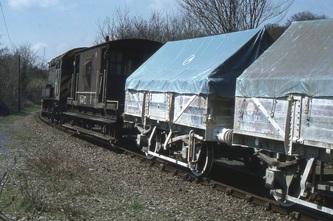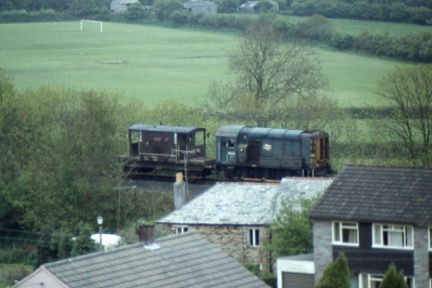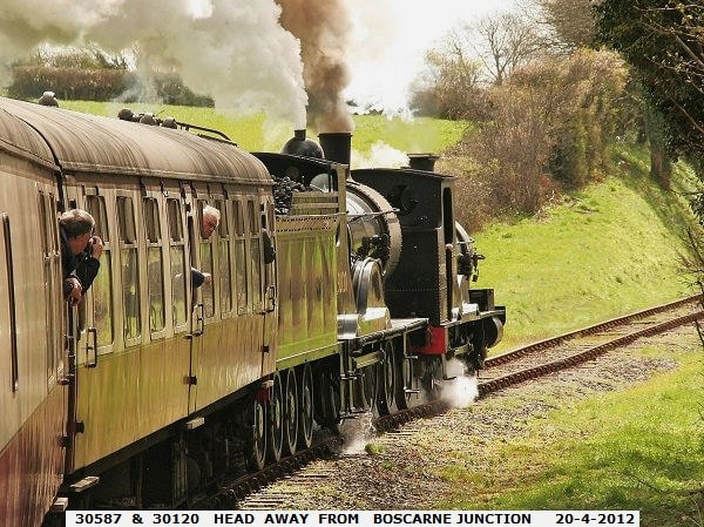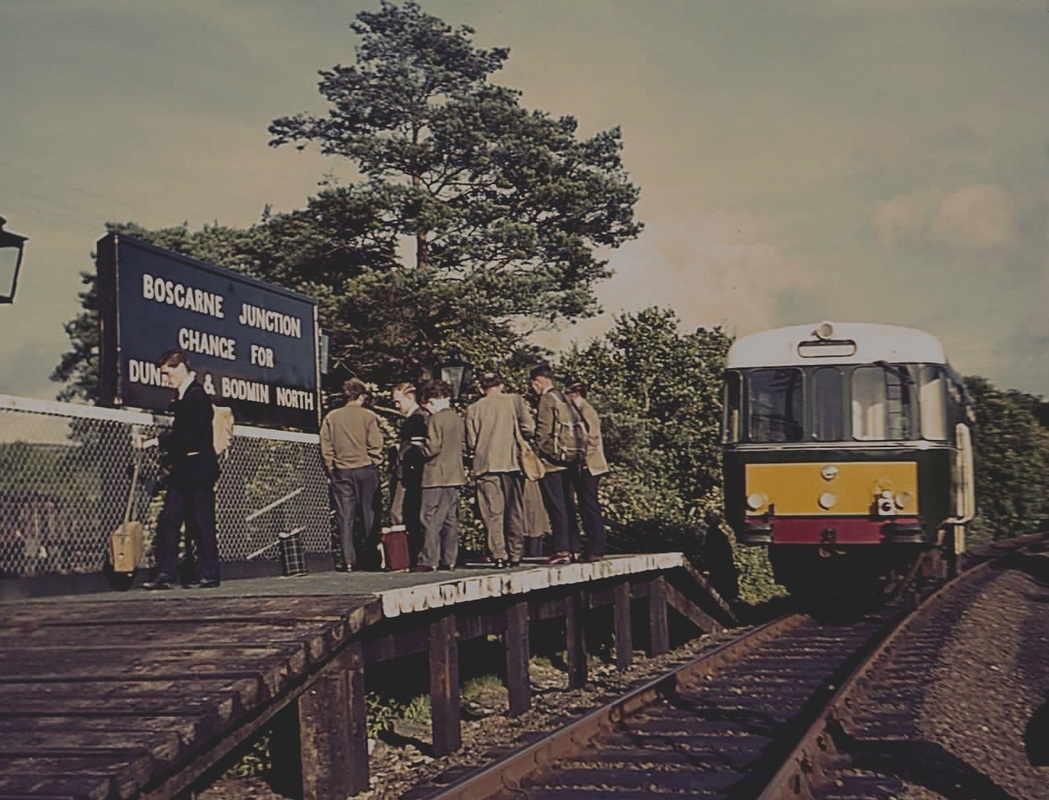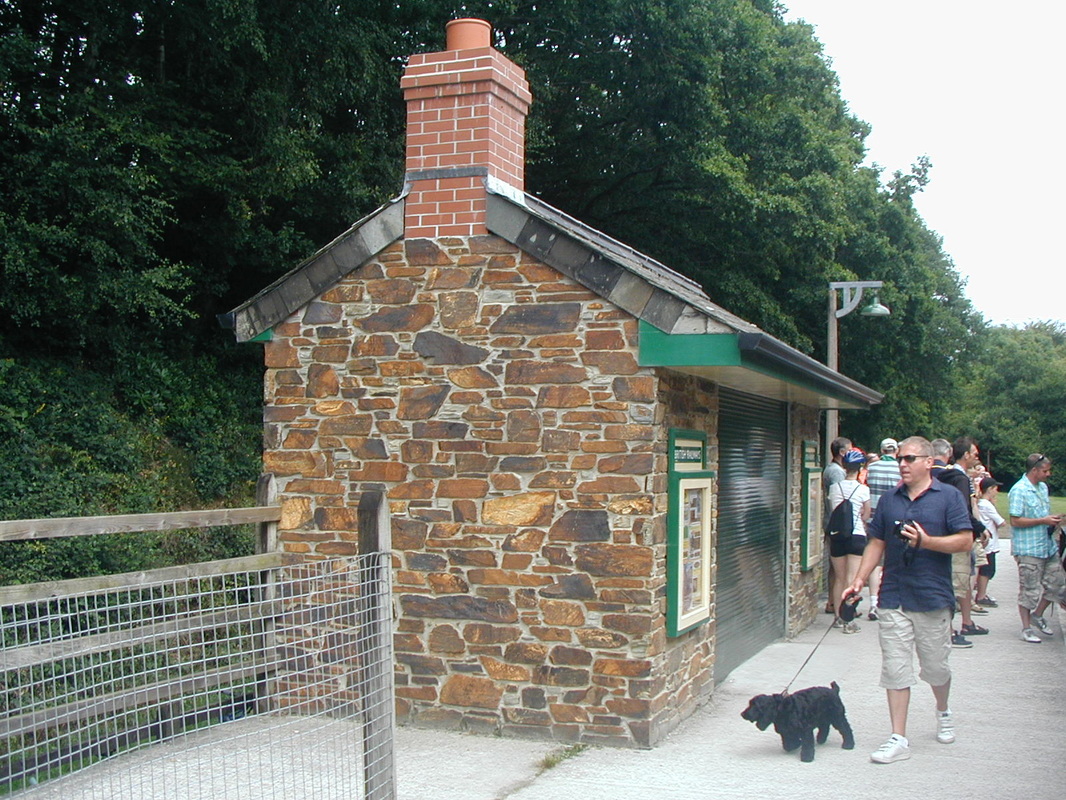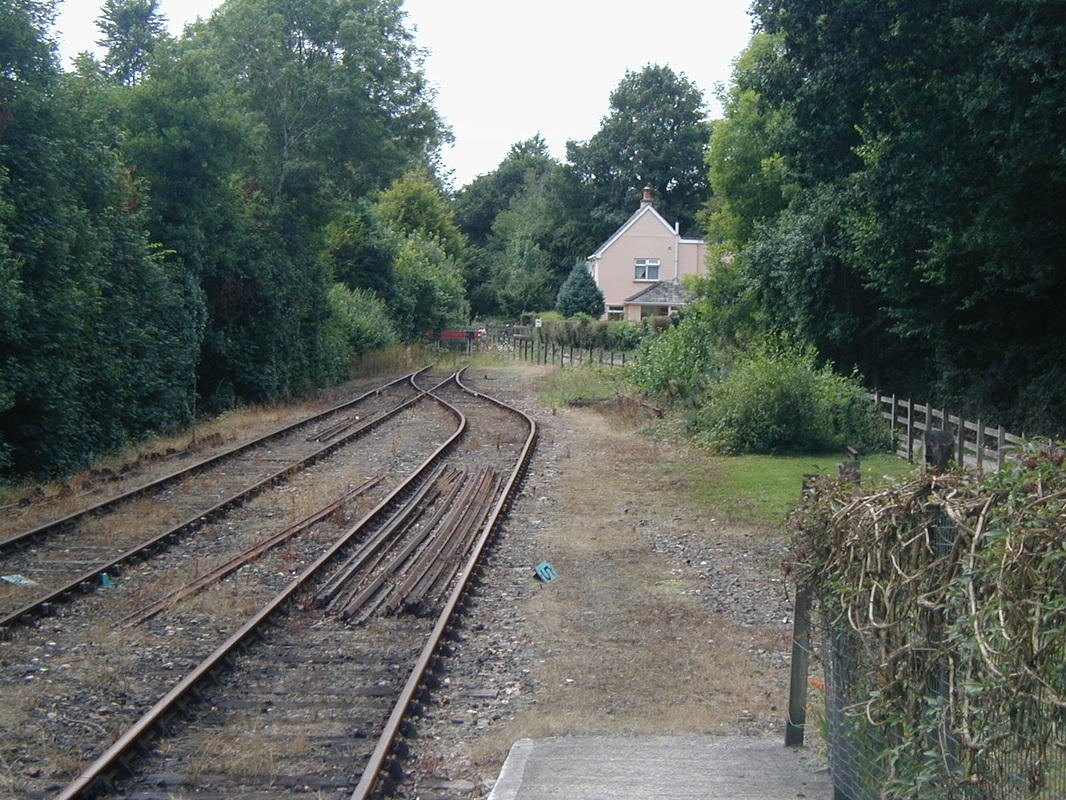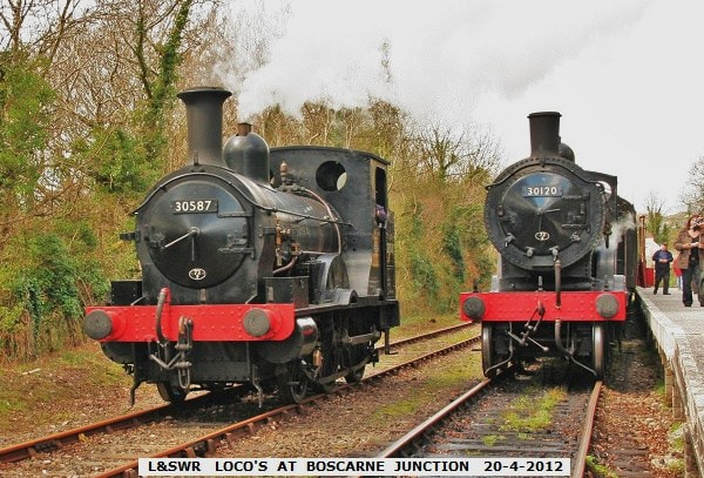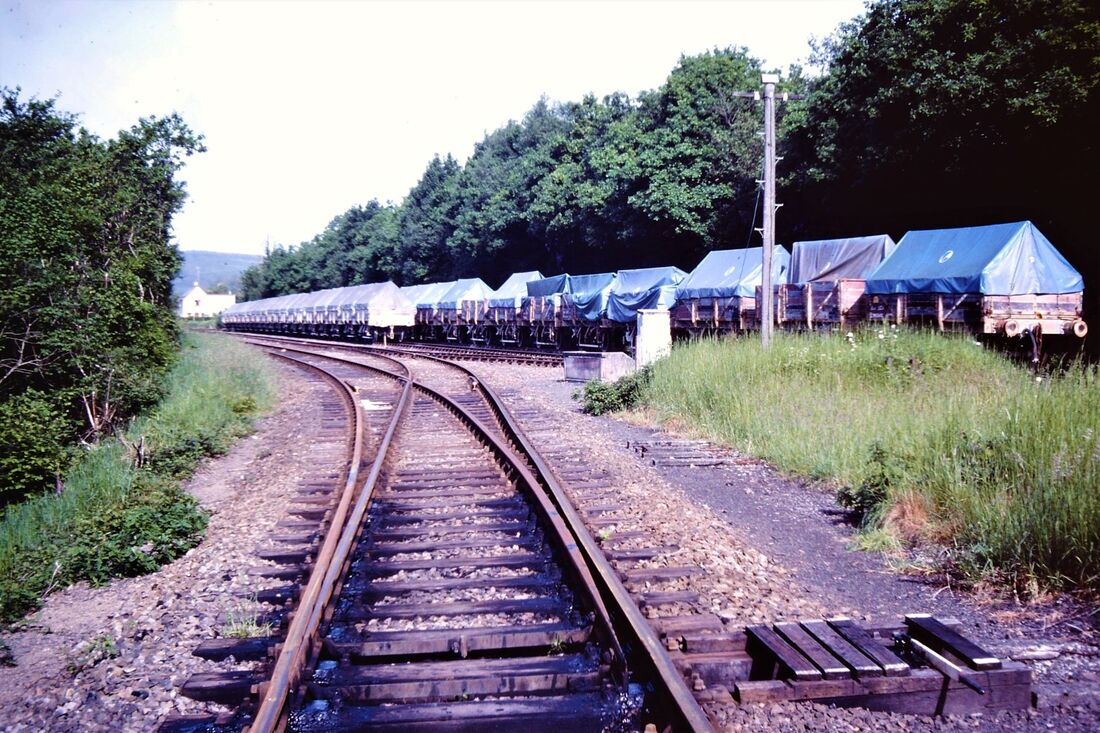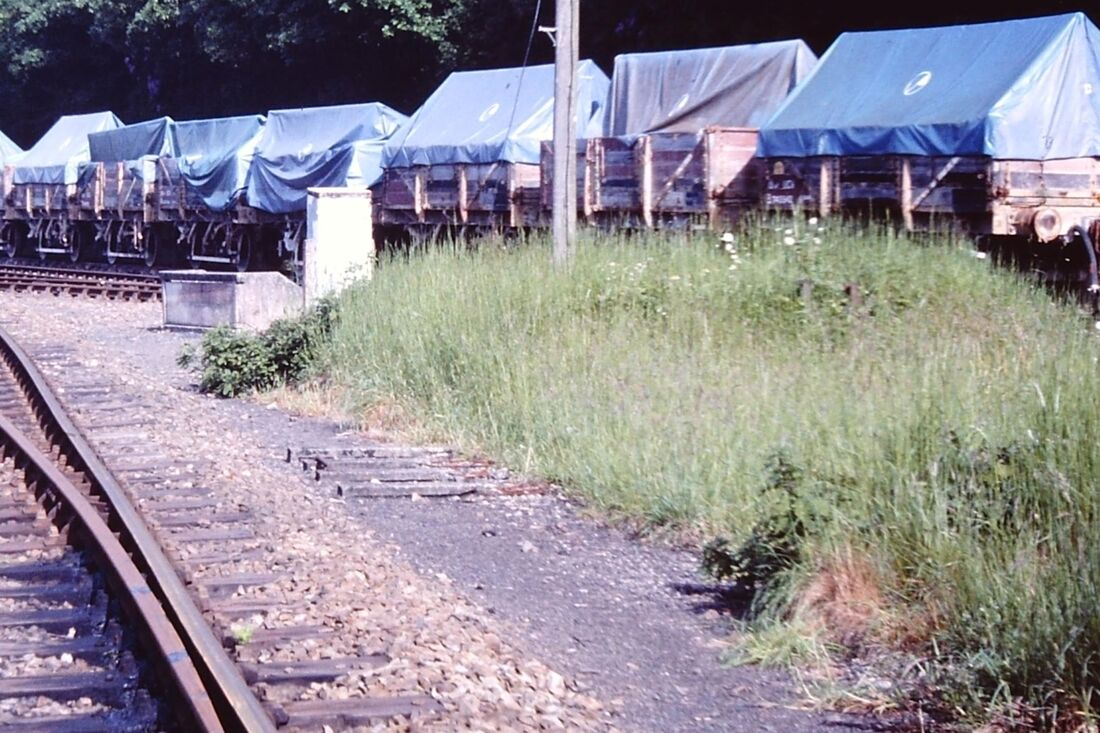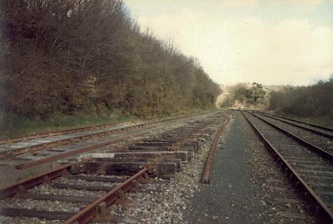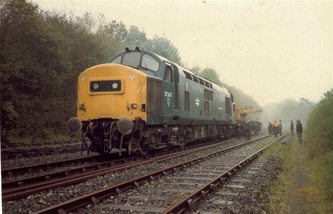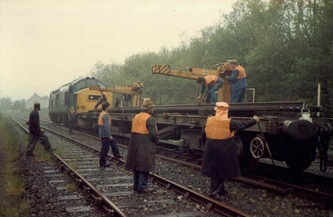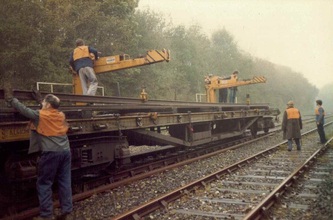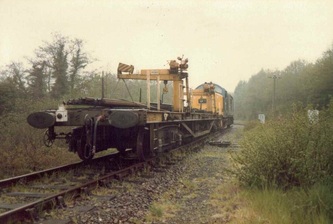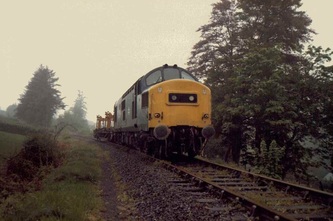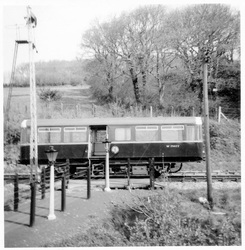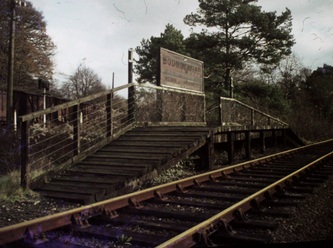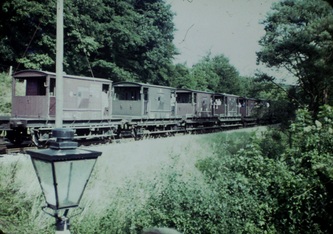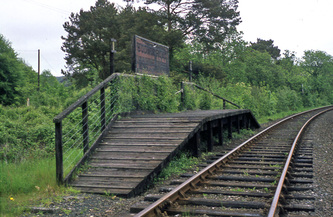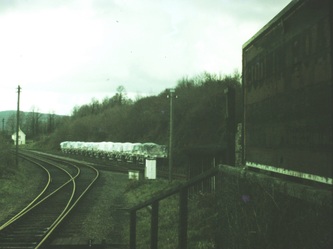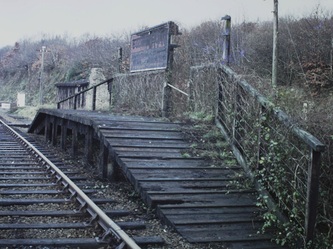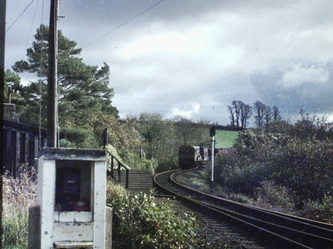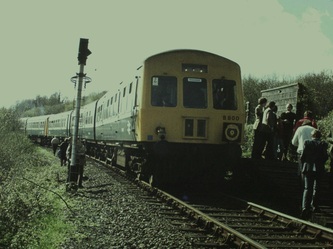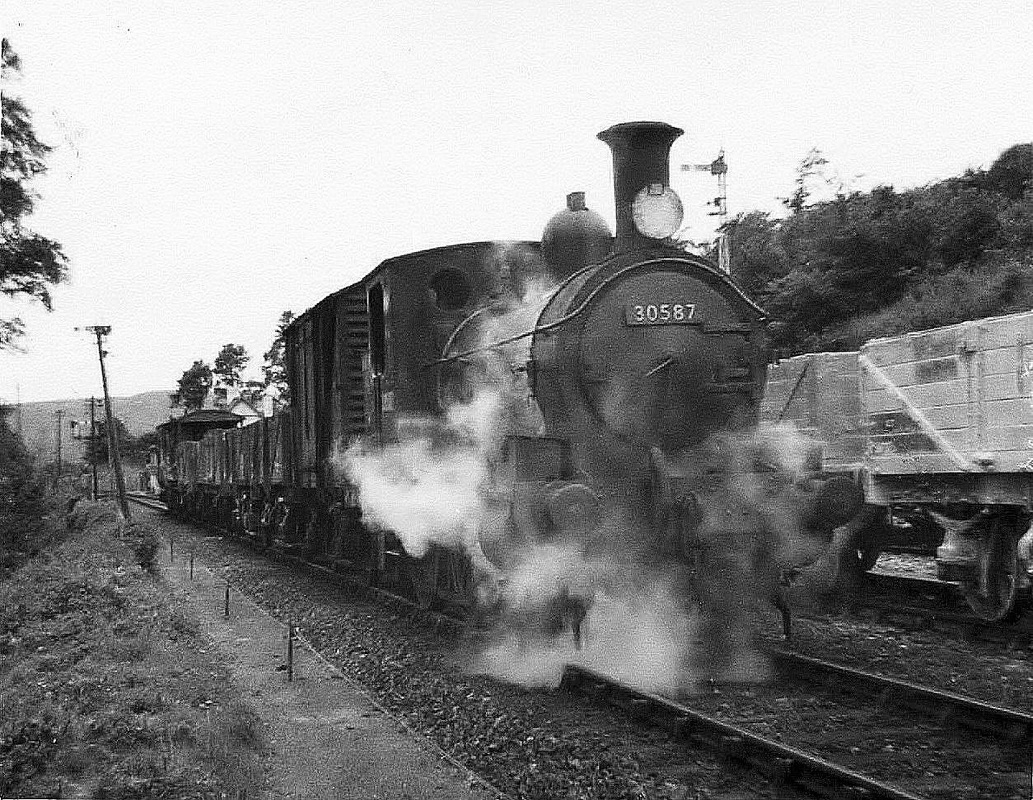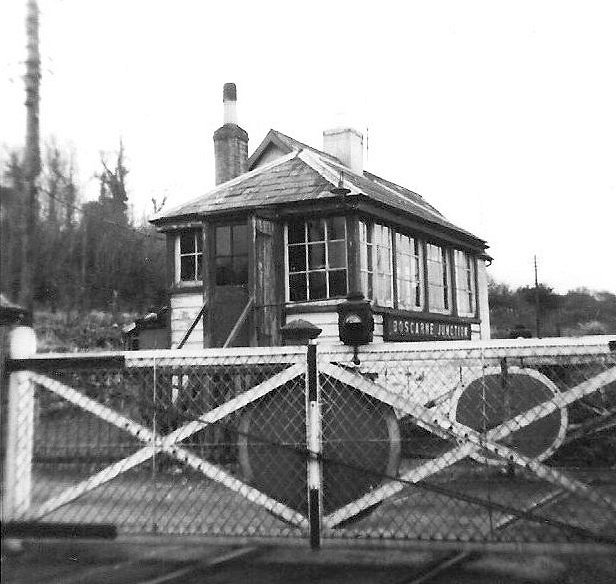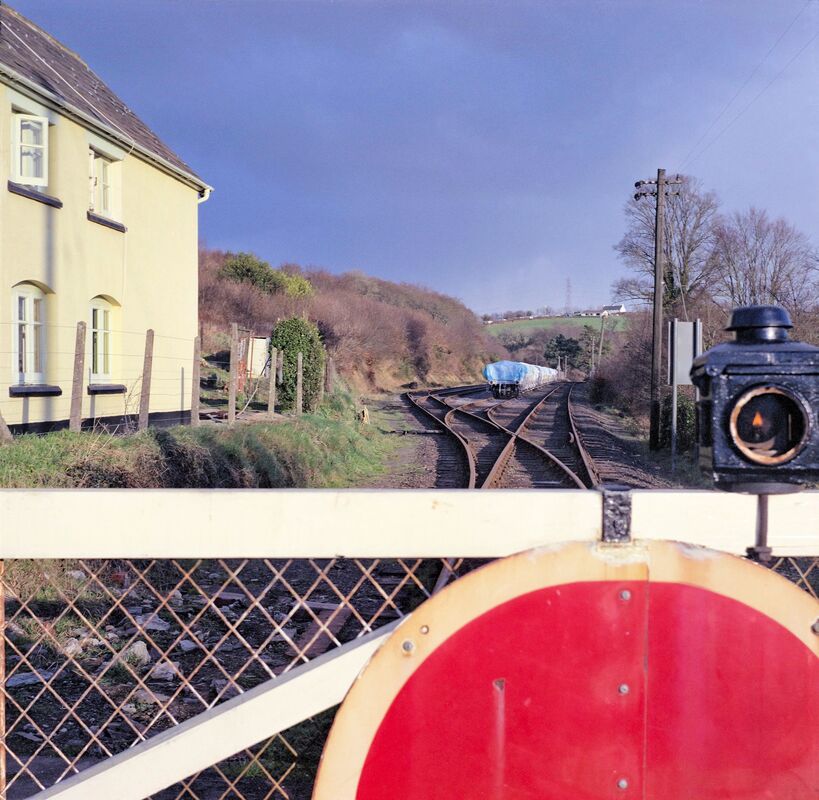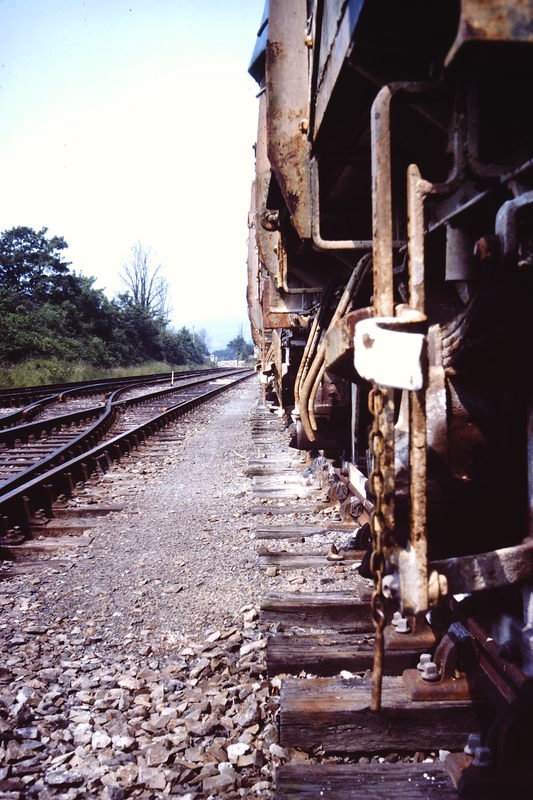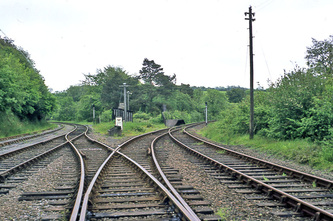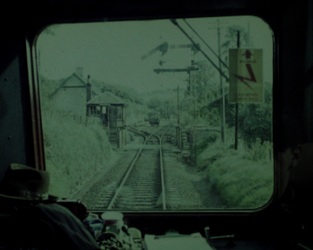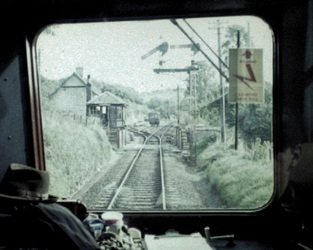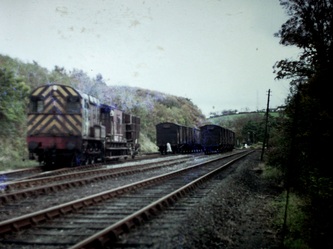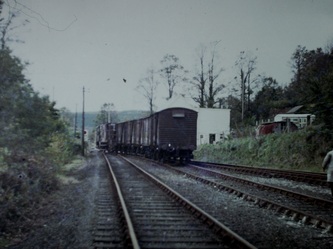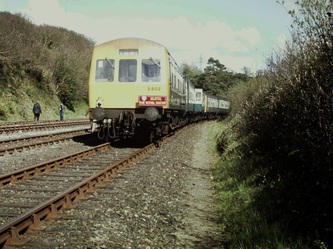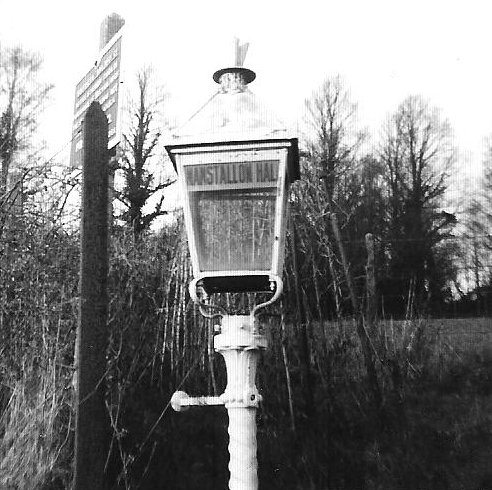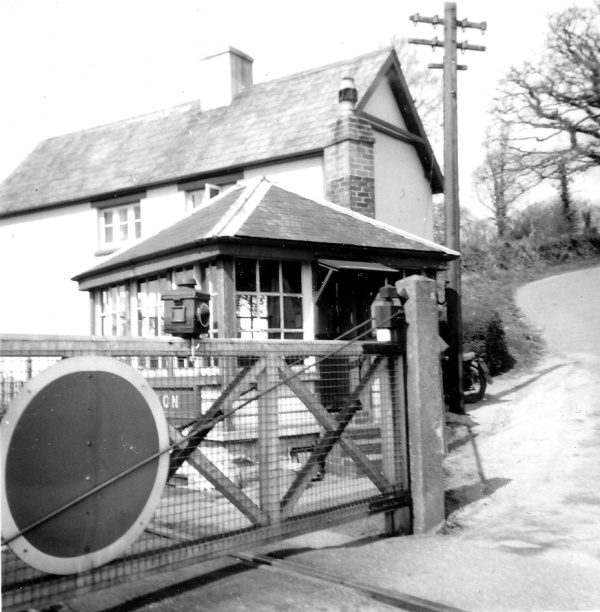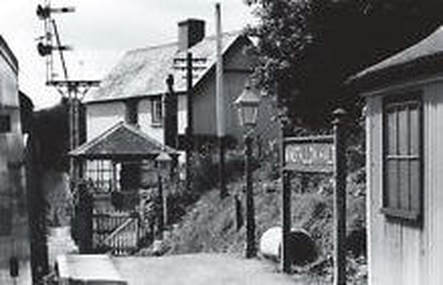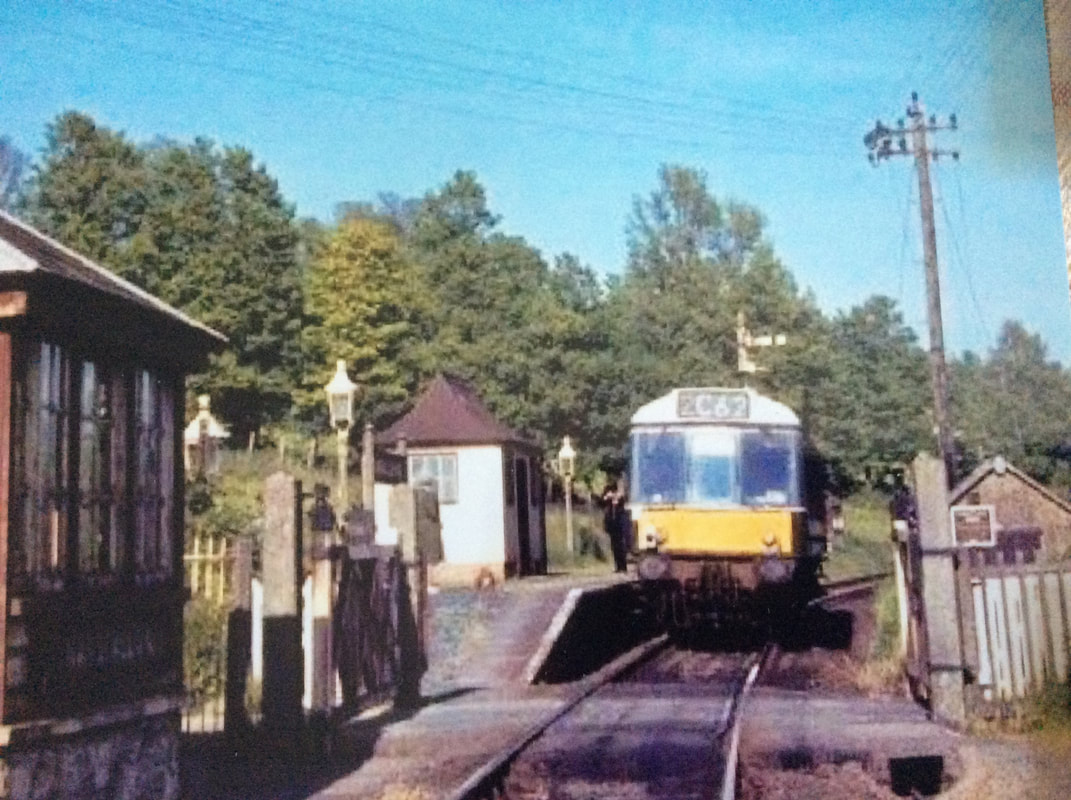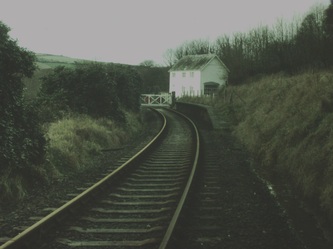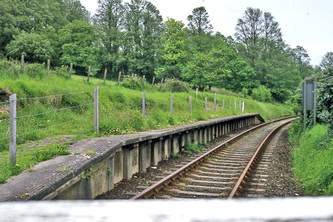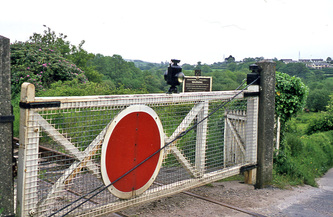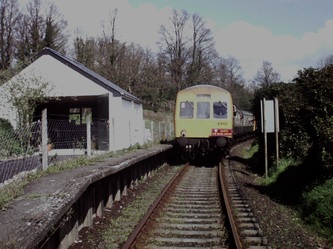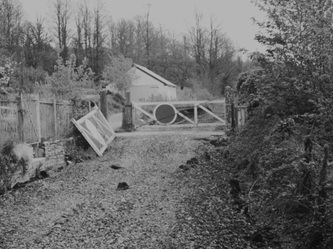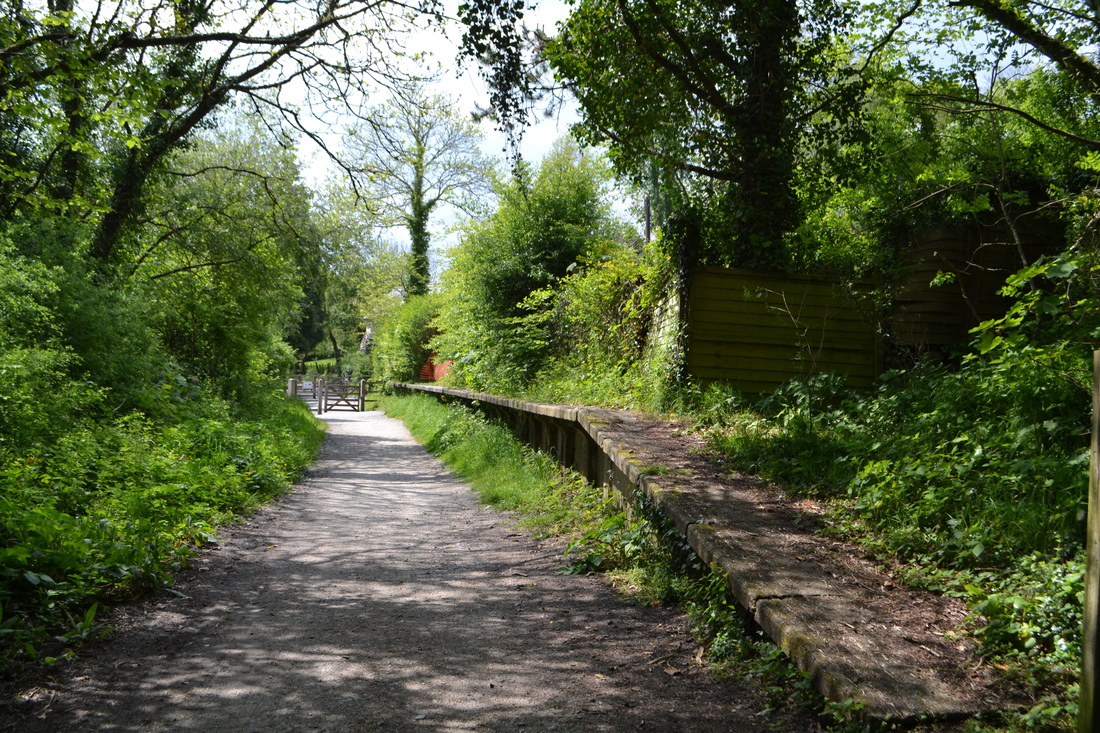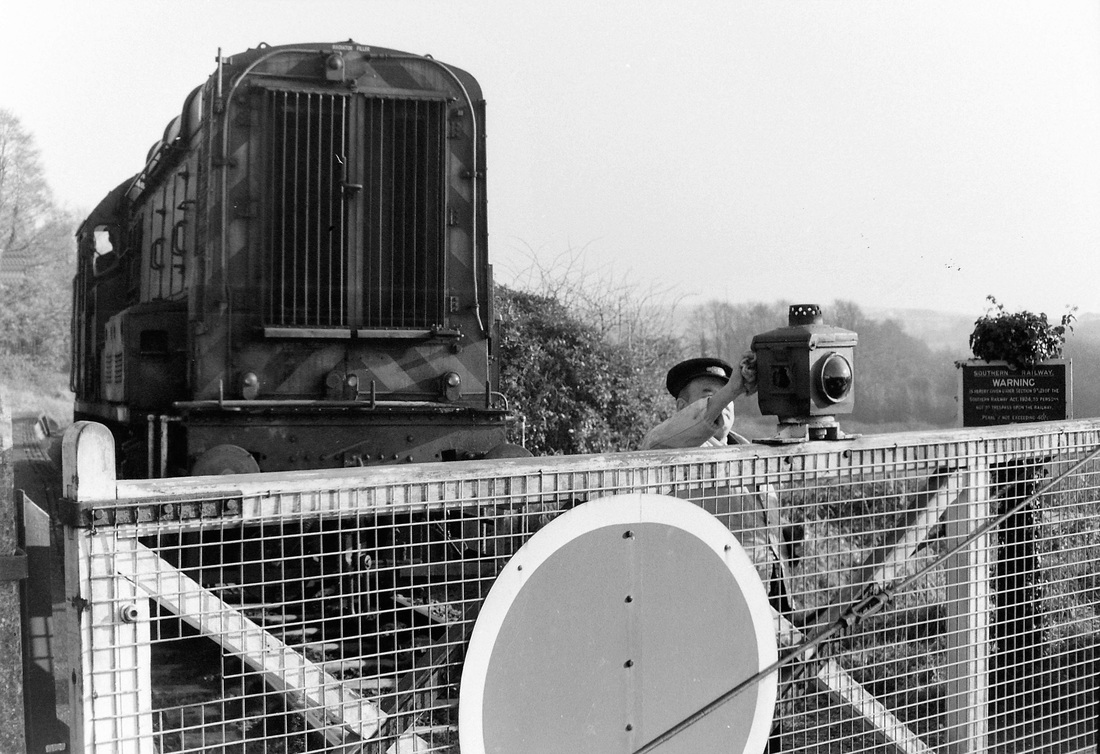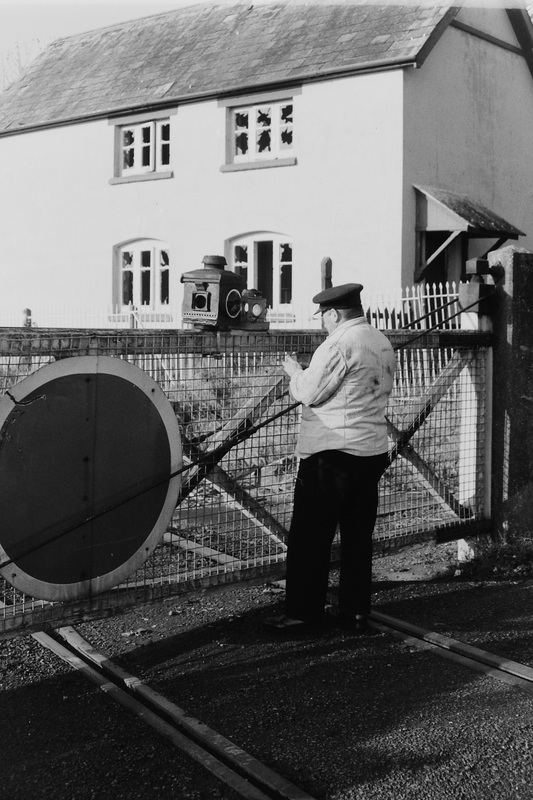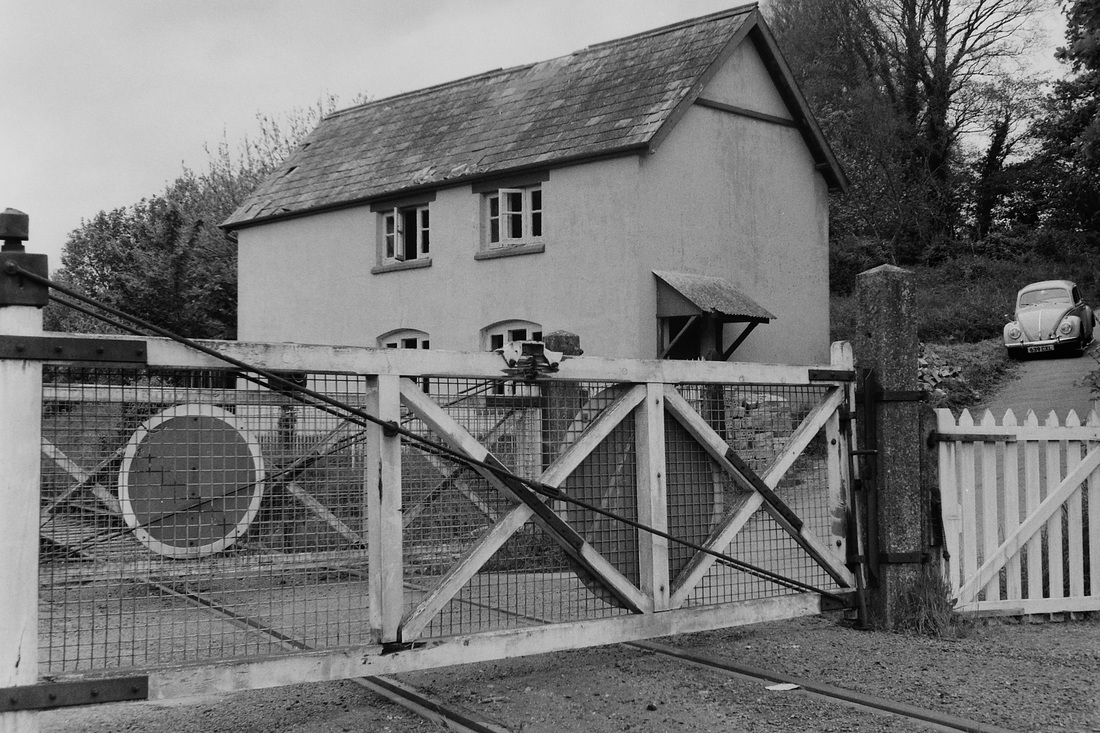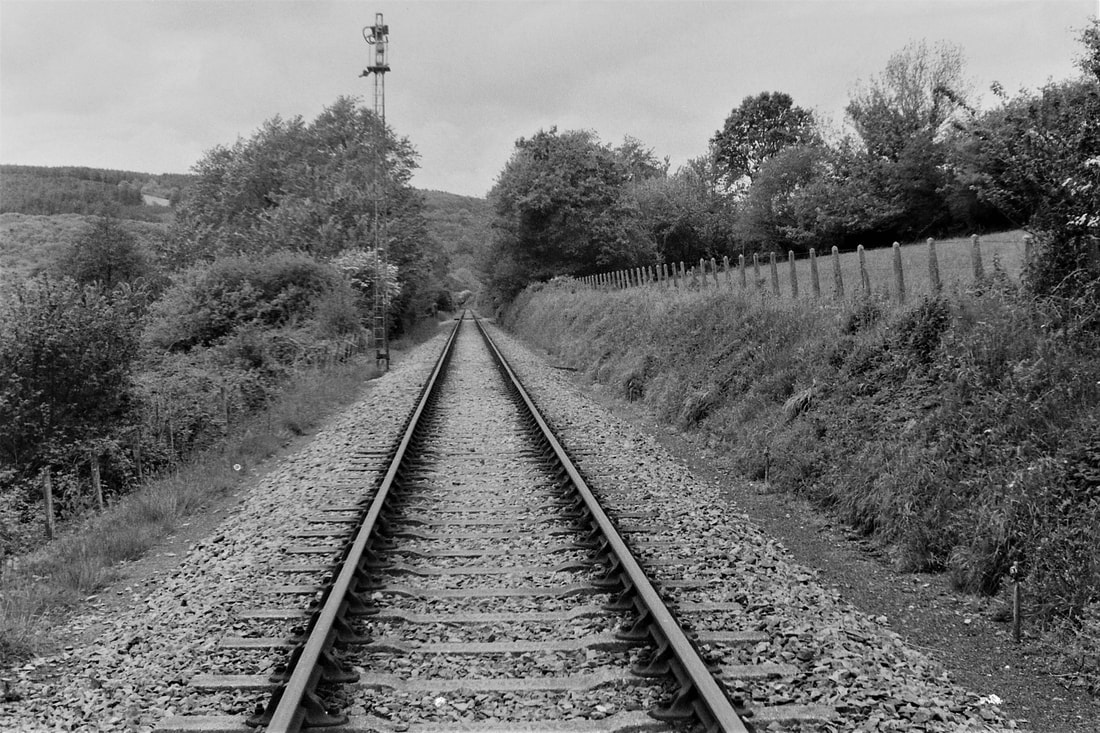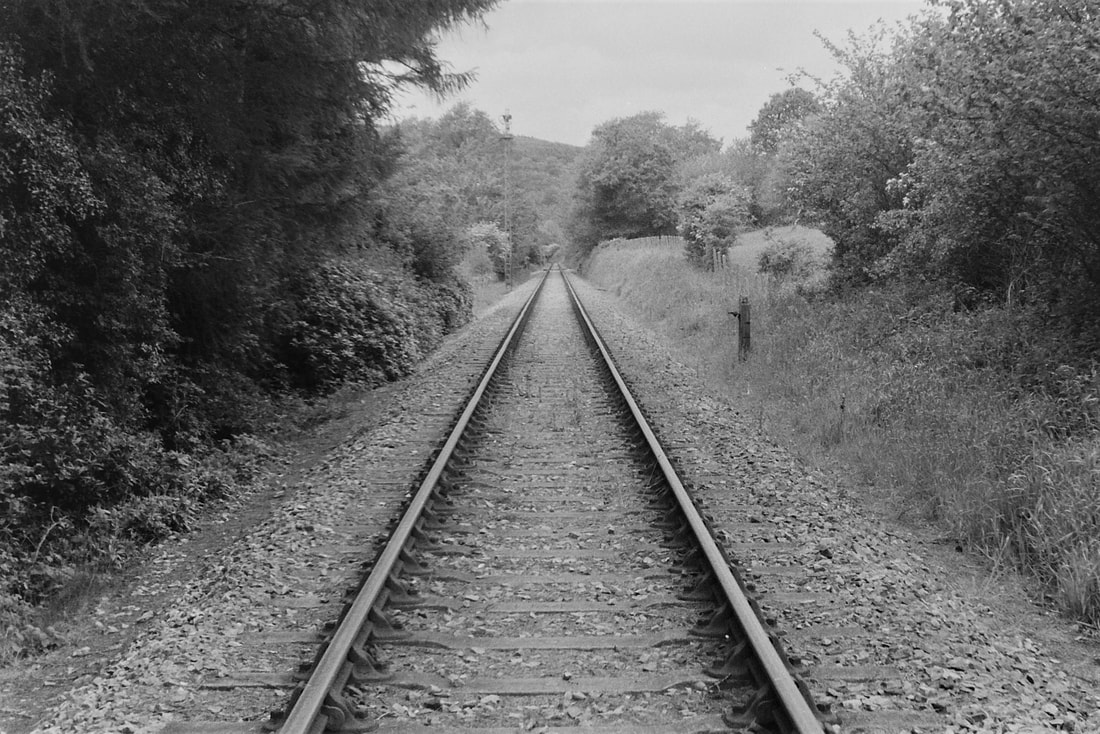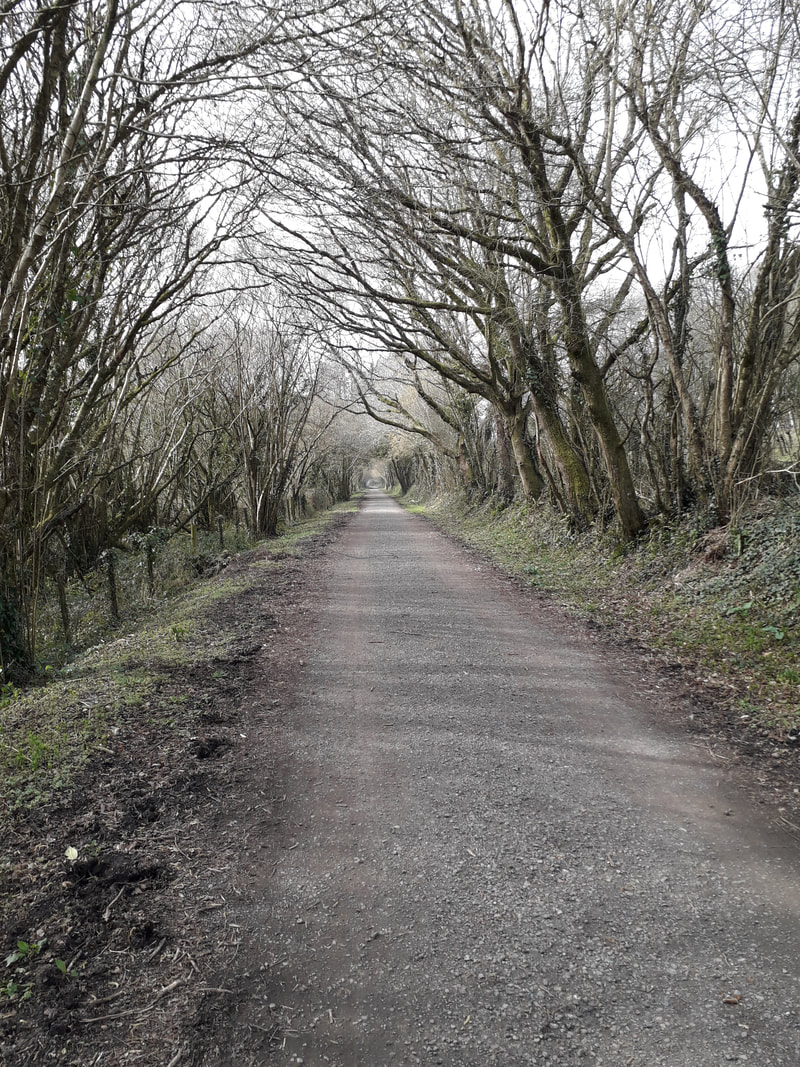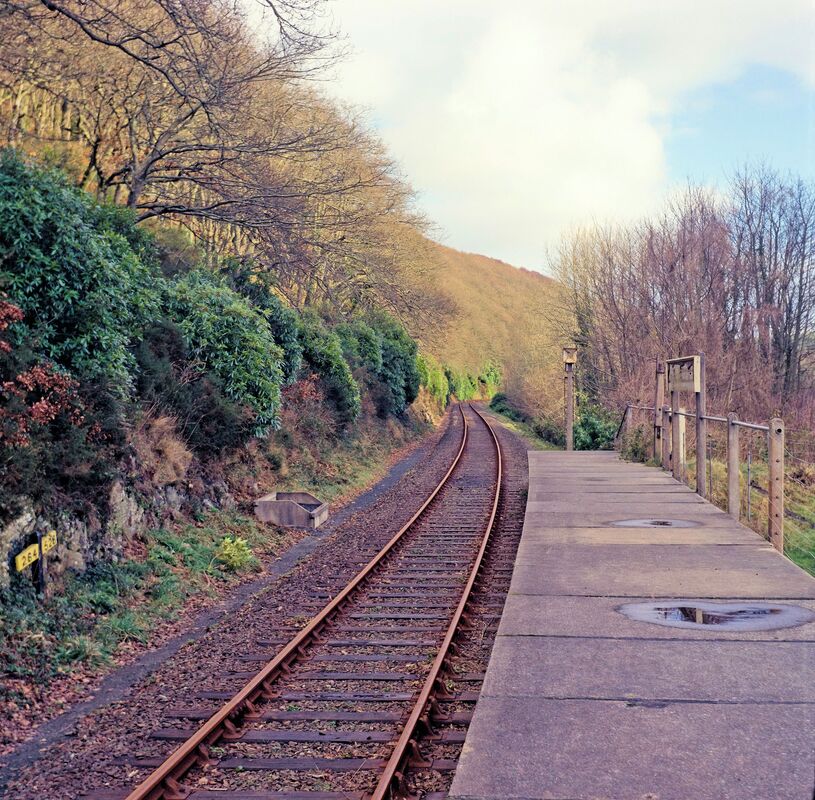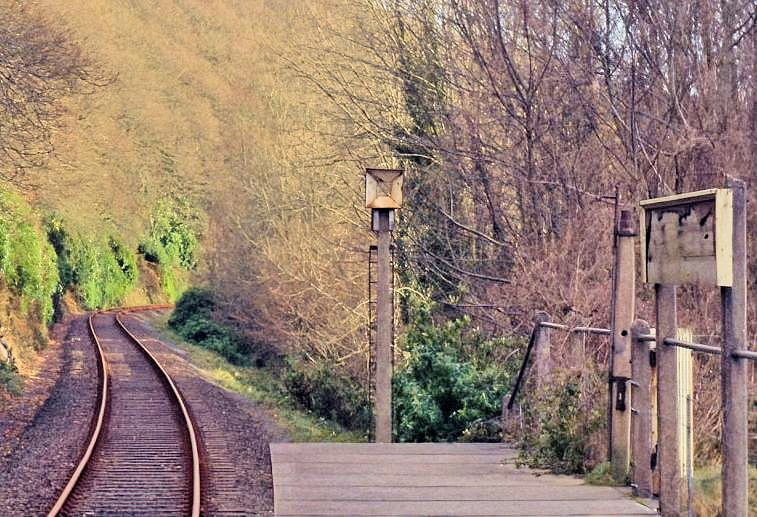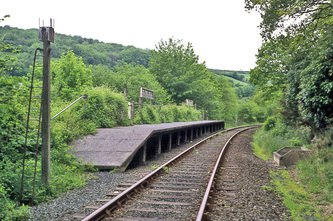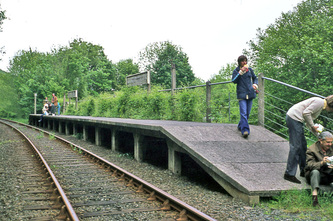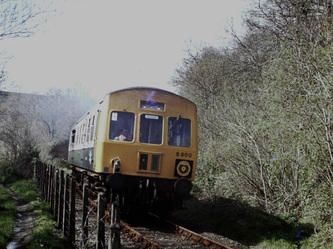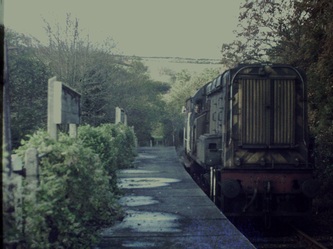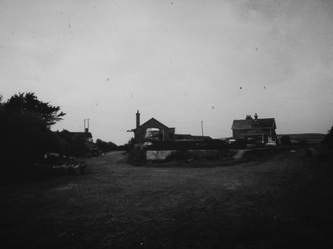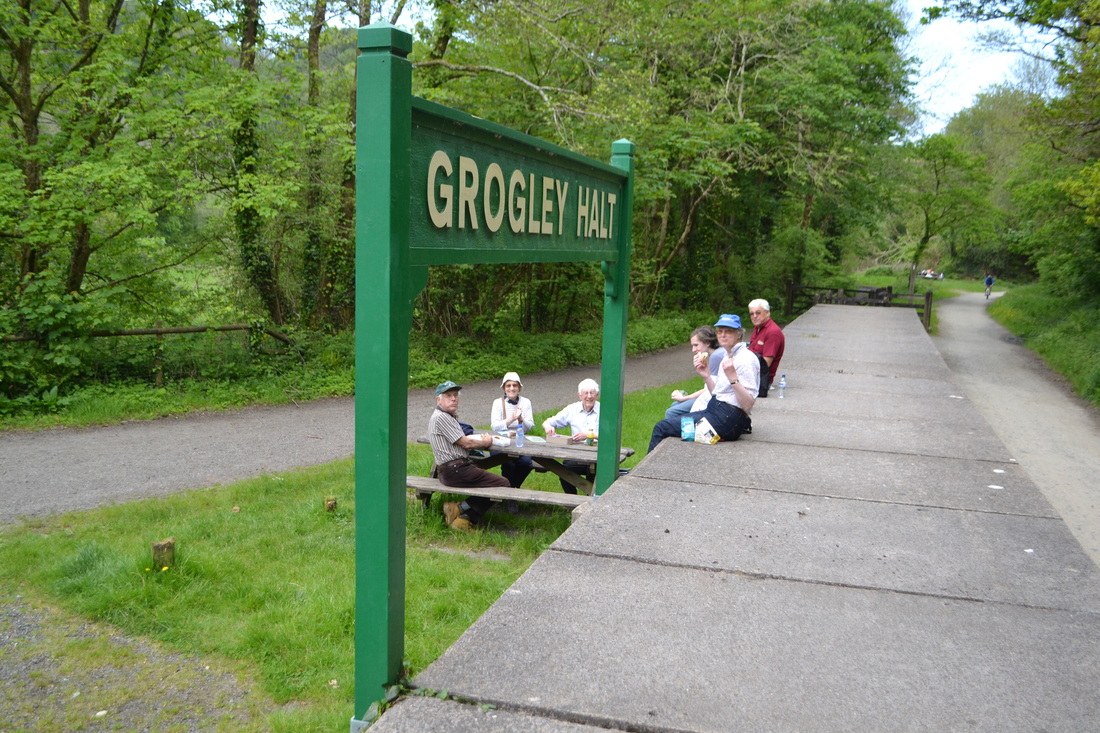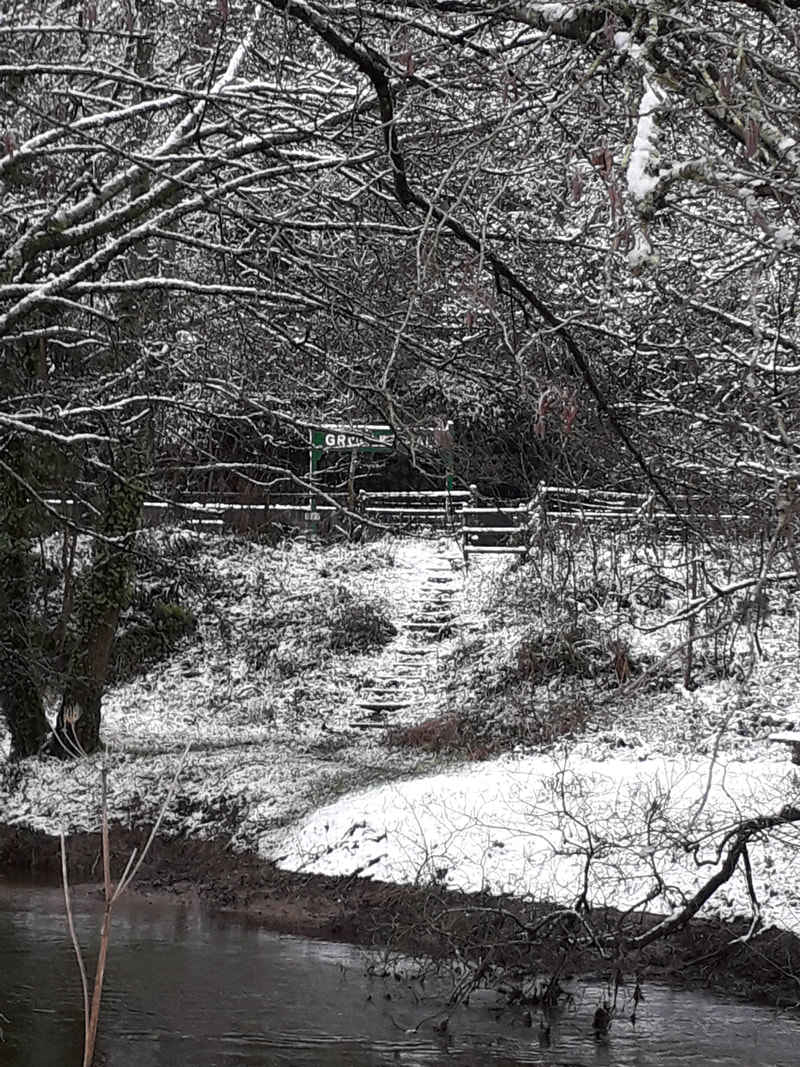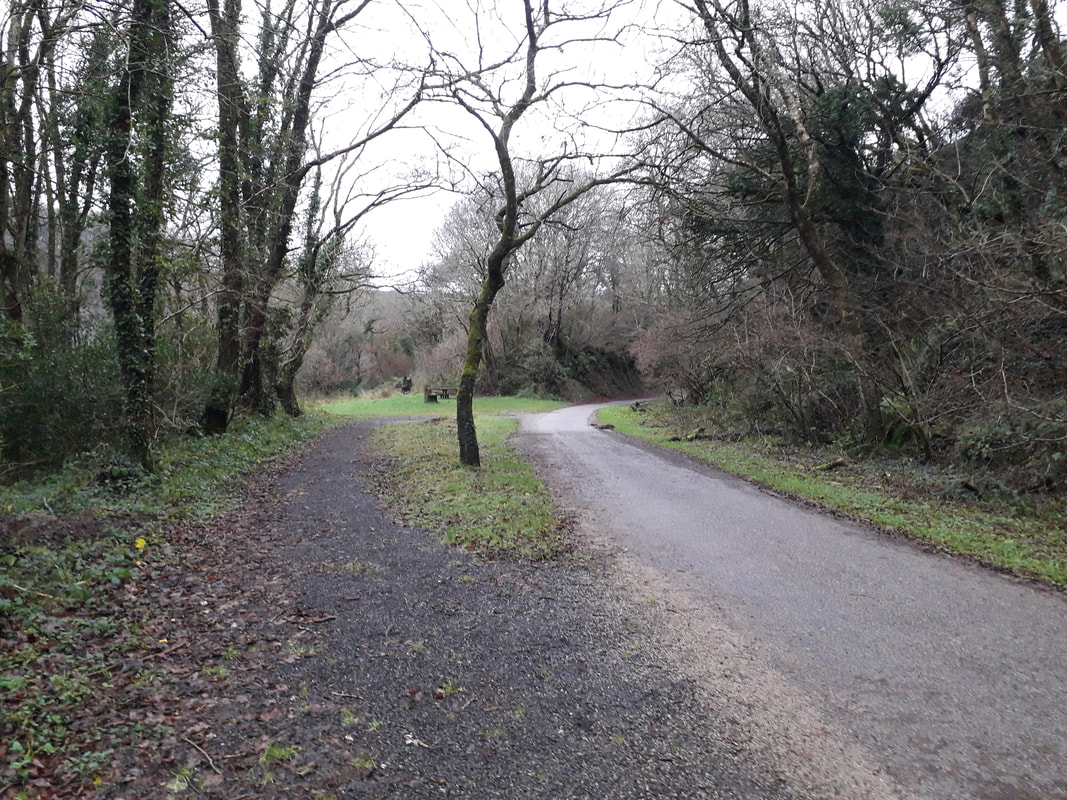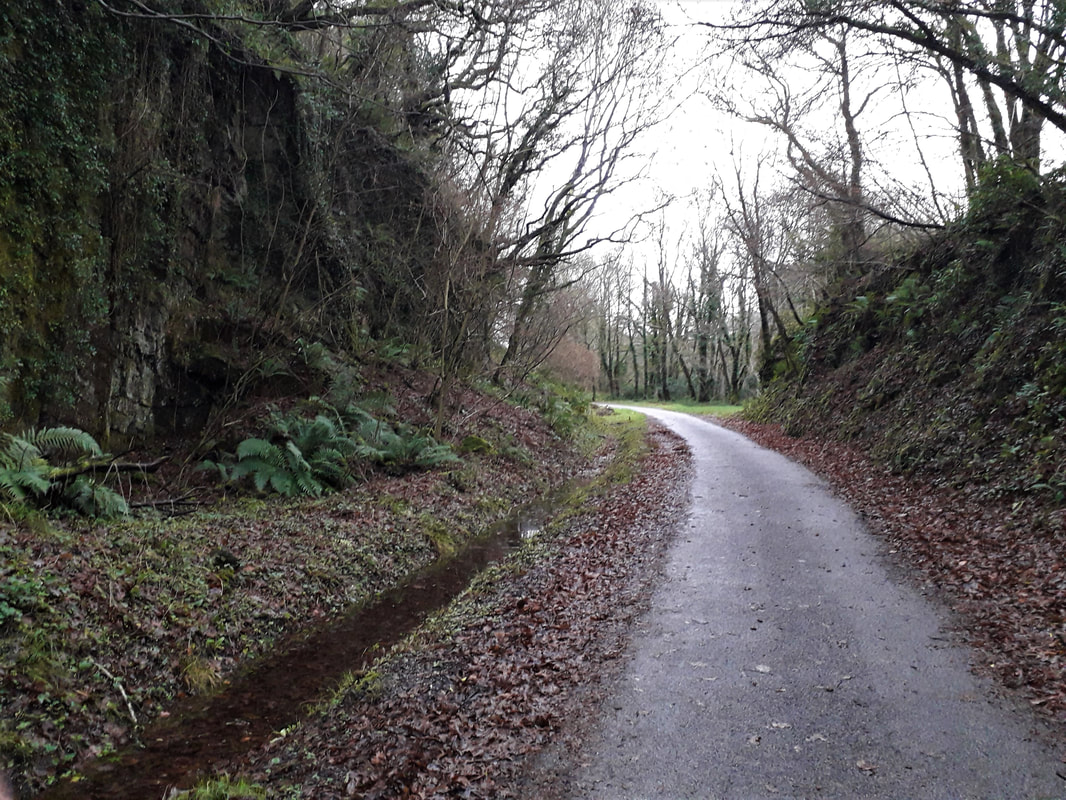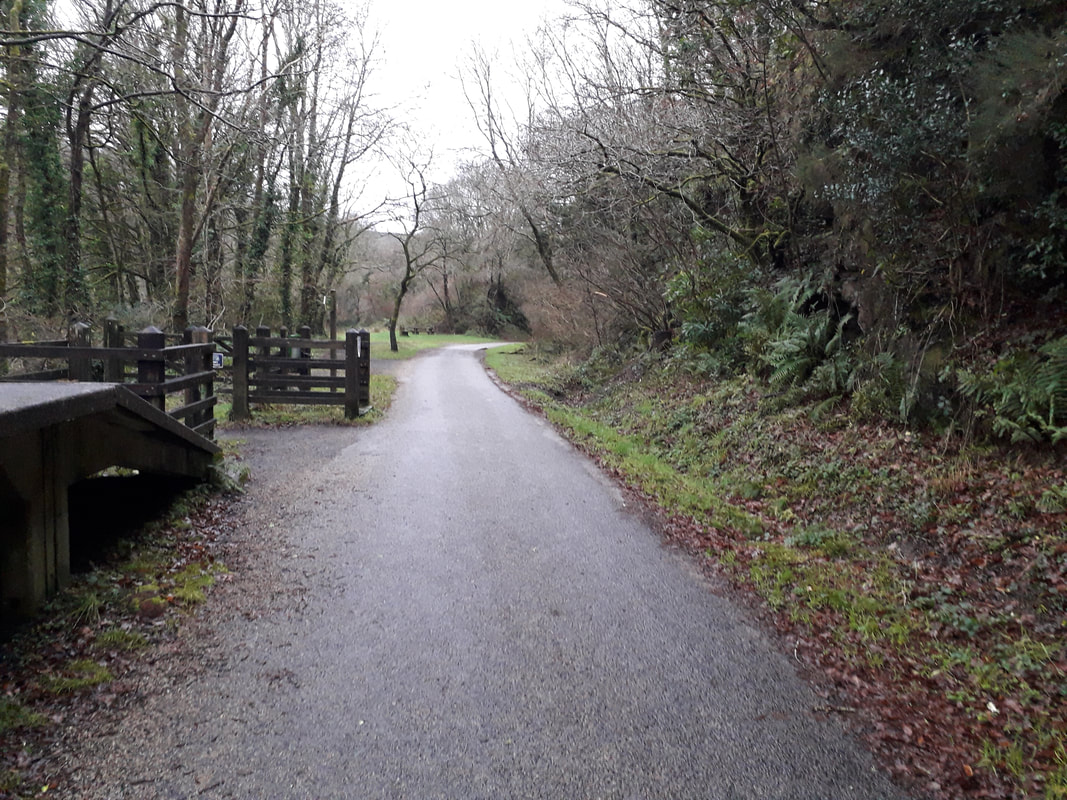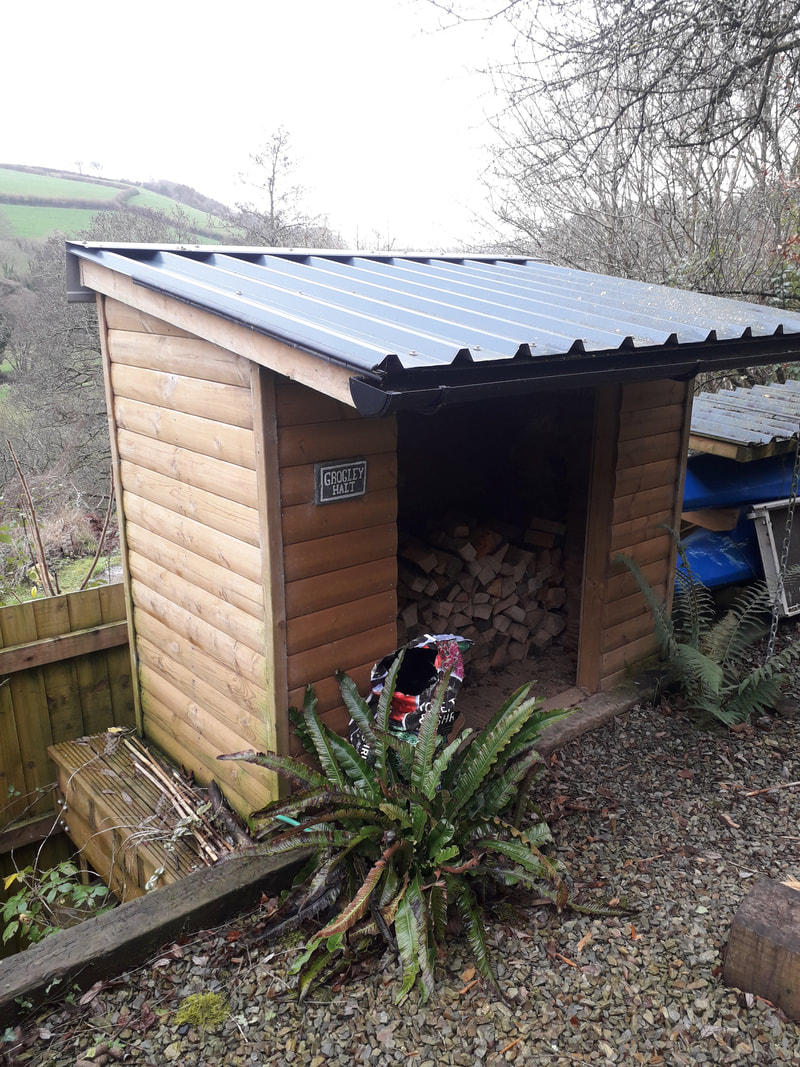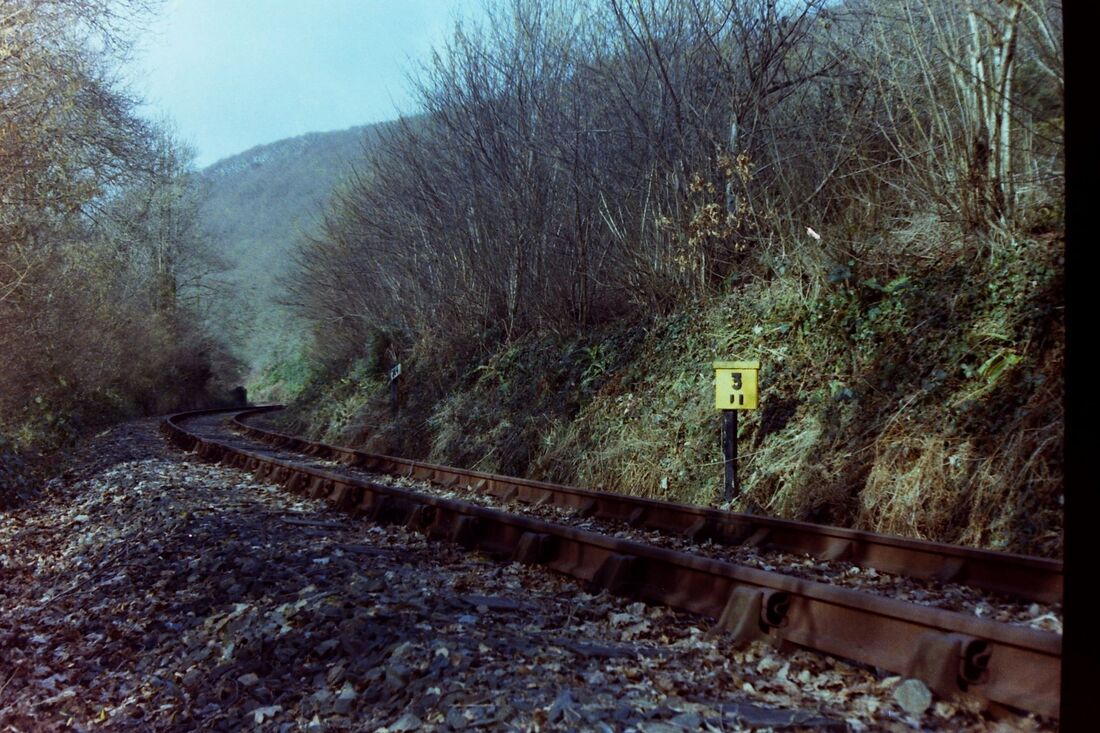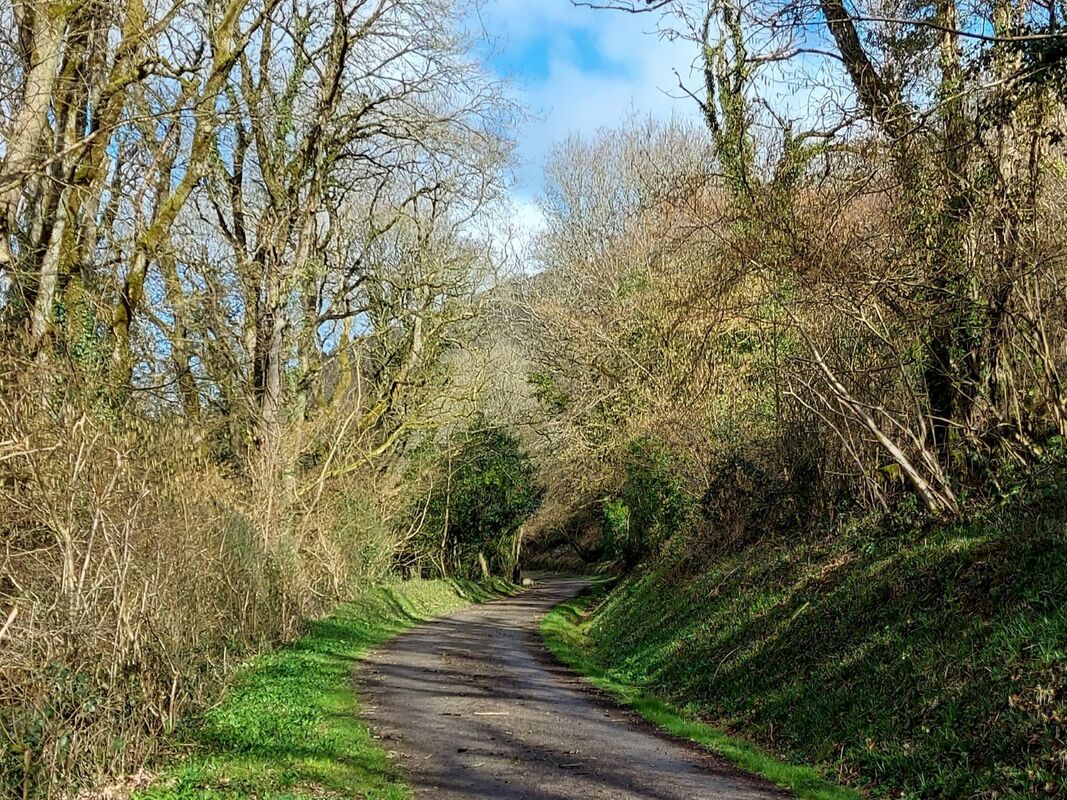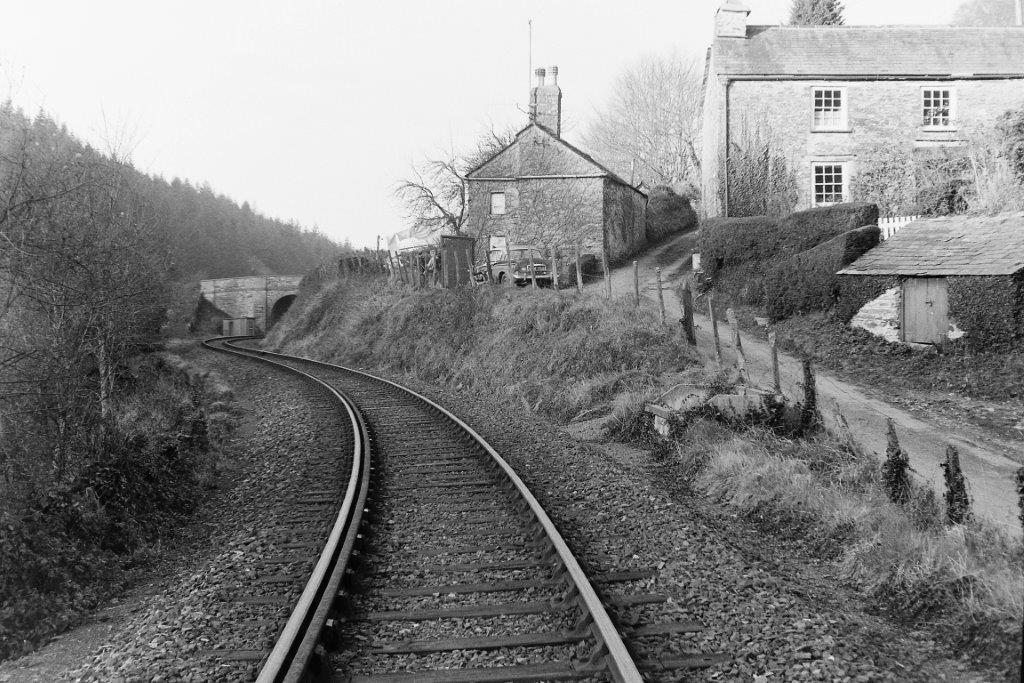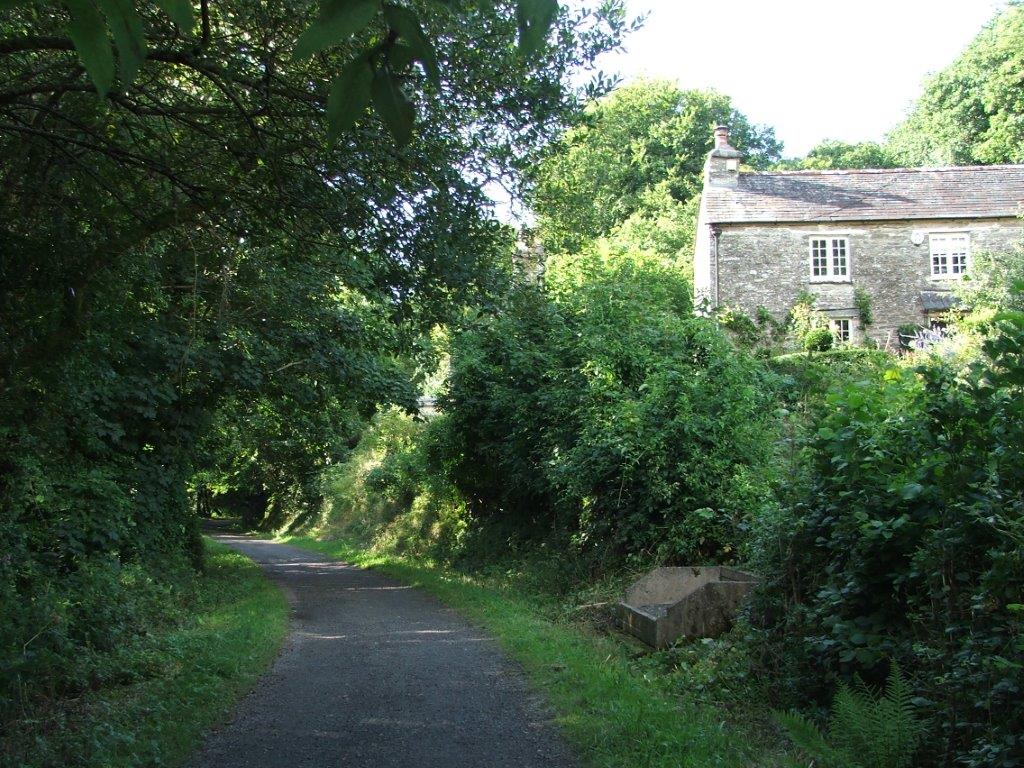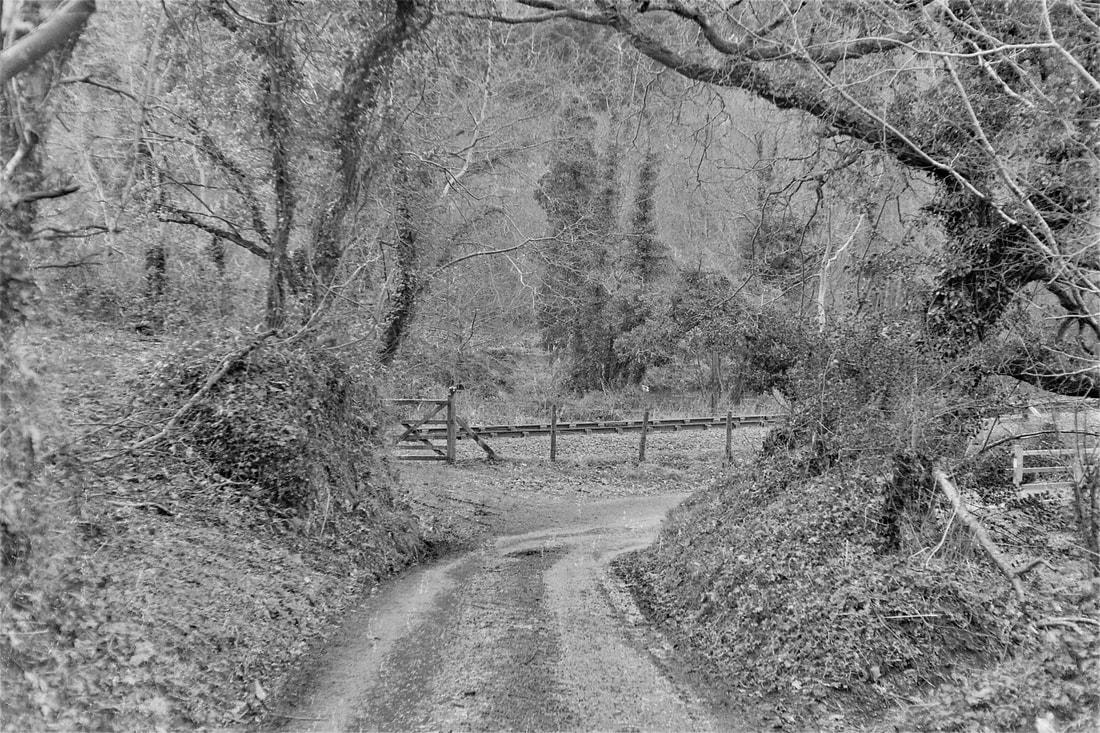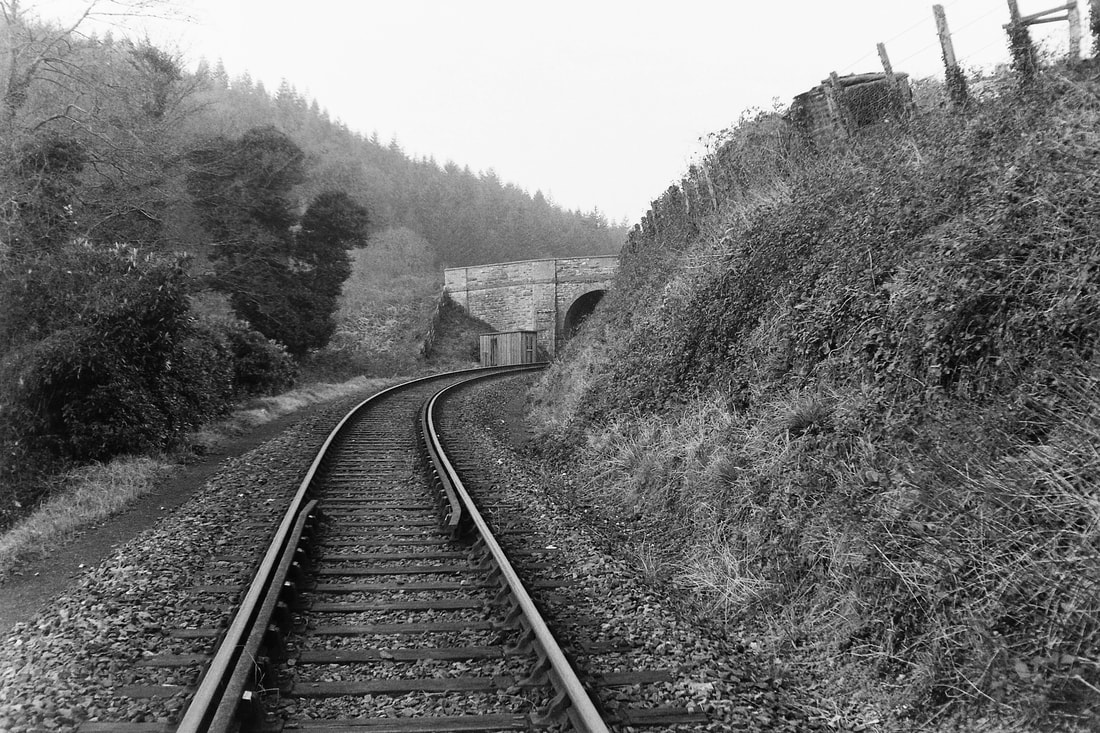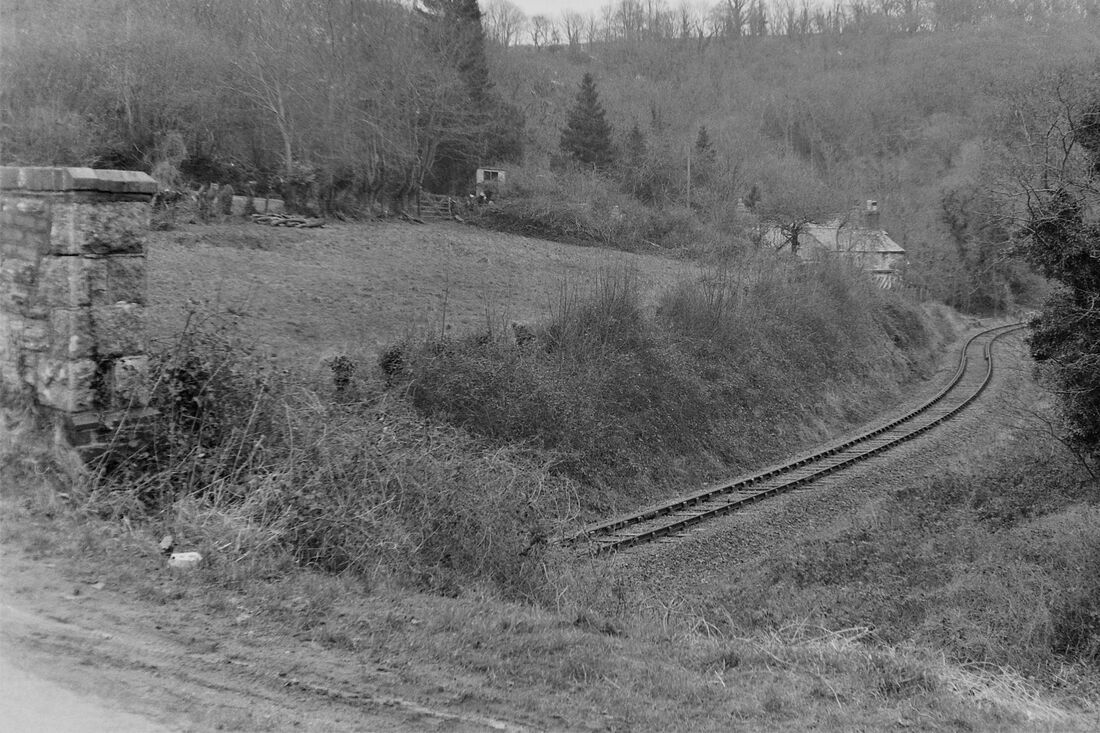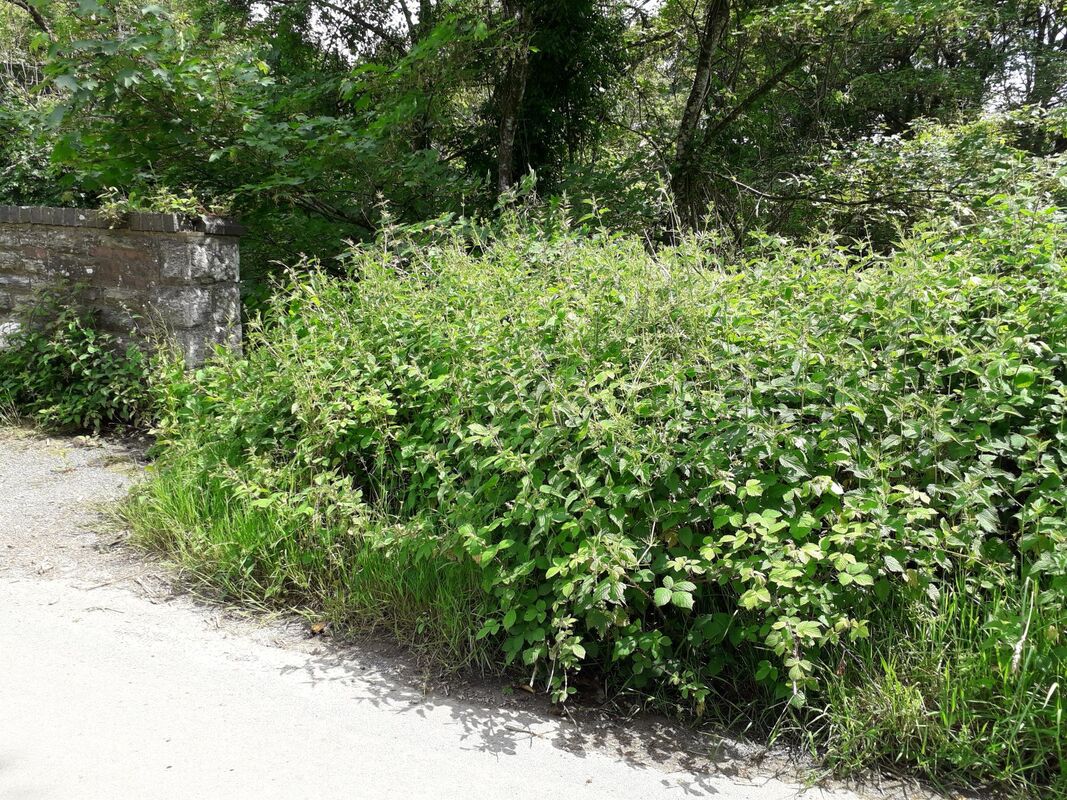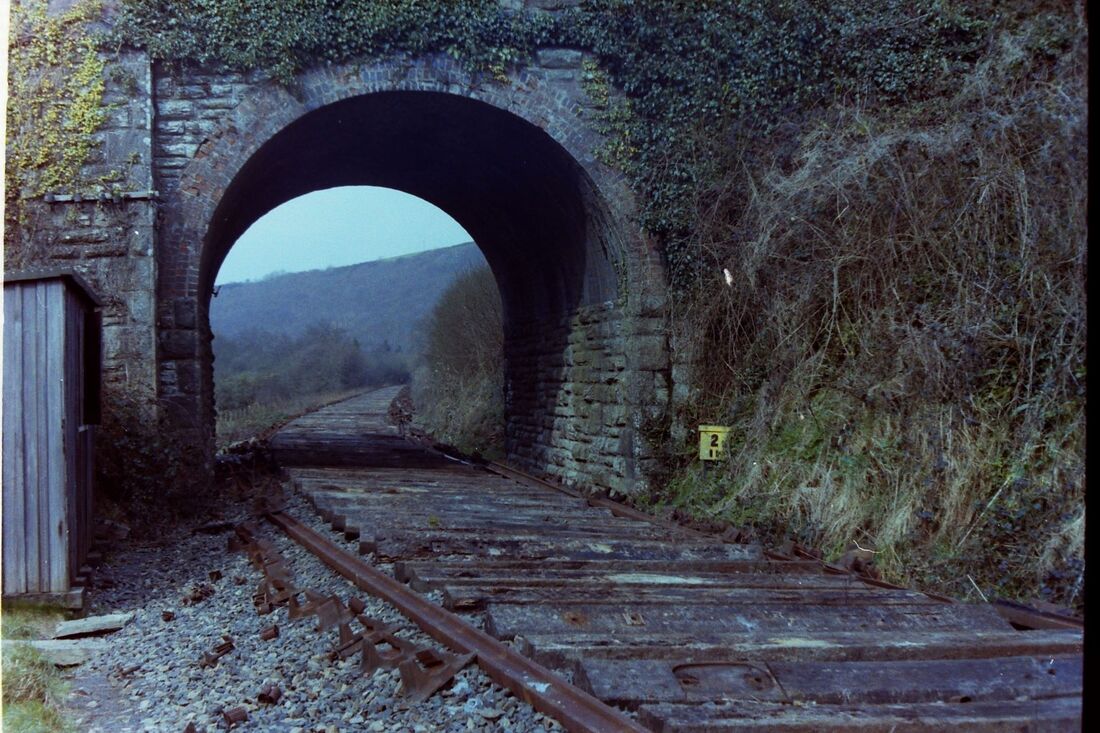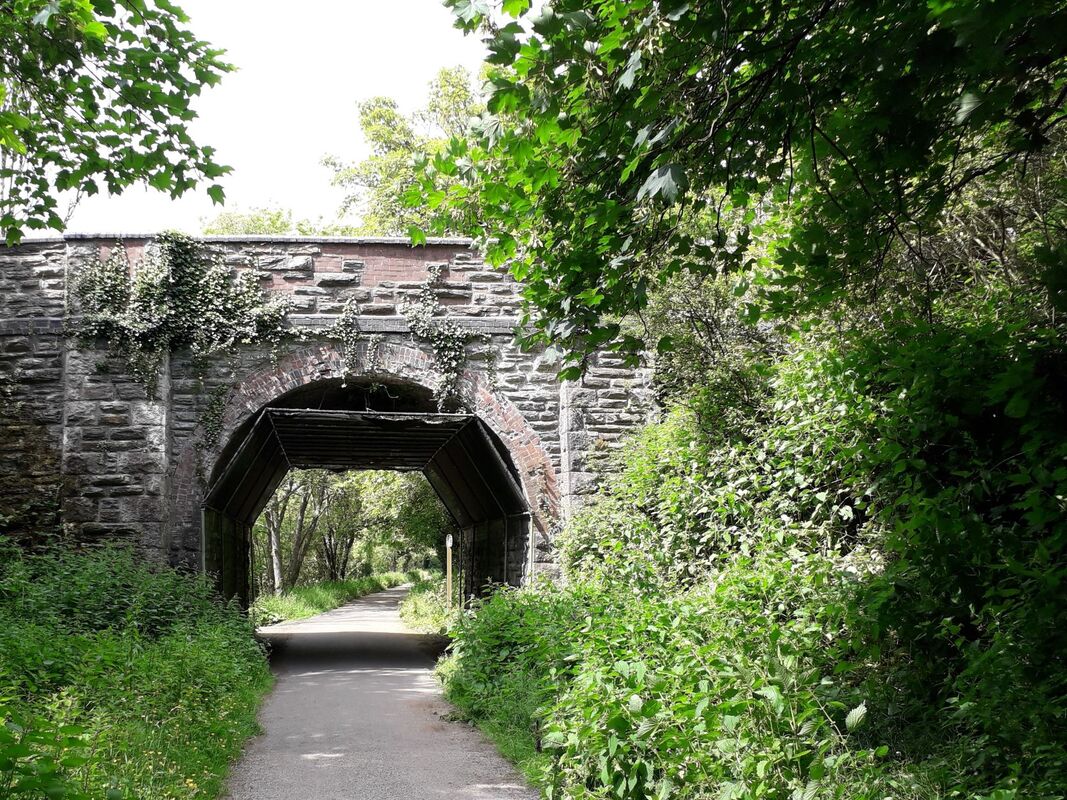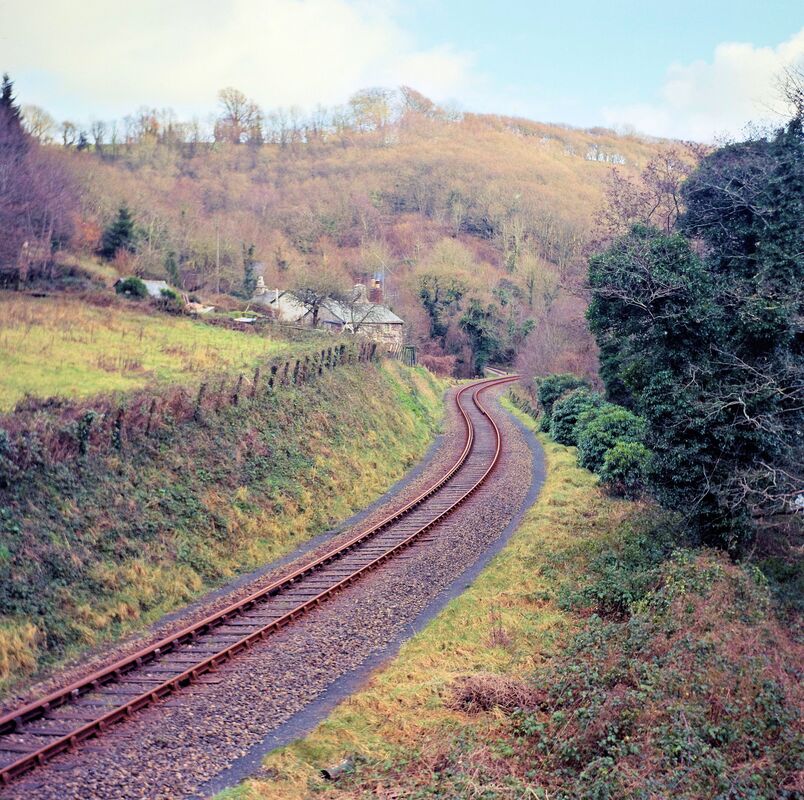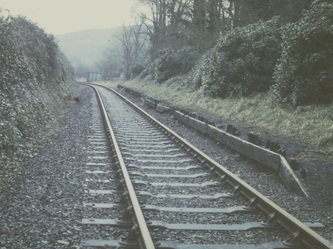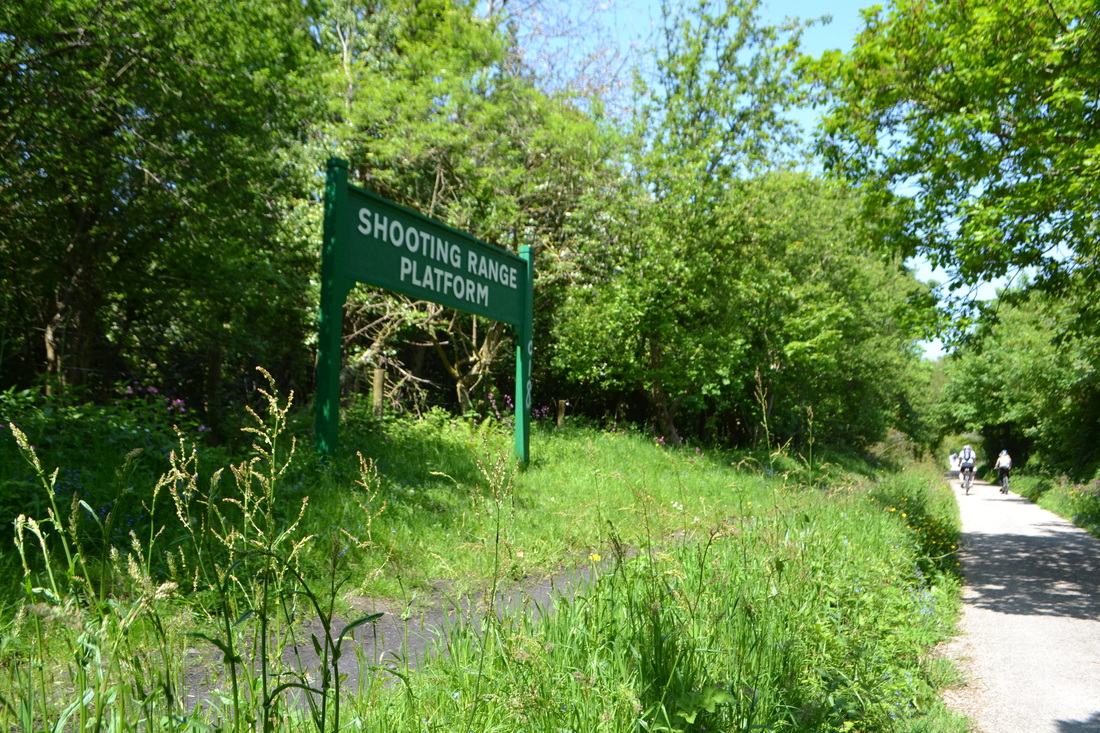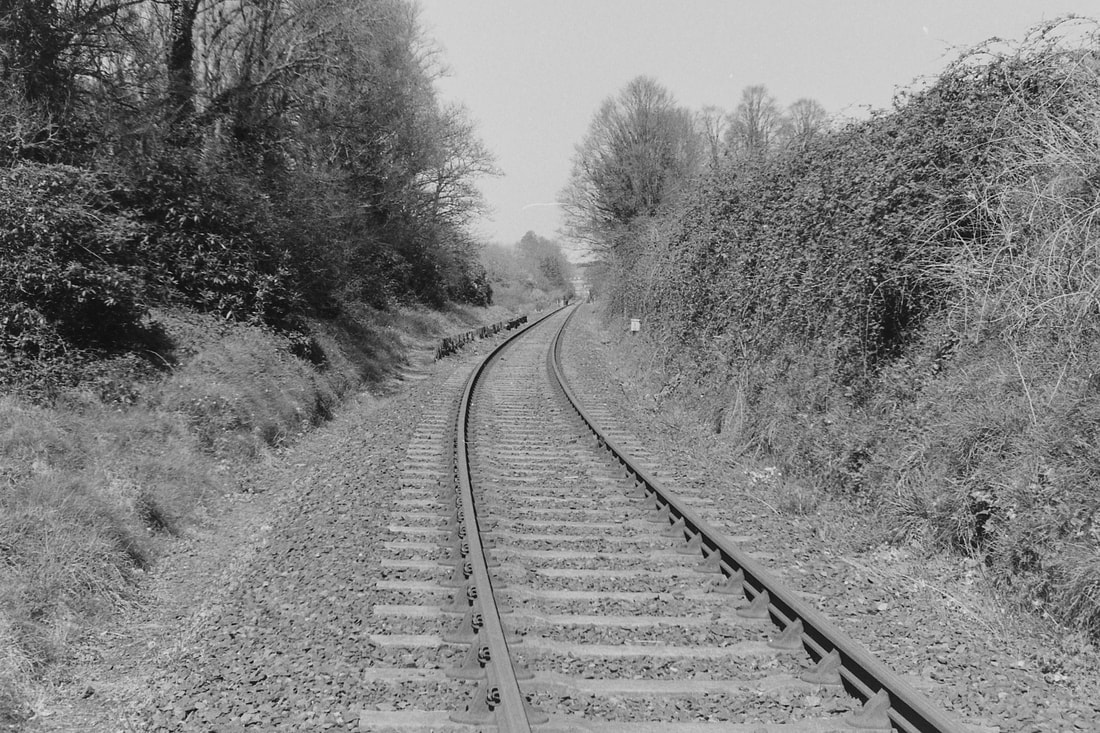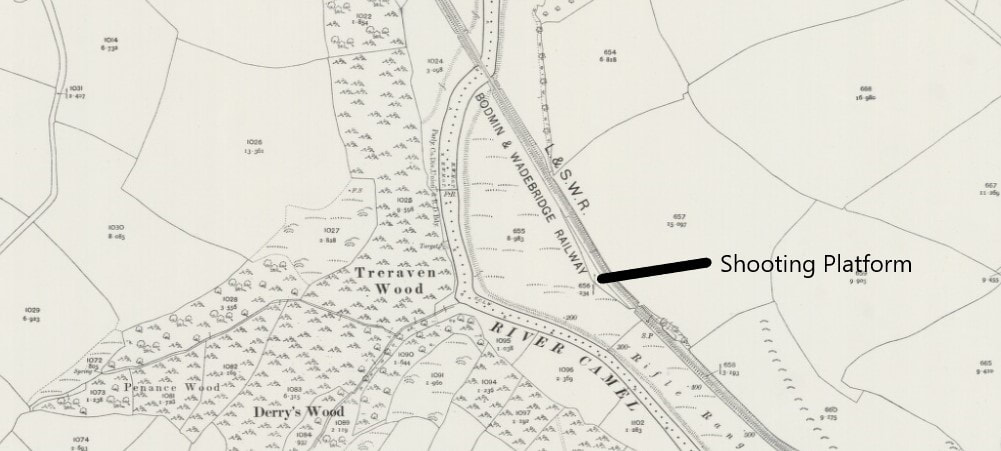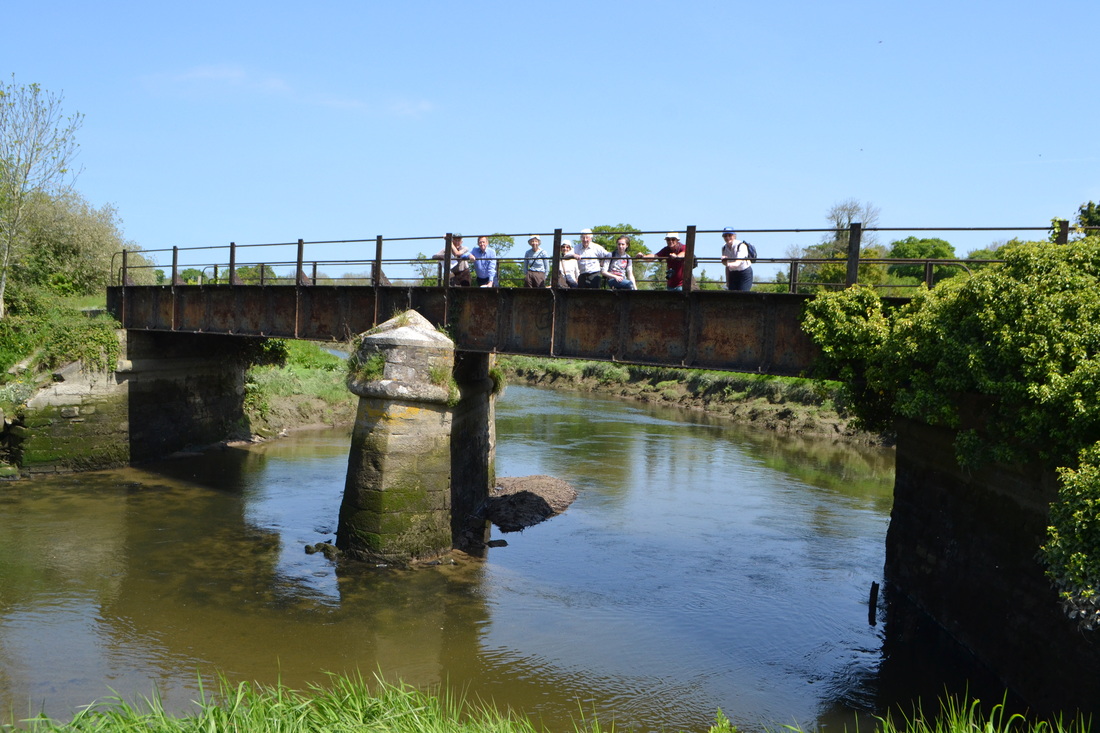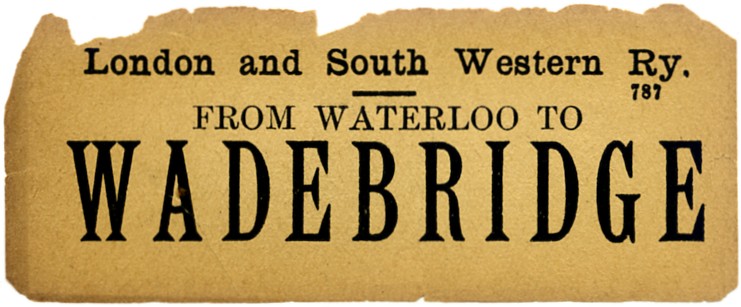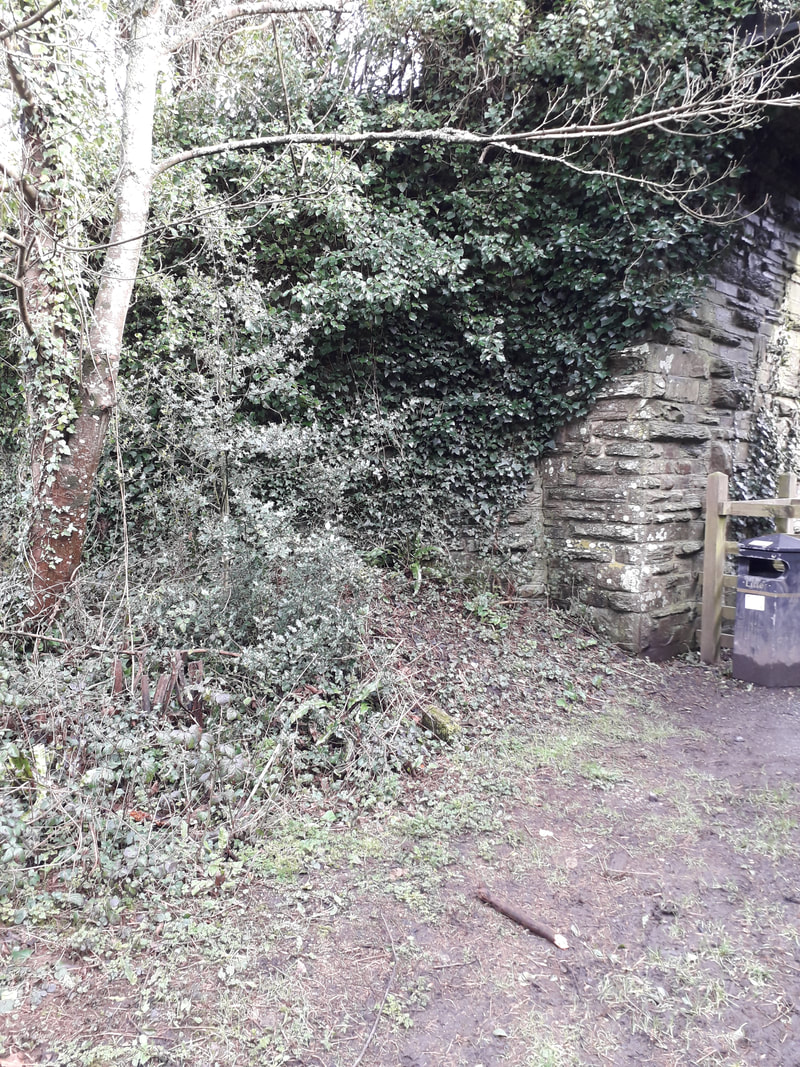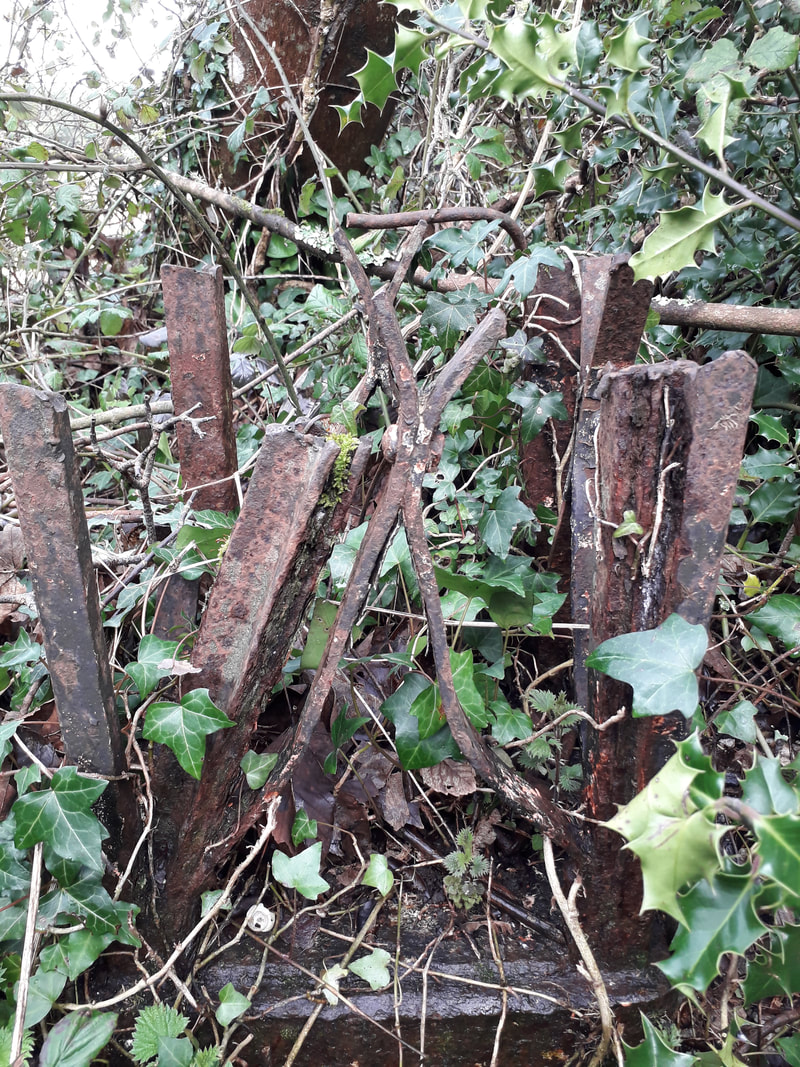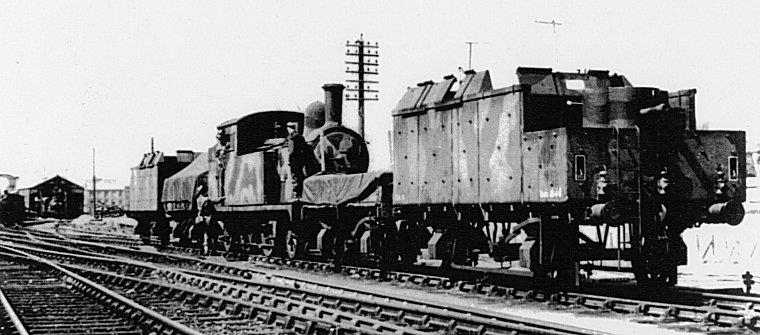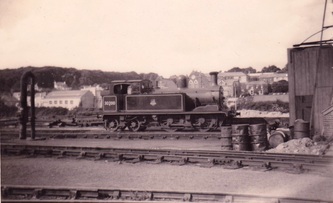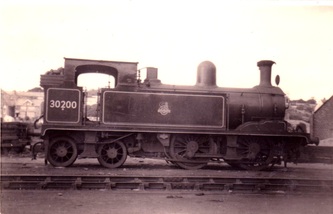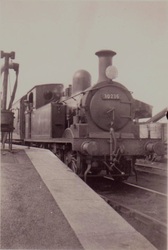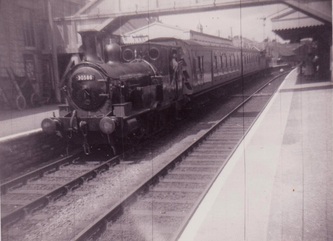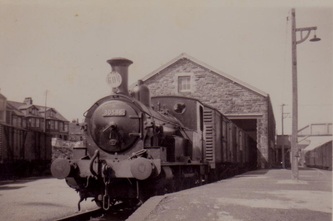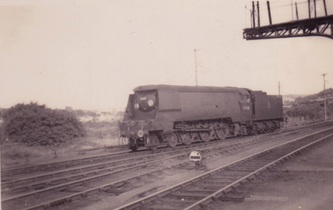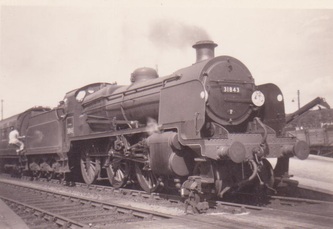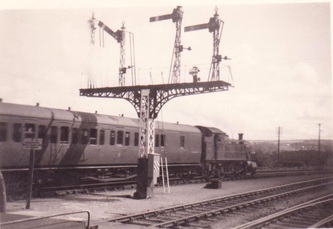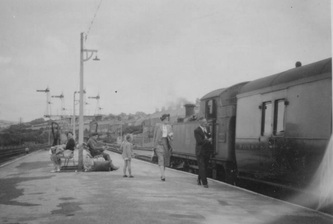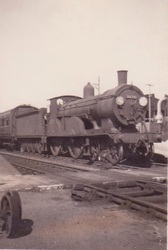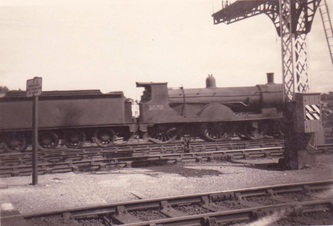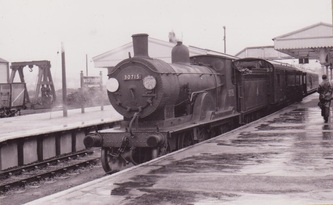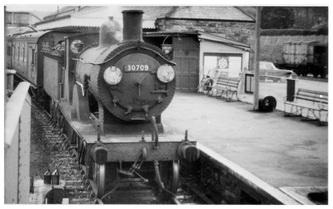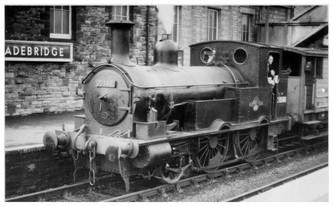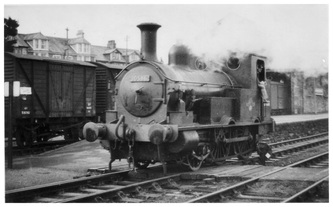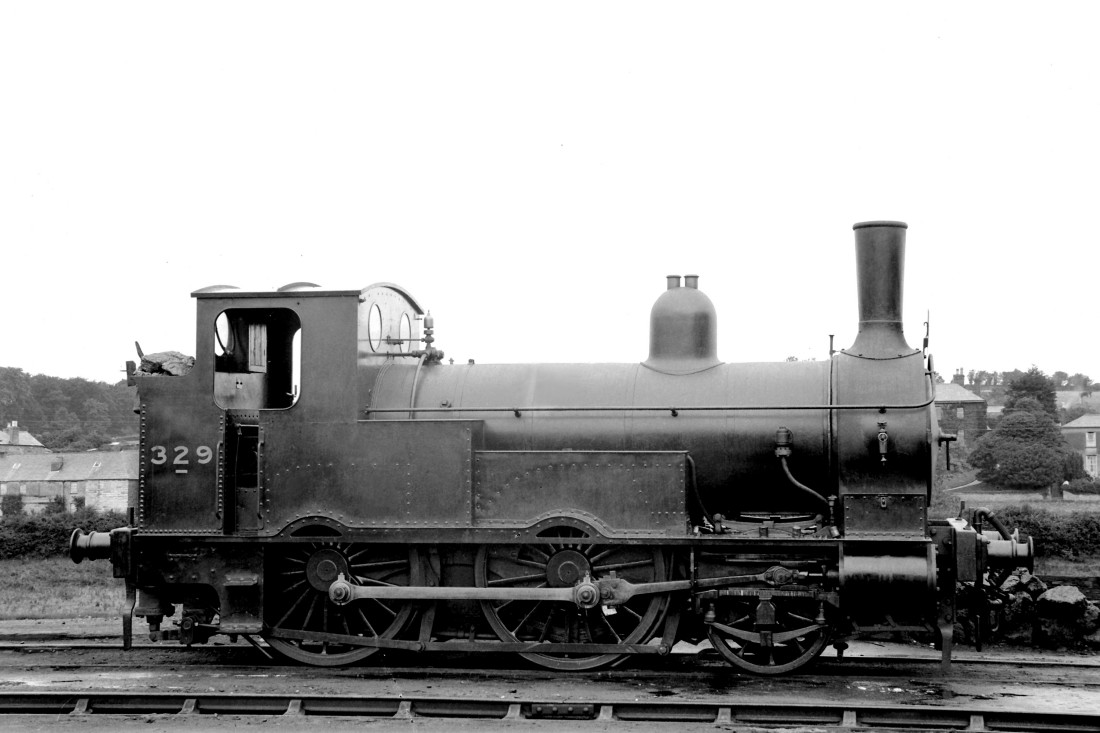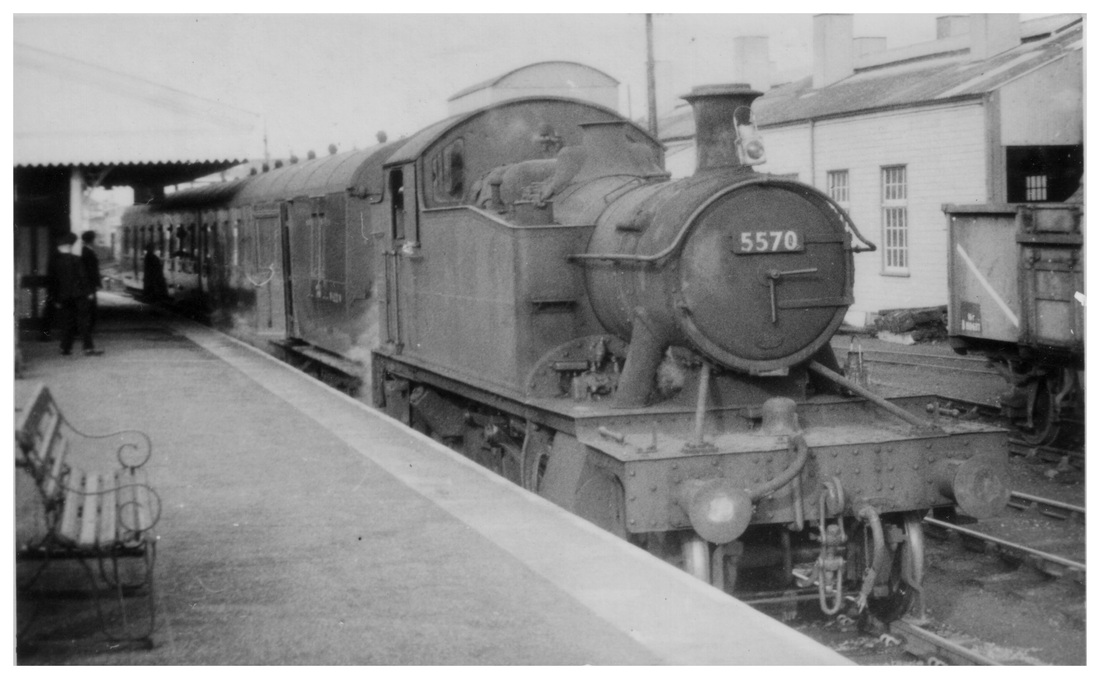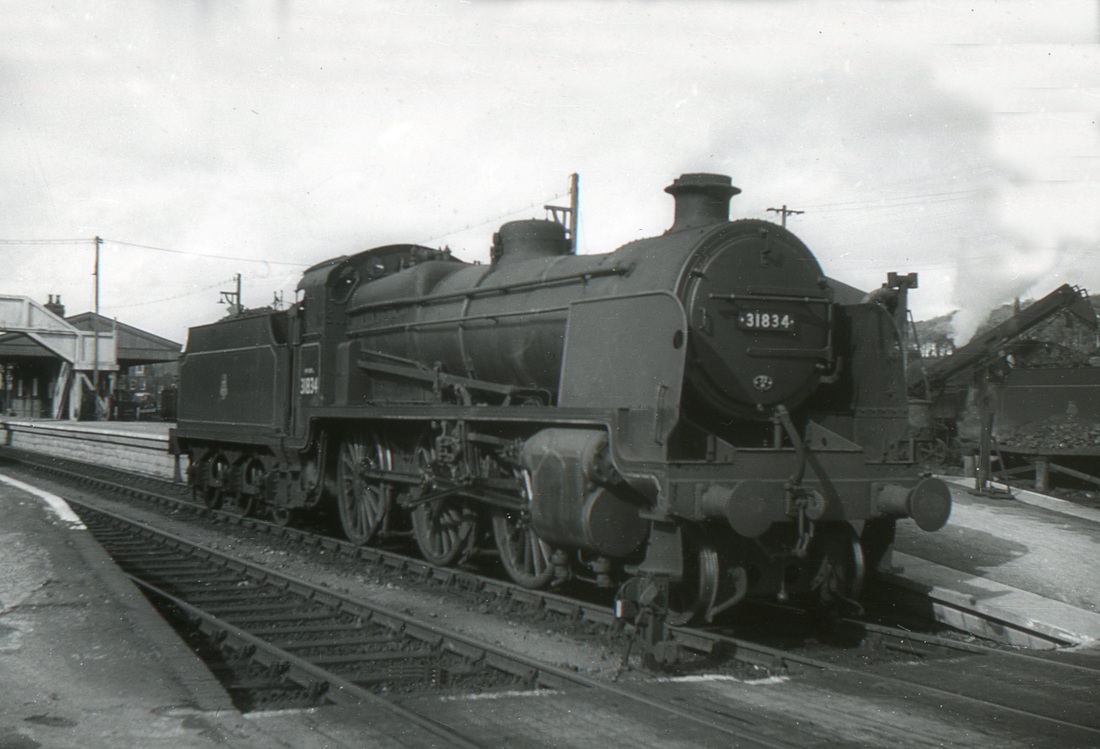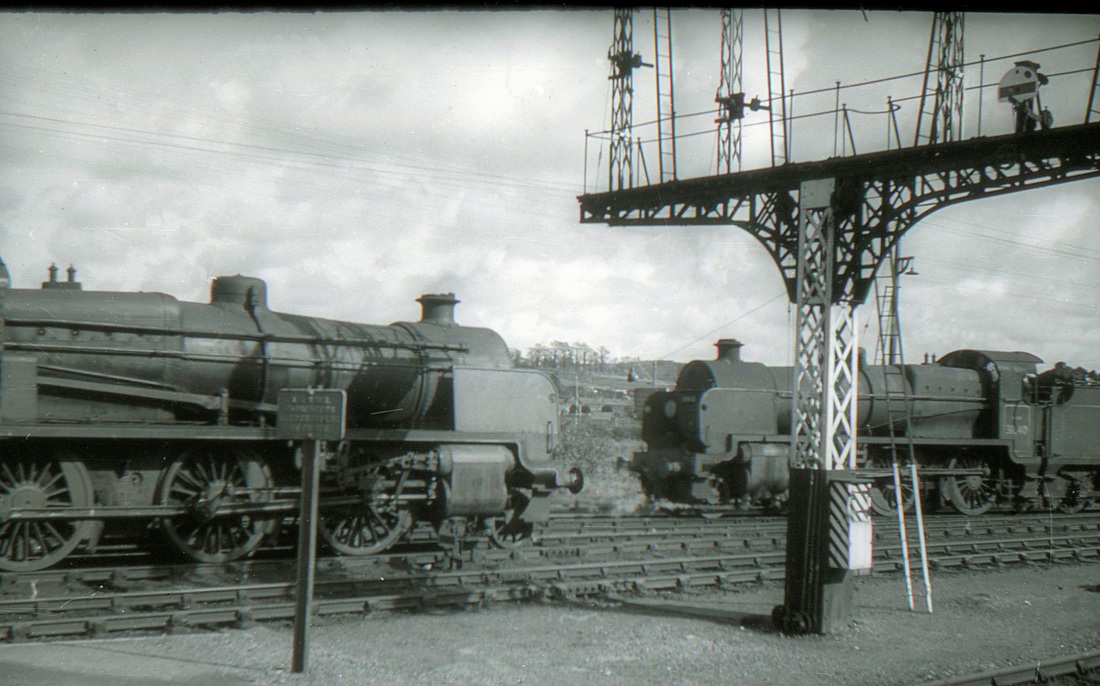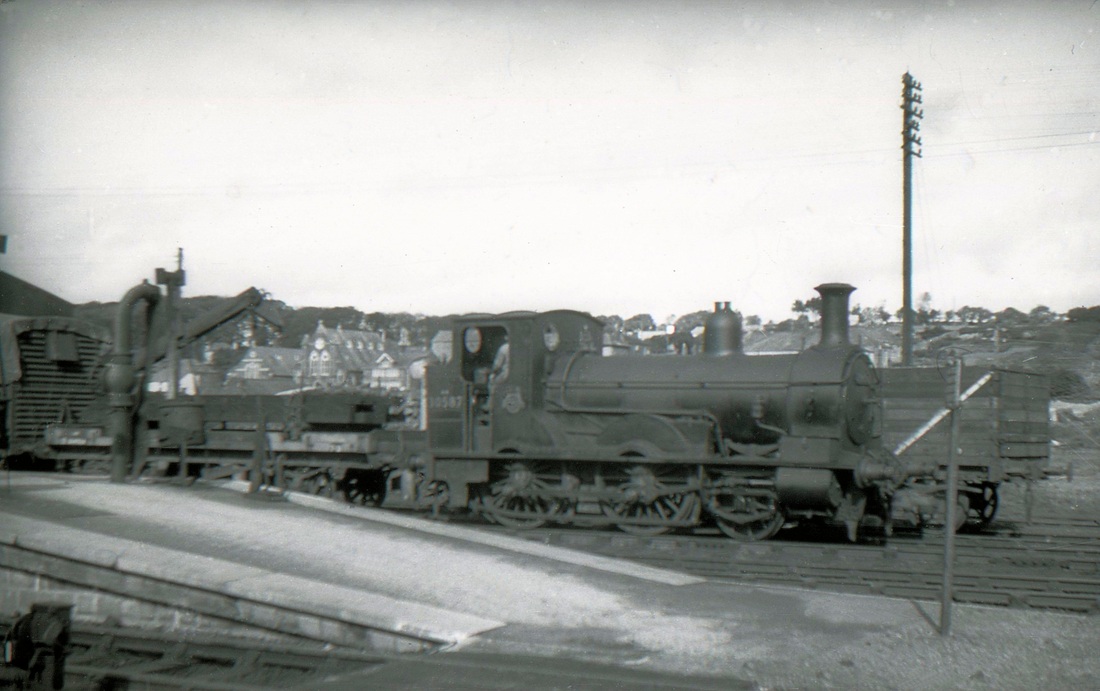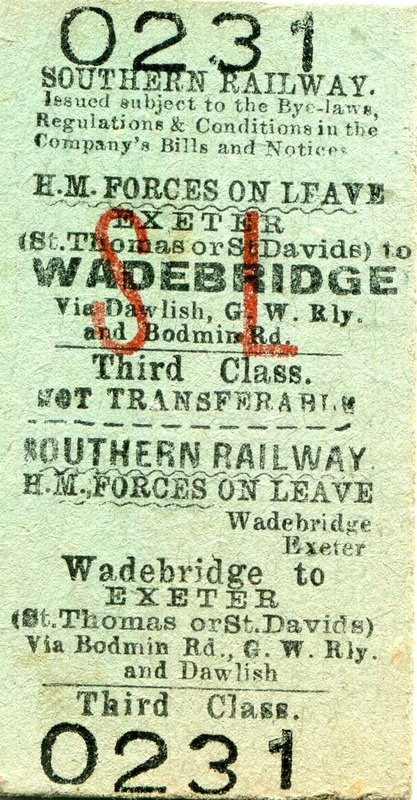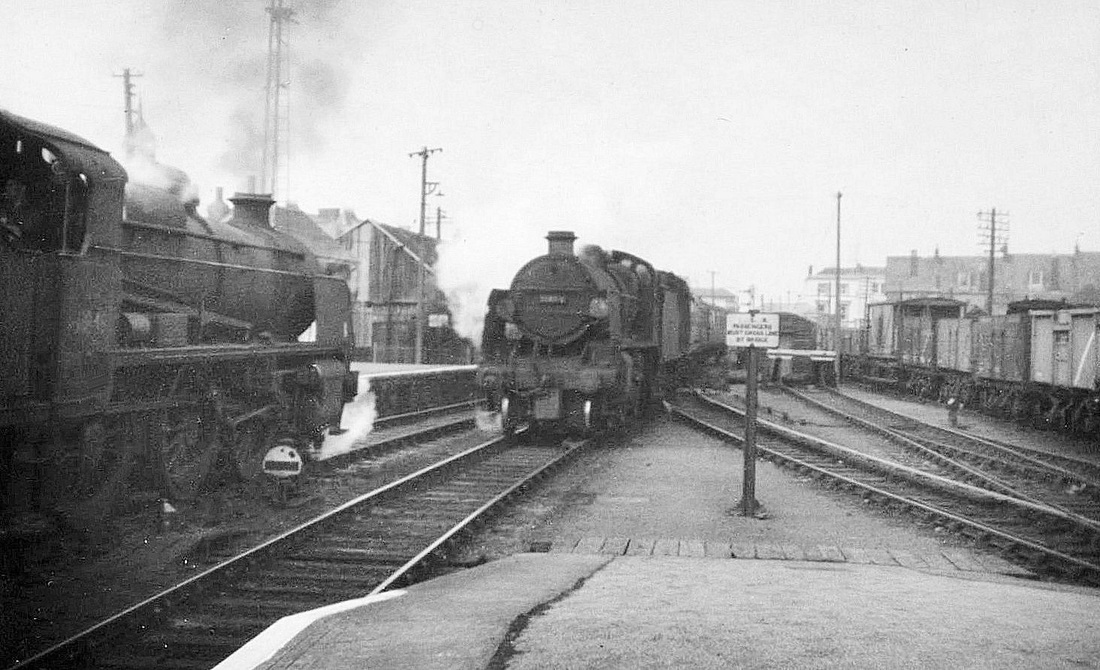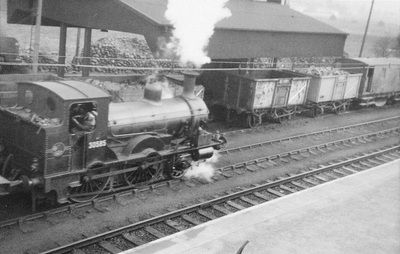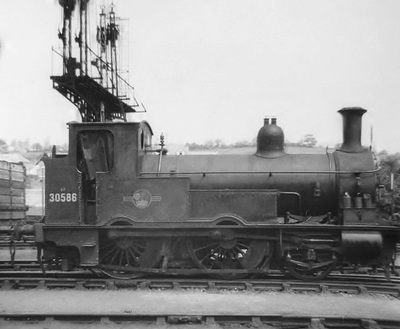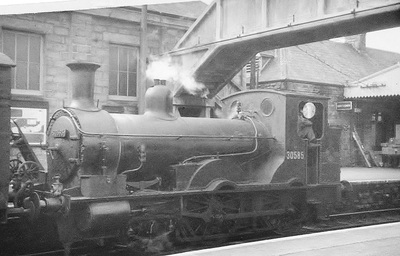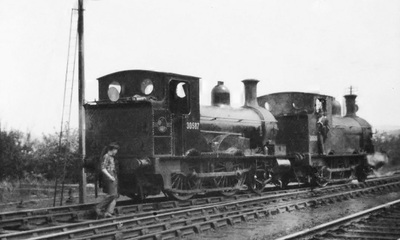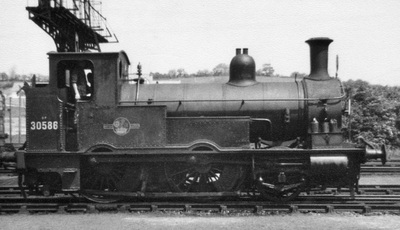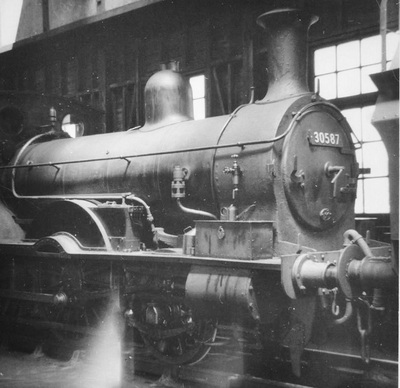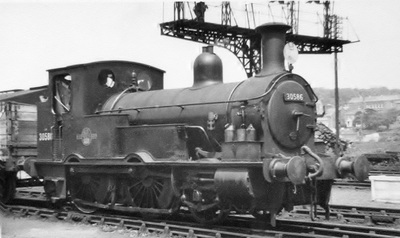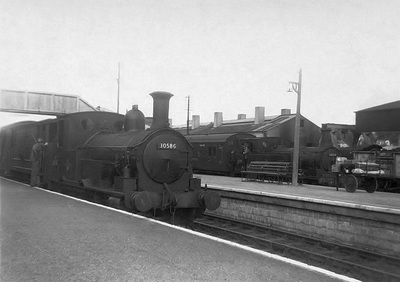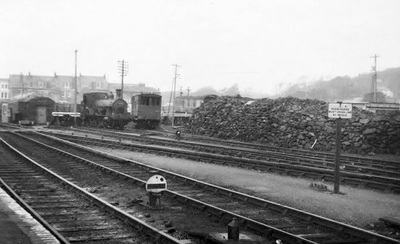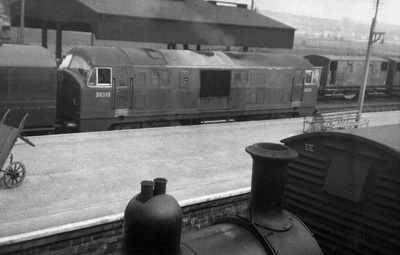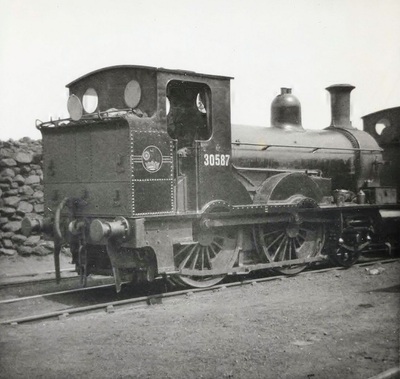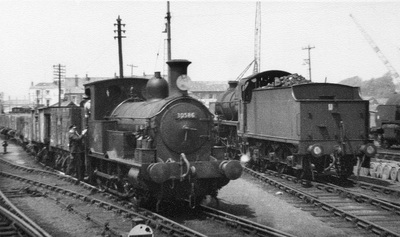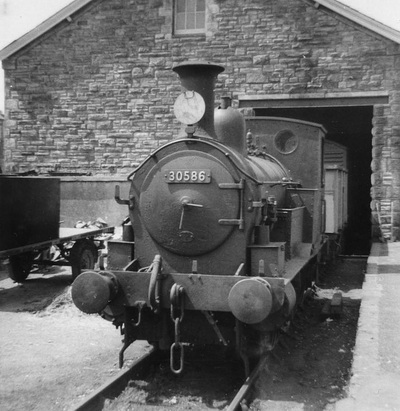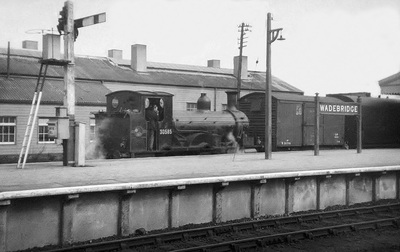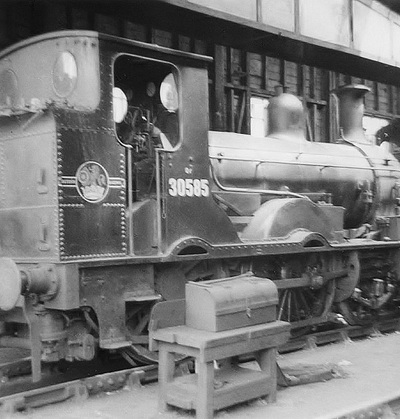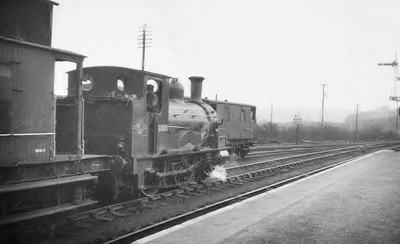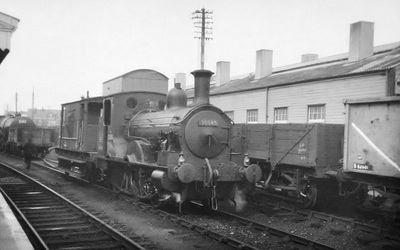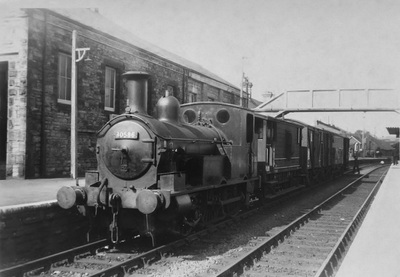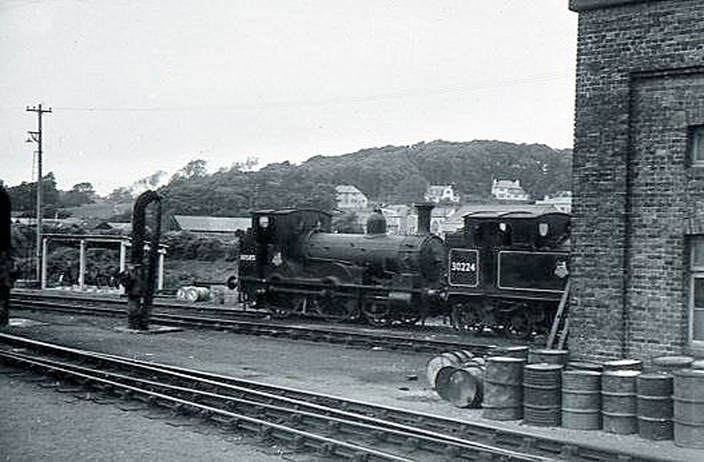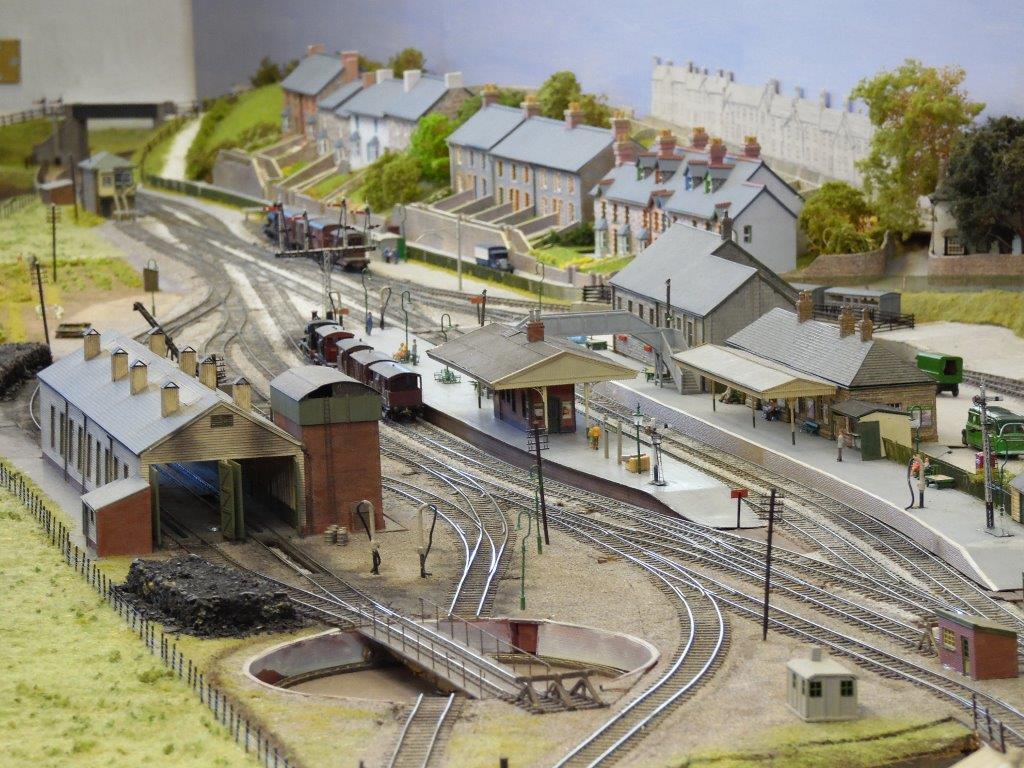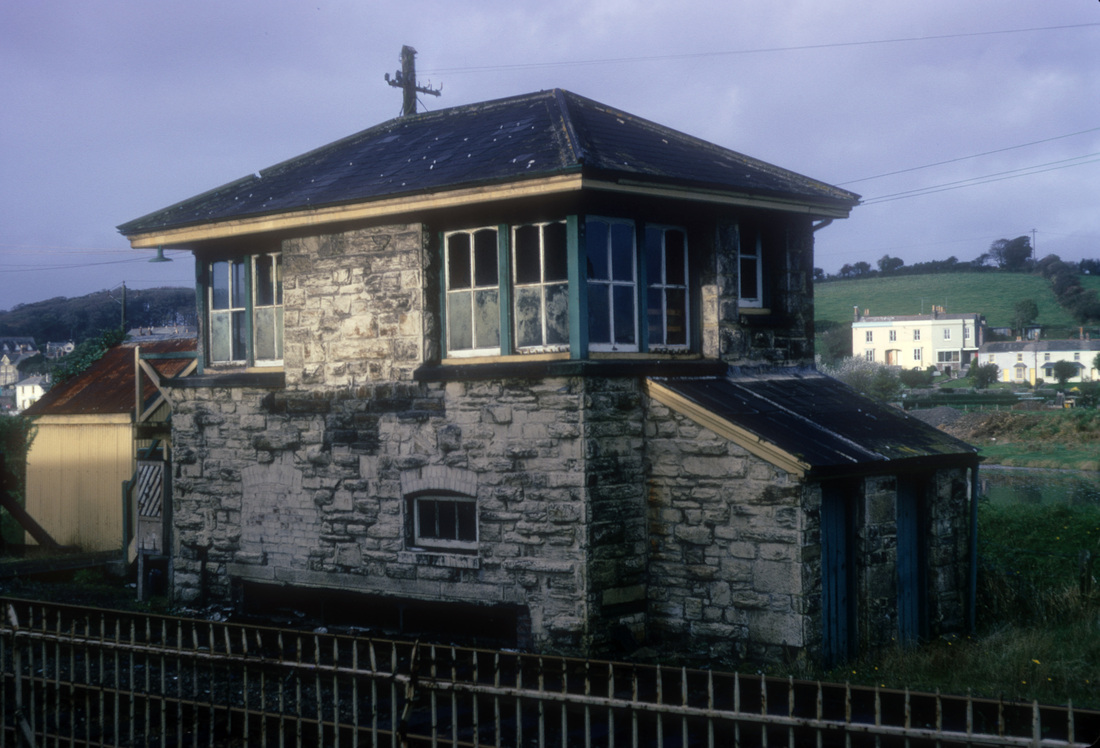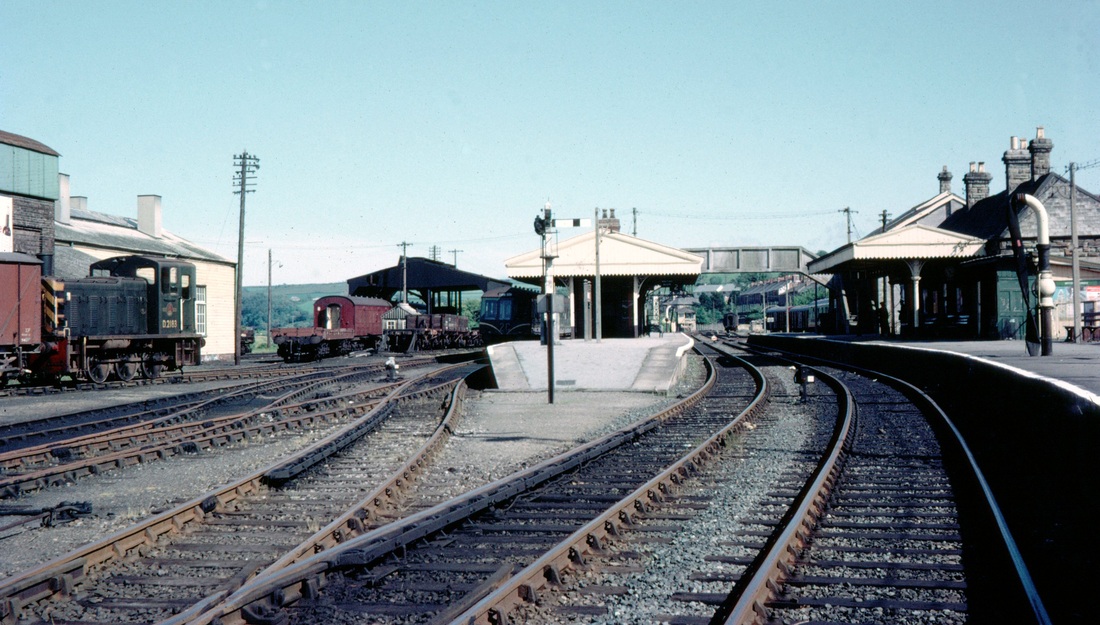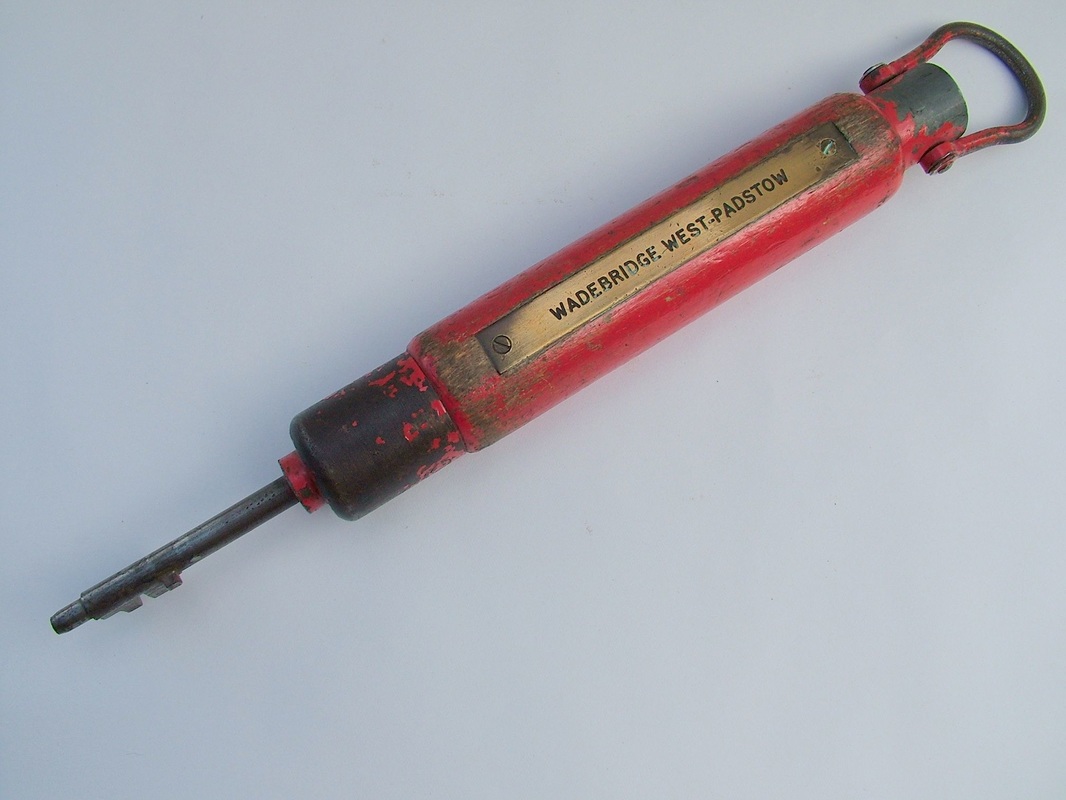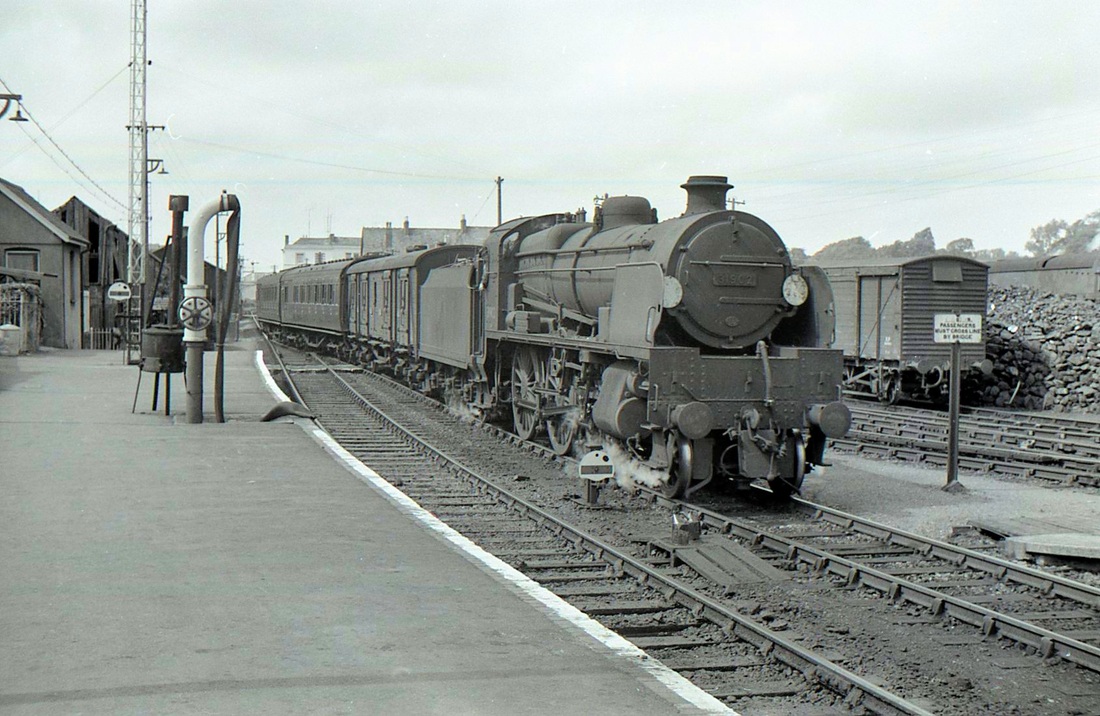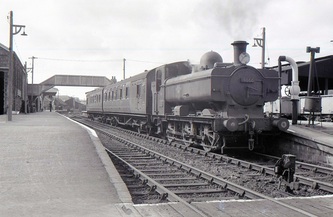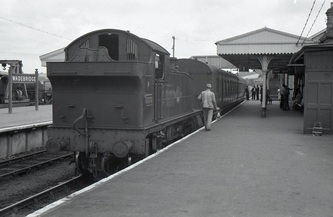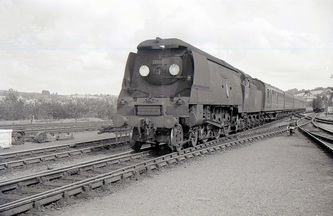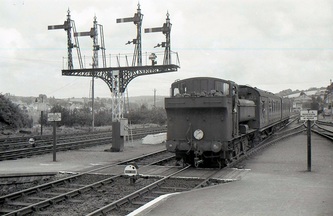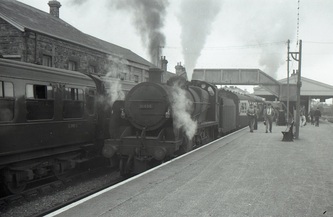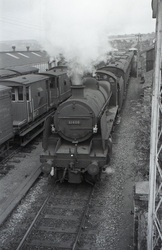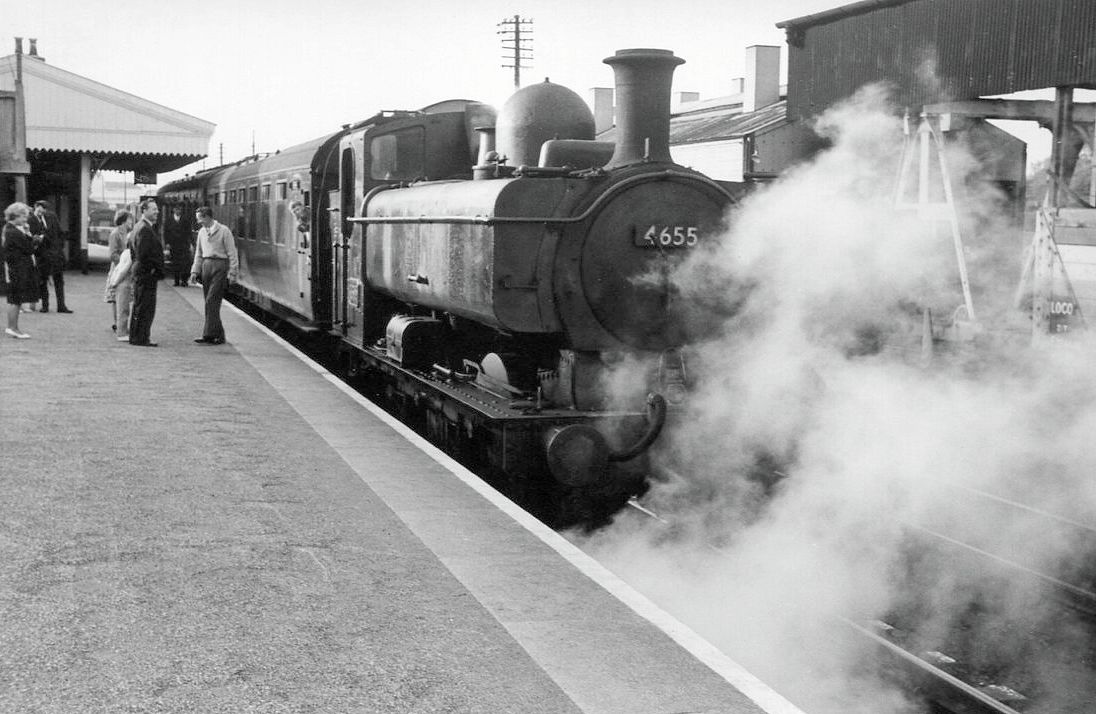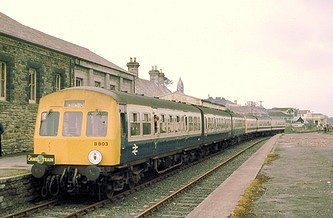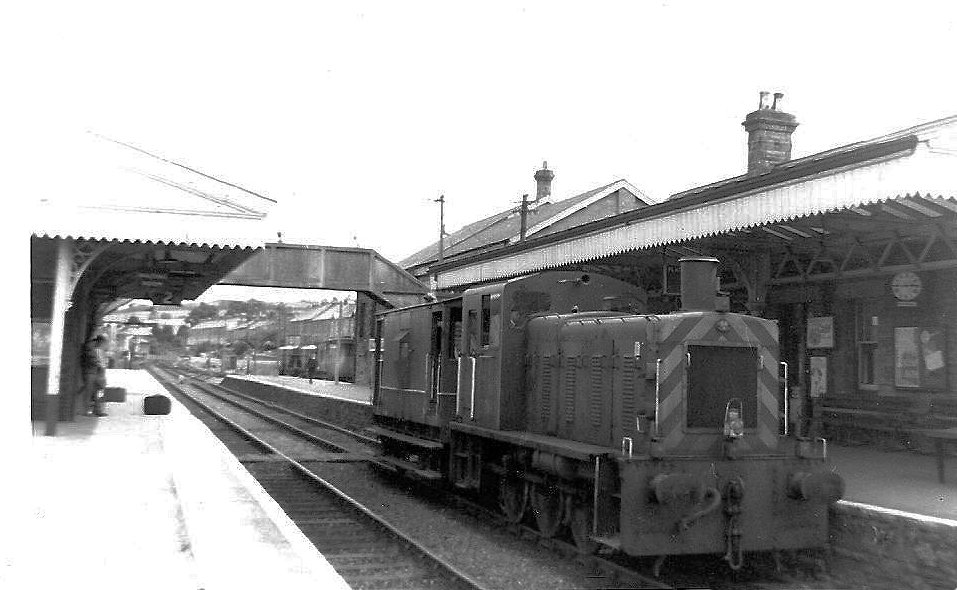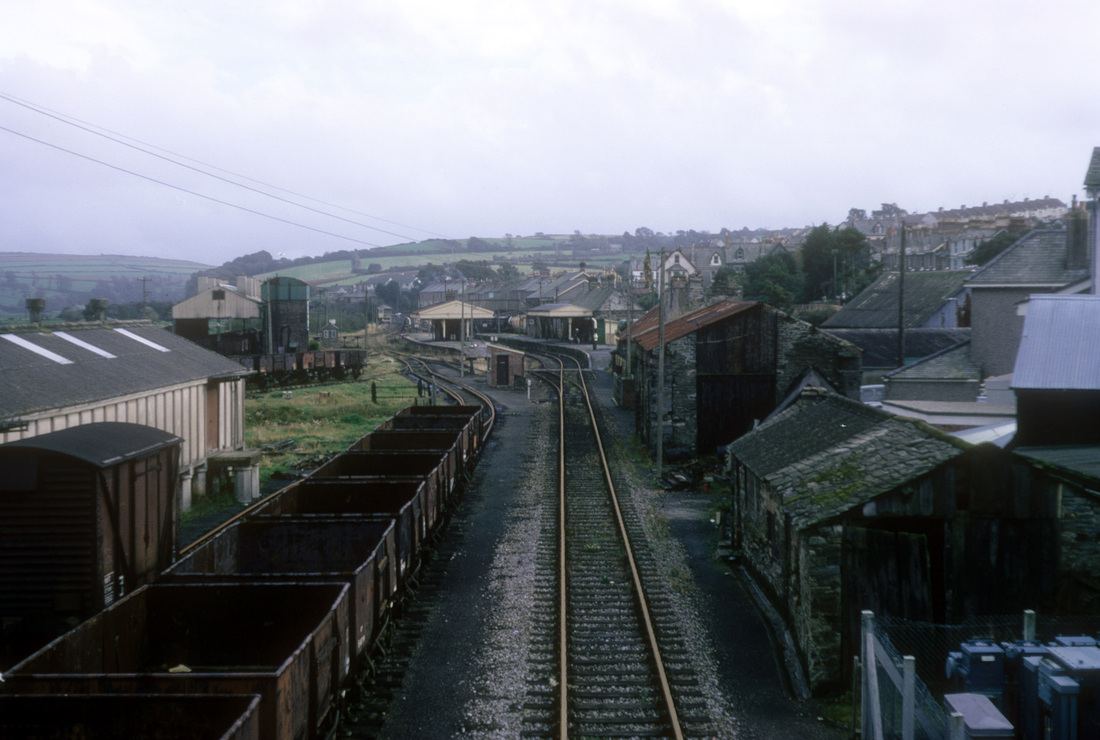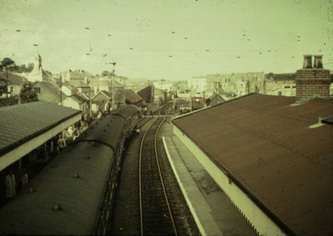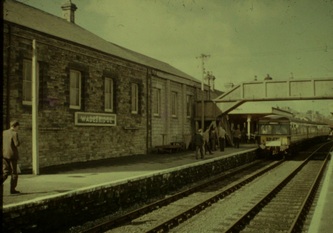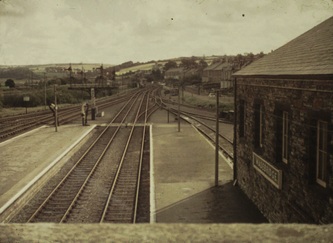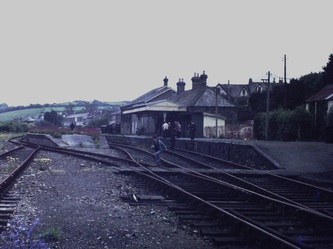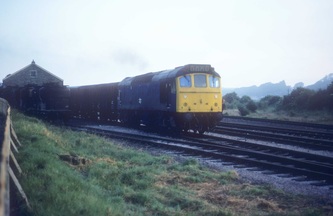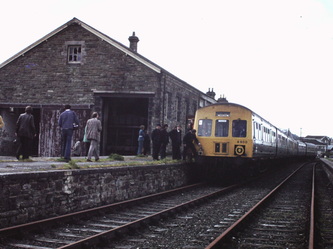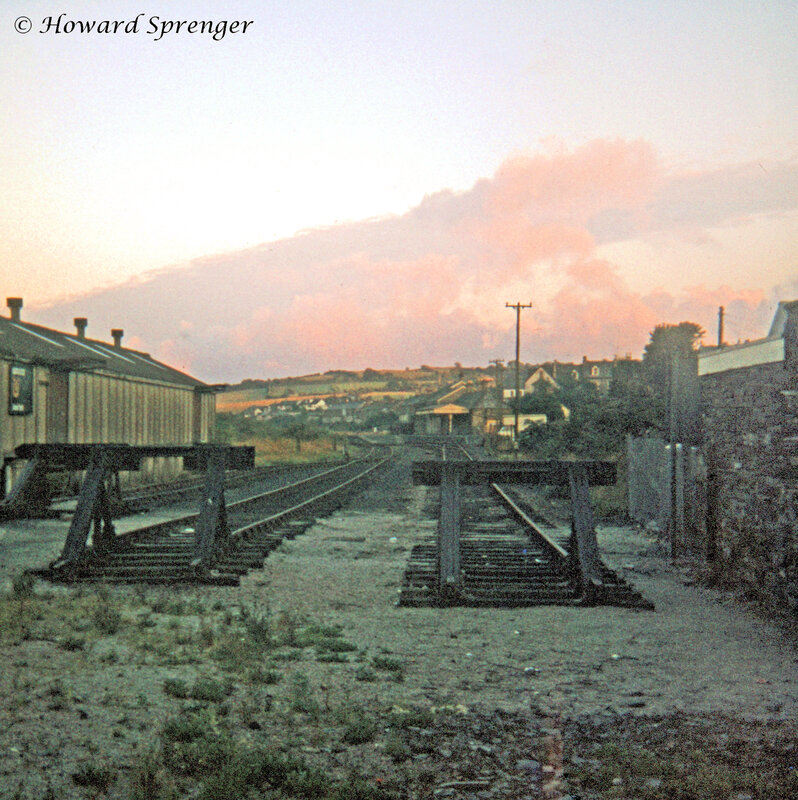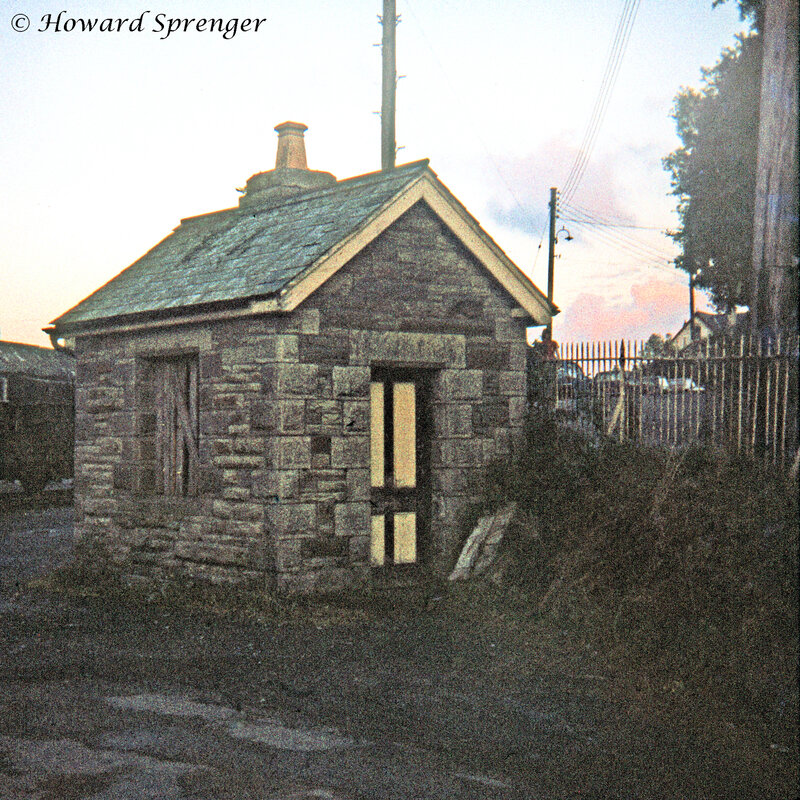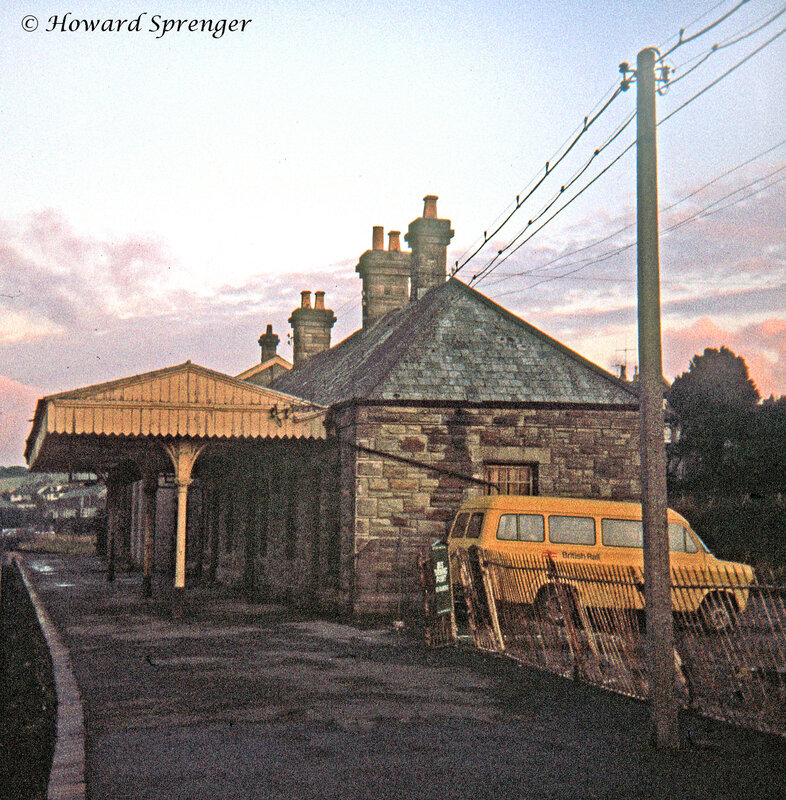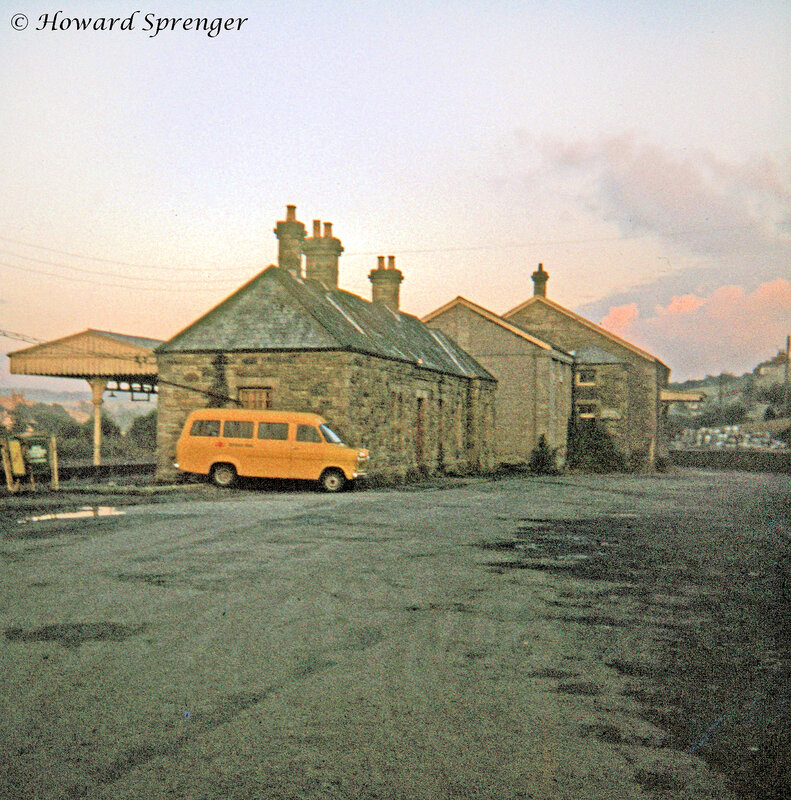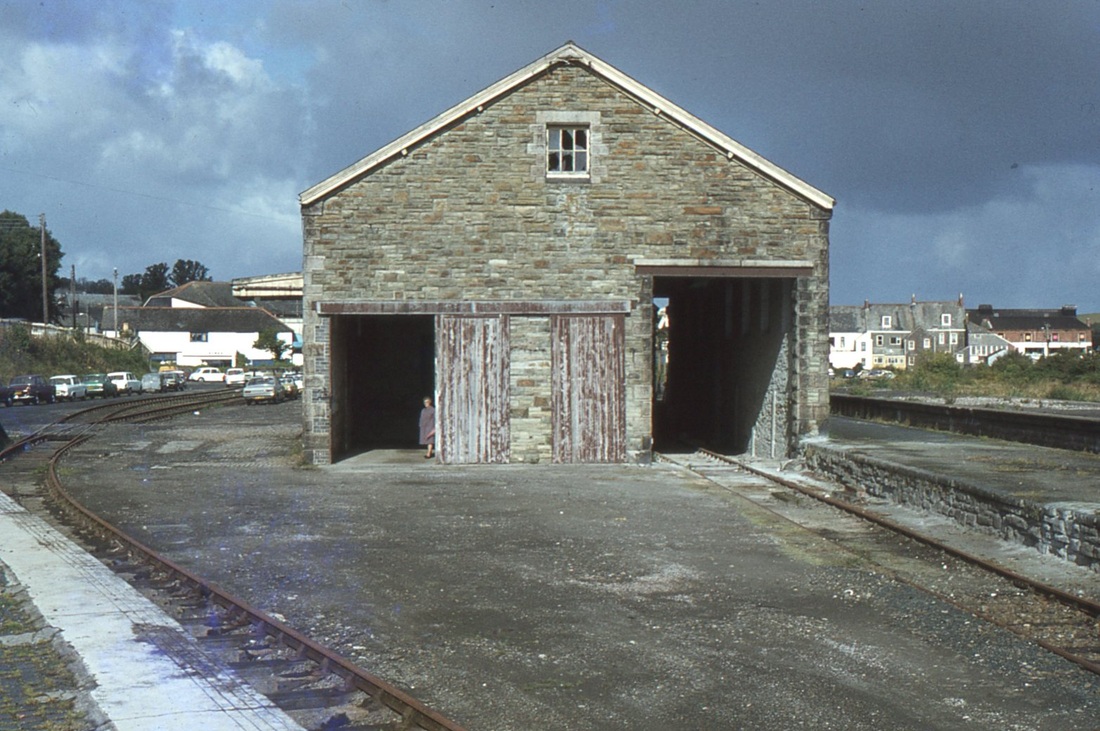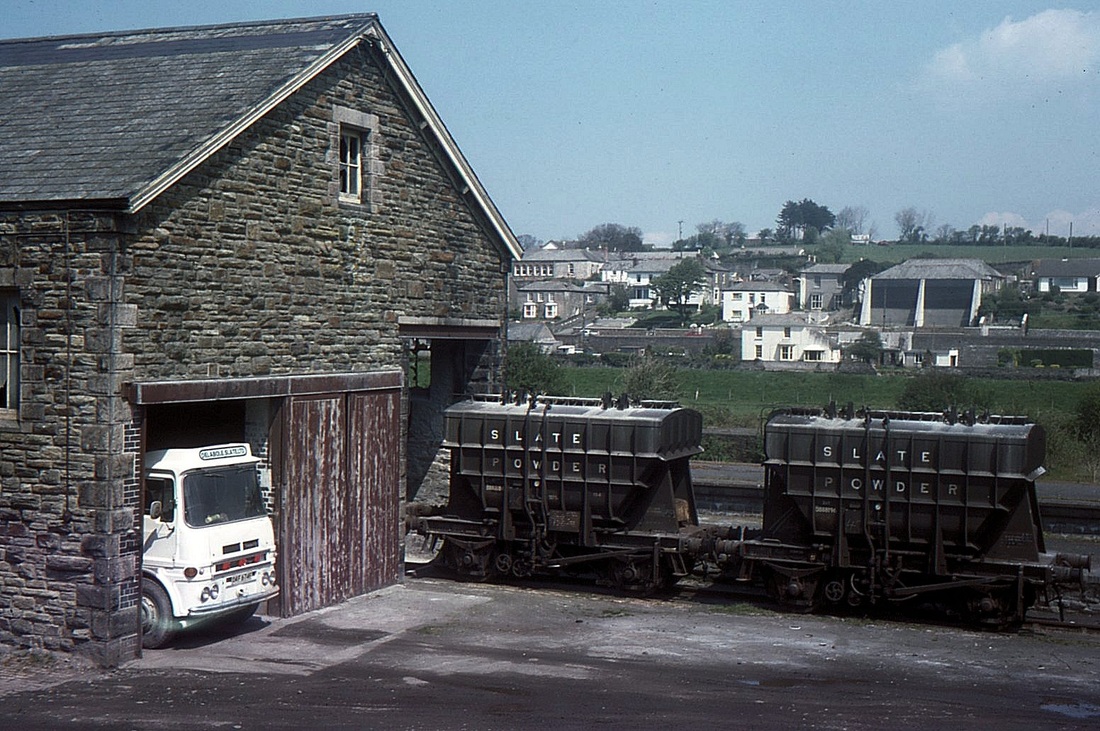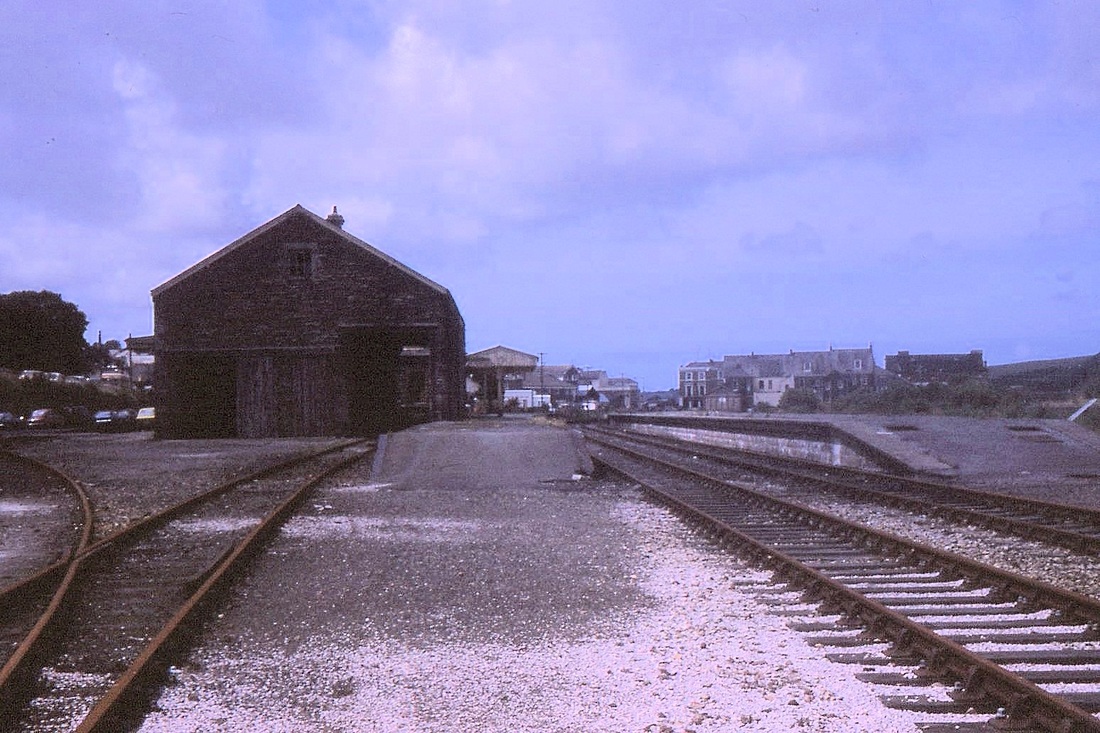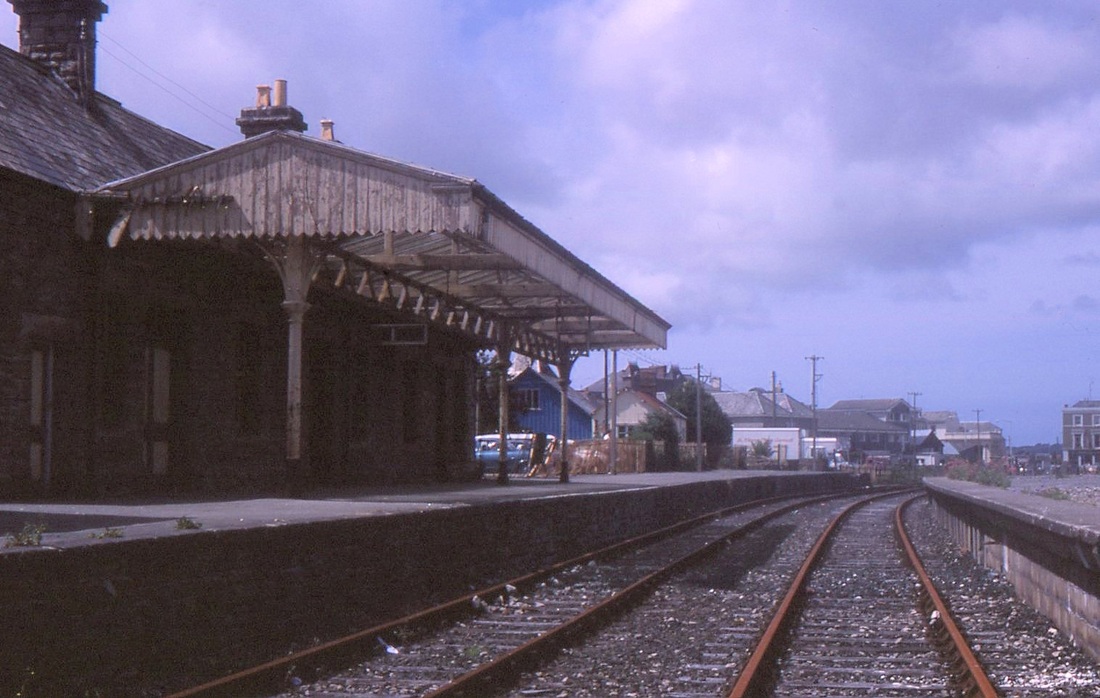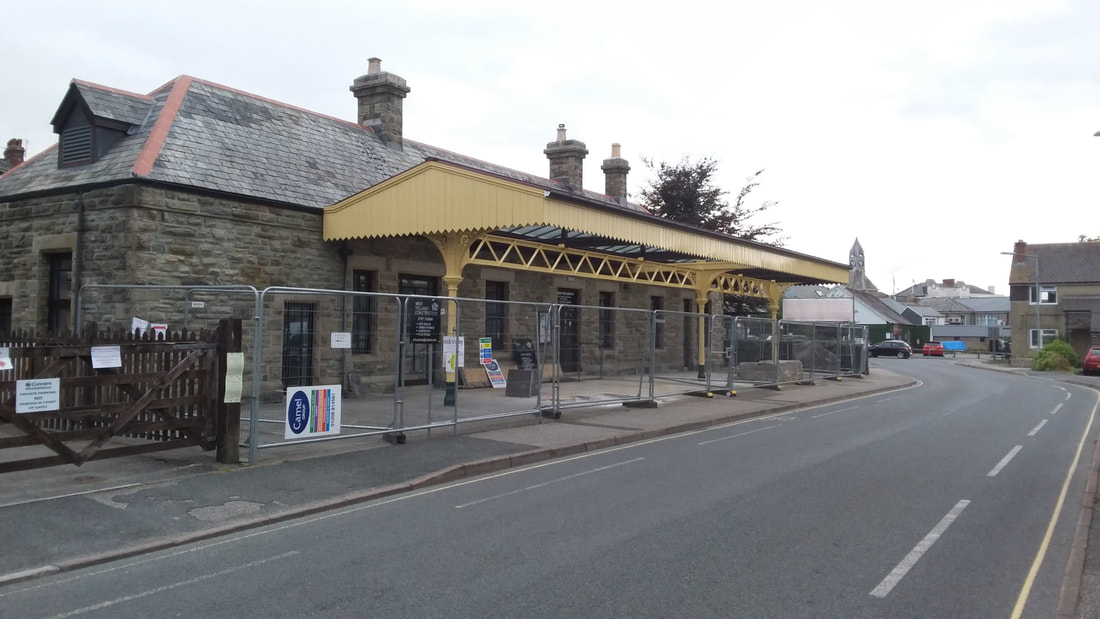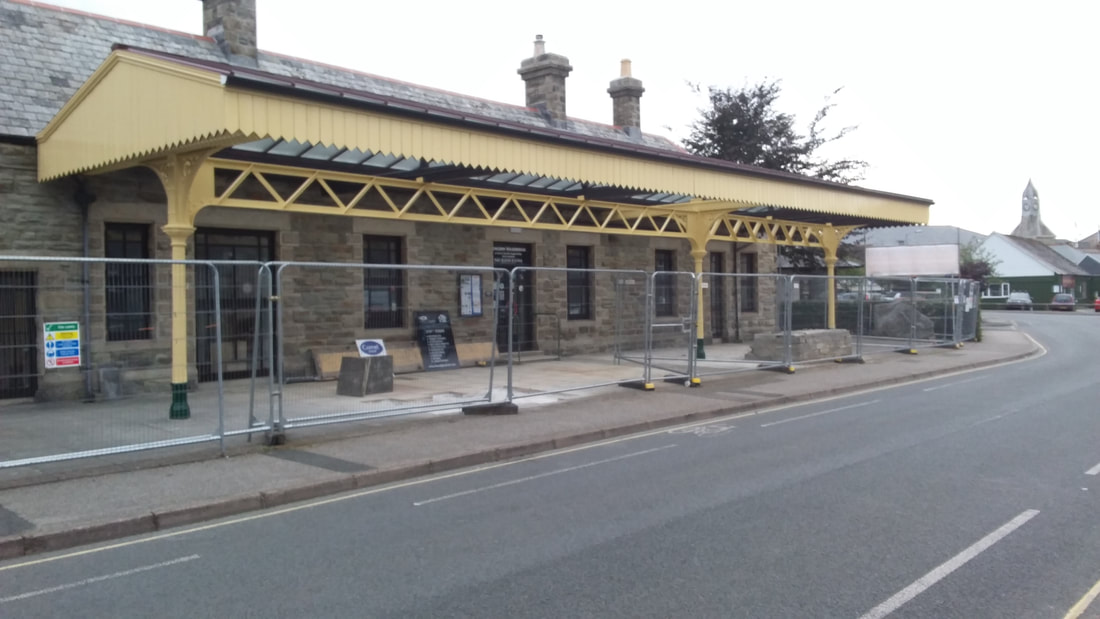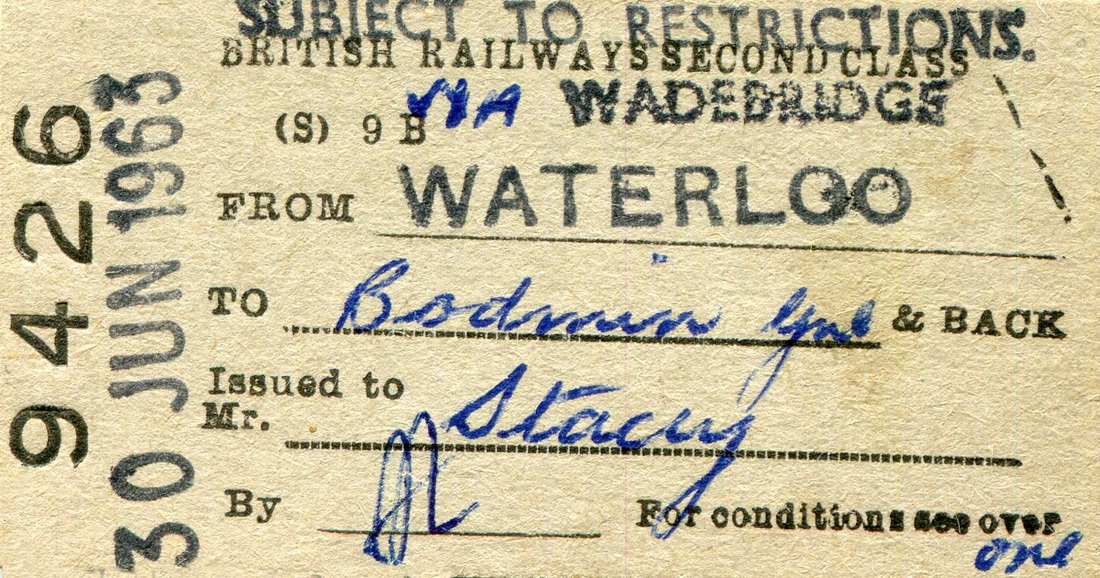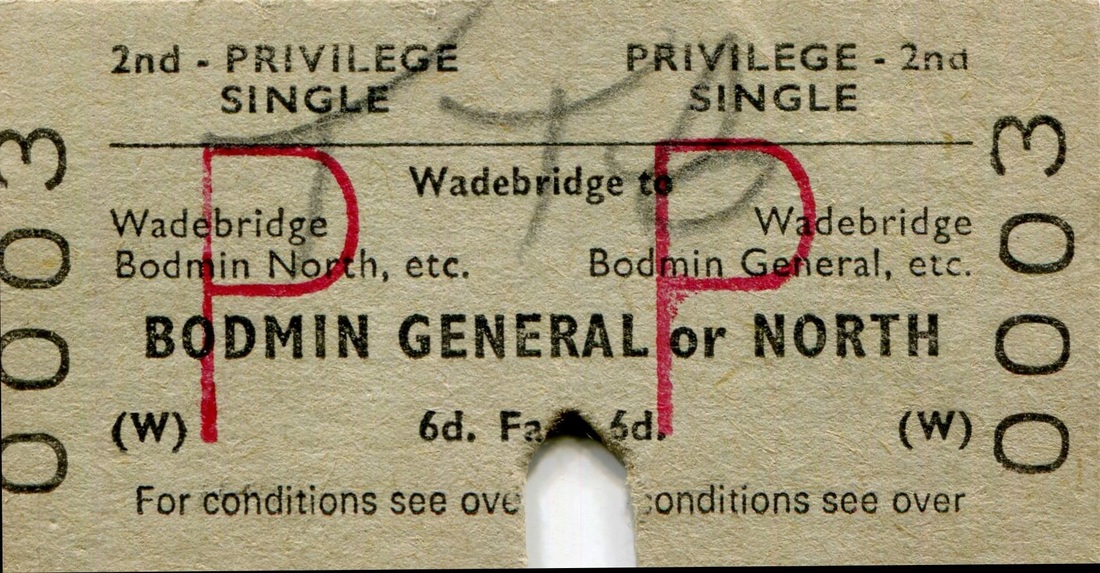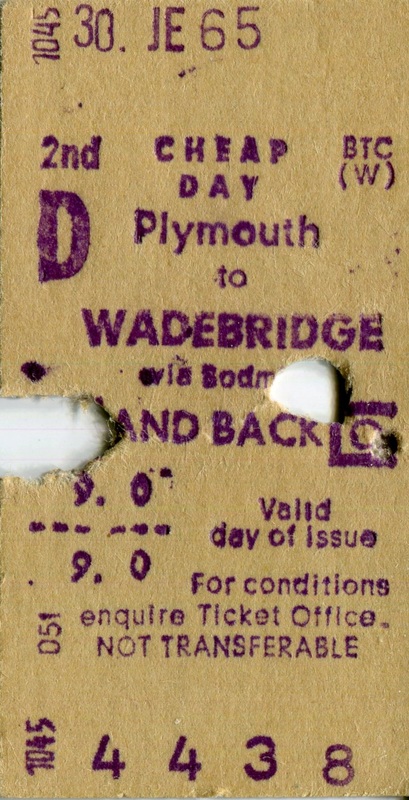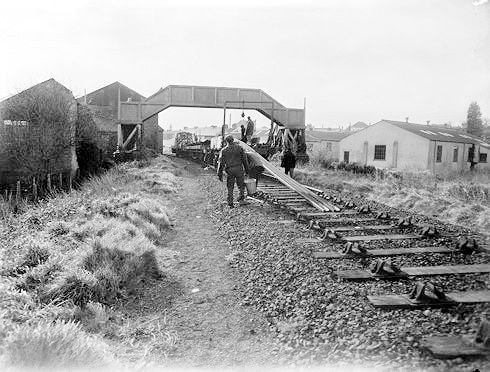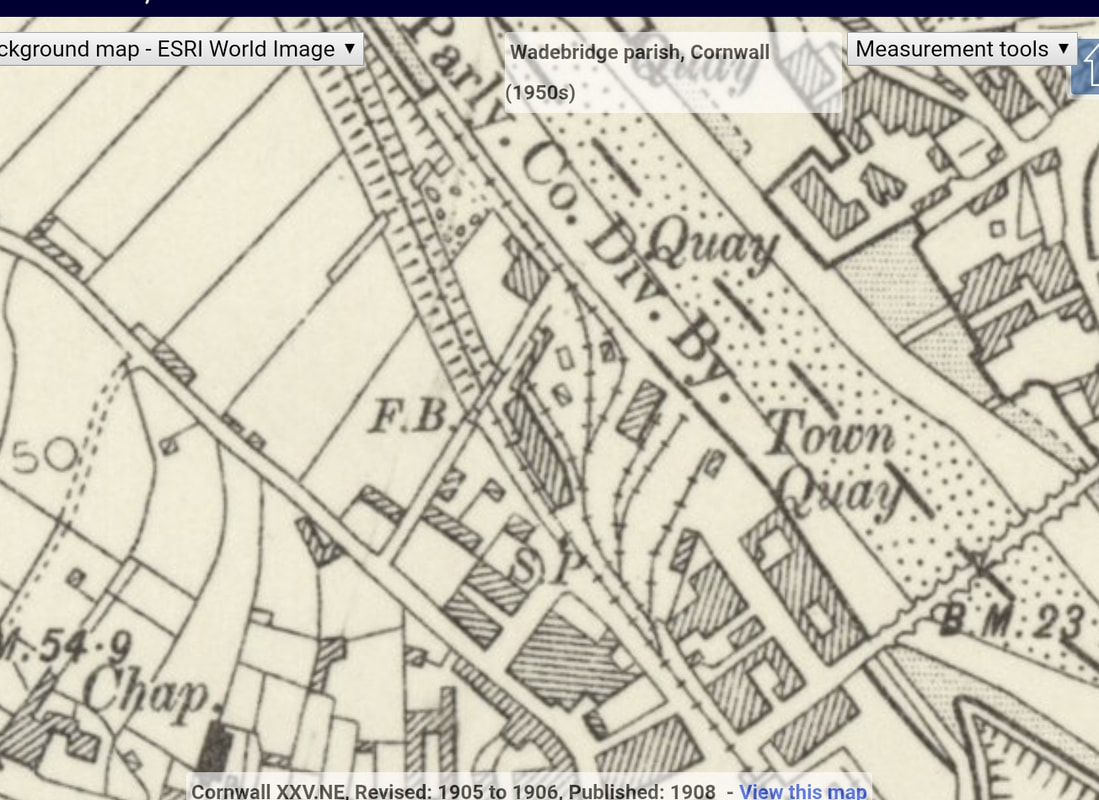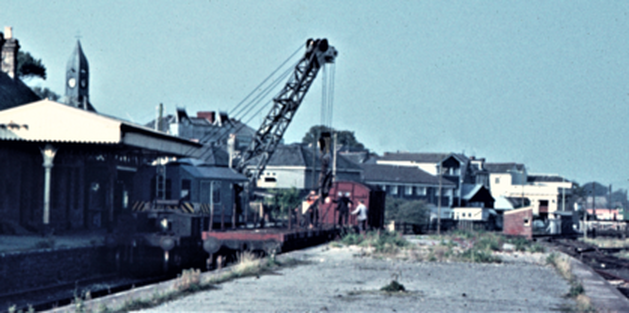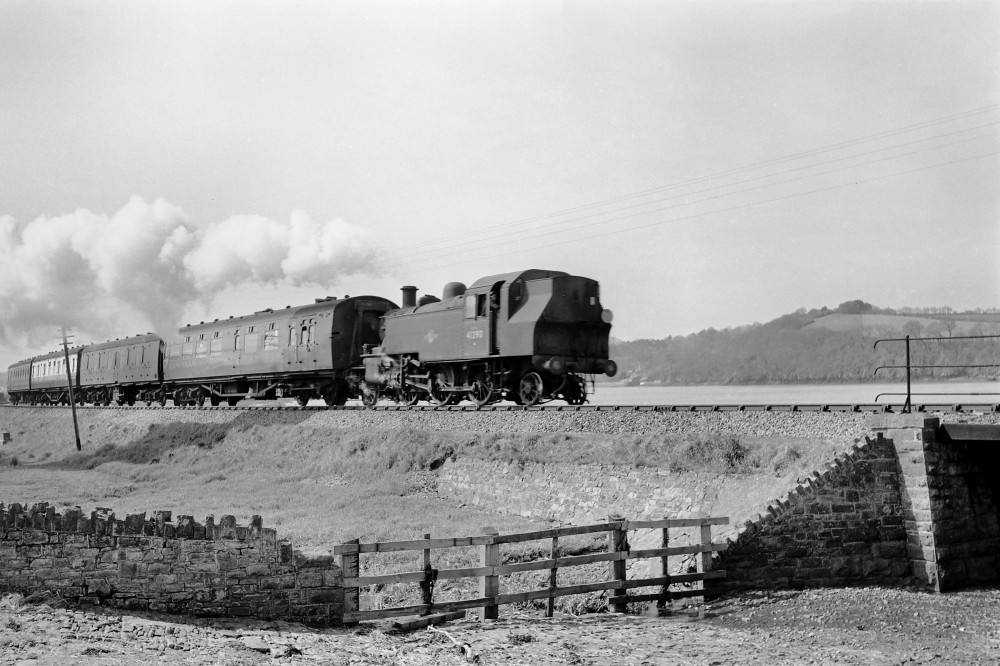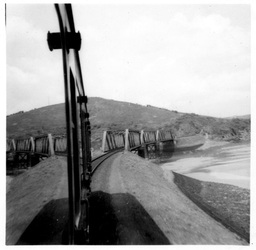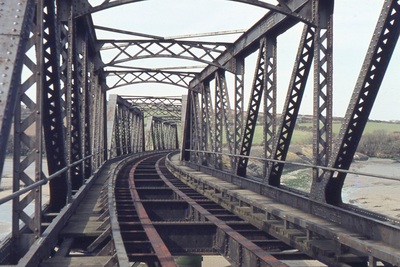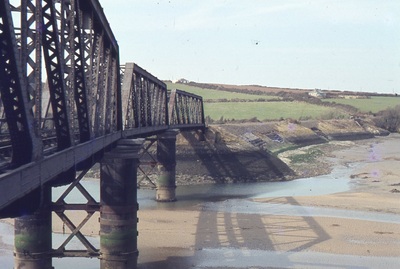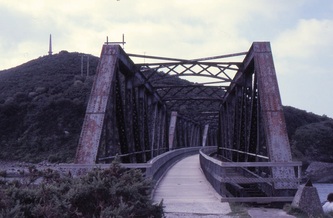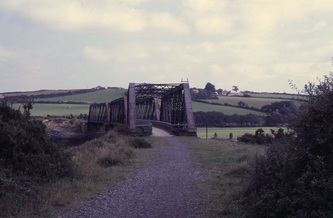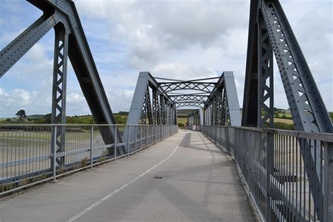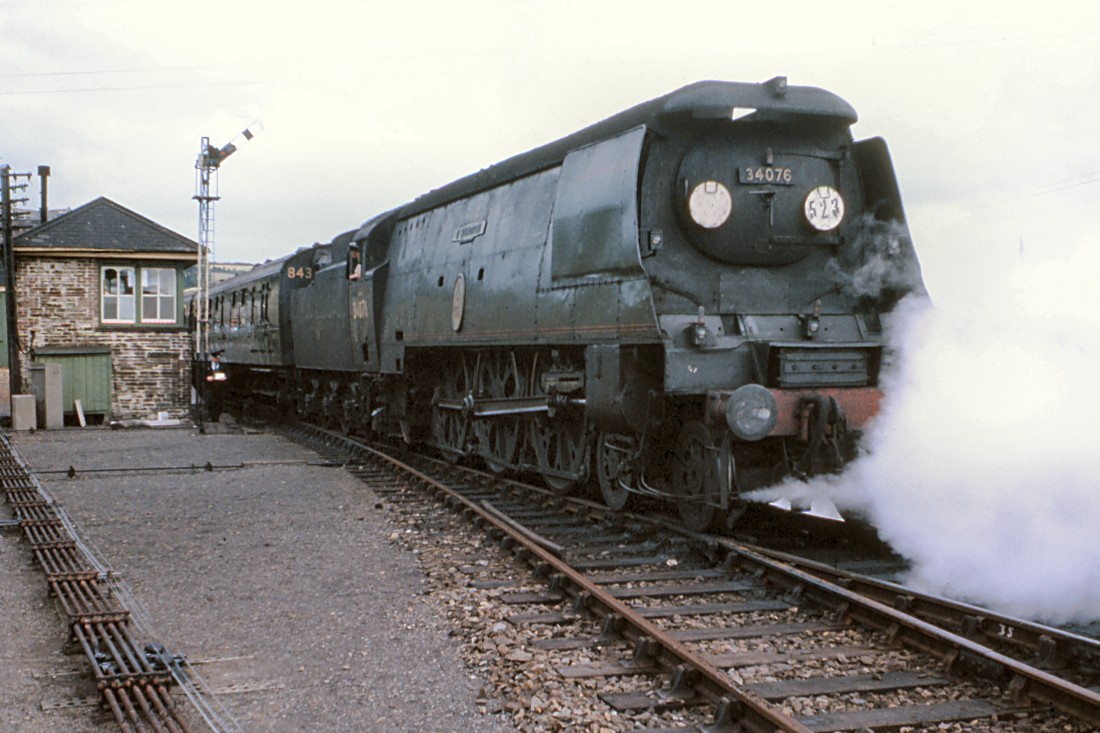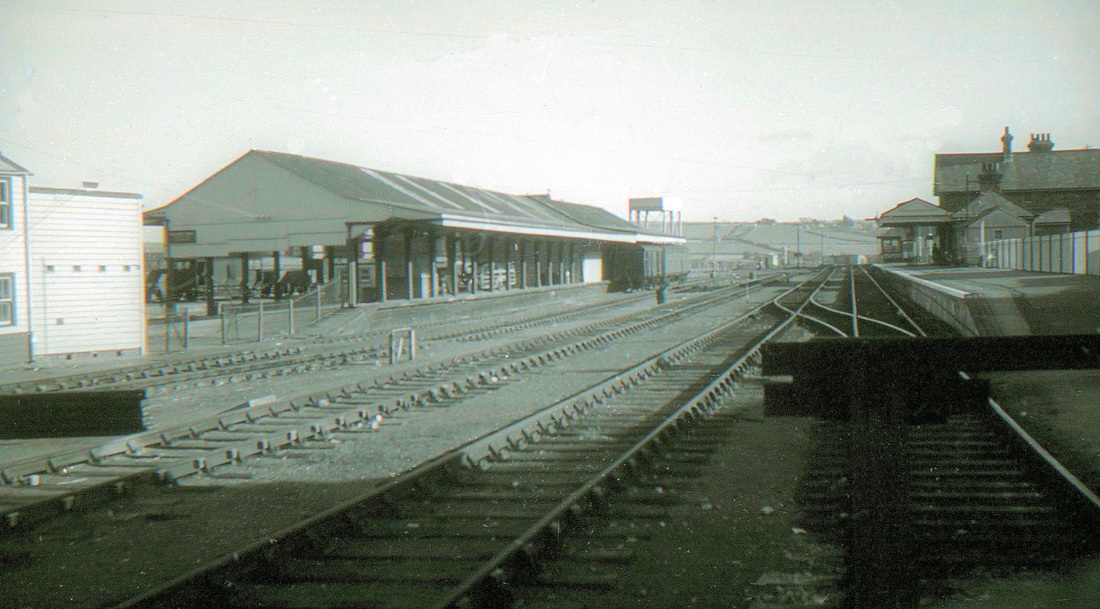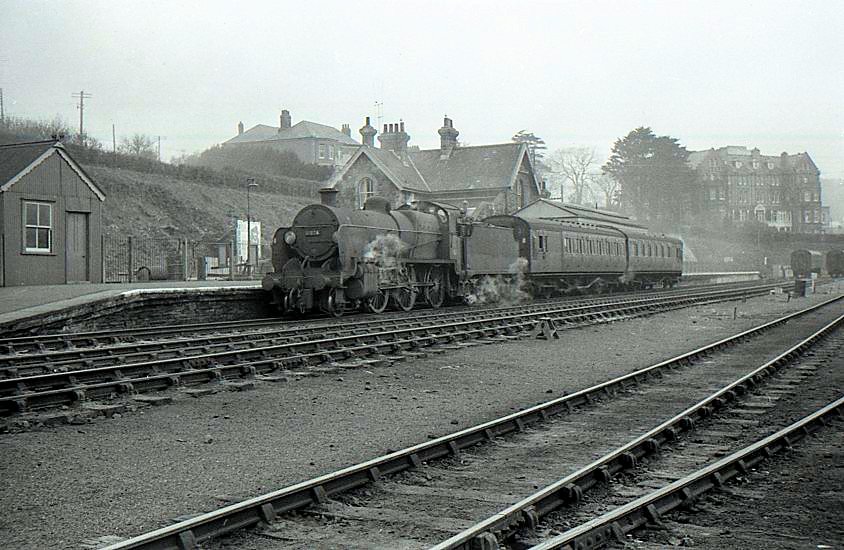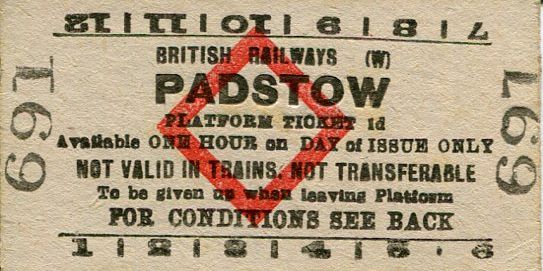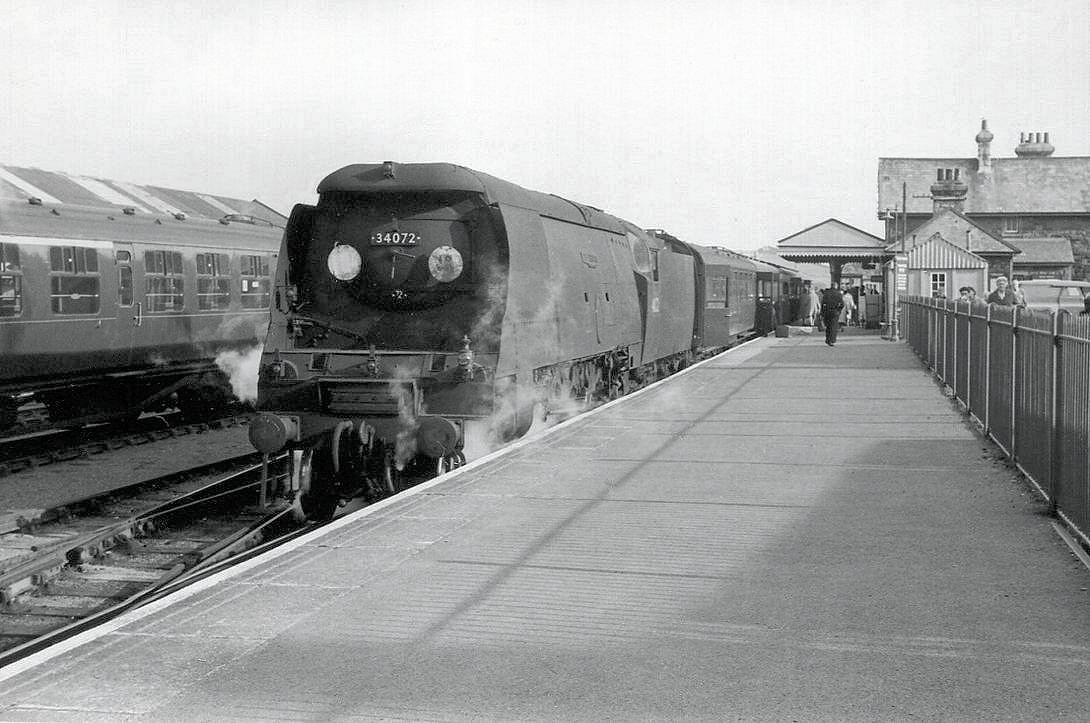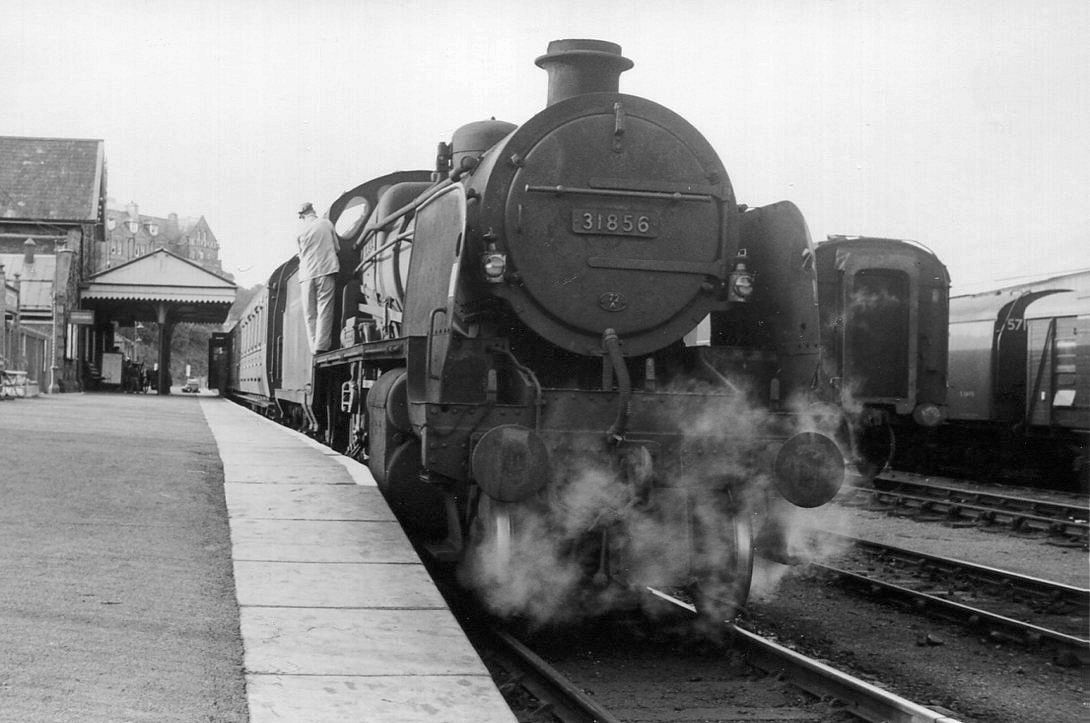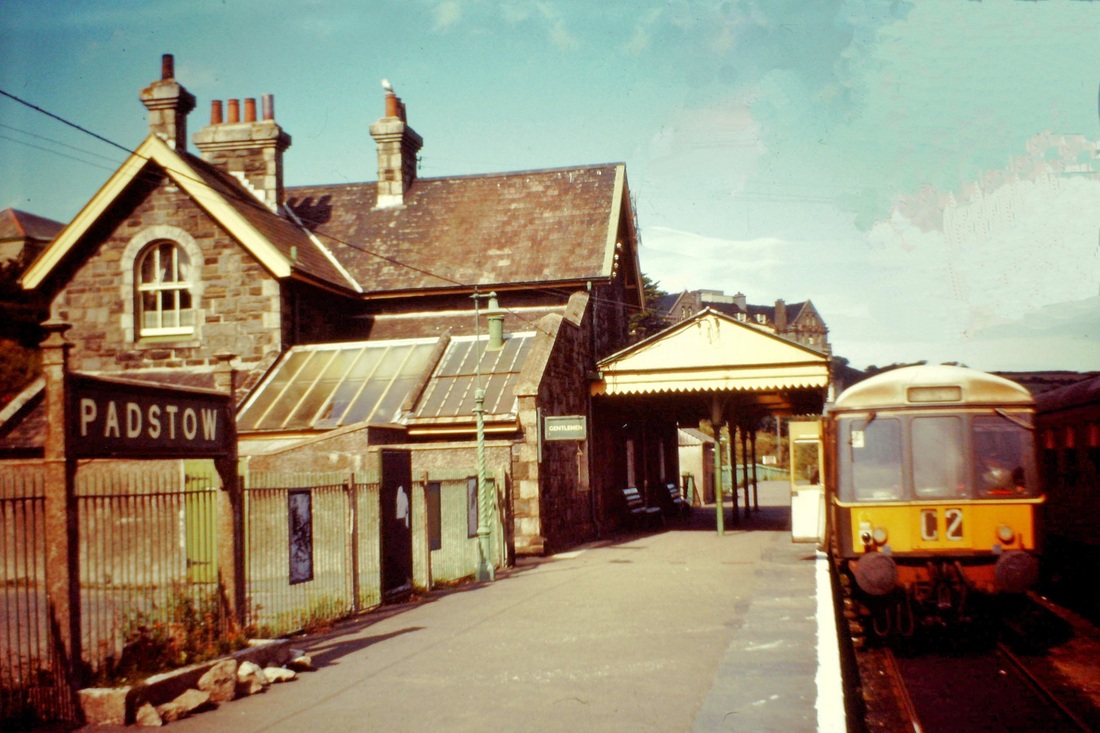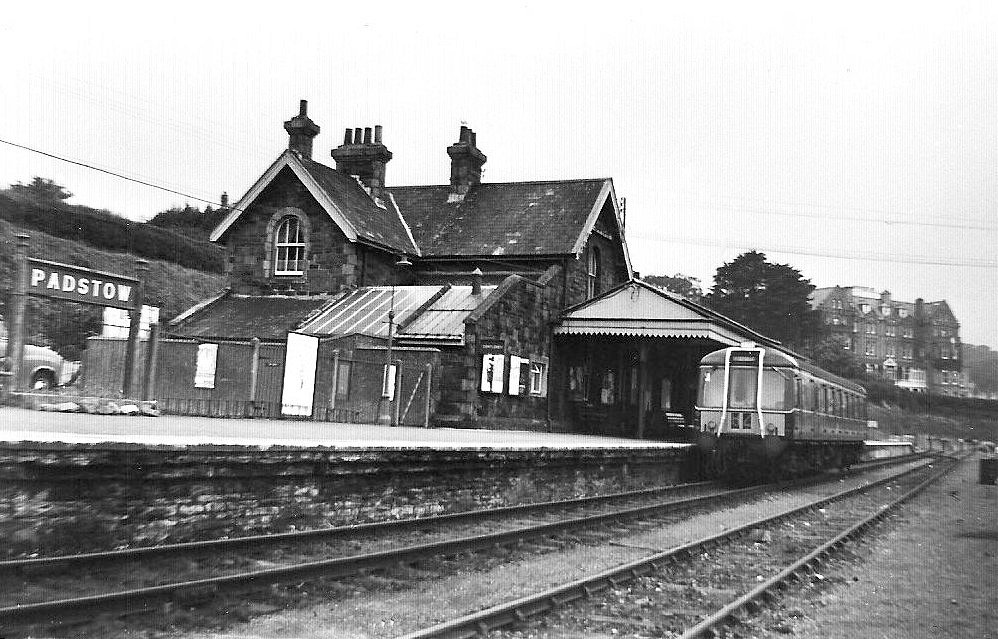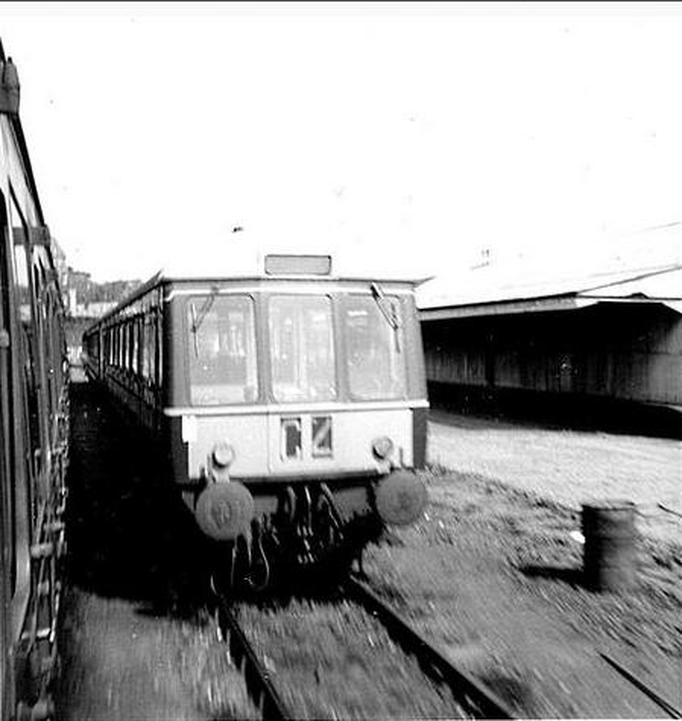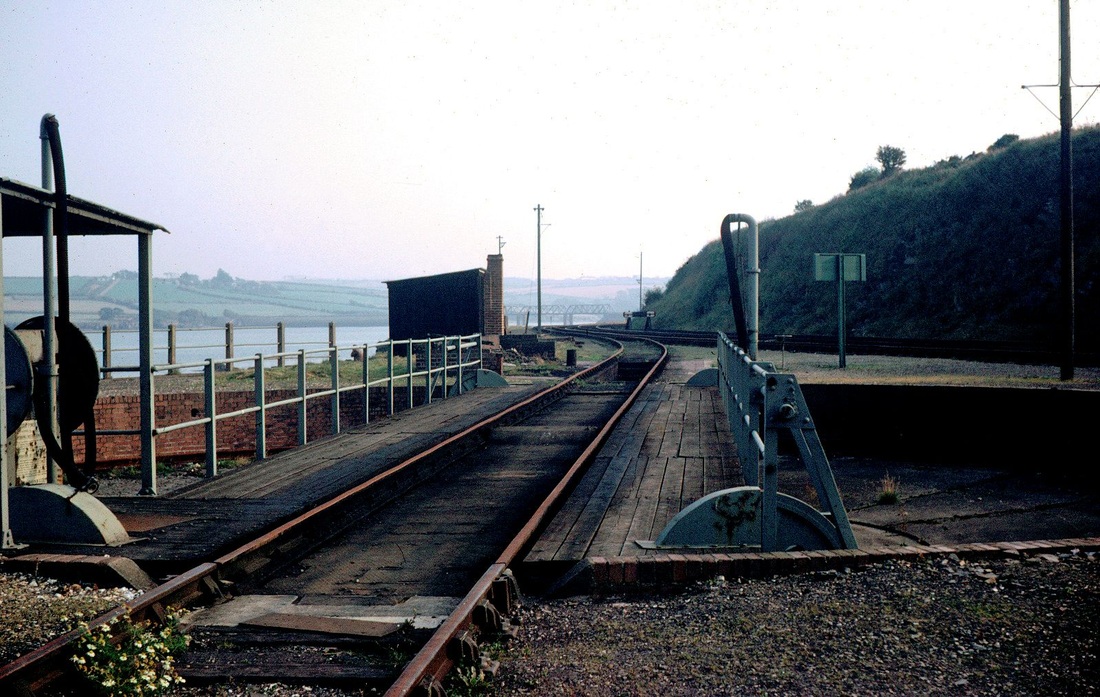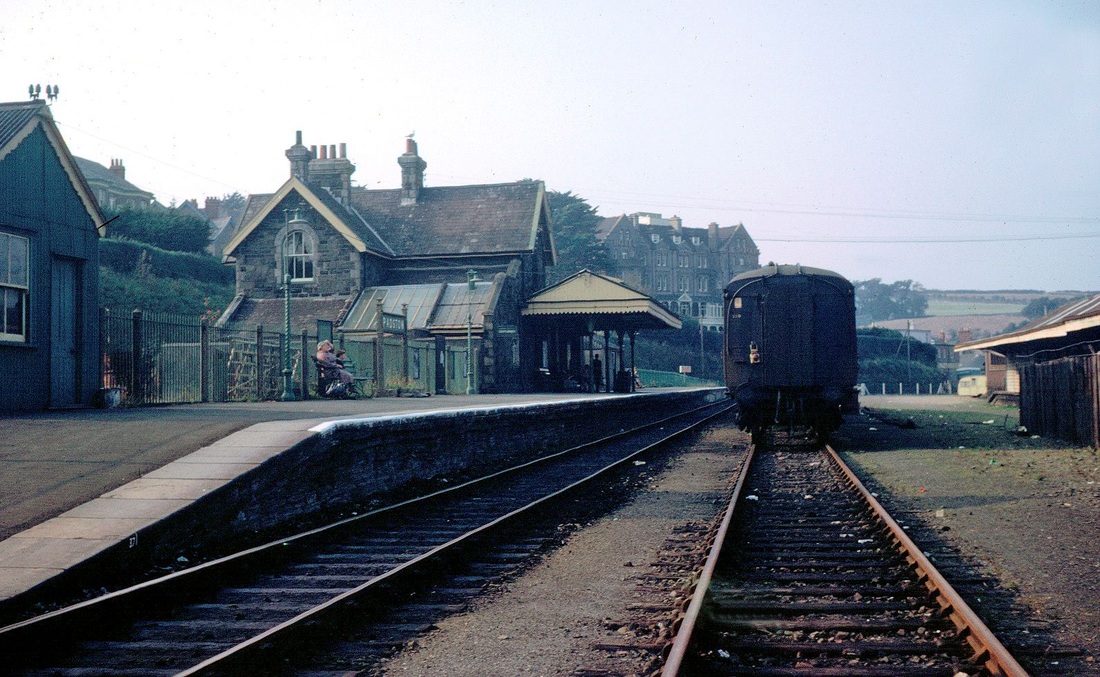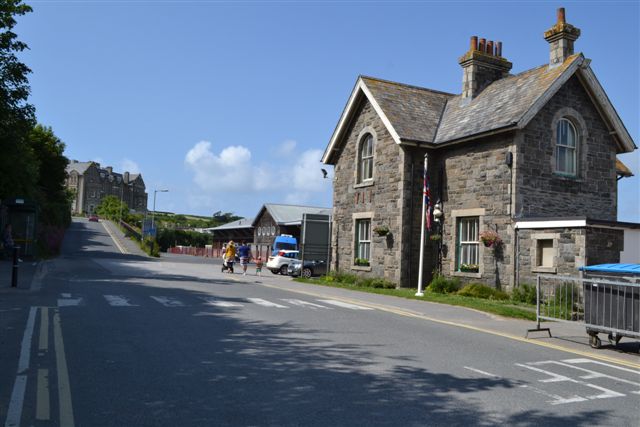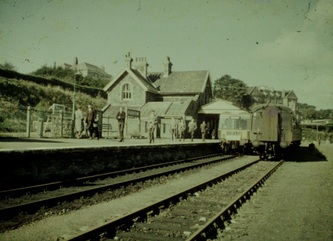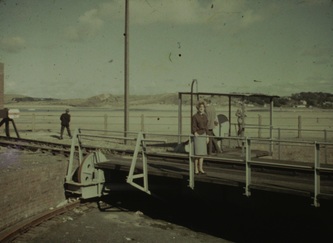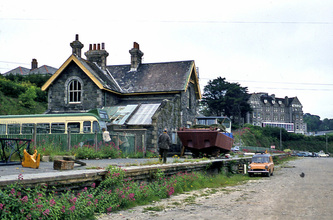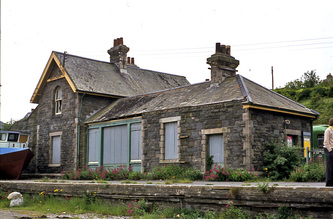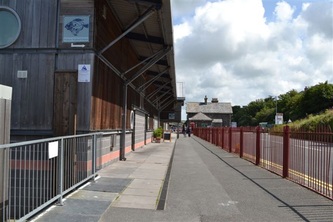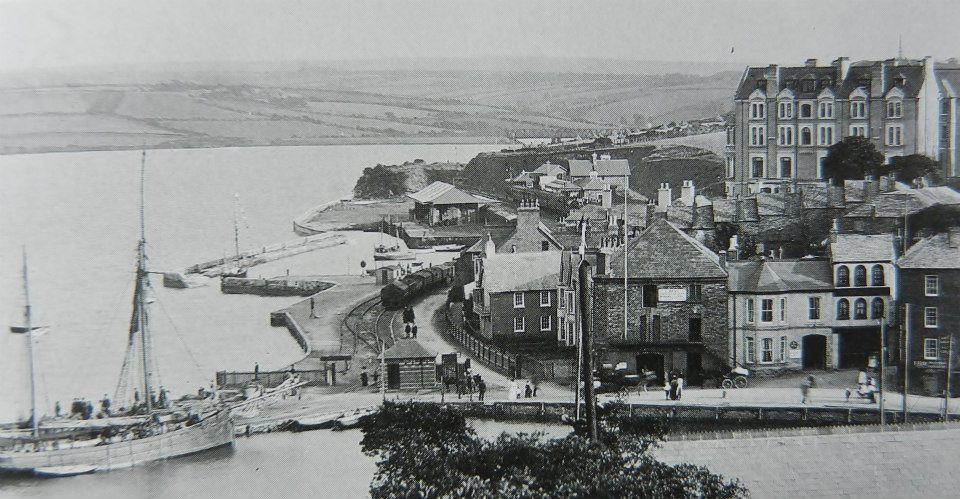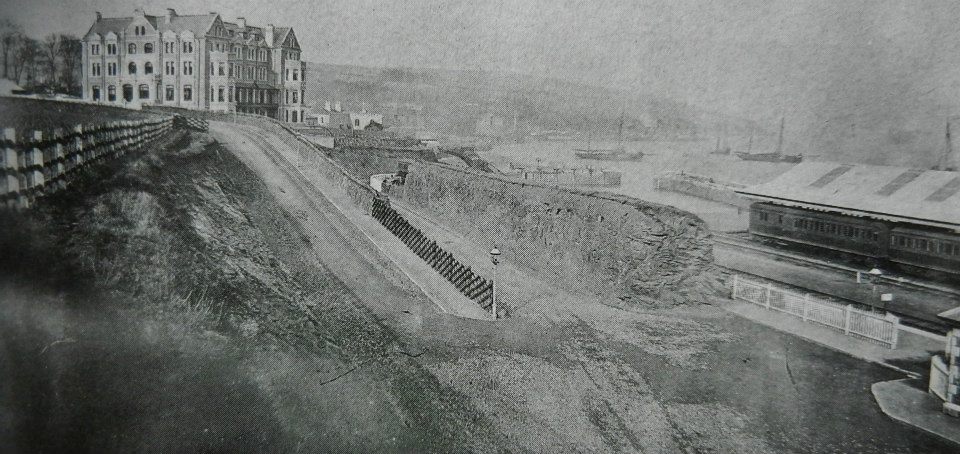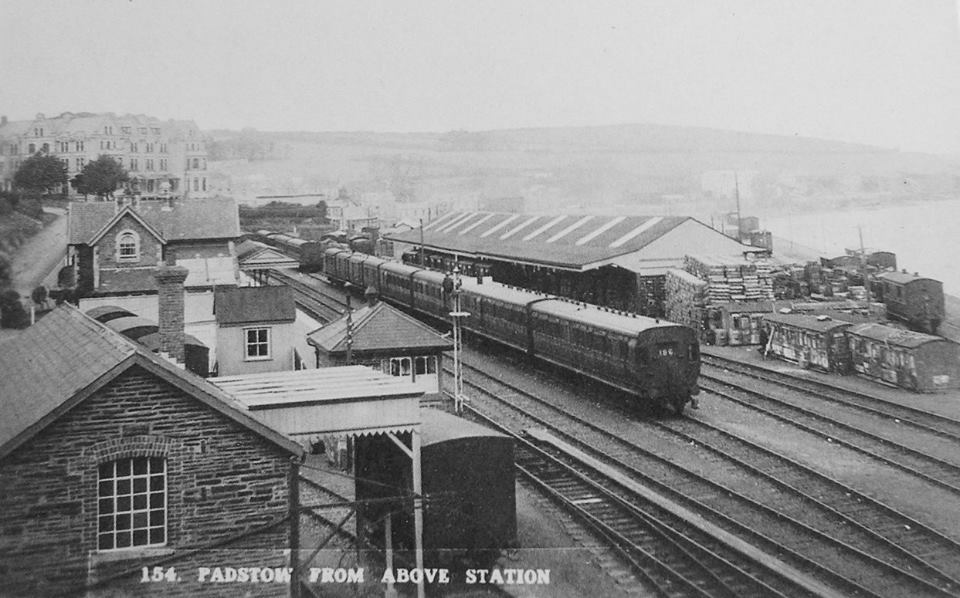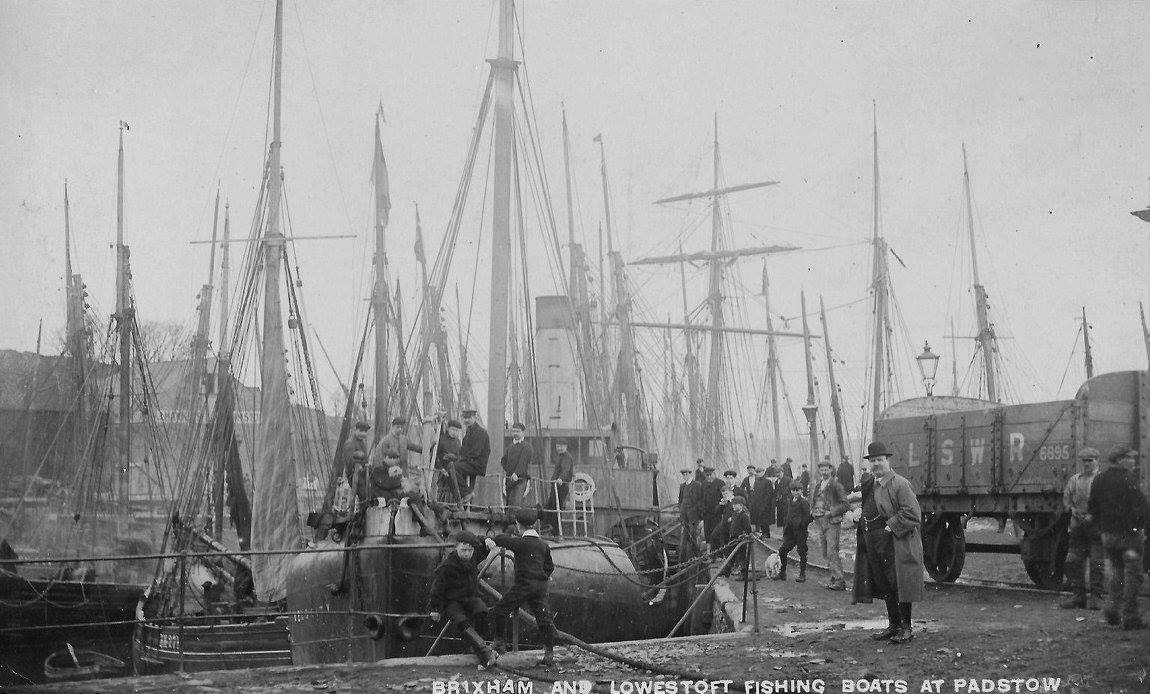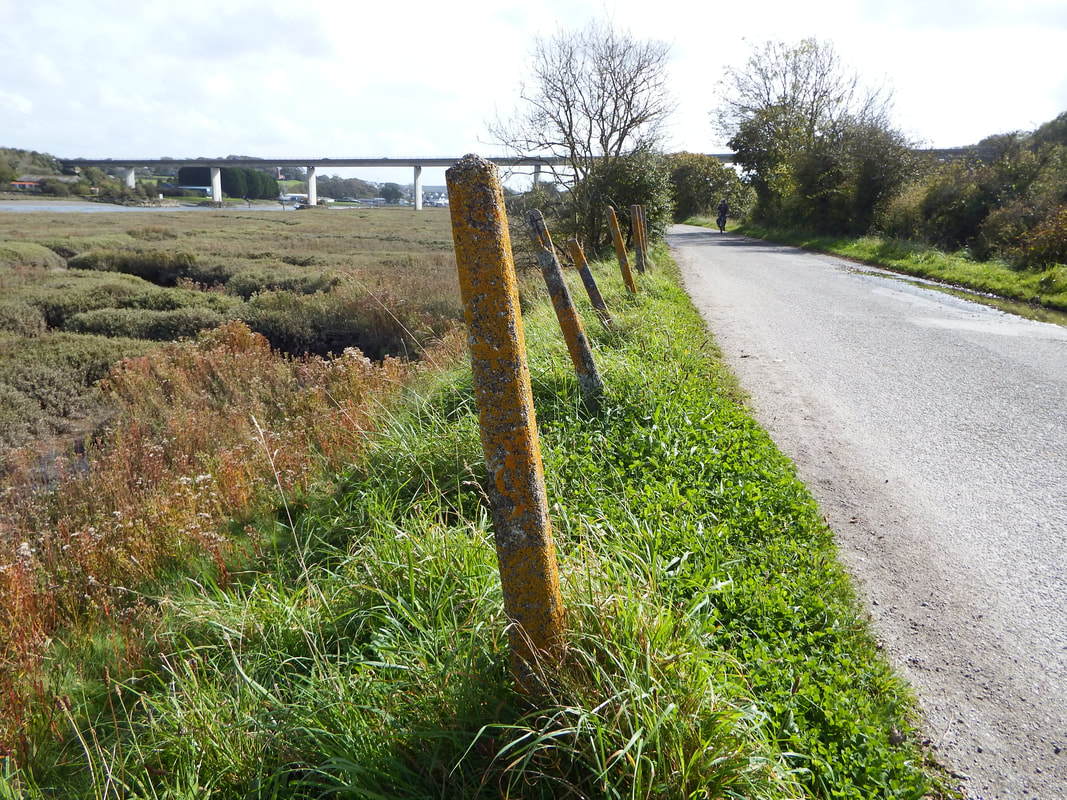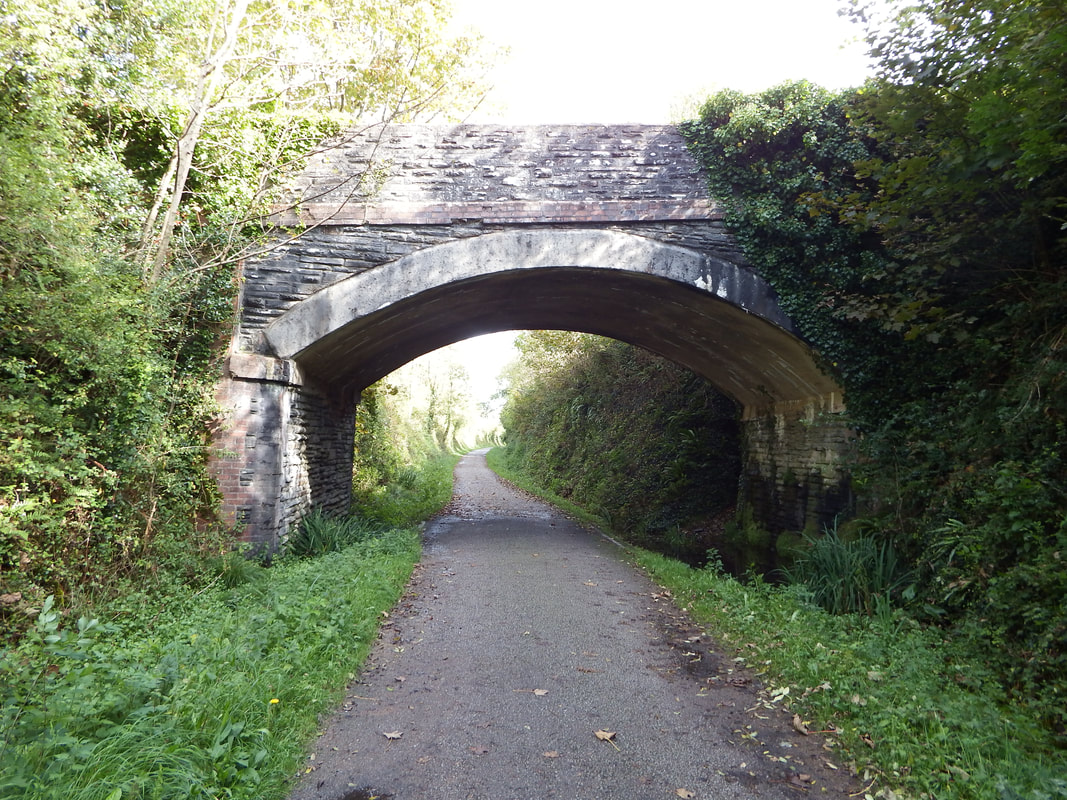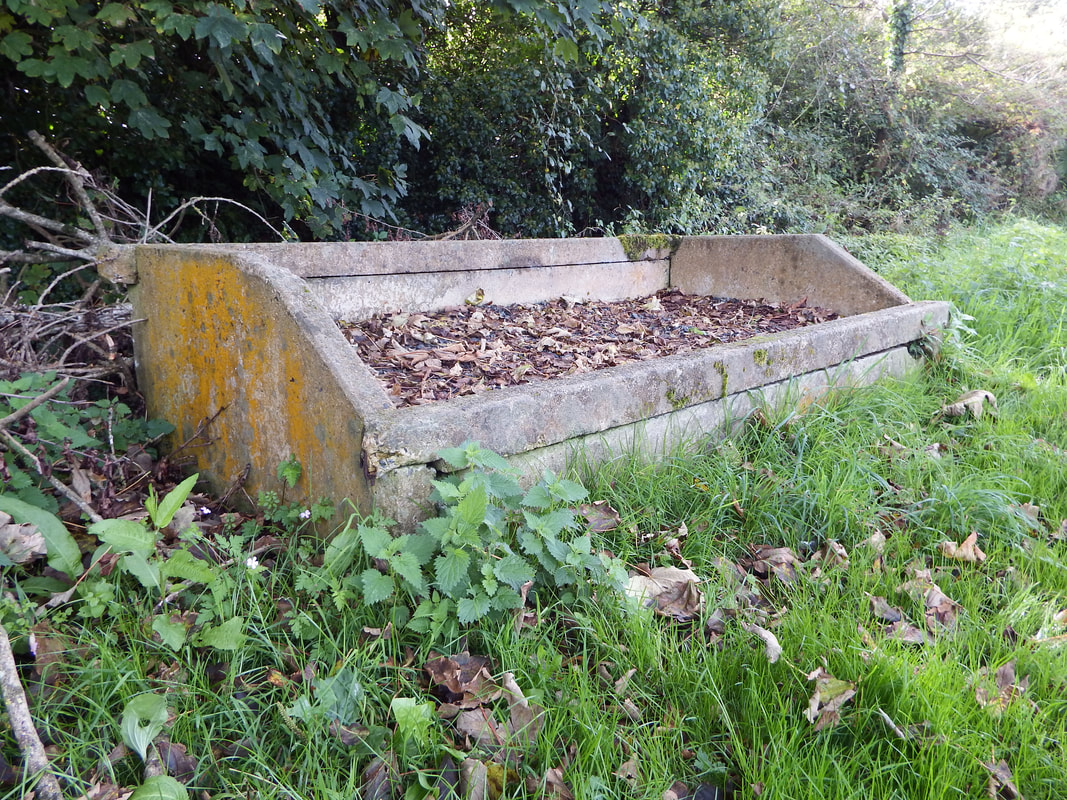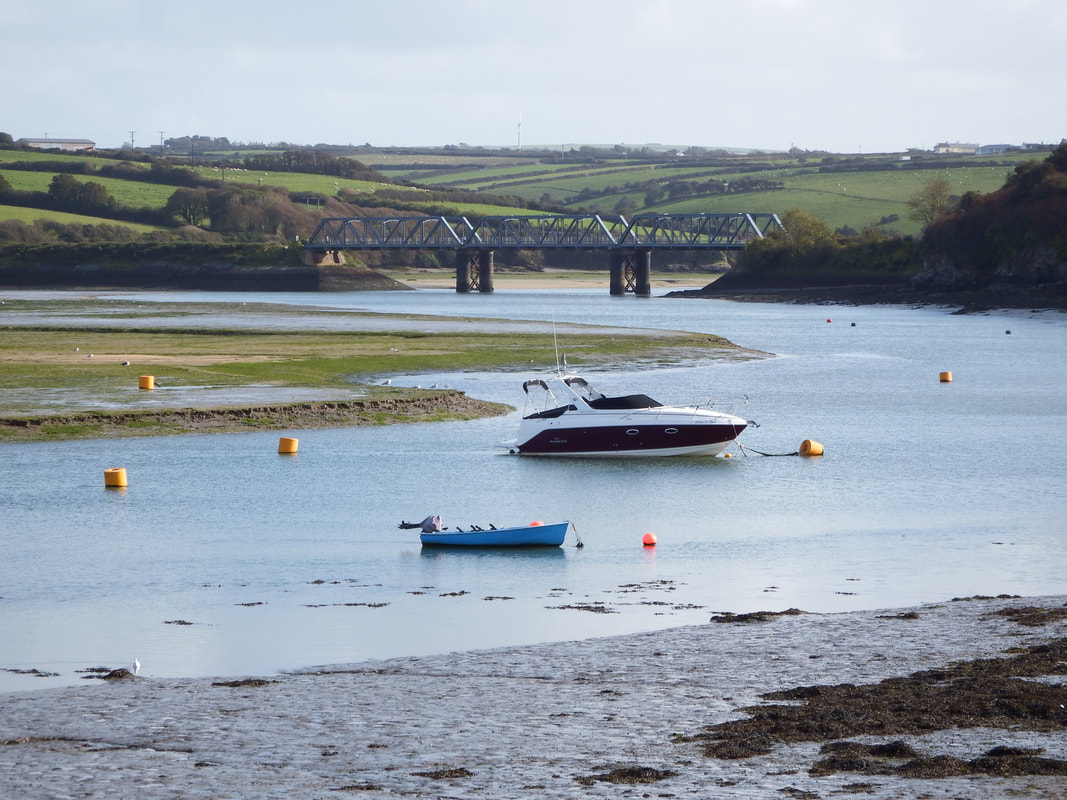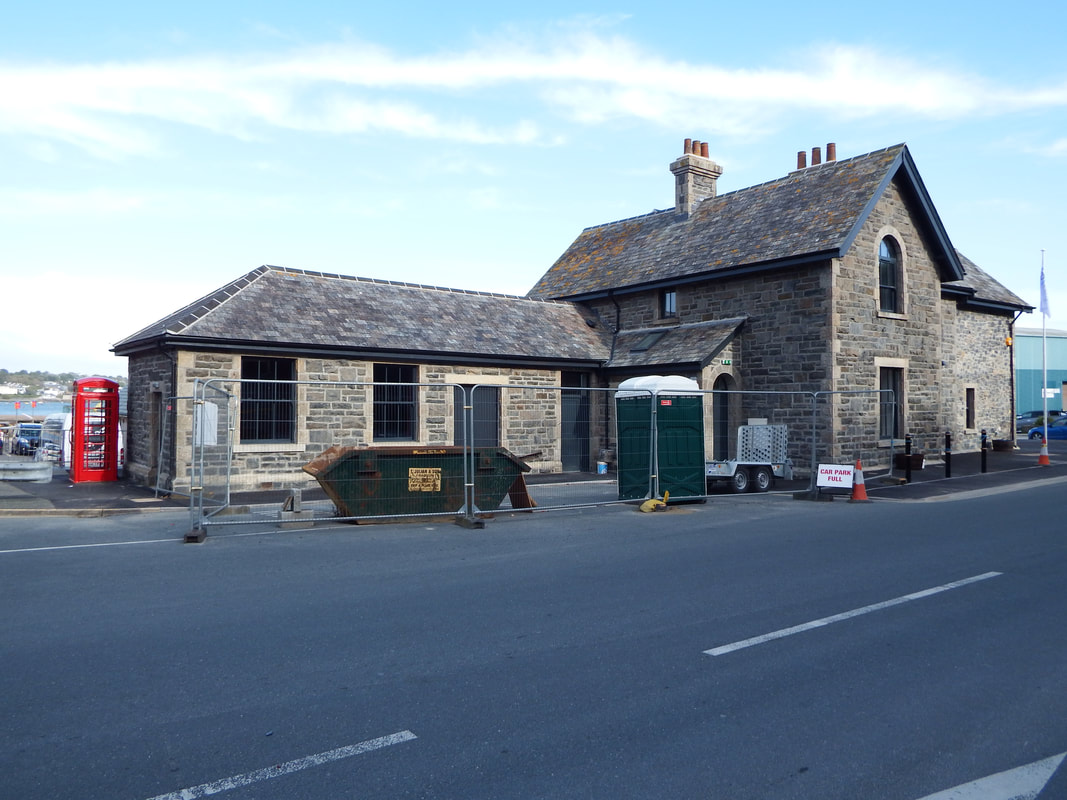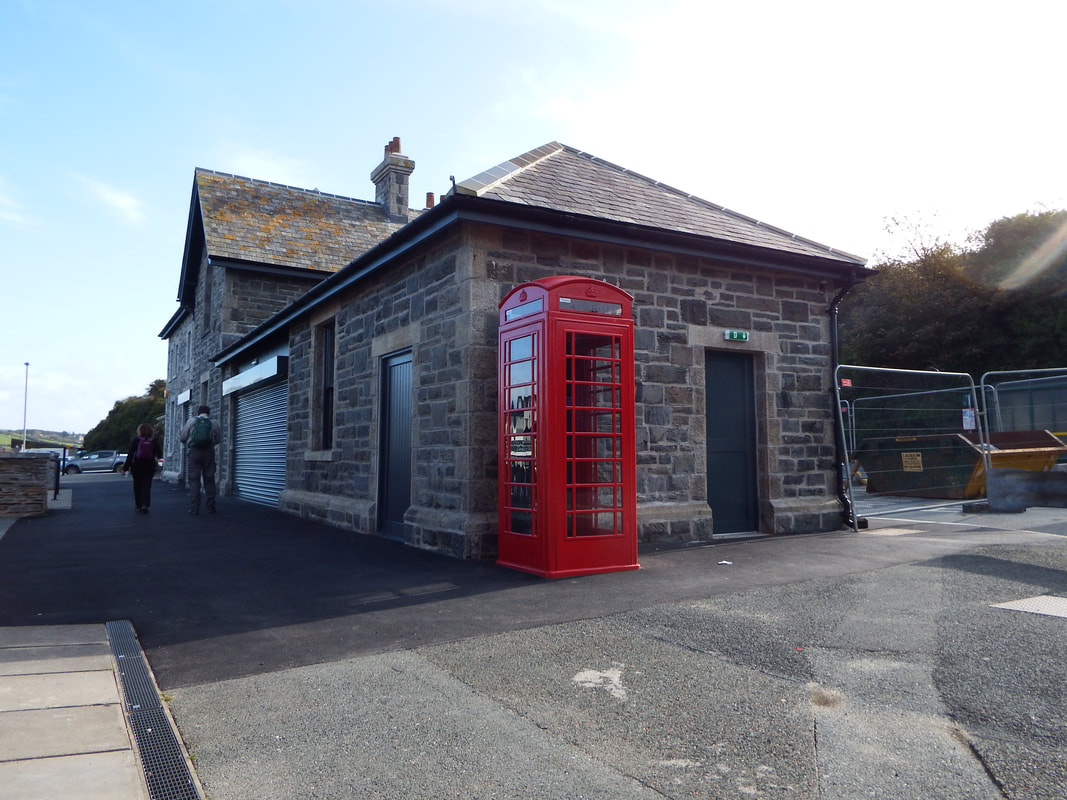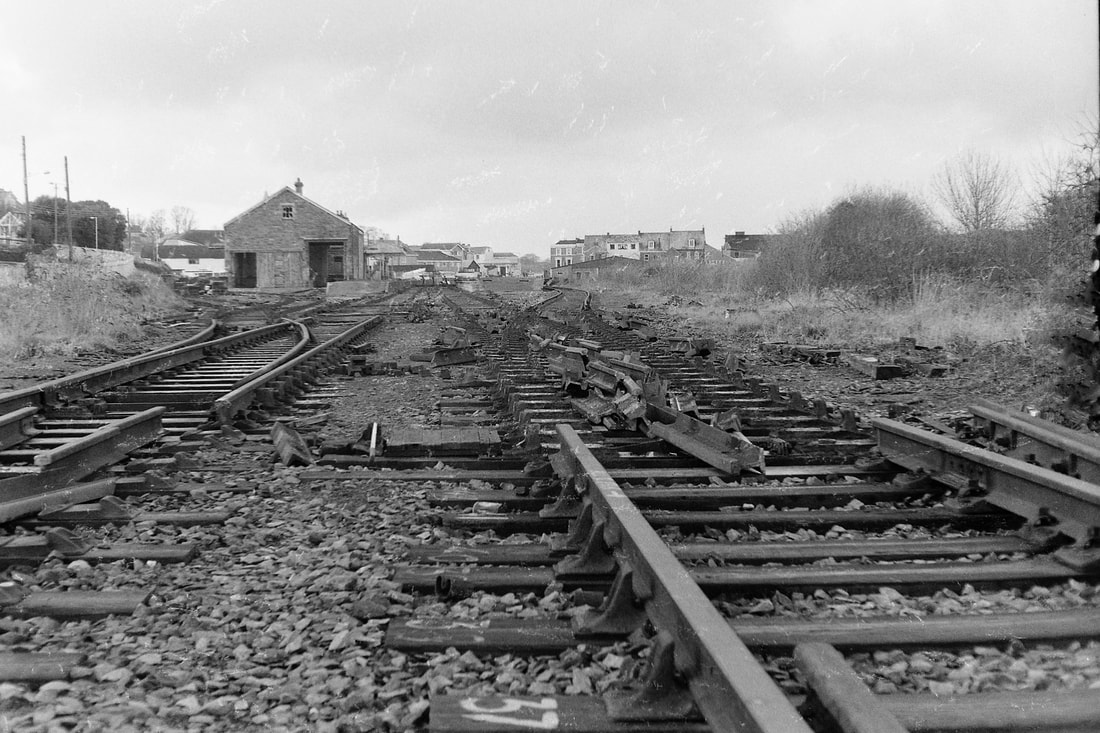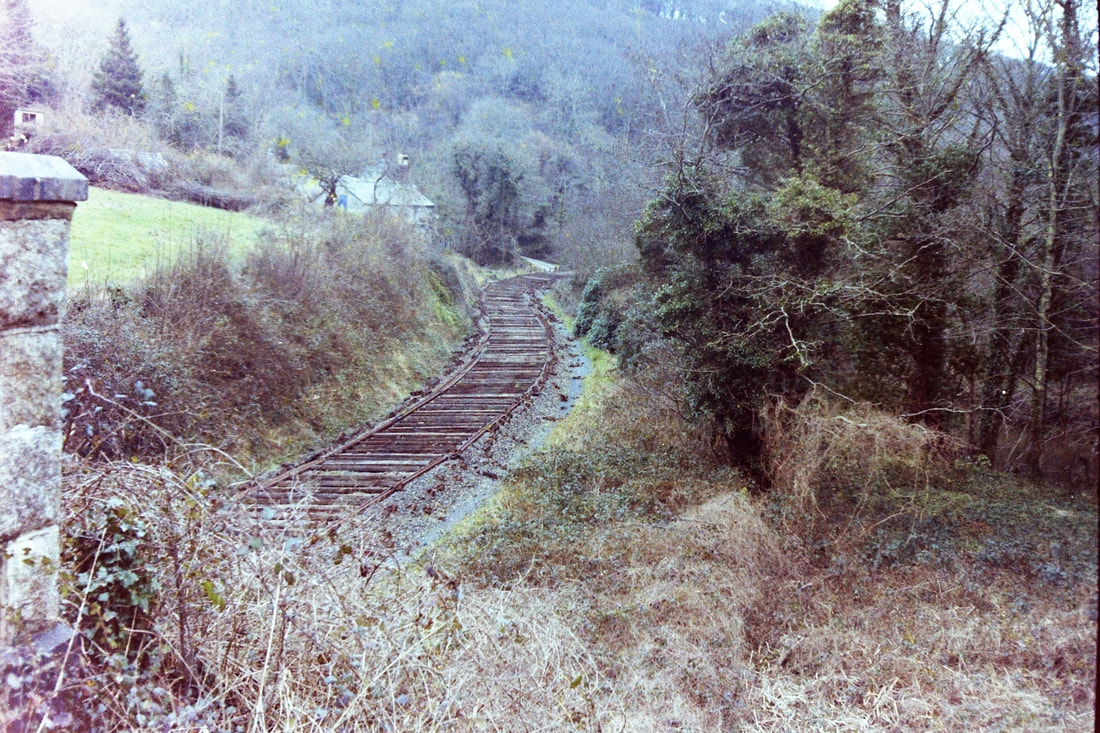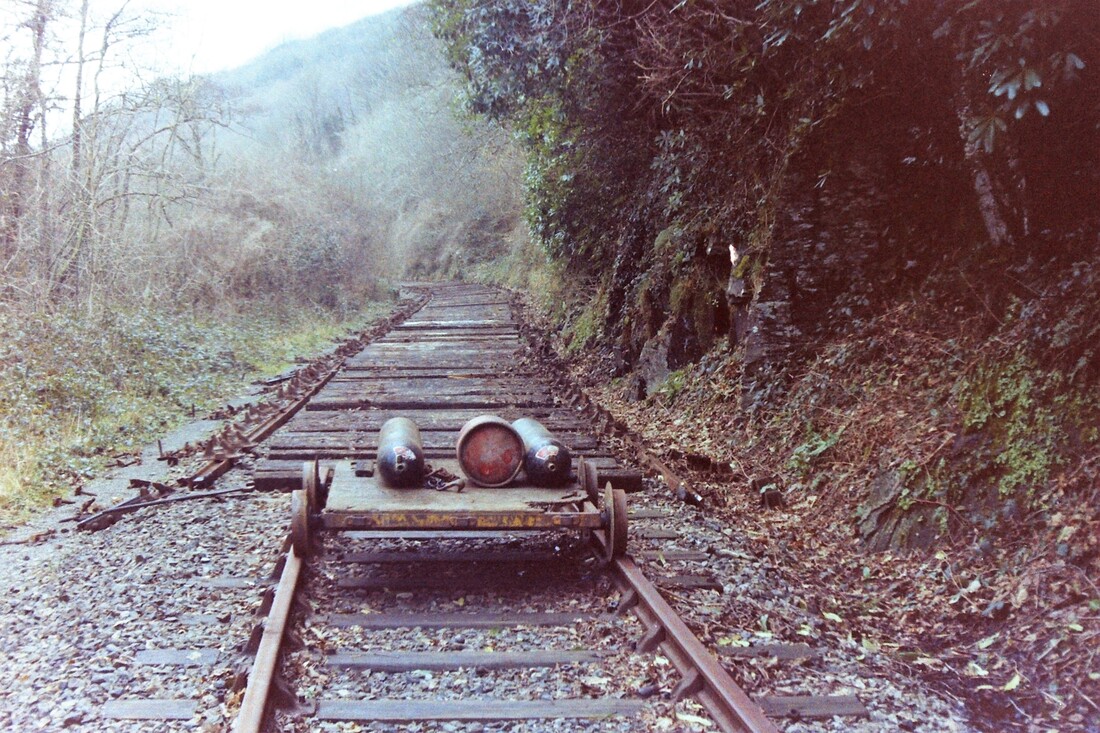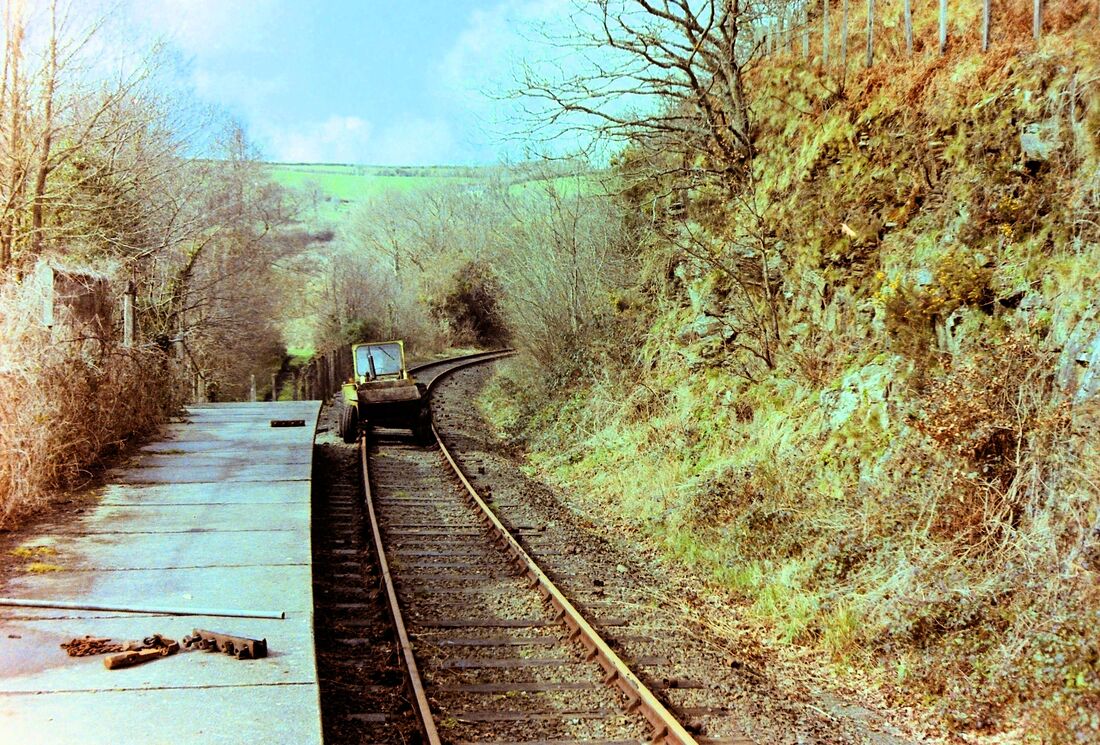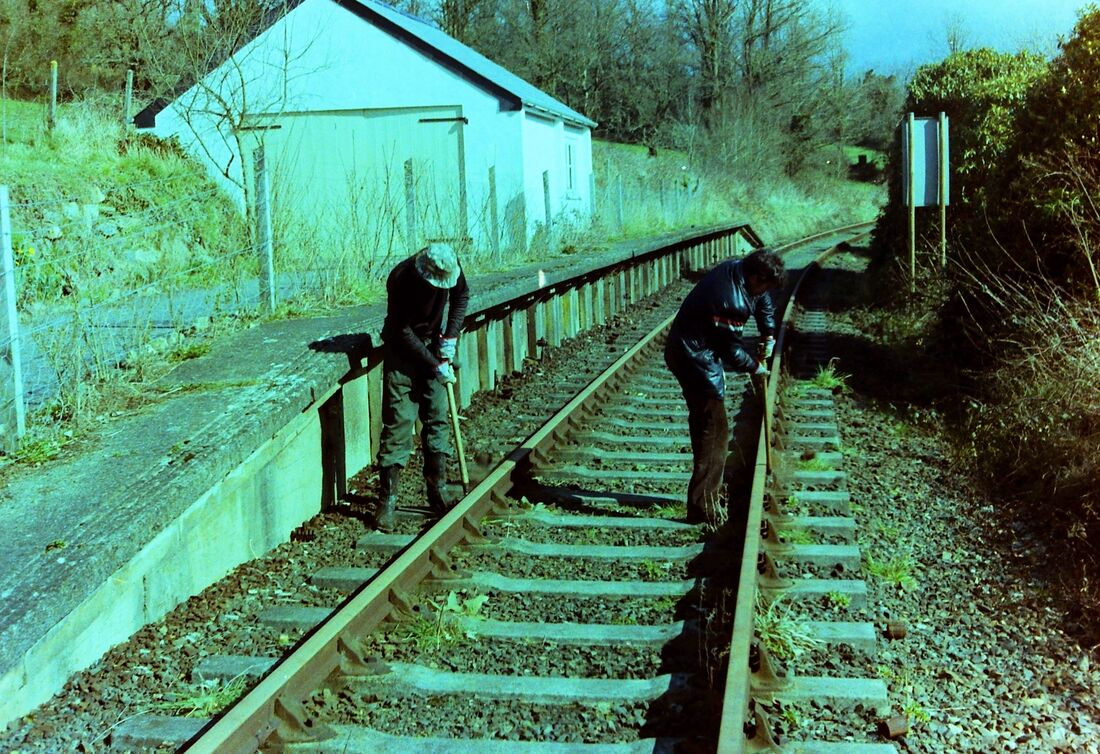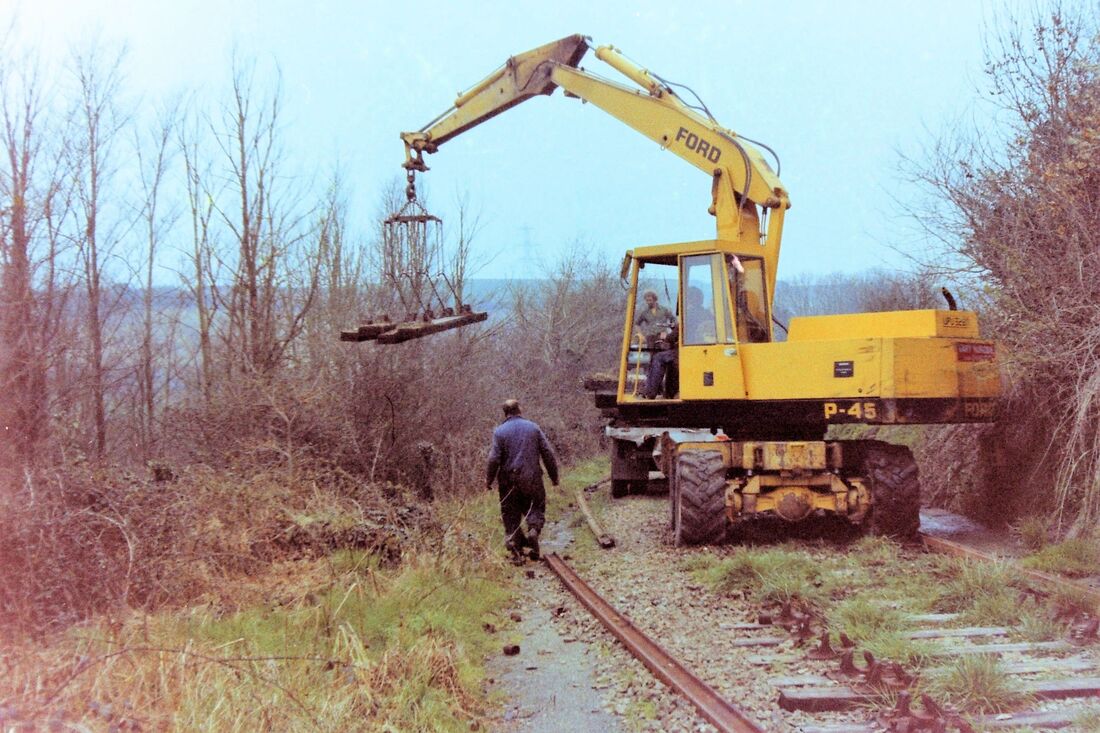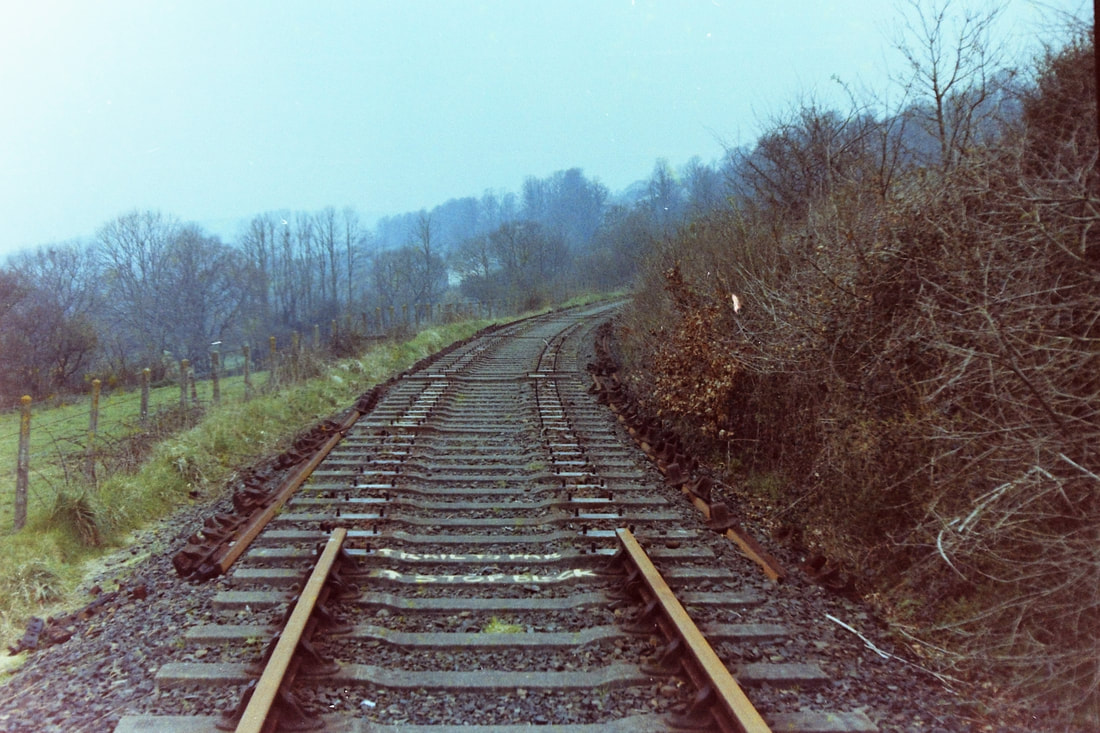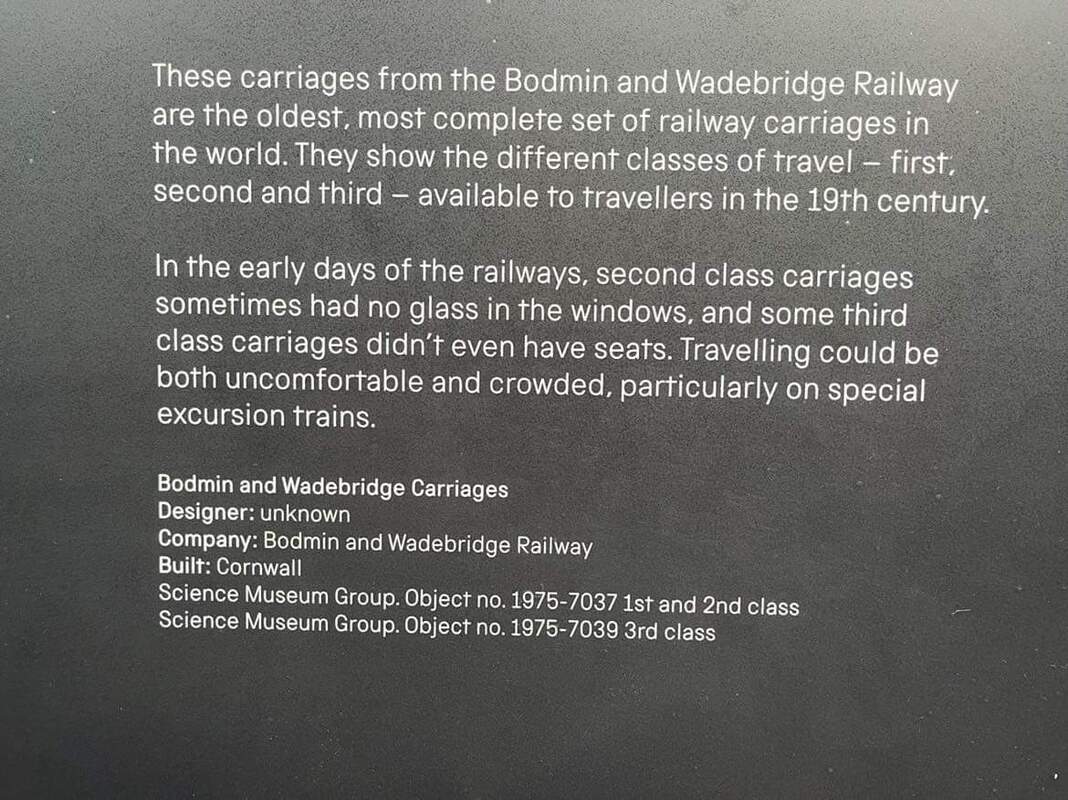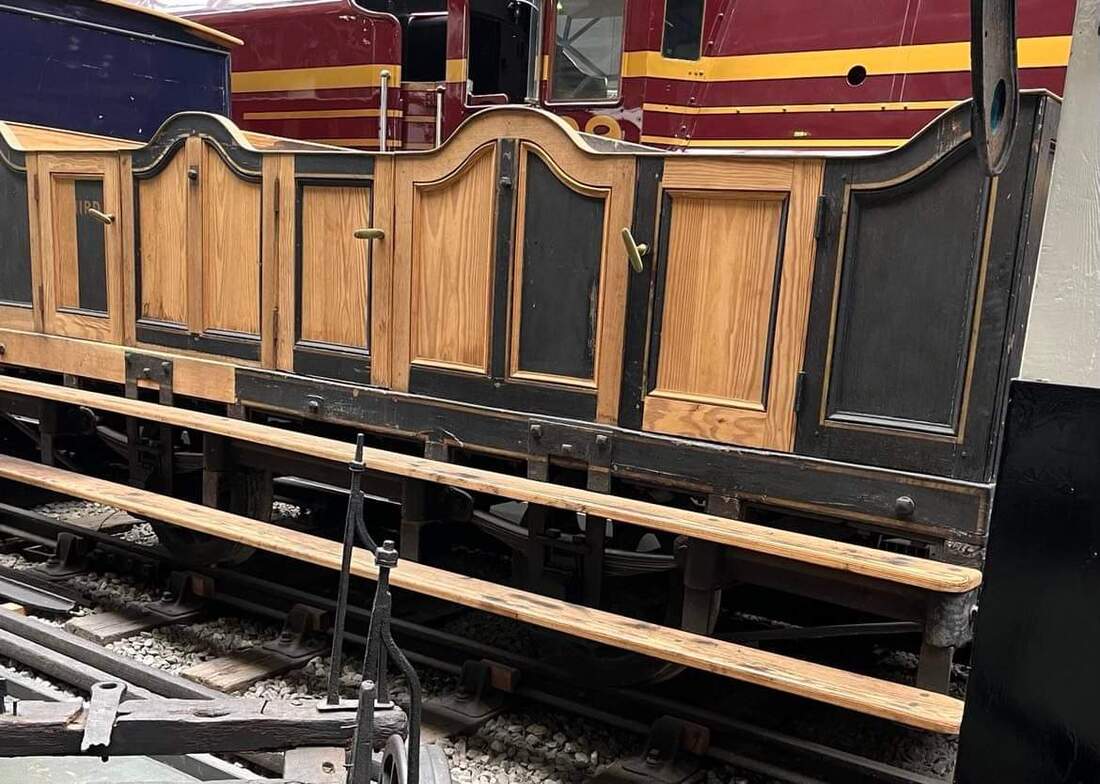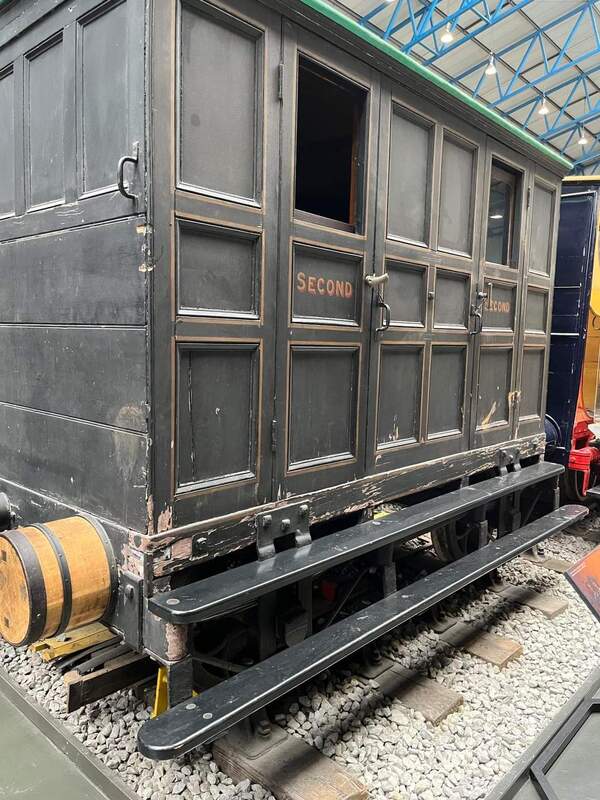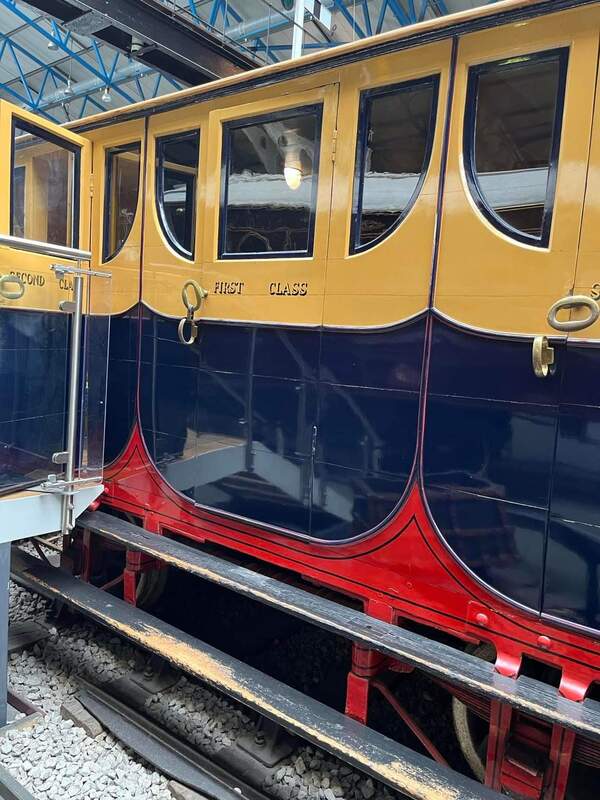Bodmin Road to Padstow
A most excellent collection of old railway films has come to the net from Cornish Memories.Com Just click here to see them http://cornishmemory.com/items/browse?search=diesel
The first entitled Bodmin Rd to Padstow is actually from Padstow to Bodmin Road - it lasts for 11 mins and includes Padstow station, Little Petherick Creek bridge, lineside and on train sequences including Wadebridge, Grogley, Nanstallon, Boscarne Exchange (See the Bodmin N connection), Bodmin General and Bodmin Road.
The second entitled Plymouth to Fowey is actually Lostwithiel to Fowey. A film of almost ten minutes comprises a fascinating journey in both directions along the branch - see Golant, a run past the busy docks and round the bend into Fowey Station. Plus a glimpse inside Fowey Box.
The third Plymouth - Saltash two minute film is actually from Lostwithiel to Plymouth. Lostwithiel station views, approach to Liskeard, Shillingham tunnel, glimpse of the Weard loop, The Royal Albert Bridge and the road bridge under construction, glimpse of Devonport Docks then the approach to Plymouth including Plymouth West Signalbox - this closed 26th November 1960.
Cornwall Memories. Com deserve a very hearty congratulations on making these long gone scenes available to the world. What memories they stir up.
More memories:- Andrew Jones very kindly sent in the link to some Youtube footage from Bodmin North, Wadebridge and extensive working at Padstow.
The initial frames include the German built 4 wheel Dmu, which in the last years of the branch operated a shuttle from Boscarne Junction to Bodmin North. ( although not confined entirely to this duty, as I once travelled to Padstow on this unit).
We then pass by Langs fish and chips, now ‘Barneys’ and the main road crossing into Wadebridge Station.
Following on, we have a very rare glimpse from the Rock side of the estuary, of a ‘bubble car’ travelling towards and crossing the Little Petherick iron bridge.
I travelled on this unit, just weeks before closure, on the school train, which believe me was packed.
Finally we have extensive coverage of 4-6-2 West Country Class 21C120 (34020) ‘Seaton’, running round at Padstow.
The West Country Class, Bullied Light Pacifics, were introduced in 1945. Their 18 ton axle rating enabled them to work almost everywhere on the Southern Region.
34001-34048 were all named after West Country locations, 34049-34090 were named to commemorate the ‘Battle of Britain’, 34091-34108 were again West Country Locations and the last two 34109 and 34110 were again named after the ‘Battle of Britain’
Their distinctive air smoothed casing gave them the nick name ‘Spam Cans’, only 60 had their casing removed during rebuilding, which paradoxically increased the weight and restricted the rebuilds use on the system.
Memories are made of this! Click below to enjoy this.
https://youtu.be/t-HIsTyqWDo
The first entitled Bodmin Rd to Padstow is actually from Padstow to Bodmin Road - it lasts for 11 mins and includes Padstow station, Little Petherick Creek bridge, lineside and on train sequences including Wadebridge, Grogley, Nanstallon, Boscarne Exchange (See the Bodmin N connection), Bodmin General and Bodmin Road.
The second entitled Plymouth to Fowey is actually Lostwithiel to Fowey. A film of almost ten minutes comprises a fascinating journey in both directions along the branch - see Golant, a run past the busy docks and round the bend into Fowey Station. Plus a glimpse inside Fowey Box.
The third Plymouth - Saltash two minute film is actually from Lostwithiel to Plymouth. Lostwithiel station views, approach to Liskeard, Shillingham tunnel, glimpse of the Weard loop, The Royal Albert Bridge and the road bridge under construction, glimpse of Devonport Docks then the approach to Plymouth including Plymouth West Signalbox - this closed 26th November 1960.
Cornwall Memories. Com deserve a very hearty congratulations on making these long gone scenes available to the world. What memories they stir up.
More memories:- Andrew Jones very kindly sent in the link to some Youtube footage from Bodmin North, Wadebridge and extensive working at Padstow.
The initial frames include the German built 4 wheel Dmu, which in the last years of the branch operated a shuttle from Boscarne Junction to Bodmin North. ( although not confined entirely to this duty, as I once travelled to Padstow on this unit).
We then pass by Langs fish and chips, now ‘Barneys’ and the main road crossing into Wadebridge Station.
Following on, we have a very rare glimpse from the Rock side of the estuary, of a ‘bubble car’ travelling towards and crossing the Little Petherick iron bridge.
I travelled on this unit, just weeks before closure, on the school train, which believe me was packed.
Finally we have extensive coverage of 4-6-2 West Country Class 21C120 (34020) ‘Seaton’, running round at Padstow.
The West Country Class, Bullied Light Pacifics, were introduced in 1945. Their 18 ton axle rating enabled them to work almost everywhere on the Southern Region.
34001-34048 were all named after West Country locations, 34049-34090 were named to commemorate the ‘Battle of Britain’, 34091-34108 were again West Country Locations and the last two 34109 and 34110 were again named after the ‘Battle of Britain’
Their distinctive air smoothed casing gave them the nick name ‘Spam Cans’, only 60 had their casing removed during rebuilding, which paradoxically increased the weight and restricted the rebuilds use on the system.
Memories are made of this! Click below to enjoy this.
https://youtu.be/t-HIsTyqWDo
There are also some comprehensive notes on the demolition in the Wadebridge area at the end of this section kindly supplied by Andrew Jones,
Credits, Many thanks to all contributors - please see a list on the home page.
Members and general visitors to the CRS site will be interested in visiting http://www.railmaponline.com From the opening page a full map of the UK can be accessed which can then be enlarged to show every railway line in the UK. Not just today's network but lines from the past have been overlaid. As you zoom in sidings and even tramways become visible.
A valuable tip from Guy Vincent.
A valuable tip from Guy Vincent.
N.B Click on picture to obtain an enlargement and further details
BODMIN ROAD - BODMIN GENERAL
You must try this link - the last trains to Wadebridge. A quick note from Andrew Jones, I found the on the BFI site https://player.bfi.org.uk/free/film/watch-the-bodmin-and-wadebridge-branch-railway-line-1978-online
Bodmin Road
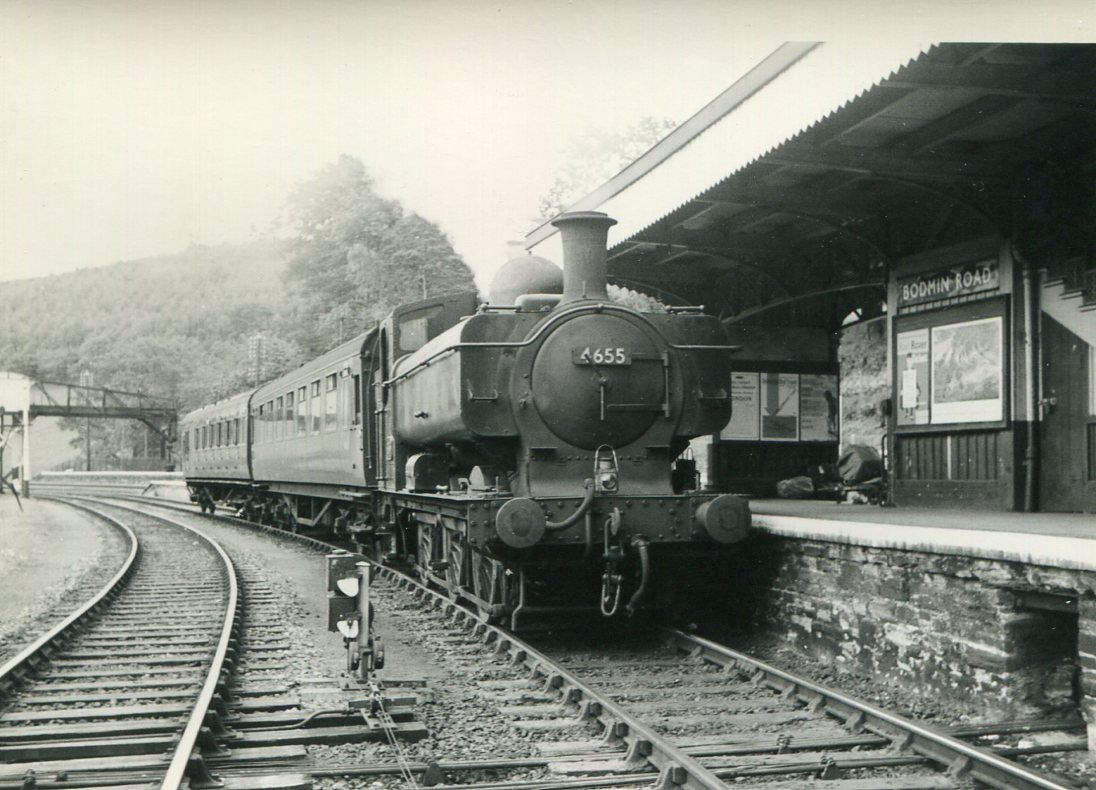
4655 has now run round its train and steam is being raised ready for the climb to Bodmin General. Note the Water Crane with its long gantry spanning the tracks to provide watering for both branch and up main line trains. Note also the bags of parcels dumped on the platform, perhaps security didn't need to be as it is nowadays. 9th September 1963 Copyright Mike Roach
The Bodmin & Wenford Railway Winter Steam Up. 29th December 2022 Part 1
En route between Bodmin Road and Bodmin General
Charlies Gate
Mrs M and I took part on Monday 9th July 2018 in a re-enactment of the soldiers going off to the First World War with the production Trench. This was described as an Immersive Theatre production, involving Bodmin Regimental Museum and the Bodmin& Wenford Railway.
Well, it was a very moving experience. After a briefing, we were issued with our meal ration pack, uniform and an authentic soldier's identity. We then marched from Bodmin Barracks to Bodmin General station, holding up the traffic as we went, (and raising curious looks!). Pannier Tank 6435 and Auto Trailer W232W were waiting to convey the party to Charlie's Gate, where a special platform had been erected to allow us to march up the field for the action - in the WW1 Trench. Very atmospheric it was too. We had been asked not to take photographs during the event, as we were all, in effect, actors and the illusion would have been spoilt.
However, at the end of the action, when we learned whether our own Characters had survived, or died, it was time to return to the waiting train for the journey back to the present day. The sun was going down by then, but I couldn't resist going behind the nurses' tent (out of sight of the rest of the players), to grab my photo of the train with the first soldiers making it back to the platform.
It was really a first rate event - very well organised.
Best wishes,
Peter
Many thanks indeed Peter for your snatched and very moving photograph.
Well, it was a very moving experience. After a briefing, we were issued with our meal ration pack, uniform and an authentic soldier's identity. We then marched from Bodmin Barracks to Bodmin General station, holding up the traffic as we went, (and raising curious looks!). Pannier Tank 6435 and Auto Trailer W232W were waiting to convey the party to Charlie's Gate, where a special platform had been erected to allow us to march up the field for the action - in the WW1 Trench. Very atmospheric it was too. We had been asked not to take photographs during the event, as we were all, in effect, actors and the illusion would have been spoilt.
However, at the end of the action, when we learned whether our own Characters had survived, or died, it was time to return to the waiting train for the journey back to the present day. The sun was going down by then, but I couldn't resist going behind the nurses' tent (out of sight of the rest of the players), to grab my photo of the train with the first soldiers making it back to the platform.
It was really a first rate event - very well organised.
Best wishes,
Peter
Many thanks indeed Peter for your snatched and very moving photograph.
Please find photographs (above and below) of GWR 4612 piloting A1 60163 Tornado down the bank towards ‘Charlies Gate’ on the Bodmin Line, a combined tractive effort of 57,275 lbf, waiting to be unleashed!
An unusual combination even on the 4th June 2017.
The power was so spectacular on the return that I just stood and watched forgetting, to lift the camera!
Best wishes Andrew and Diane
An unusual combination even on the 4th June 2017.
The power was so spectacular on the return that I just stood and watched forgetting, to lift the camera!
Best wishes Andrew and Diane
Please find above Arthur Peppercorn A1 60163 Tornado attacking the grade at ‘Charlies Gate’ during her visit to the Bodmin and Wenford in early June 2017. It only seems like yesterday, doesn’t time fly!
This type of locomotive is not really suited for the Bodmin Line and the driver would have been very careful to prevent a slip, especially at this location.
Photography is always spectacular at ‘Charlies Gate’ and even at the relatively low speed for an A1, it still was immensely exciting.
The A1 Steam Locomotive Trust which was formed in 1990 has changed the face of preservation with one of the first new build steam locomotives to have been built this century.
The trust is now well on with another new build a Si Nigel Gresley class P2 2-8-2 Mikados, to be named ‘Prince of Wales.’
This will be the most powerful passenger locomotive to be built in Britain.
Although only 6 were ever built, the last being scrapped in 1961, the new build will make improvements to the original design.
There are also a number of other locomotives being new built including a Hawksworth County, 1014 to be named ‘County of Glamorgan’ .
We are living through an exciting period and I hope to live long enough to see some of these new locomotives when they visit Cornwall or Devon.
Very best wishes to you both Andrew and Diane. Many thanks Andrew and Diane.
This type of locomotive is not really suited for the Bodmin Line and the driver would have been very careful to prevent a slip, especially at this location.
Photography is always spectacular at ‘Charlies Gate’ and even at the relatively low speed for an A1, it still was immensely exciting.
The A1 Steam Locomotive Trust which was formed in 1990 has changed the face of preservation with one of the first new build steam locomotives to have been built this century.
The trust is now well on with another new build a Si Nigel Gresley class P2 2-8-2 Mikados, to be named ‘Prince of Wales.’
This will be the most powerful passenger locomotive to be built in Britain.
Although only 6 were ever built, the last being scrapped in 1961, the new build will make improvements to the original design.
There are also a number of other locomotives being new built including a Hawksworth County, 1014 to be named ‘County of Glamorgan’ .
We are living through an exciting period and I hope to live long enough to see some of these new locomotives when they visit Cornwall or Devon.
Very best wishes to you both Andrew and Diane. Many thanks Andrew and Diane.
Walker lines
Walker Lines History and removal of. Phil Hawke.
Keith , the end of a little bit of Cornish Rail history. We have nearly finished the removal of the sidings into Walker Lines at Bodmin. About fifty years ago a siding was provided under one the "section 8" grants to allow the agricultural merchants Fulford Trumps to receive granular fertilizer by rail. The site was later taken over by Fitzgerald Lighting and after the Bodmin and Wenford opened, wagon loads of light fittings were tripped to the main line at Parkway where these were collected by the Speedlink Freight service. Additional sidings were also laid for the storage of B & W stock. Following a recent change of land ownership the B & W no longer has access therefore the connection to Walker Lines and all of the sidings are being removed. A new turnout, a hundred feet or so in the Parkway direction, has been provided to allow a carriage storage shed to be built in the future on land that is available to the B & W but at present there is no timescale for this project.
Regards, Phil Hawke.
Regards, Phil Hawke.
Many thanks to Phil Hawke for this information and pictures.
Rebuiding bridge 13 & 13a At Bodmin General
Chris Bellett
Chris Bellett
A few update photographs taken today (26 January 2022) of the progress on the rebuilding of Bridges 13 and 13A at Bodmin General. These photographs were taken trackside by myself deemed competent to work on the track on the B&WR and remind other photographers that they should not attempt to trespass on the railway to take similar photographs.
Thanks
Chris Bellett
Retired S&T Engineer
CRS Member
Thanks
Chris Bellett
Retired S&T Engineer
CRS Member
Thanks very much Chris
An update -
Bodmin General - Bodmin Railway
Looking back - steam and diesel at Bodmin 36years ago.
With the Bodmin & Wenford Railway's 'Small Prairie' 5552 and the Bodmin North AC Cars railbus service both being in the news lately I was pleased to find these two views while looking through my photos the other day. They were taken during a holiday at Seaton near Looe in September 1987, on a visit to Bodmin we called in to General station to see how things were going. The condition of 5552 back then serves to remind us what time and dedication - lots of both! - can achieve. Photos of this engine shunting at Newham in Truro had prompted me to repaint a Lima model into lined green livery, before I knew it had been preserved and was back in Cornwall, so finding it at Bodmin that day was a nice surprise!
The AC Cars railbus, W79976, was not one of the pair used on the Bodmin North shuttle. When the WR's four railbuses became redundant in early 1967 the ScR took them on but a year later they were all out of use. W79976 (the number prefixes were not changed in Scotland) had its engine, transmission and control gear removed following withdrawal but was nonetheless secured for preservation. It then led a nomadic existence, moving around various preservation sites including the BWR between 1985 and 1993 where it reportedly spent some time in use as a static buffet - restoration to working order there was not considered worthwhile as it would have been unsuitable for use on the line's steep gradients (since W79977/8 could manage the 1-in-37 when running empty from St Blazey I assume the additional weight of 46 passengers was the perceived issue!) Its condition has deteriorated badly since then and it narrowly avoided scrapping at the Great Central Railway in 2018, but was rescued at the last minute and moved to Nemesis Rail's Burton depot, with the long-term aim of restoration to full working order. So the now skeletal W79976 continues to cling to life.
There is another preserved AC railbus, W79978, which was one of the Bodmin pair. It spent its first decade in preservation working on the North Yorkshire Moors Railway and then less productive years at the Kent & East Sussex and Colne Valley Railways before moving to the Swindon & Cricklade Railway in November 2019, where it has since been successfully started. I didn't find out about this until after I'd moved from Swindon to Cornwall two months later, which was disappointing as in 1966 I had seen W79978 at Bodmin North (John Roberts may remember this as his father had driven us there) and it would have been nice to have seen it again 53 years later! We still have family reasons to visit Swindon so maybe one day I'll get there.....
Photos
5552 awaiting restoration at Bodmin General in September 1987
Railbus W79976 awaiting.....um.....developments at Bodmin General in September 1987
Best regards,
Neil Phillips
The AC Cars railbus, W79976, was not one of the pair used on the Bodmin North shuttle. When the WR's four railbuses became redundant in early 1967 the ScR took them on but a year later they were all out of use. W79976 (the number prefixes were not changed in Scotland) had its engine, transmission and control gear removed following withdrawal but was nonetheless secured for preservation. It then led a nomadic existence, moving around various preservation sites including the BWR between 1985 and 1993 where it reportedly spent some time in use as a static buffet - restoration to working order there was not considered worthwhile as it would have been unsuitable for use on the line's steep gradients (since W79977/8 could manage the 1-in-37 when running empty from St Blazey I assume the additional weight of 46 passengers was the perceived issue!) Its condition has deteriorated badly since then and it narrowly avoided scrapping at the Great Central Railway in 2018, but was rescued at the last minute and moved to Nemesis Rail's Burton depot, with the long-term aim of restoration to full working order. So the now skeletal W79976 continues to cling to life.
There is another preserved AC railbus, W79978, which was one of the Bodmin pair. It spent its first decade in preservation working on the North Yorkshire Moors Railway and then less productive years at the Kent & East Sussex and Colne Valley Railways before moving to the Swindon & Cricklade Railway in November 2019, where it has since been successfully started. I didn't find out about this until after I'd moved from Swindon to Cornwall two months later, which was disappointing as in 1966 I had seen W79978 at Bodmin North (John Roberts may remember this as his father had driven us there) and it would have been nice to have seen it again 53 years later! We still have family reasons to visit Swindon so maybe one day I'll get there.....
Photos
5552 awaiting restoration at Bodmin General in September 1987
Railbus W79976 awaiting.....um.....developments at Bodmin General in September 1987
Best regards,
Neil Phillips
Many thanks Neil.
Hi Keith,
A significant event took place at the B&WR yesterday (23 March 2022). At 1330 hours we signed into commission a revised signalling arrangement that introduced some new signalling facilities and motor operated points, as previously notified. This was the first major change to the signalling at Bodmin General since the ‘new’ system was installed some 12 years ago. The work was what we refer to Stage 5 of the eventual scheme to connect in the new Platform No.2. Next winter will see a further step towards that final commissioning.
The photograph shows the Bodmin General lever frame slumbering in the early spring sunshine, freshly painted and awaiting its first passenger train service this coming Sunday, Mother’s Day Sunday, 27 March 2022.
Take Care.
Chris Bellett, Retired S&T Engineer, CRS Member
A significant event took place at the B&WR yesterday (23 March 2022). At 1330 hours we signed into commission a revised signalling arrangement that introduced some new signalling facilities and motor operated points, as previously notified. This was the first major change to the signalling at Bodmin General since the ‘new’ system was installed some 12 years ago. The work was what we refer to Stage 5 of the eventual scheme to connect in the new Platform No.2. Next winter will see a further step towards that final commissioning.
The photograph shows the Bodmin General lever frame slumbering in the early spring sunshine, freshly painted and awaiting its first passenger train service this coming Sunday, Mother’s Day Sunday, 27 March 2022.
Take Care.
Chris Bellett, Retired S&T Engineer, CRS Member
The Bodmin & Wenford Winter Steam Up 29th December 2022 Part 2
Two new yellow discs for Bodmin General
A few weeks ago, you published on the website my piece about the last surviving Yellow Disc shunt signal in Devon and Cornwall at Lostwithiel being abolished. Well, what goes around comes around. On Wednesday 12 May 2021 on the Bodmin & Wenford Railway at Bodmin General station we commissioned not just one but two new Yellow Disc shunt signals as per the attached photographs. Funny old world is it not?
Kind Regards, Chris Bellett Retired S&T Engineer (B&WR Chief S&T Engineer)
A few weeks ago, you published on the website my piece about the last surviving Yellow Disc shunt signal in Devon and Cornwall at Lostwithiel being abolished. Well, what goes around comes around. On Wednesday 12 May 2021 on the Bodmin & Wenford Railway at Bodmin General station we commissioned not just one but two new Yellow Disc shunt signals as per the attached photographs. Funny old world is it not?
Kind Regards, Chris Bellett Retired S&T Engineer (B&WR Chief S&T Engineer)
Demolition of Bodmin General Goods Shed - Jim Lewis
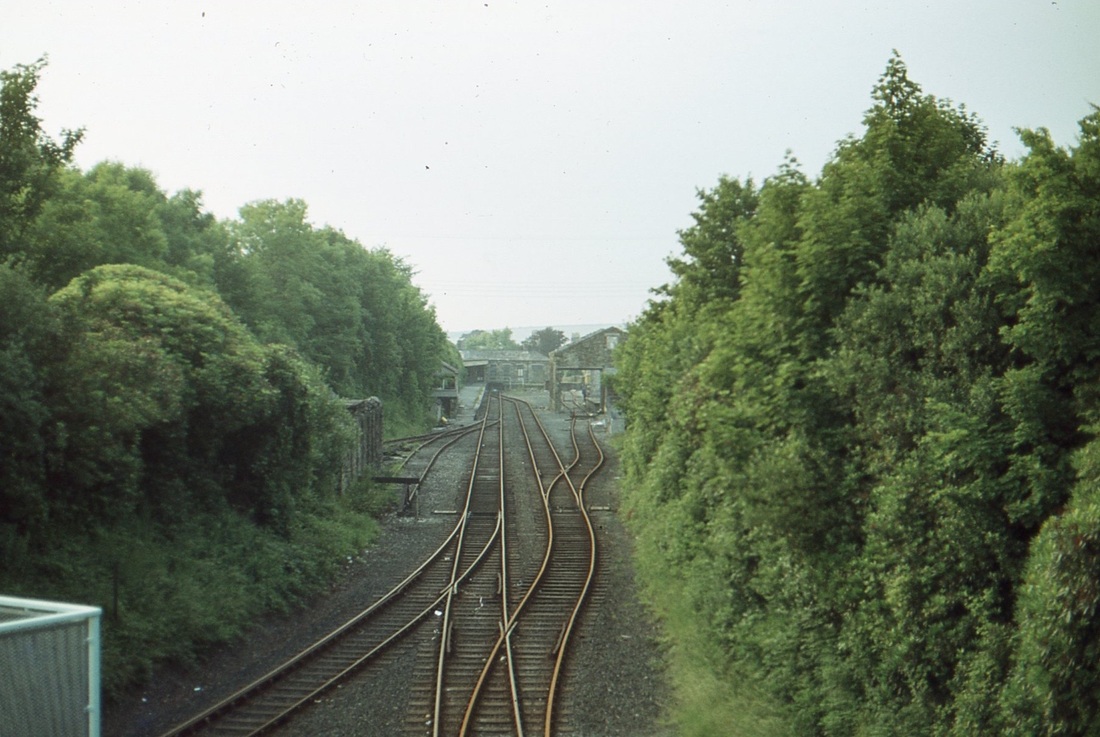
It is July 1978 as we stand on the footbridge at the east end of the Bodmin General complex. Not looking in the best of health but it is still all there. The loco shed, the signal box and the long siding serving the goods shed. There was once a further siding off to the right from this. Copyright Jim Lewis
Following temporary re-naming at Falmouth Docks on the 24th March 2001 D821 Greyhound bears the plates 'Cornwall' and stays a short while before moving up country. These views all on 25th March 2001 by Roger Winnen.
4612 BR and B&W
Mike Roach
Mike Roach
The photograph above taken by daughter in law, Louise Roach, prompted Mike Roach to delve in his 'Treasure Trove' for pictures of 4612 in its last days on B.R. Many thanks to Louise.
Further to today's picture of 4612 (8th October 2019) on a low loader I have looked out my pictures of the only time I saw the loco in BR days. on 24 April 1965 the loco worked part of the route of a Railtour double heading with sister loco 9675 with 5 coaches. The railtour started and finished at Cardiff General. 4612 and 9675 worked from Neath Riverside to Colbren Junction on the line to Brecon. At Colbren they ran round and worked back to Swansea High Street via Pontardawe and Swansea St Thomas. 6116 worked the first and last sections.
As an aside I left Plymouth at 6.35am and got back at 1.38am the next morning.
Regards, Mike. Many thanks for the article and historic pictures.
As an aside I left Plymouth at 6.35am and got back at 1.38am the next morning.
Regards, Mike. Many thanks for the article and historic pictures.
Early B & W
Jim Cornelius visits the Bodmin and Wenford
An account of a serious accident which occurred at Bodmin General on the 7th December 1961
A report by Michael L. Roach.
A report by Michael L. Roach.
BODMIN GENERAL 1961
Sixtieth Anniversary of a Collision on 7 December 1961
In January 1945 the Great Western Railway completed the construction of six pannier tanks at Swindon Works numbered 4690-5. The locos were all dispatched to different sheds, as follows: Didcot, Paddington (sic), Reading, Laira, Southall and the the loco that we are interested in 4694 which went to Danygraig (Swansea). All six locos were withdrawn from service between October 1963 and September 1964, three of them from sheds on the former Southern Railway. 4694 stayed at Danygraig Shed until October 1959 when it moved to the Southern Region shed at Exmouth Junction, Exeter. Just two months later it moved further west to Wadebridge shed. Here it would primarily have worked trains to Bodmin North, Bodmin General and Bodmin Road, as it did on the morning of Thursday 7 December 1961 when it worked the first train of the day, the 6.58am from Wadebridge to Bodmin General, due there at 7.20am. It was a cold frosty morning and still quite dark as the train arrived at Bodmin General Station.
On that morning sixty years ago the 6.55am mixed train from Bodmin Road had arrived at Bodmin General's single terminal platform at 7.15am. The train loco was prairie tank no. 5539 of St. Blazey shed. 5539 ran round its train and started hauling it out of the station back the way it had arrived to clear the platform for the arrival of the passenger train at 7.20am when it was hit by pannier tank 4694 hauling two coaches in a sidelong collision, and three open wagons were derailed. Although the speed of each train was not great the combined speed was sufficient to wrench the right hand pannier tank off 4694 forcing it back into the cab killing the driver. The fireman of 4694 and one passenger were slightly injured. The breakdown crane was quickly on the scene and all vehicles were re-railed by 1.30pm; 25 tons of spilt coal cleared away; and the line reopened at 2.35pm the same day.
The summary of the accident report recorded that the train hauled by 4694 had entered Bodmin General under steam past the home signal, which had not been lowered. The home signal in question was awkwardly situated on the fireman's side of the cab on the inside of a sharp check-railed curve approaching the Beacon Road overbridge. A good view of the curve is obtained from the road bridge because the track is still there as part of the Bodmin & Wenford Railway. The Inspecting Officer attributed the cause of the accident to fireman error with no secondary or contributory causes. The driver who died was 35 years old, while the fireman was just 18 years; I wonder if he is still alive. There is a very full report of an inquiry into the crash in the Cornish Guardian of 21 December 1961.
MLR / 25 November 2021
Sixtieth Anniversary of a Collision on 7 December 1961
In January 1945 the Great Western Railway completed the construction of six pannier tanks at Swindon Works numbered 4690-5. The locos were all dispatched to different sheds, as follows: Didcot, Paddington (sic), Reading, Laira, Southall and the the loco that we are interested in 4694 which went to Danygraig (Swansea). All six locos were withdrawn from service between October 1963 and September 1964, three of them from sheds on the former Southern Railway. 4694 stayed at Danygraig Shed until October 1959 when it moved to the Southern Region shed at Exmouth Junction, Exeter. Just two months later it moved further west to Wadebridge shed. Here it would primarily have worked trains to Bodmin North, Bodmin General and Bodmin Road, as it did on the morning of Thursday 7 December 1961 when it worked the first train of the day, the 6.58am from Wadebridge to Bodmin General, due there at 7.20am. It was a cold frosty morning and still quite dark as the train arrived at Bodmin General Station.
On that morning sixty years ago the 6.55am mixed train from Bodmin Road had arrived at Bodmin General's single terminal platform at 7.15am. The train loco was prairie tank no. 5539 of St. Blazey shed. 5539 ran round its train and started hauling it out of the station back the way it had arrived to clear the platform for the arrival of the passenger train at 7.20am when it was hit by pannier tank 4694 hauling two coaches in a sidelong collision, and three open wagons were derailed. Although the speed of each train was not great the combined speed was sufficient to wrench the right hand pannier tank off 4694 forcing it back into the cab killing the driver. The fireman of 4694 and one passenger were slightly injured. The breakdown crane was quickly on the scene and all vehicles were re-railed by 1.30pm; 25 tons of spilt coal cleared away; and the line reopened at 2.35pm the same day.
The summary of the accident report recorded that the train hauled by 4694 had entered Bodmin General under steam past the home signal, which had not been lowered. The home signal in question was awkwardly situated on the fireman's side of the cab on the inside of a sharp check-railed curve approaching the Beacon Road overbridge. A good view of the curve is obtained from the road bridge because the track is still there as part of the Bodmin & Wenford Railway. The Inspecting Officer attributed the cause of the accident to fireman error with no secondary or contributory causes. The driver who died was 35 years old, while the fireman was just 18 years; I wonder if he is still alive. There is a very full report of an inquiry into the crash in the Cornish Guardian of 21 December 1961.
MLR / 25 November 2021
Many thanks as usual to Michael L. Roach.Roach for this fascinating report, as usual not a detail missed or a stone left unturned. Does anybody know the fireman who was witness to this terrible accident.
A sequel to the Bodmin Accident
Roy Hart
Roy Hart
Dear Keith,
The great irony of the Bodmin accident was that the branch home signal (which the Wadebridge train undoubtedly passed at danger) was, until 1955 situated in the shadow of the overbridge, only about 2 yards from the Bodmin Road line. In that year, the signal was repositioned 100 yards back towards Boscarne, to give a better margin of safety!
There were, in fact three engines present at Bodmin station at the time of the accident: a D63xx diesel at the station buffers, 5539 drawing its freight towards Bodmin Road and, of course, the fateful pannier.
The pannier tank was an SR one, allocated to Wadebridge to replace scrapped O2 0-4-4 tanks. The diesel at the platform was the Bodmin Road service passenger engine, the WR passenger service having been dieselised in September 61.
The picture of the diagram at today's Bodmin box is of interest, but it must be borne in mind that today's signalling shown there is completely different from that of 1961.
I remember Brian Coad (who was on duty in Bodmin box the night before the accident) telling me the whole story. He was then a signalman at Goonbarrow Junction.
Roy Hart
The great irony of the Bodmin accident was that the branch home signal (which the Wadebridge train undoubtedly passed at danger) was, until 1955 situated in the shadow of the overbridge, only about 2 yards from the Bodmin Road line. In that year, the signal was repositioned 100 yards back towards Boscarne, to give a better margin of safety!
There were, in fact three engines present at Bodmin station at the time of the accident: a D63xx diesel at the station buffers, 5539 drawing its freight towards Bodmin Road and, of course, the fateful pannier.
The pannier tank was an SR one, allocated to Wadebridge to replace scrapped O2 0-4-4 tanks. The diesel at the platform was the Bodmin Road service passenger engine, the WR passenger service having been dieselised in September 61.
The picture of the diagram at today's Bodmin box is of interest, but it must be borne in mind that today's signalling shown there is completely different from that of 1961.
I remember Brian Coad (who was on duty in Bodmin box the night before the accident) telling me the whole story. He was then a signalman at Goonbarrow Junction.
Roy Hart
Many thanks Roy - your 'eagle eye' much appreciated.
Bodmin Developments
Chris Bellett
Chris Bellett
Hi Keith, Hope all is well with everybody?
Interesting article on todays homepage of the website concerning the 1961 accident at Bodmin General. The photograph of the signalbox diagram is now a little out of date as it has been modified as part of the ongoing alterations to accomodate the new Platform No.2 (not yet in use). The diagram is going to be replaced next year with one drawn more in line (pun intended) with 1950s BR Western Region practice. I have attached a photograph of the current updated diagram.
Take care, Chris Bellett Retired S&T Engineer CRS Member
Interesting article on todays homepage of the website concerning the 1961 accident at Bodmin General. The photograph of the signalbox diagram is now a little out of date as it has been modified as part of the ongoing alterations to accomodate the new Platform No.2 (not yet in use). The diagram is going to be replaced next year with one drawn more in line (pun intended) with 1950s BR Western Region practice. I have attached a photograph of the current updated diagram.
Take care, Chris Bellett Retired S&T Engineer CRS Member
Many thanks Chris.
At a sad and special time
In memory of Queen Elizabeth 2
In memory of Queen Elizabeth 2
Bodmin General to Boscarne Jct.
Boscarne Junction - the earlier days.
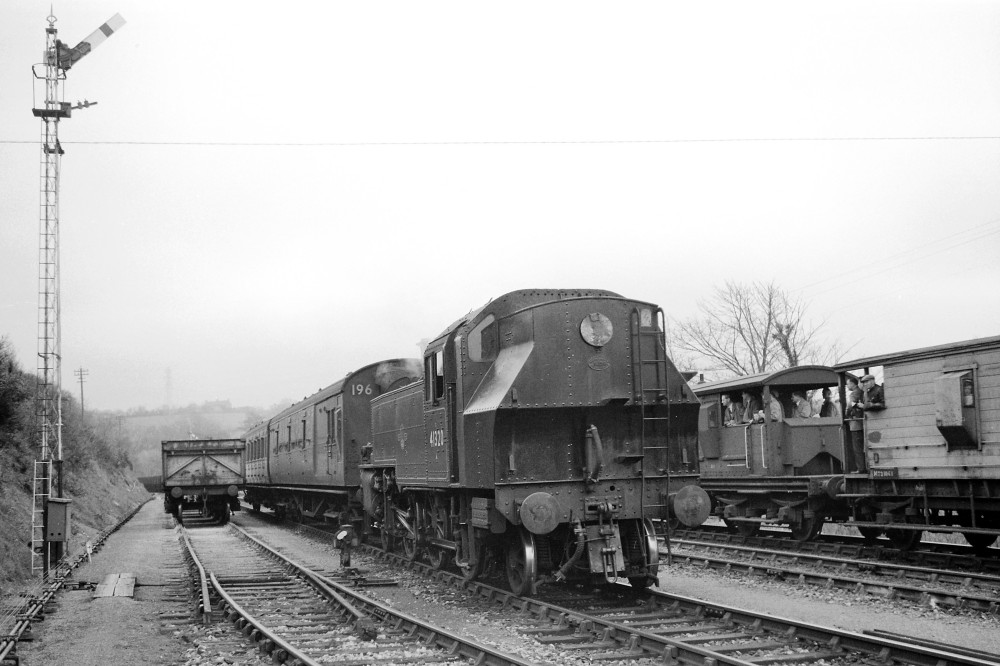
Ivatt 'Micky Mouse' 2-6-2T no. 41320 + set 196 is a Bodmin North to Wadebridge train at Boscarne Junction looking towards Bodmin. The brake van special is on the GWR running line and has probably been up the Wenford Branch. Mike further reports that many have trawked through the Six Bells Junction site but haven't found a West Country brake van trip with a 'Queen Mary' brake van which matches the period when 41320 was allocated to that part of the country. Apparentley there were two 'Queen Mary's' based at Wadebridge for many years. It has also been suggested that this 'jolly' could be a BR staff outing rather than a railfan charter. CAN YOU HELP? From the Mike Morant collection
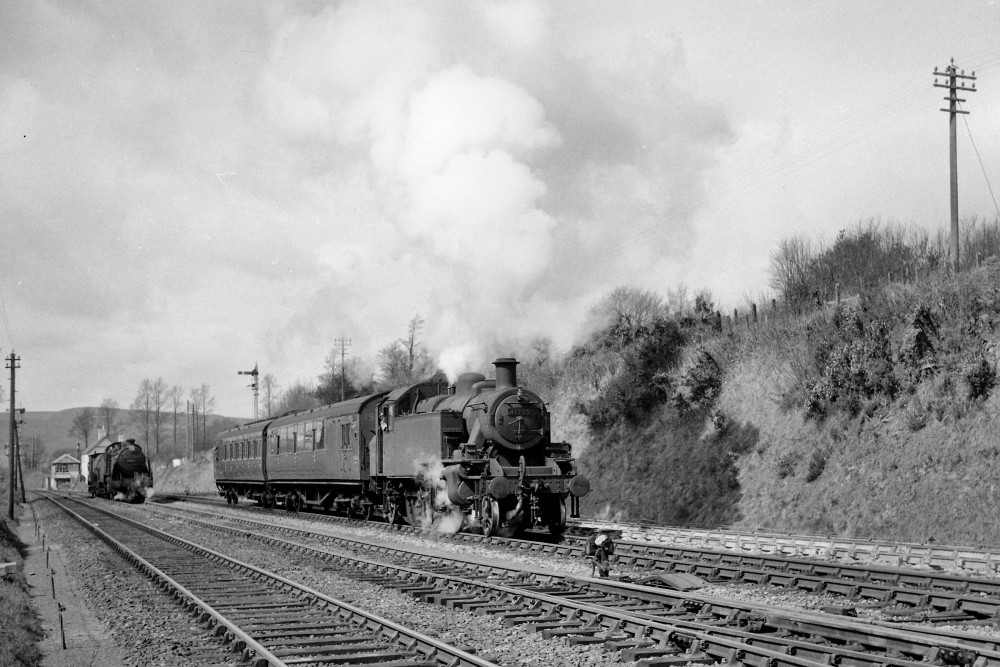
Here we see Ivatt 'Mickey Mouse' 2MT 2-6-2T no. 41275 heading for Bodmin North on the SR running line. The box in the background is Boscarne Junction whilst the loops to each side are goods sidings, primarily to exchange traffic between S.R. and G.W.R. The line to the extreme left is the G.W.R. running line from Bodmin General. Picture by courtesy of the Mike Morant Collection.
Boscarne Exchange Platform
The station, referred to in the timetable as Boscarne Exchange Platform, closed on 18 April 1966 when two trains daily from Bodmin General reversed at the junction, travelling to Dunmere Halt and Bodmin North before returning and continuing on to Wadebridge. This continued until the passenger service between Bodmin Road and Padstow was withdrawn on the 30th January 1967.
AC Cars Railbus Introduced: 1958. Body: 36ft. Engine: AEC 150hp 79977/8 were based at St. Blazey with employment on a shuttle service to Bodmin North from June 14th '64, connecting with trains from Wadebridge to Bodmin Road at newly opened exchange platforms at Boscarne Junction, and also certain trips to Wadebridge.
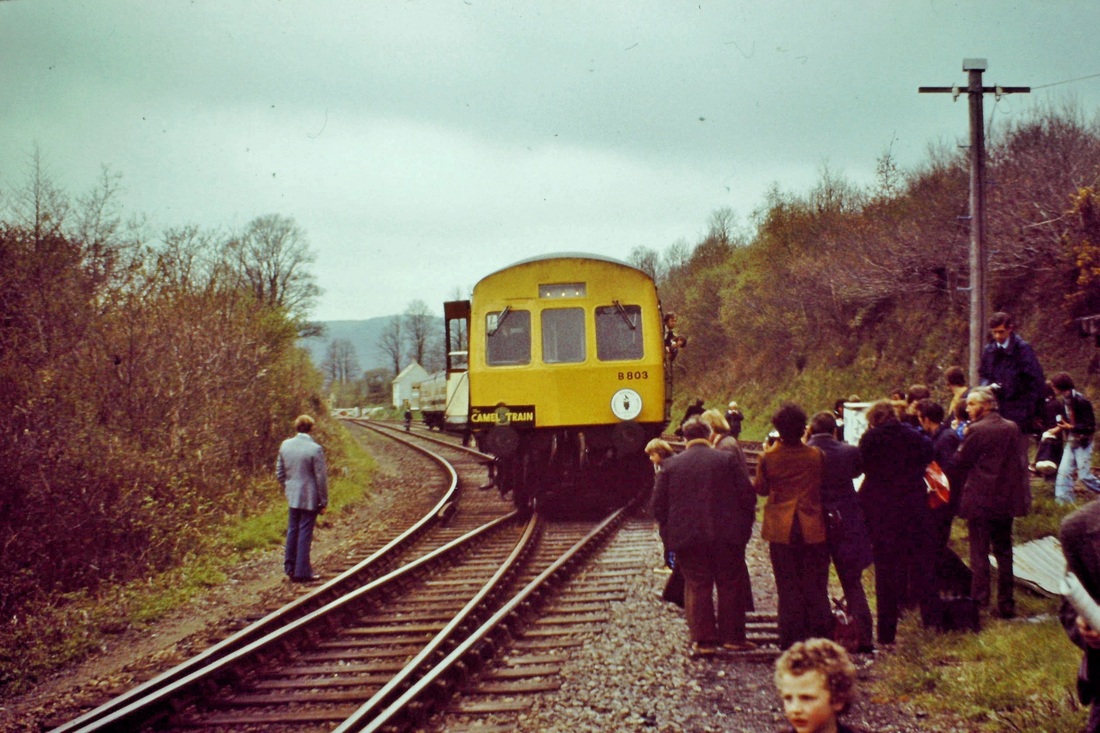
On the 6th May 1978 the Lea Valley Railway Club organised a train to do two return trips from Plymouth to Wadebridge. The train comprising of two x three car sets. The Cornwall Railway Society acted as ticket agents for Cornwall producing quite a number of passengers for the first train from Wadebridge to Plymouth and the second train from Plymouth to Wadebridge. On the first run from Wadebridge to Plymouth the rear of the 3 car units became defective and had to be left behind at Boscarne in the sidings. We all travelled to Plymouth in a very overcrowded train. For the second train a spare three car set was conjured up and we returned to Wadebridge in comfort. The Lea Valley kindly permitted our headboard on the train to Plymouth and back - its first outing. Picture Copyright of Sid Sponheimer. To see more of this railtour go to Diesel railtours and look for 6th May 1978 - the 'Camel Train'.
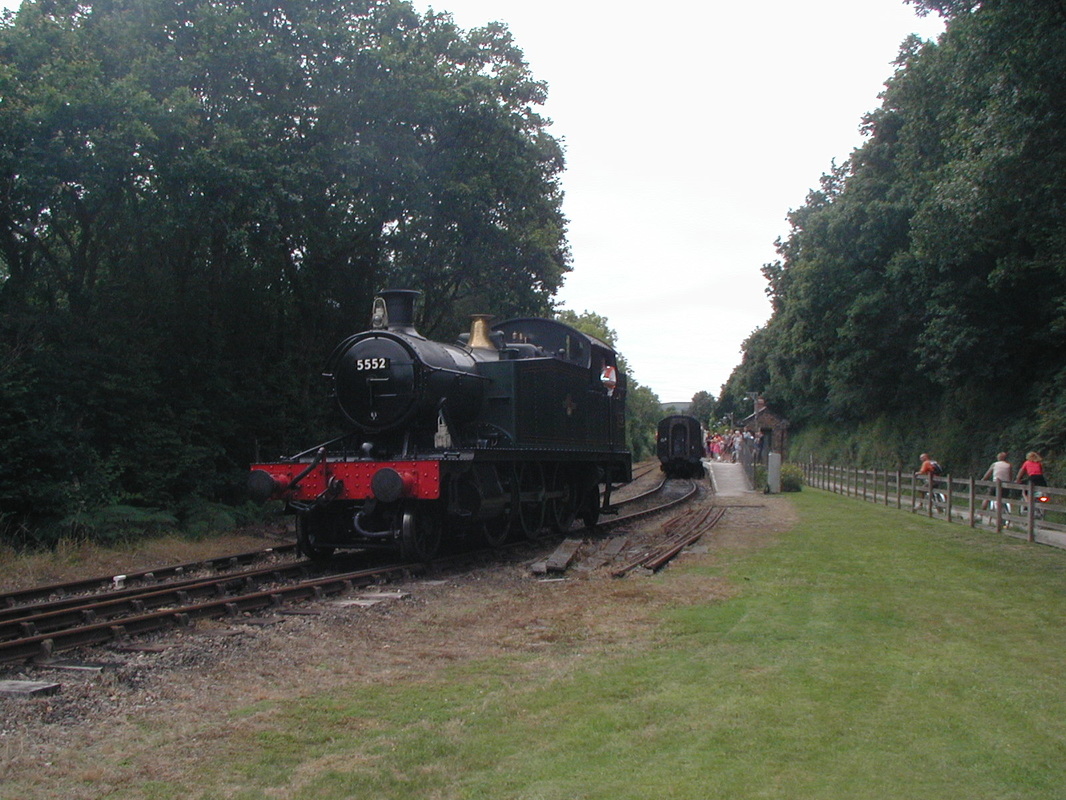
5552 having run round backs onto its train for the return journey to Bodmin General. 3rd August 2011. Copyright Chris Osment. Official permission granted by the B & W for a picture from this location. (Further notes from Chris Osment - Very roughly - the running line is on the alignment of the old No 1 Siding, whilst the run-round loop was once the GWR line. The Platform is where the SR line was, whilst the foot/cycle path is on the site of the old No 2 Siding.
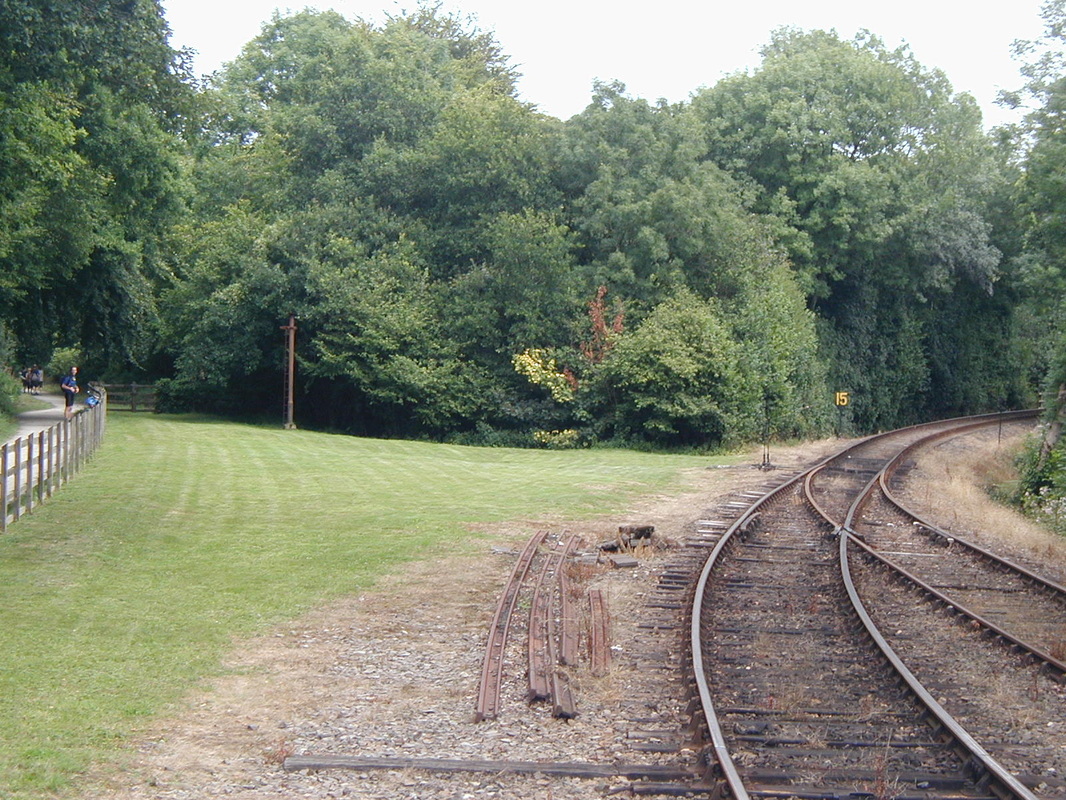
At Boscarne Junction, a view looking at the commencement of the climb up to Bodmin General on the 3rd August 2011. Boscarne Exchange Platform lay just beyond the 15 MPH sign and the route to Bodmin North and Wenford lay to the left. A low level platform was sited where the young man stands outside the fence. Copyright Chris Osment Permission granted for this position by the B & W Further notes by Chris Osment The rusty post in front of the trees is the remains of the one of the ‘STOP’ lamps which were erected on the approached to B Jcn by the WR after all the signals were removed
Reflections of Boscarne and the Clay Traffic - Andrew and Diane Jones
Each day that goes by seems to get more and more complicated, if only we could all be whisked back to the 1980’s!
Please find a collection of photographs from 1983 and 2005.
Boscarne Junction still had an air of years long gone when I visited in 1983, only a few weeks before closure. I have included a close up of the wonderful and simple English Clays Lovering and Pochin logo adorning the clay hoods which was very much the order of the day in my child hood.
Unfortunately the Wenfordbridge branch line suffered from the introduction of the CDA wagons which made the clay hoods redundant.
Clay was still being produced on Bodmin Moor when the line closed and we had to endure many replacement large lorry movements until the pits closed in the early 2000’s.
As the years go by more and more of the Clay industry’s heritage disappears and although at the time I considered if it was particularly interesting, I am very glad I continued to operate the camera.
Very best wishes Andrew and Diane
Please find a collection of photographs from 1983 and 2005.
Boscarne Junction still had an air of years long gone when I visited in 1983, only a few weeks before closure. I have included a close up of the wonderful and simple English Clays Lovering and Pochin logo adorning the clay hoods which was very much the order of the day in my child hood.
Unfortunately the Wenfordbridge branch line suffered from the introduction of the CDA wagons which made the clay hoods redundant.
Clay was still being produced on Bodmin Moor when the line closed and we had to endure many replacement large lorry movements until the pits closed in the early 2000’s.
As the years go by more and more of the Clay industry’s heritage disappears and although at the time I considered if it was particularly interesting, I am very glad I continued to operate the camera.
Very best wishes Andrew and Diane
Demolition at Boscarne Junction - the last B.R. train.
I am a Cornish exile now living in Hampshire and spent the first 24 years of my life in Bodmin. I have good memories of the Wenford line in its last days and used to run down Beacon hill to see a 25 and later 37 shunting at Bodmin general on my way to school.
I was on hand to see the very last BR movement on the line in May 1985 and was surprised to see a train leaving General for Boscarne. I managed to get down there and witnessed a class 37 and wagon for the recovery of several lengths rail from the former line to Bodmin North line. We talked to the gangers and they said It was to be reused on the Looe line. Cheeky as I believe the line had been sold to the B&W by then. I also saw it arrive at Bodmin Rd and saw the box signal the train and then switched out for the very last time. I believe the signalman was Peter Hamley.
Rob Iredale
I was on hand to see the very last BR movement on the line in May 1985 and was surprised to see a train leaving General for Boscarne. I managed to get down there and witnessed a class 37 and wagon for the recovery of several lengths rail from the former line to Bodmin North line. We talked to the gangers and they said It was to be reused on the Looe line. Cheeky as I believe the line had been sold to the B&W by then. I also saw it arrive at Bodmin Rd and saw the box signal the train and then switched out for the very last time. I believe the signalman was Peter Hamley.
Rob Iredale
BODMIN GENERAL - PADSTOW
Boscarne Exchange Platform
Boscarne Junction
Nanstallon Halt
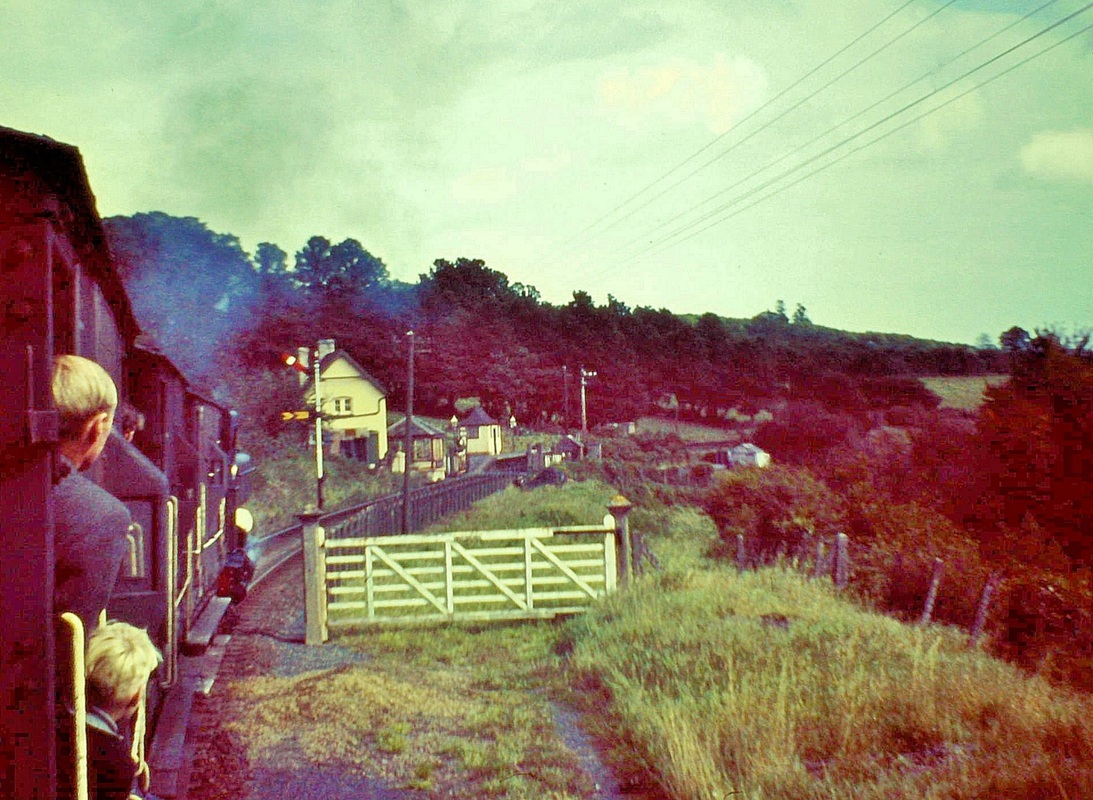
The occasion is the last steam hauled railtour to Wenford Bridge. 19th September 1965. We are on the approach to Nanstallon from Wadebridge. The gate led to the wharf closed 2nd May 1960 and lifted the following year. Note ahead of 1369 the level crossing keepers cottage, the cabin and beyond that Nanstallon Halt with its GW pagoda shelter.
I wonder if you can help me, I took this screen shot of a photo I found online a few years ago. I think it’s taken at Nanstallon Halt between Boscarne Junction and Wadebridge and possibly taken in the morning of the summer of 1966 judging by the trees and shadows. I also think this is a Padstow to Bodmin General service.
Please would you be able to let me know any details have regarding the possible date, service, bubble car number etc (possible 55014, as in some pictures on your website ?)
This location is just begging to be modelled and it’s one of a few I have in mind for future projects.
Many thanks for your help, I would be very grateful for any information you may have.
Ian Bartlett
Yeovil
Taking a fresh look at Nanstallon Level Crossing. It is a great delight to bring you some moments in time caught by Andrew Jones, and what a delight they are. Andrew writes:- Dear Keith, Please find the next set of photos, Nanstallon level crossing April 1970.
Generally this was a difficult picture to obtain, as the goods service to Wadebridge, passed Nanstallon at approx 06.30. Luckily the lamps are still the originals. Shortly after this picture was taken, they were removed and later replaced, with a pair of standard bull nose lamps.
A perfect example, of a low tech solution, which typified the country railway era, up until the 1980’s.
The vandalised crossing keepers house, still exists, being sold for around £3,000 in the mid - 1970’s.
I would very much appreciate, if anyone can put a name, to the gentleman in the photograph.
Best wishes Andrew Jones Very many thanks Andrew.
If you go to Google Earth Street View you'll also see a charming view of the crossing as seen recently - the cottage has been extended.
Generally this was a difficult picture to obtain, as the goods service to Wadebridge, passed Nanstallon at approx 06.30. Luckily the lamps are still the originals. Shortly after this picture was taken, they were removed and later replaced, with a pair of standard bull nose lamps.
A perfect example, of a low tech solution, which typified the country railway era, up until the 1980’s.
The vandalised crossing keepers house, still exists, being sold for around £3,000 in the mid - 1970’s.
I would very much appreciate, if anyone can put a name, to the gentleman in the photograph.
Best wishes Andrew Jones Very many thanks Andrew.
If you go to Google Earth Street View you'll also see a charming view of the crossing as seen recently - the cottage has been extended.
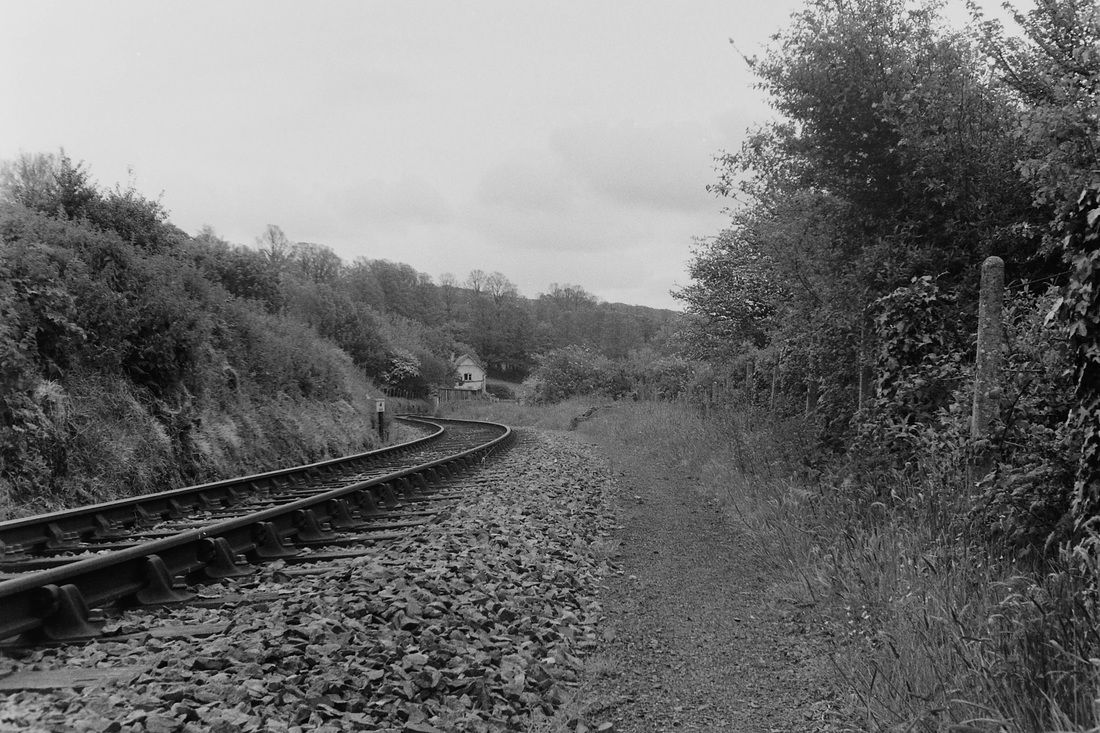
Moving a hundred yards or so down the line towards Wadebridge and 'turning about' we see the crossing cottage in the distance. The area to the right of the running line was occupied by a siding known as 'Nanstallon Wharf', this was closed w,e.f 2nd May 1960 and removed in 1961. Picture April 1970. Copyright Andrew Jones N.B. A picture at the top of this series on Nanstallon taken in 1965 shows the gate which once protected this siding, also the signal box and signals.
It will be worth your time and trouble to take a look, courtesy of Google Earth Street View at this charming location today.
Nanstallon Crossing distant signal an article by Andrew Jones.
Whilst researching this short article a number of surprising facts came to light.
Please find a ‘then and now, July 1972 and March 2nd 2021’ view of the Nanstallon level crossing protection signal situated approx 4,000 feet from Nanstallon signal box looking towards Wadebridge. In common with a number of signals on this shared LSWR and GWR section it was of lattice work design and construction which gave the appearance of considerable height.
Remarkably this signal survived for many years after passenger closure, but was disconnected when Nanstallon signal box was decommissioned.
A signal wire repeater can be seen in photograph 2, which due to the considerable distance, used a balance weight pivoted to lessen the load on the signal box lever. These were not unusual but it would still have been an effort for the signalman, due in part, to the reverse curves on the approach to the long straight and signal position opposite Denby, (now the site of the Camel Valley Vineyard).
The 1972 photograph illustrates just how well managed the lineside undergrowth was controlled 50 years ago. Within a year or so this view changed considerably, when the National Grid expanded the 400kv supergrid network and installed pylons across the Camel Valley causing much outrage at the time. The cost of burying the cables was looked into but proved to be extremely expensive due the the Camel River and the idea was dropped.
During construction a BR lookout was employed to protect the railway even though only one train a day used the section at 06.00 am.
Incidentally on completion of the supergrid, Hayle Power Station which had already been rationalised was decommissioned in 1973, and there is a very interesting article and some archive railway photographs at www.octelamlwch.co.uk/hayle
or look up the Hayle section. who used the spent hot water from the power station and were the eventual cause of its demise.
Hayle power station was subsequently completely levelled due to a construction agreement that stated that the surrounding area should be reinstated to its natural state on closure.
Very best wishes Andrew and Diane
Please find a ‘then and now, July 1972 and March 2nd 2021’ view of the Nanstallon level crossing protection signal situated approx 4,000 feet from Nanstallon signal box looking towards Wadebridge. In common with a number of signals on this shared LSWR and GWR section it was of lattice work design and construction which gave the appearance of considerable height.
Remarkably this signal survived for many years after passenger closure, but was disconnected when Nanstallon signal box was decommissioned.
A signal wire repeater can be seen in photograph 2, which due to the considerable distance, used a balance weight pivoted to lessen the load on the signal box lever. These were not unusual but it would still have been an effort for the signalman, due in part, to the reverse curves on the approach to the long straight and signal position opposite Denby, (now the site of the Camel Valley Vineyard).
The 1972 photograph illustrates just how well managed the lineside undergrowth was controlled 50 years ago. Within a year or so this view changed considerably, when the National Grid expanded the 400kv supergrid network and installed pylons across the Camel Valley causing much outrage at the time. The cost of burying the cables was looked into but proved to be extremely expensive due the the Camel River and the idea was dropped.
During construction a BR lookout was employed to protect the railway even though only one train a day used the section at 06.00 am.
Incidentally on completion of the supergrid, Hayle Power Station which had already been rationalised was decommissioned in 1973, and there is a very interesting article and some archive railway photographs at www.octelamlwch.co.uk/hayle
or look up the Hayle section. who used the spent hot water from the power station and were the eventual cause of its demise.
Hayle power station was subsequently completely levelled due to a construction agreement that stated that the surrounding area should be reinstated to its natural state on closure.
Very best wishes Andrew and Diane
A further and much appreciated note received within minutes of our posting on the website from Chris Osment - Rail West.
Keith
With regard to the item about the Nanstallon “crossing signal”, based on the location then that would have been the Down Distant (lever No 10) for Nanstallon. It is interesting to see, from the remnant of the spectacle plate, that this was yet another ex-L&SWR signal that was still a lower-quadrant at the time of its abolition, which had been sited on the right-hand side of the line presumably to improve its sighting by approaching trains.
I can not find any official record for the distance of that signal from the crossing box, but based on Andrew’s assessment then at over 1300 yards it was certainly a long ‘pull’. When the crossing keeper put back lever 10 after a train had passed then there would have been a considerable length of slack signal wire which had to be ‘pulled in’. The purpose of the additional weight lever seen on the short post in the second photograph would have been to help to pull in that slack, to ensure that the signal arm and its own weight lever could return fully to the ‘on’ position’.
It is possible also that elsewhere along the wire run there had been a ‘gain stroke’ lever to enable the relatively short stroke of lever 10, when pulled over to clear the signal, to be able to take up all the slack that would exist in such a long length of wire.
Regards, Chris (One learns everyday - thank you Chris)
Keith
With regard to the item about the Nanstallon “crossing signal”, based on the location then that would have been the Down Distant (lever No 10) for Nanstallon. It is interesting to see, from the remnant of the spectacle plate, that this was yet another ex-L&SWR signal that was still a lower-quadrant at the time of its abolition, which had been sited on the right-hand side of the line presumably to improve its sighting by approaching trains.
I can not find any official record for the distance of that signal from the crossing box, but based on Andrew’s assessment then at over 1300 yards it was certainly a long ‘pull’. When the crossing keeper put back lever 10 after a train had passed then there would have been a considerable length of slack signal wire which had to be ‘pulled in’. The purpose of the additional weight lever seen on the short post in the second photograph would have been to help to pull in that slack, to ensure that the signal arm and its own weight lever could return fully to the ‘on’ position’.
It is possible also that elsewhere along the wire run there had been a ‘gain stroke’ lever to enable the relatively short stroke of lever 10, when pulled over to clear the signal, to be able to take up all the slack that would exist in such a long length of wire.
Regards, Chris (One learns everyday - thank you Chris)
Grogley Halt
Following on from the past and present topics, here is Polbrock , taken approx 40 years apart. There is a Sunbeam Rapier parked outside John Jago’s house, where the crews of passing trains often delivered his daily cigarettes.
Trains were few and far between by the time the 1977 shot was taken, usually early in the morning, with an occasional evening goods. Nowadays taking this shot in 2017 is vastly more dangerous with speeding cyclists probably travelling at twice the speed of a goods train and taking a lot less care than railway staff would ever have been allowed!
For me the Camel Trail is a mixed blessing, but at least we can all still travel the route of this once famous line.
Keep up the good work!
Best wishes Andrew Jones Many thanks Andrew
Trains were few and far between by the time the 1977 shot was taken, usually early in the morning, with an occasional evening goods. Nowadays taking this shot in 2017 is vastly more dangerous with speeding cyclists probably travelling at twice the speed of a goods train and taking a lot less care than railway staff would ever have been allowed!
For me the Camel Trail is a mixed blessing, but at least we can all still travel the route of this once famous line.
Keep up the good work!
Best wishes Andrew Jones Many thanks Andrew
Grogley Happenings - a report by Andrew and Diane Jones.
First published on this website in December 2021.
Please find attached recent photographs taken at Grogley. Cornwall Council has continued to upgrade the Camel Trail and the pre Christmas flail has truly uncovered the original profile of the railway formation.
Grogley Halt appeared in 1906 relatively late in railway history adjacent the hamlet of nearby Brocton. Lightly used at the best of times it mainly served the numerous market gardens and small farms. I suppose Grogley was more famous for its junction with the Ruthernbridge Branch line which survived for almost a century closing in 1933, however but for fate a useful direct link to Fowey would have been possible, but at considerable cost and difficult to justify even in the Railway Mania period.
The original mainline connection was altered in 1888 when a northern short deviation through a rock cutting reduced the flood risk.
Photograph 1 illustrates the original southerly route to the left of the prominent tree and the later deviation to the right.
A considerable amount of excavation was required for the deviation and photograph 2 shows the rock cutting and depth. No mean feat even in the 1880’s, I have often wondered why it was not tunnelled, but given that the whole of North Cornwall’s difficult terrain only had one at Trelill I suppose it must have been cheaper to excavate.
I can remember even in railway days this cutting was very wet and the drainage was always difficult. Cornwall Council has recently ditched and improved the original run off but the area is still vulnerable to flooding.
Bee hives were kept in the quarry opposite the halt even throughout railway operation.
To finish with, just a little bit of New year fun, a near neighbour has built a not to accurate replica of Grogley Halt for a wood shed, the original was situated 800 yards behind, but unfortunately only the platform still exists minus its original soil access slope and gate.
Due to a recent mishap parking at Grogley is no longer permitted but pedestrian access is still possible over the Ruthernbridge railway crossing
Very best wishes Andrew and Diane
Grogley Halt appeared in 1906 relatively late in railway history adjacent the hamlet of nearby Brocton. Lightly used at the best of times it mainly served the numerous market gardens and small farms. I suppose Grogley was more famous for its junction with the Ruthernbridge Branch line which survived for almost a century closing in 1933, however but for fate a useful direct link to Fowey would have been possible, but at considerable cost and difficult to justify even in the Railway Mania period.
The original mainline connection was altered in 1888 when a northern short deviation through a rock cutting reduced the flood risk.
Photograph 1 illustrates the original southerly route to the left of the prominent tree and the later deviation to the right.
A considerable amount of excavation was required for the deviation and photograph 2 shows the rock cutting and depth. No mean feat even in the 1880’s, I have often wondered why it was not tunnelled, but given that the whole of North Cornwall’s difficult terrain only had one at Trelill I suppose it must have been cheaper to excavate.
I can remember even in railway days this cutting was very wet and the drainage was always difficult. Cornwall Council has recently ditched and improved the original run off but the area is still vulnerable to flooding.
Bee hives were kept in the quarry opposite the halt even throughout railway operation.
To finish with, just a little bit of New year fun, a near neighbour has built a not to accurate replica of Grogley Halt for a wood shed, the original was situated 800 yards behind, but unfortunately only the platform still exists minus its original soil access slope and gate.
Due to a recent mishap parking at Grogley is no longer permitted but pedestrian access is still possible over the Ruthernbridge railway crossing
Very best wishes Andrew and Diane
Many thanks to Andrew and Diane and of course to the near neighbours for the article and also the shed picture.
The track bed at
Grogley - Then and now
Andrew and Diane Jones
Grogley - Then and now
Andrew and Diane Jones
Dear Keith and Valerie,
Well its been an amazing couple of months! The articles by Michael L Roach are just incredible, accompanied by such detail and variety, we are very privileged and I for one look forward to many more.
I have attached a then and now set of photographs, separated by 50 years taken just east of Grogley Halt.
In 1973 the track was looking in pristine condition, even after passenger closure some 6 years previous. An early morning daily freight working to Wadebridge kept the rails rust free!
From my extensive records the rail chairs were dated 1957 on wooden sleepers at this point and the mileage marker and gradient post were still in position whilst beyond is the occupation crossing serving the South West Water monitoring station.
The latest photograph taken this week in exactly the same spot, 50 years apart illustrates the changes with the Camel Trail now hard surfaced and very well kept. The Water monitoring station was removed in 2021.
I note from our bedroom window that the early morning freight has been replaced with cyclists who now use the trail for work, lights blazing at 05.30!
Very best wishes Andrew and Diane
Well its been an amazing couple of months! The articles by Michael L Roach are just incredible, accompanied by such detail and variety, we are very privileged and I for one look forward to many more.
I have attached a then and now set of photographs, separated by 50 years taken just east of Grogley Halt.
In 1973 the track was looking in pristine condition, even after passenger closure some 6 years previous. An early morning daily freight working to Wadebridge kept the rails rust free!
From my extensive records the rail chairs were dated 1957 on wooden sleepers at this point and the mileage marker and gradient post were still in position whilst beyond is the occupation crossing serving the South West Water monitoring station.
The latest photograph taken this week in exactly the same spot, 50 years apart illustrates the changes with the Camel Trail now hard surfaced and very well kept. The Water monitoring station was removed in 2021.
I note from our bedroom window that the early morning freight has been replaced with cyclists who now use the trail for work, lights blazing at 05.30!
Very best wishes Andrew and Diane
----------------------------------------------------------------------------------------------------------------------------------------------------------------------
In answer to your queries, the above photograph was taken at a point 840 feet from Polbrock Bridge on the Grogley side. The gateway in the photograph was an occupation crossing to a small field adjacent the river camel owned by Pencarrow estate.
The crossing was also the starting point of a check rail on the left hand side facing Wadebridge continuing for 480 feet towards Wadebridge, which is where John Jago’s cottage stands. At this point in the reverse curve the check rail continued on the right hand side until reaching mile post 2 1/2miles directly under Polbrock Bridge. The check rails seem to have been added in 1932 according to the rail chair dates with the parallel line being supported with rail chairs dating from 1951, in track sections of 19 sleepers.
The crossing was also the starting point of a check rail on the left hand side facing Wadebridge continuing for 480 feet towards Wadebridge, which is where John Jago’s cottage stands. At this point in the reverse curve the check rail continued on the right hand side until reaching mile post 2 1/2miles directly under Polbrock Bridge. The check rails seem to have been added in 1932 according to the rail chair dates with the parallel line being supported with rail chairs dating from 1951, in track sections of 19 sleepers.
More on Polbrock Bridge and curves and check rails - an article by Andrew and Diane Jones.
The Humble Permanent Way……….
I was recently reminded when submitting the Polbrock Bridge photograph, how two rails sitting on sleepers are seriously underrated in engineering terms.
I have attached a photograph at the same location taken in 1971 to illustrate just one of the many factors required to safely support the weight and mass of a typical locomotive weighing possibly a 100 tons with a trailing weight of say 200 tons.
Check rails are not particularly common on the mainline except for pointwork and level crossings, but many branch lines with tight curves often relied on some form of protection to stop wheels from climbing the rail and de railing.
(Check rails installed on level crossings were predominantly to reduce debris fouling the track and keep some form of clearance.)
When studying the profile of a standard wheel set it would be noted that the flange should not make contact with the rail except when traversing a curve. When encountering a sharp curve as often found on branch lines there is a tendency proportional to speed for the wheel to try and climb the rail and to counteract this a second check rail was often installed which acted upon the back of the flange to contain the wheel set from lifting.
The branch to Wenfordbridge from Boscarne had extremely tight curves but due to the low speed limit relied on flange greasers to reduce wear, however the squeal through the Outlands section could be heard for miles!
The science behind the permanent way is extremely complex and I was reminded when taking my HNC at Devonport Tech of the involved equations used to calculate all the forces involved and thats after providing the formation and drainage which is a science in its self.
If there is enough interest I would gladly continue this subject in the future. Andrew Jones
I was recently reminded when submitting the Polbrock Bridge photograph, how two rails sitting on sleepers are seriously underrated in engineering terms.
I have attached a photograph at the same location taken in 1971 to illustrate just one of the many factors required to safely support the weight and mass of a typical locomotive weighing possibly a 100 tons with a trailing weight of say 200 tons.
Check rails are not particularly common on the mainline except for pointwork and level crossings, but many branch lines with tight curves often relied on some form of protection to stop wheels from climbing the rail and de railing.
(Check rails installed on level crossings were predominantly to reduce debris fouling the track and keep some form of clearance.)
When studying the profile of a standard wheel set it would be noted that the flange should not make contact with the rail except when traversing a curve. When encountering a sharp curve as often found on branch lines there is a tendency proportional to speed for the wheel to try and climb the rail and to counteract this a second check rail was often installed which acted upon the back of the flange to contain the wheel set from lifting.
The branch to Wenfordbridge from Boscarne had extremely tight curves but due to the low speed limit relied on flange greasers to reduce wear, however the squeal through the Outlands section could be heard for miles!
The science behind the permanent way is extremely complex and I was reminded when taking my HNC at Devonport Tech of the involved equations used to calculate all the forces involved and thats after providing the formation and drainage which is a science in its self.
If there is enough interest I would gladly continue this subject in the future. Andrew Jones
Many thanks indeed to Andrew and Diane for the above article - yes, let's have more please.
Polbrock Bridge - then and now. Andrew and Diane Jones
As I approach my 70’s, memories start to blur and scenes I once took for granted appear slightly muddled.
The attached ‘then and now’ photographs illustrate the dilemma of ‘did I actually imagine this!’
Polbrock Bridge on the Wadebridge railway owes its existence solely to allow access to Pencarrow Estate land on the southern bank of the river Camel. Originally an unmade road, the lane crosses the railway and the river and was only tarmacked after the second world war.
Anyone returning after 40 years would have difficulty recognising the view from the road bridge. Vegetation has taken over, with many small fields in the valley returning to nature.
When visiting old railway locations this is often the case and can be disappointing even though in this case the Camel Trail now provides a direct route for many thousands of walkers and cyclists.
The second photograph captures the sad demise of the railway, but in the ‘then and now’ illustration it is still possible to recognise the original route.
Time travellers beware!
Very best wishes Andrew and Diane
The attached ‘then and now’ photographs illustrate the dilemma of ‘did I actually imagine this!’
Polbrock Bridge on the Wadebridge railway owes its existence solely to allow access to Pencarrow Estate land on the southern bank of the river Camel. Originally an unmade road, the lane crosses the railway and the river and was only tarmacked after the second world war.
Anyone returning after 40 years would have difficulty recognising the view from the road bridge. Vegetation has taken over, with many small fields in the valley returning to nature.
When visiting old railway locations this is often the case and can be disappointing even though in this case the Camel Trail now provides a direct route for many thousands of walkers and cyclists.
The second photograph captures the sad demise of the railway, but in the ‘then and now’ illustration it is still possible to recognise the original route.
Time travellers beware!
Very best wishes Andrew and Diane
Rifle Range Platform or Shooting Range Platform
The platform was built around 1880 to serve a firing range with trains only stopping with written permission from the army. Periods of use centred around the Boer and World War One. Troops were always sent by rail as there was no other means of access. Use of the range ceased after this although the platform, with its cinder surface, was maintained into the 1950s. Named Shooting Range Platform and used until after 1947 (Wikipedia)
The platform was built around 1880 to serve a firing range with trains only stopping with written permission from the army. Periods of use centred around the Boer and World War One. Troops were always sent by rail as there was no other means of access. Use of the range ceased after this although the platform, with its cinder surface, was maintained into the 1950s. Named Shooting Range Platform and used until after 1947 (Wikipedia)
Shooting Range Platform further details kindly supplied by Andrew and Diane Jones
Shooting Range Platform, sometimes referred as Rifle Range Platform, was built in approx mid 1880’s to serve the military rifle range. Access was by rail only and trains stopped by written permission from the army.
The station platform was simple and formed by railway sleepers bolted longitudinally on edge and infilled with rubble topped with a cinder surface.
The targets for the range were situated across the River Camel and required serviceman to use a punt to gain access and operate the machinery.
Officially closed during the 1950,s according to my neighbour who served with the Duke of Cornwalls Light Infantry.
I took the attached photograph 10 years after closure to passengers. At this time the old galvanised refreshment hut was still standing complete with pot belly stove, unfortunately long gone. Freight was still daily and the railway was well kept.
The super elevation of the track can be seen, which was a feature of the railway with a relative high speed achievable for a secondary route as was the case on the North Cornwall Line.
Shooting Range Platform is on the left in the photograph looking towards Pendavy Bridge. Just out of view in the distance is the junction with the North Cornwall Line. There is a proposal to reinstate the trackbed as an addition to the Camel Trail from the junction to Sladesbridge forming a new link along the former LSWR route to a proposed housing development.
If the proposed reinstatement of the railway from Boscarne to Wadebridge goes ahead I suppose the Shooting Range Platform may re open to the public. I hope I live long enough to see it !
Best wishes Andrew and Diane
For more pictures of the line from Bodmin Parkway (Road) to Wadebridge see the Diesel Railtours section September and December 1978
Guineaport Signal remains.
On Friday 12th February 21 I was lucky enough to be called up for my astra zeneca vaccination. What a wonderful service the NHS provides and the very brave staff who have continued to administer front line care, against very difficult circumstances and much personal risk.
I had a minor reaction but nothing serious, so decided today to try and resume my exercise routine and being local to our house, walked to Wadebridge along the Camel Trail which conforms to the latest Covid 19 advice.
I normally cycle but felt slightly unsteady, so decided walking was safest. The trail is very popular at the moment but is easy to maintain social distancing.
On reaching the farm occupation overbridge at Guineaport I decided that it was time to turn around when something caught my eye in the undergrowth. On closer inspection and to my delight I had stumbled on the base to Latice work signals 38/36 situated just before the overbridge facing in the Bodmin direction and just east of the site of Wadebridge East Signal Box. I must have passed this point many times on my bicycle but had never stopped.
Unfortunately finds like this are extremely rare these days given that the efficient scrap men removed the signal in approx 1968/69 and it appears to be the only remaining evidence of a once extensive signalling system at Wadebridge.
I have attached two photographs taken today one close up and another to illustrate how well camouflaged it was.
It just goes to prove that keeping your eyes open can produce some wonderful surprises!
Best wishes Andrew and Diane
I had a minor reaction but nothing serious, so decided today to try and resume my exercise routine and being local to our house, walked to Wadebridge along the Camel Trail which conforms to the latest Covid 19 advice.
I normally cycle but felt slightly unsteady, so decided walking was safest. The trail is very popular at the moment but is easy to maintain social distancing.
On reaching the farm occupation overbridge at Guineaport I decided that it was time to turn around when something caught my eye in the undergrowth. On closer inspection and to my delight I had stumbled on the base to Latice work signals 38/36 situated just before the overbridge facing in the Bodmin direction and just east of the site of Wadebridge East Signal Box. I must have passed this point many times on my bicycle but had never stopped.
Unfortunately finds like this are extremely rare these days given that the efficient scrap men removed the signal in approx 1968/69 and it appears to be the only remaining evidence of a once extensive signalling system at Wadebridge.
I have attached two photographs taken today one close up and another to illustrate how well camouflaged it was.
It just goes to prove that keeping your eyes open can produce some wonderful surprises!
Best wishes Andrew and Diane
Wadebridge in 1941
Wadebridge in July 1952 (72F)
The late Theo Beckett, a keen member of the Cornwall Railway Society, was an employee of Cornwall County Council based in Wadebridge for a time. Luckily for us during July 1952 he had the forethought to take his box camera to the station to record some of the activities associated with the loco shed coded 72F which fortunately lay alongside the platform. The pictures below give you some idea of what can be achieved and recorded with a simple camera. Many thanks to his son, and CRS member David Beckett, for making these pictures available to us. David has written an article on the shed which will hopefully appear in the magazine in due course.
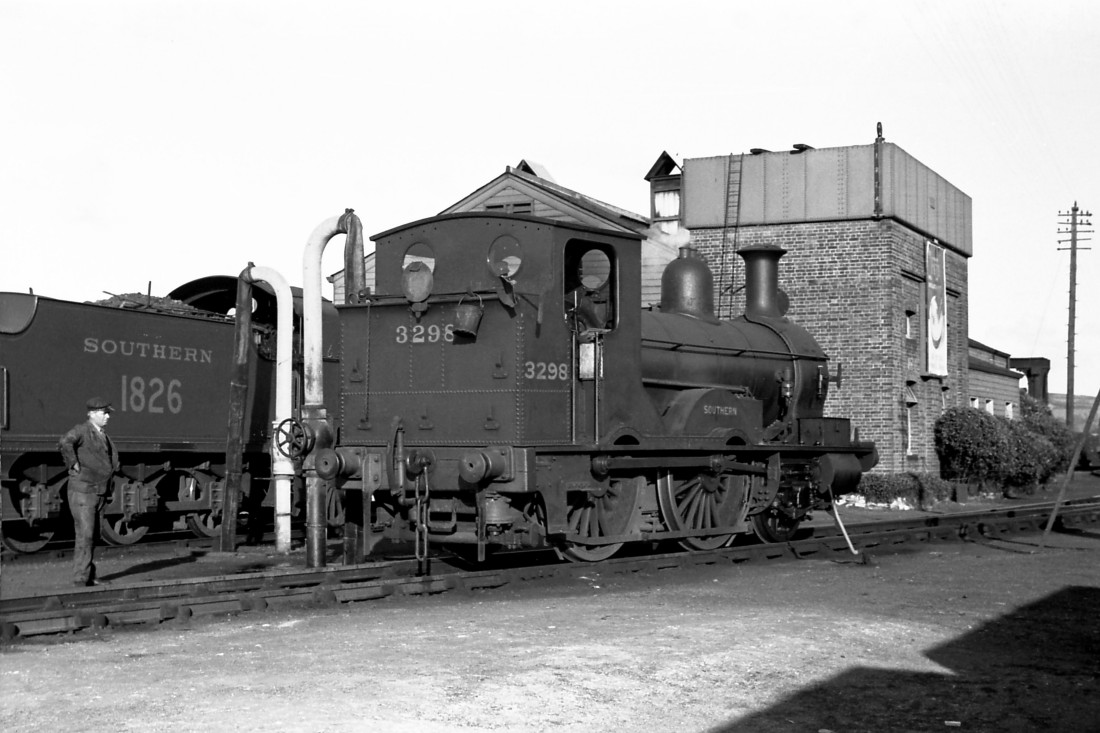
LSWR Beattie 2-4-0W was built by Byer Peacock in 1874 and is pictured here at Wadebridge shed as Southern Railway No. 3298. Subsequently 3298 would be renumbered by BR as 30587 and would remain in service until the end of 1962 going out in a blaze of glory partnered with 30585 on two railtours in the south London area in the December of that year. Both locos survive. Caption from Mike Morant, picture courtesy his Collection
A set of images taken at Wadebridge in the early 60's recently received from the collection of Sid Sponheimer.
Roger Winnen has kindly supplied the captions on this rare collection of images.
Roger Winnen has kindly supplied the captions on this rare collection of images.
Wadebridge in Model Form
Wadebridge in the late 60's
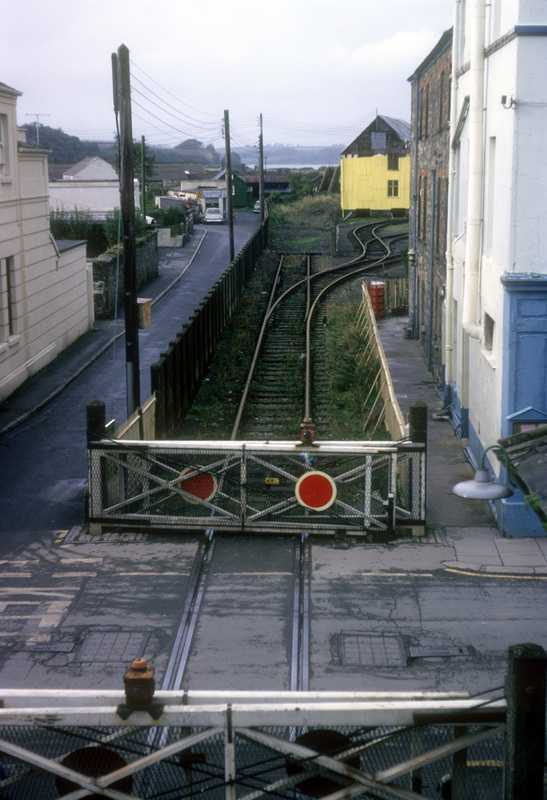
A sad view taken in September 1968. The line straight ahead to Padstow has already been chopped off, the metals to the right serving the quays where there were six sidings. Three of these were removed in 1971 the remainder being taken out of use w.e.f. 2nd April 1973. Note the unusual compact arrangement of the level crossing gates which closed one upon another. This picture copyright of Doug Nicholls.
In 1964 all the ex-Southern lines west of Salisbury (Wilton, to be exact) came to the Western Region. Almost all were regarded as uneconomic and so heavy economies were introduced. To look at it pessimistically, it was just a prelude to closure. The great network of signal boxes with crossing loops on the North Cornwall and elsewhere were pruned: Otterham was the first to go and was followed by Dunsland Cross, Tower Hill and the rest. Padstow box closed and the points leading to the run-around loop put on to a new ground frame. The points at the buffers end had always been hand operated. The wooden staff applied to all operations between Wadebridge and Padstow.
The points at Wadebridge West were operated by the box there (at the level crossing).
Wadebridge boxes, along with Boscarne and Bodmin General, went in December 1967, but the Padstow section had been lifted by then. The staff in the picture was used only for the short period from 1965-7 and unlocked the GF at Padstow loop. I was on the last train from Padstow - GW Hawksworth coaches hauled by a class 22 (D63XX) which, of course, ran round its train at Padstow. Many thanks to Roy Hart for the above very full answer. N.B The station at Padstow closed to goods w.e.f. 7th September 1964 and to passengers w.e.f. 30th January 1967. The last train out of Padstow would have run on the 29th January 1967,
The points at Wadebridge West were operated by the box there (at the level crossing).
Wadebridge boxes, along with Boscarne and Bodmin General, went in December 1967, but the Padstow section had been lifted by then. The staff in the picture was used only for the short period from 1965-7 and unlocked the GF at Padstow loop. I was on the last train from Padstow - GW Hawksworth coaches hauled by a class 22 (D63XX) which, of course, ran round its train at Padstow. Many thanks to Roy Hart for the above very full answer. N.B The station at Padstow closed to goods w.e.f. 7th September 1964 and to passengers w.e.f. 30th January 1967. The last train out of Padstow would have run on the 29th January 1967,
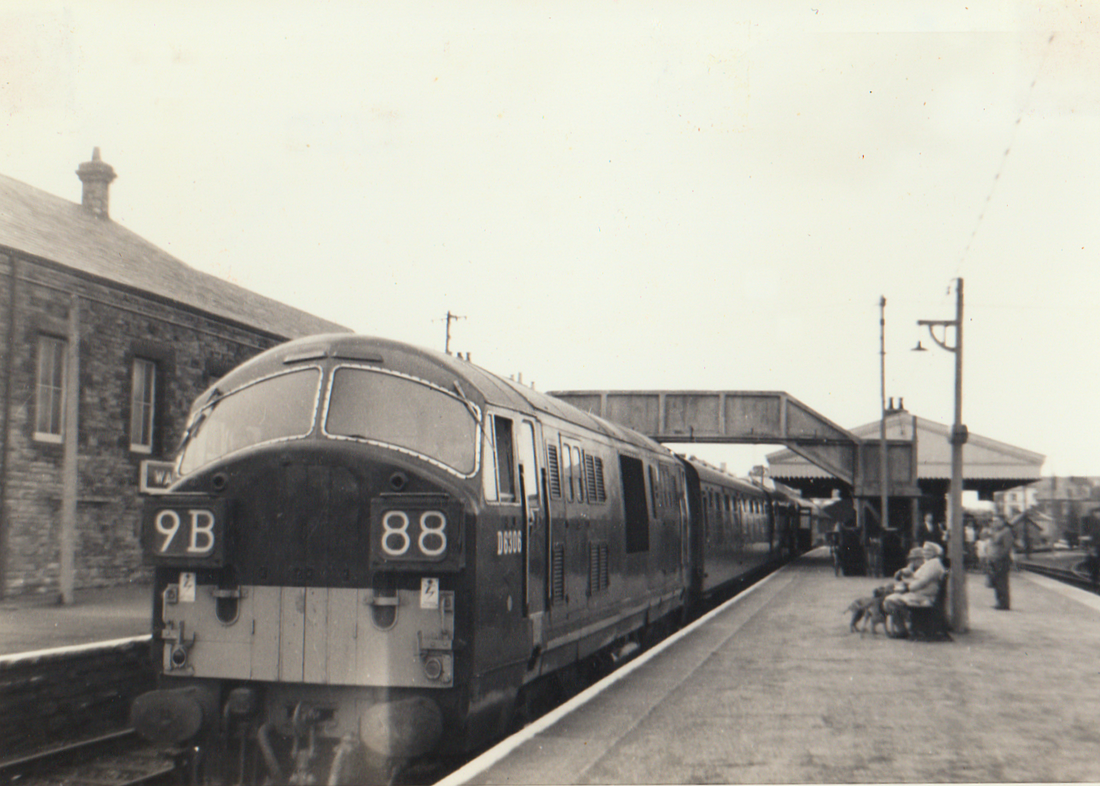
This was taken early in August 1965. It wasn't a timetabled train, and I believe the stock was generally used on school trains at the time. As it was in the school holiday (and I can't remember who got out of it), I was and remain puzzled. It came in from the Padstow direction but I can't remember what happened to it after arriving at Wadebridge. I do remember it being fairly late afternoon
If anyone else can cast any light on it, I'd be glad to hear.
Regards John. Copyright
A reply quickly came from Karl Hewlett for which many thanks. - Can partially help my colleague at Penmere John Balls request with his photo taken at Wadebridge in August 1965. The loco is one of the North British class 22 hydraulics (known as baby warships or baby sad eyes amongst other names both are pretty explanatory), a blow up of the image has identified it as D6306.
One of the most common ways to try and identify the working is by looking at the headcode, which in John's image is 9B88. This is where it gets interesting, the Western Region (WR), four digit character headcode introduced in summer 1960 and updated again on the 18th June 1962, works from left to right so to start off 9: class of train 1 being an express, 2 being ordinary passenger, 6's onwards generally freight e.t.c. B: in which area this train/loco is going to/from. 88: is the actual reporting number of the service. According to the headcode the train is a class 9 working, a mineral and empty wagon freight train including untimetabled local trip workings and pilot engine workings, B which is Bristol district (later for West of England but not until the 70's). The service 88 is trying its hardest to allude me, however from my searches there would seem to be a lot of WTT class 9 freight, mineral and trip workings with headcodes very close to 9B88 trundling around the Bristol and Wiltshire area in the 60's, which tallies in with D6306's headcode.
So unless someone else knows more, that's as far as I managed to gleam. I wouldn't go too much on the reporting number as I believe this to be wrong, not a totally uncommon to see incorrect headcode. It could be anything from the headcode blind/s slipping a common occurrence (although it does look neat and tidy in John's image), to a lazy driver simply not altering it from a previous working! It is certainly not right for a passenger service. One thing I did notice, the third coach, one of the doors is open so presumably taking on passengers, could it be an additional untimetabled working to/from Bodmin being summer, or an excursion? The plot thickens!
Regards
Karl (Friends of Penmere).
One of the most common ways to try and identify the working is by looking at the headcode, which in John's image is 9B88. This is where it gets interesting, the Western Region (WR), four digit character headcode introduced in summer 1960 and updated again on the 18th June 1962, works from left to right so to start off 9: class of train 1 being an express, 2 being ordinary passenger, 6's onwards generally freight e.t.c. B: in which area this train/loco is going to/from. 88: is the actual reporting number of the service. According to the headcode the train is a class 9 working, a mineral and empty wagon freight train including untimetabled local trip workings and pilot engine workings, B which is Bristol district (later for West of England but not until the 70's). The service 88 is trying its hardest to allude me, however from my searches there would seem to be a lot of WTT class 9 freight, mineral and trip workings with headcodes very close to 9B88 trundling around the Bristol and Wiltshire area in the 60's, which tallies in with D6306's headcode.
So unless someone else knows more, that's as far as I managed to gleam. I wouldn't go too much on the reporting number as I believe this to be wrong, not a totally uncommon to see incorrect headcode. It could be anything from the headcode blind/s slipping a common occurrence (although it does look neat and tidy in John's image), to a lazy driver simply not altering it from a previous working! It is certainly not right for a passenger service. One thing I did notice, the third coach, one of the doors is open so presumably taking on passengers, could it be an additional untimetabled working to/from Bodmin being summer, or an excursion? The plot thickens!
Regards
Karl (Friends of Penmere).
Notes from Andrew Vines :- Although as John rightly says, the unadvertised loco-hauled school train was unlikely to have run in the summer holidays, there was a regular summer Saturday diagram for a loco and coaches between Bodmin, Wadebridge and Padstow, which presumably used the stock off the school train, normally stabled at Padstow. It shuttled to and fro all day long, mixing with the DMU service. John says the picture was taken in the late afternoon, so this may be the 17.02 Padstow to Bodmin Rd., due off Wadebridge 10 minutes later. The headcode 9B88 is not of course correct and was used by several afternoon trip freight diagrams between Gwinear Rd., Carn Brea, Drump Lane and Truro. 'B88' was the generic description for light engine and local freight movements to Truro at the time.
Andrew Vines
Andrew Vines
The early bird catches the worm' The centre of the spread below by Roger Geach taken at 05.30, no wonder the train crew are peering around the front!!! Roger wites - My now dead friend and i got up very early to do this train , a one off special effort , it left Bz about 0405 or the like . At Wadebridge it arrived at about 0530 and by 0555 had gone. I don't think it ran much after autumn 1977 even if the line did not shut until 78. It shunted quite a large number of vanfits for farm produce that morning as well as slate dust. I bet few people at Wadebridge ever saw the train unless they were out of bed very early. Of course one could only photo this train for about 8 weeks of the year in daylight.
Views taken on the 16th August 1977 by Howard Sprenger - copyright.
Click on an image to obtain an enlargement.
Click on an image to obtain an enlargement.
Many thanks Howard.
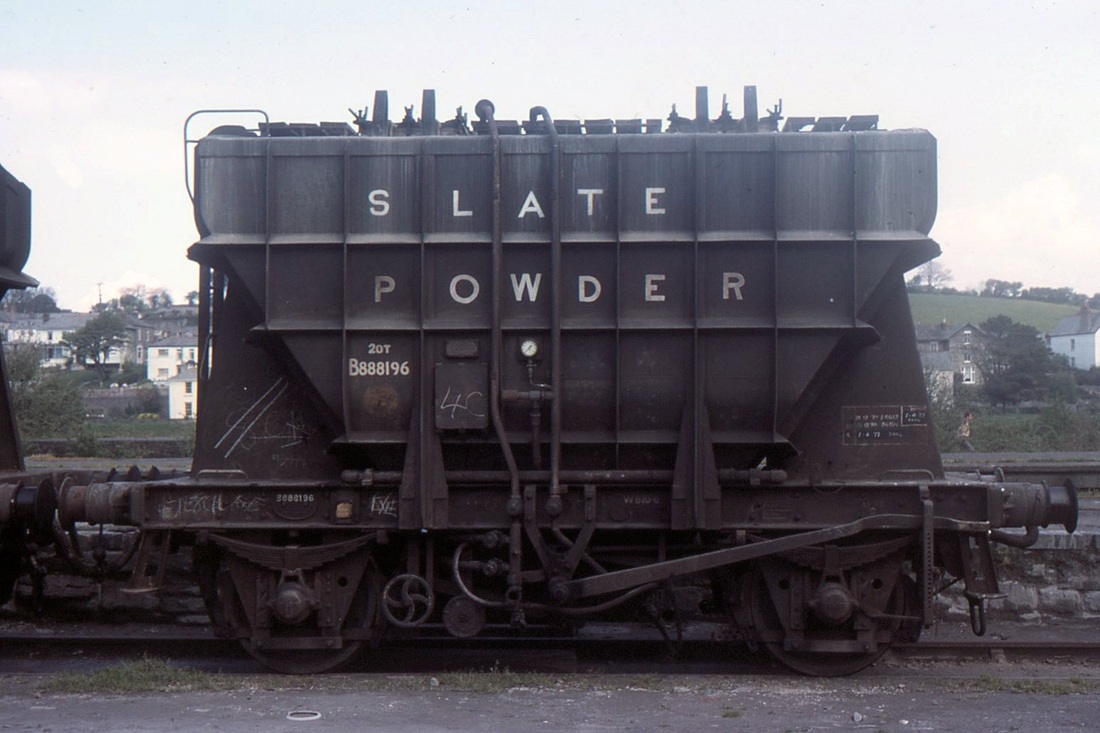
Wadebridge Slate 'Presflo' wagon B888196 Built 1957 April 1977 Mike Roach Copyright.
At this date this was one of approximately 15 Presflo wagons allocated to Wadebridge for the transport of slate dust from Wadebridge to South Eastern Tar Distillers at Tonbridge, these were loaded at the goods shed following the closure of the North Cornwall line, the dust having been brought from Delebole by lorry.
Note - end of the line. The last railwayman to be employed at Wadebridge (until closure to freight) was Bill Richards who was Shunter/Checker and he also worked at Newquay station on Summer Saturdays including trying to keep the traffic flowing on the busy station approach road!
Just to the north of Wadebridge level crossing
Michael Manning queried the use of a double track span footbridge over a single track, probably provided in case there was ever a requirement to double to line to Padstow - sadly this never came.
In addition Dave Anthony also sent this recommendation of a video:-
Hi guys..
I think this bridge is actually a short distance from the level crossing at Wadebridge, on the Padstow side, marked as FB on the attached NLS map.
Also at seen at about 4.45 on this video on a unit travelling from Padstow in towards Wadebridge.
http://cornishmemory.com/item/MISC_260_03
Cheers Dave Anthony
And as a P.S. Dave included this :-
Eddystone Rd
https://maps.app.goo.gl/pChwpBgKwa8ozP5b9
In the original photo I believe you can just make out the spire of Wadebridge town hall under the bridge, between the loco and the building. On this modern day Google map, the footbridge would be where the crossroad is directly in front.
Cheers again, Dave.
Try pasting the Cornish Memory link into your Google Search Box - and enjoy a fascinating ride from Padstow to Bodmin Road. The pictures vary in brightness quite a bit - perhaps this is best played via your TV where you can vary the brilliance as needed. Many thanks to you Dave for your contributions.
Hi guys..
I think this bridge is actually a short distance from the level crossing at Wadebridge, on the Padstow side, marked as FB on the attached NLS map.
Also at seen at about 4.45 on this video on a unit travelling from Padstow in towards Wadebridge.
http://cornishmemory.com/item/MISC_260_03
Cheers Dave Anthony
And as a P.S. Dave included this :-
Eddystone Rd
https://maps.app.goo.gl/pChwpBgKwa8ozP5b9
In the original photo I believe you can just make out the spire of Wadebridge town hall under the bridge, between the loco and the building. On this modern day Google map, the footbridge would be where the crossroad is directly in front.
Cheers again, Dave.
Try pasting the Cornish Memory link into your Google Search Box - and enjoy a fascinating ride from Padstow to Bodmin Road. The pictures vary in brightness quite a bit - perhaps this is best played via your TV where you can vary the brilliance as needed. Many thanks to you Dave for your contributions.
Further queries from Mike Manning on the demolition of
Wadebridge station
Wadebridge station
Appeal for archive information
Wadebridge 1966 onwards. Member Mike Manning.
While working on my book of the run down and closure of the railways of Cornwall and Devon I have become stuck on the details of its track lifting. I have details of the lifting of the Padstow to the Quay junction at Wadebridge by May of 1968. The quay sidings were still in use until April 1973.
After that the tracks were lifted up to inside the level crossing gates. When?
The Signal box and the pedestrian footbridge were demolished as no longer
needed. When? All tracks within the Wadebridge station area were lifted by a different
Contractor to the one that lifted the Padstow section. When?
Was this photo below in my collection part of this clearance?
Wadebridge 1966 onwards. Member Mike Manning.
While working on my book of the run down and closure of the railways of Cornwall and Devon I have become stuck on the details of its track lifting. I have details of the lifting of the Padstow to the Quay junction at Wadebridge by May of 1968. The quay sidings were still in use until April 1973.
After that the tracks were lifted up to inside the level crossing gates. When?
The Signal box and the pedestrian footbridge were demolished as no longer
needed. When? All tracks within the Wadebridge station area were lifted by a different
Contractor to the one that lifted the Padstow section. When?
Was this photo below in my collection part of this clearance?
No contractor used a crane mounted on rails on the Padstow section or on the
Ex-B&WR section.
Also when was the NCR lifting to Wadebridge completed ?
I have a picture of Delabole minus its tracks in April 1968, but no completion
date at Wadebridge.
Any snippets of information will be gratefully received to complete this Cornwall
Section of my book.
What is needed is a note saying MICHAEL IS SPELT MICHEALMANNING
Thank you to Keith and Roger. Replies to [email protected]
Ex-B&WR section.
Also when was the NCR lifting to Wadebridge completed ?
I have a picture of Delabole minus its tracks in April 1968, but no completion
date at Wadebridge.
Any snippets of information will be gratefully received to complete this Cornwall
Section of my book.
What is needed is a note saying MICHAEL IS SPELT MICHEALMANNING
Thank you to Keith and Roger. Replies to [email protected]
Pinkson Creek
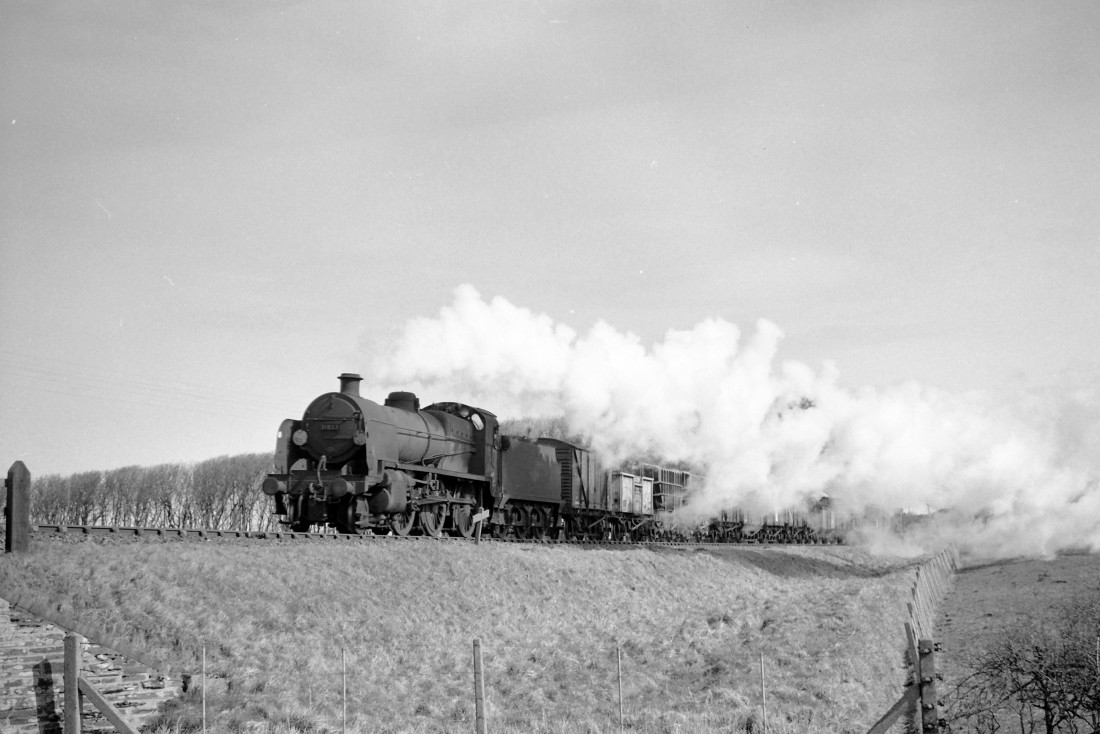
Maunsell'N' class mogul No. 31853 on freight duty is about to cross the little bridge spanning the entry to Pinkson Creek between Wadebridge and Padstow. 31853 was an Exmouth Junction engine form March 1959 until withdrawal in September 1964. Caption and photograph courtesy of the Mike Morant Collection
Little Petherick Creek Bridge
Padstow
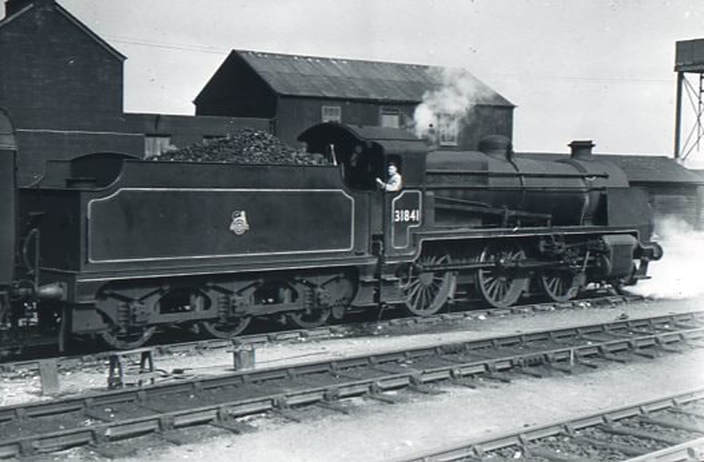
Maunsell N class mogul no 31841 stands in the sidings at Padstow at the head of a train. She was shedded at Exmouth Junction at the time. These engines were known to crews as 'Woolworths' - probably a corruption of Woolwich, because 50 of them were built as kits of parts at the Royal Arsenal at Woolwich in order to maintain employment after the end of the first world war. The newly-constituted Southern Railway bought the kits and put the engines in service as class 'N'. 31841 remained in the west. She was withdrawn in March 1964. Copyright Roy Hart
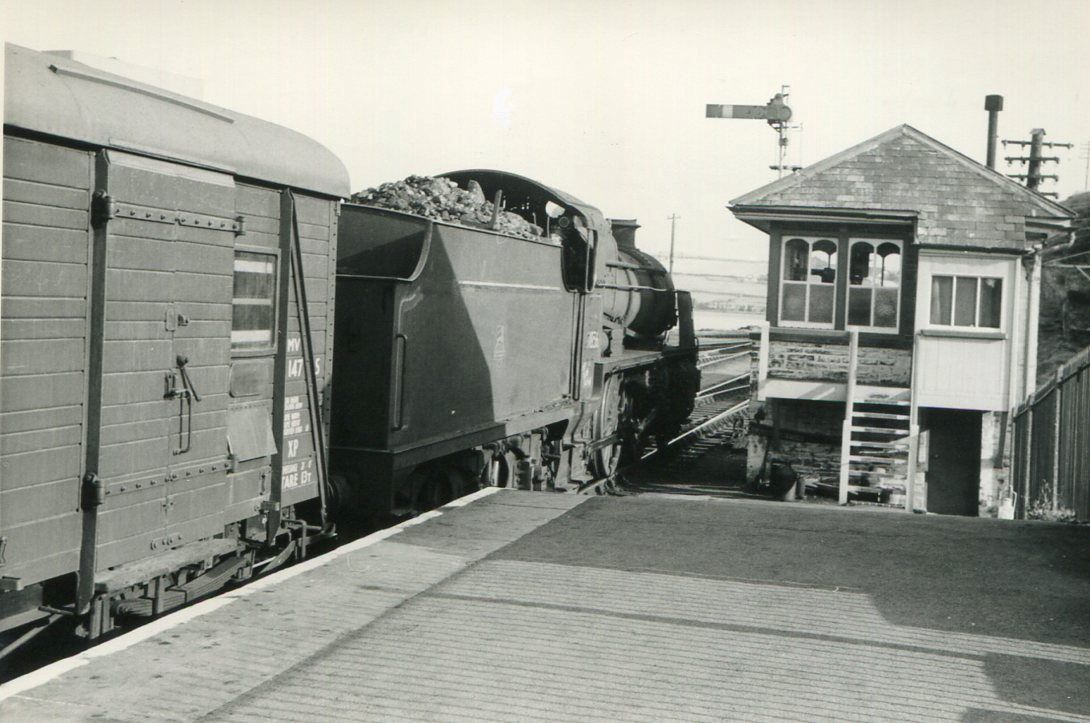
Padstow 31856 is held by the signal as it stands beside the charming signalbox, the signalman gets a good view of the platform and the yard through his gothic windows. Beyond, in the distance can be seen the waters of the river Camel. The train will briefly disappear from sight before reappearing on the distant banks having crossed Little Petherick Creek bridge. 9th Sep 63 Copyright Mike Roach
Hi Keith,
I do quite a lot of work for Nick Catford's Disused Stations website. We are currently working on updating the Padstow pages and I have been doing research in connection with this.
The photograph above appears on your website, with a question regarding the train at the platform and I may be able to help.
The train on the left is entering, not at, the platform and this is the reason for the blur in the foreground. It is a single-unit DMU, as it that stabled on the loop. Behind the railcar on the loop are some more vehicles; I cannot identify them but may be the stock for used for the school train.
I suspect the photograph was taken on a Saturday when, during the summer, a service from Wadebridge arrived at Padstow during the afternoon (one timetable shows it arriving 2.14pm) with another from Bodmin North arriving twenty minutes later. Regulations would have required the 2.14pm arrival to clear the platform, thus this will be the railcar stabled on the loop. Return workings are a little unclear; there was a 2.52pm departure for Bodmin North followed by a 3.13pm departure for Wadebridge which appears to have continued, for some odd reason, as a separate service to Bodmin Road although this may have been a separate train. What is unclear is that both departures from Padstow ran every weekday so apart from on Saturdays there must have been some empty stock working or two railcars coupled together in the Down direction Monday - Friday.
I must stress that the above is just my conclusion and is not confirmed evidence. Nonetheless I might help to answer the question with the photograph on your website.
Thanks and regards,
Darren Kitson. Thank you for your thoughts Darren
I do quite a lot of work for Nick Catford's Disused Stations website. We are currently working on updating the Padstow pages and I have been doing research in connection with this.
The photograph above appears on your website, with a question regarding the train at the platform and I may be able to help.
The train on the left is entering, not at, the platform and this is the reason for the blur in the foreground. It is a single-unit DMU, as it that stabled on the loop. Behind the railcar on the loop are some more vehicles; I cannot identify them but may be the stock for used for the school train.
I suspect the photograph was taken on a Saturday when, during the summer, a service from Wadebridge arrived at Padstow during the afternoon (one timetable shows it arriving 2.14pm) with another from Bodmin North arriving twenty minutes later. Regulations would have required the 2.14pm arrival to clear the platform, thus this will be the railcar stabled on the loop. Return workings are a little unclear; there was a 2.52pm departure for Bodmin North followed by a 3.13pm departure for Wadebridge which appears to have continued, for some odd reason, as a separate service to Bodmin Road although this may have been a separate train. What is unclear is that both departures from Padstow ran every weekday so apart from on Saturdays there must have been some empty stock working or two railcars coupled together in the Down direction Monday - Friday.
I must stress that the above is just my conclusion and is not confirmed evidence. Nonetheless I might help to answer the question with the photograph on your website.
Thanks and regards,
Darren Kitson. Thank you for your thoughts Darren
Further information regarding the picture by Julian Stephens above - Julian reports that it was taken shortly after midday on Thursday the 29th April 1965.
The updated Disused Stations Padstow section is now live: http://www.disused-stations.org.uk/p/padstow/index.shtml. Martin James was the author of the original page. I researched and wrote the majority of the image captions and Nick Catford put it all together.
Regards, Darren Kitson. The above is a highly recommended website on Padstow, superbly compiled and very detailed.
Regards, Darren Kitson. The above is a highly recommended website on Padstow, superbly compiled and very detailed.
Padstow - the fish quays
What's it like now?
Andrew Triggs takes a walk down the line from Wadebridge to Padstow in September 2017
Andrew Triggs takes a walk down the line from Wadebridge to Padstow in September 2017
DEMOLITION IN THE WADEBRIDGE AREA
Notes kindly supplied by Andrew Jones in response to a request from Michael Manning.
Notes kindly supplied by Andrew Jones in response to a request from Michael Manning.
Dear Mr Manning,
Keith has kindly passed on your enquiry concerning the recovery of redundant materials post closure of much of the southern railway in North Cornwall.
Unfortunately I was really too young when much of the ‘withered arm’ was dismantled and not being a ‘rivet counter,’ much to my regret, did not take many notes.
However when the Bodmin to Wadebridge section finally closed a decade after passenger services ceased I was in a position to participate in a positive way and managed to at least convince the local authority to preserve the track bed from Wadebridge to Boscarne.
I do have extensive records of this section including the exact dates of track sections and geographical positions of all infrastructure.
To answer your specific questions it is important to understand the political situation at the time of initial closure in the late 60’s and subsequent closure of all services in 1978.
The Wadebridge to Padstow section was a profitable line summer and winter, but due to government policy post Beeching it was trying to off load a general responsibility to the public purse.
The railway was a big employer in Wadebridge and when closure was announced a number of employees took redundancy, some transferred to other regions and some were employed for a limited period recovering redundant materials and this is why the Padstow section was lifted in what some called indecent haste.
Obviously in the late 60’s there was a massive amount of scrap metal stockpiled and thoughts of re use elsewhere on the network couldn’t be further from the minds of BR management.
Anyone who bought a mk1 Ford Escort at the time will testify that the high levels of scrap metal used by the steel manufacturers in the production of this vehicle caused premature catastrophic corrosion with panels and chassis rusting through in less that 5 years!
I was lucky to have spoken to Arthur Ferret in the mid 80’s who was a driver at Wadebridge for many years and he did explain that some of the track from the Padstow section was recovered by BR for future use and much of the track was removed using rail vehicles.
From 1968 until the early 80’s, first the wharf sidings were removed back to the town centre level crossing, which always caused a bottleneck on the busy main road.
On final closure there were some hopes of retaining the railway and I know Rusty Eplett was keen to retain a railway presence in Wadebridge but unfortunately BR was under pressure to maximise its assets so eventually track lifting commenced in 1980.
Irons Brothers of Wadebridge scrapped the station area and although pointwork is the most expensive part of rail infrastructure it is also the most difficult to remove. Most of the station rail layout was cut up into short metre lengths for use at the local foundry. Photographs of the Helston track lifting especially around the station met a similar fate.
However from Wadebridge to Boscarne most of the rails were returned to Par by road.
A small team of operators worked from Wadebridge using a trolley and gas bottles cutting all the fishplates and extracting the keys. The rails were placed either side of the trackbed and the sleepers were recovered with a mobile crane and lorry. Eventually the rails were collected and returned to BR.
By the 1980’s chaired rail was becoming difficult to obtain so the value had increased and for a short while much was re used elsewhere on the secondary network.
I hope this answers some of your questions
best wishes Andrew
Keith has kindly passed on your enquiry concerning the recovery of redundant materials post closure of much of the southern railway in North Cornwall.
Unfortunately I was really too young when much of the ‘withered arm’ was dismantled and not being a ‘rivet counter,’ much to my regret, did not take many notes.
However when the Bodmin to Wadebridge section finally closed a decade after passenger services ceased I was in a position to participate in a positive way and managed to at least convince the local authority to preserve the track bed from Wadebridge to Boscarne.
I do have extensive records of this section including the exact dates of track sections and geographical positions of all infrastructure.
To answer your specific questions it is important to understand the political situation at the time of initial closure in the late 60’s and subsequent closure of all services in 1978.
The Wadebridge to Padstow section was a profitable line summer and winter, but due to government policy post Beeching it was trying to off load a general responsibility to the public purse.
The railway was a big employer in Wadebridge and when closure was announced a number of employees took redundancy, some transferred to other regions and some were employed for a limited period recovering redundant materials and this is why the Padstow section was lifted in what some called indecent haste.
Obviously in the late 60’s there was a massive amount of scrap metal stockpiled and thoughts of re use elsewhere on the network couldn’t be further from the minds of BR management.
Anyone who bought a mk1 Ford Escort at the time will testify that the high levels of scrap metal used by the steel manufacturers in the production of this vehicle caused premature catastrophic corrosion with panels and chassis rusting through in less that 5 years!
I was lucky to have spoken to Arthur Ferret in the mid 80’s who was a driver at Wadebridge for many years and he did explain that some of the track from the Padstow section was recovered by BR for future use and much of the track was removed using rail vehicles.
From 1968 until the early 80’s, first the wharf sidings were removed back to the town centre level crossing, which always caused a bottleneck on the busy main road.
On final closure there were some hopes of retaining the railway and I know Rusty Eplett was keen to retain a railway presence in Wadebridge but unfortunately BR was under pressure to maximise its assets so eventually track lifting commenced in 1980.
Irons Brothers of Wadebridge scrapped the station area and although pointwork is the most expensive part of rail infrastructure it is also the most difficult to remove. Most of the station rail layout was cut up into short metre lengths for use at the local foundry. Photographs of the Helston track lifting especially around the station met a similar fate.
However from Wadebridge to Boscarne most of the rails were returned to Par by road.
A small team of operators worked from Wadebridge using a trolley and gas bottles cutting all the fishplates and extracting the keys. The rails were placed either side of the trackbed and the sleepers were recovered with a mobile crane and lorry. Eventually the rails were collected and returned to BR.
By the 1980’s chaired rail was becoming difficult to obtain so the value had increased and for a short while much was re used elsewhere on the secondary network.
I hope this answers some of your questions
best wishes Andrew
Many thanks Andrew.
In York Museum - 2022
Our friends up the Valley were very excited on a visit to York last week to come across the National Railway Museum.
I suspect many members of the CRS have come across this marvellous exhibition of all things great about Britain and its remarkable industrial past.
So it came as a surprise to my non railway enthusiast friends that the exhibit of carriages built for the Wadebridge railway in 1834 are still in existence and are the oldest preserved passenger coaches in the world! Please see photographs sent to me and copyright of Gail Wilson.
Apparently they were found in a shed during the early 1900's and were thankfully preserved.
Obviously sprung buffers were a later development and 1st class passengers benefit from all weather protection and some rudimentary suspension.
In 1952 Charles Clinker uncovered a huge precious collection of written logs and documents from the earliest days of the railway hidden in a derelict loft nearby and are available through the museum to view.
The National Railway Museum is free of charge and if you haven't been make it a priority if you are up north.
Best wishes Andrew and Diane
I suspect many members of the CRS have come across this marvellous exhibition of all things great about Britain and its remarkable industrial past.
So it came as a surprise to my non railway enthusiast friends that the exhibit of carriages built for the Wadebridge railway in 1834 are still in existence and are the oldest preserved passenger coaches in the world! Please see photographs sent to me and copyright of Gail Wilson.
Apparently they were found in a shed during the early 1900's and were thankfully preserved.
Obviously sprung buffers were a later development and 1st class passengers benefit from all weather protection and some rudimentary suspension.
In 1952 Charles Clinker uncovered a huge precious collection of written logs and documents from the earliest days of the railway hidden in a derelict loft nearby and are available through the museum to view.
The National Railway Museum is free of charge and if you haven't been make it a priority if you are up north.
Best wishes Andrew and Diane
